Getting into China provided its own tale of fun. After leaving the hostel in Tokyo and taking the scenic monorail to Haneda airport, I was a bit miffed to discover the seven hour delay on the flight. Even more miffed about the complications arising from missing the Beijing connection from Guangzhou. After some talks with China Southern Airlines, they managed to get me on a different flight a little earlier than the one that went to Guangzhou but I’d have to sort out a connection to Beijing when I got there. It looked as though they were quite regular so I was hoping to get one plane later that night, if not the next day. I was told that I had to take my hold bag onto the plane with me so I could easily get it and go straight through to a domestic transfer desk to sort out my connection. This meant that I had to give up most of my toiletries when I went through security as most of them were over 100ml. It was a bit annoying as I had bought mostly new stuff for travelling and had only been away three weeks. But it wasn’t the end of the world. It could’ve been much worse. I eventually made it to Beijing at 3am the following morning after managing to get on a late flight which was also delayed by a couple of hours. Got to Beijing seven hours later than expected. What a faff!
After a few hours sleep at a hostel, I had to transfer to a hotel. This meant working out another metro system which actually was fairly straightforward. You have to put your bags through a security check and there is an army presence who are always standing to attention without looking at anything. The single use tickets look like Oyster cards. 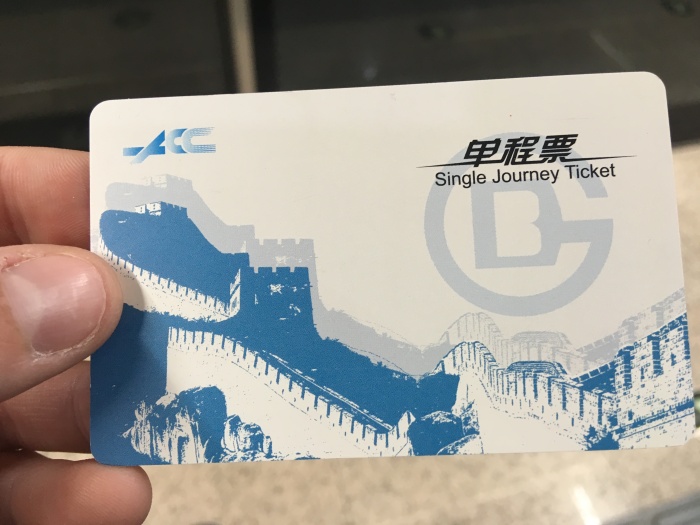 Until now, I have always relied on Google to get me around but Google is something that is banned in China. Having to use another search engine or the Apple Maps app took a bit of time to adjust to. Facebook/Instagram/Twitter are all banned too. This was an odd feeling, as I know that many of us are often tied to social media in some way or another. In a way, I think it’s quite liberating not to be able to use social media. I couldn’t be bothered trying to deal with a VPN or a proxy server – I’m only in China for three weeks. Managed to acquire some more toiletries and get some money sorted. I didn’t realise how exhausted I would be. Beijing is quite hot and there is a bit of a haze in the air. It’s quite a busy city traffic wise and lots of people on scooters/bikes who think they own the road. I haven’t seen many helmets worn though. There is a cycle system here where you can pick up a bike from anywhere random by unlocking something on the back wheel. There aren’t any cycle stations like there are in London.
Until now, I have always relied on Google to get me around but Google is something that is banned in China. Having to use another search engine or the Apple Maps app took a bit of time to adjust to. Facebook/Instagram/Twitter are all banned too. This was an odd feeling, as I know that many of us are often tied to social media in some way or another. In a way, I think it’s quite liberating not to be able to use social media. I couldn’t be bothered trying to deal with a VPN or a proxy server – I’m only in China for three weeks. Managed to acquire some more toiletries and get some money sorted. I didn’t realise how exhausted I would be. Beijing is quite hot and there is a bit of a haze in the air. It’s quite a busy city traffic wise and lots of people on scooters/bikes who think they own the road. I haven’t seen many helmets worn though. There is a cycle system here where you can pick up a bike from anywhere random by unlocking something on the back wheel. There aren’t any cycle stations like there are in London.
After some nice food, it was time for some much needed sleep. An early start the next day was required to get to a well preserved section of the Great Wall of China in Mutianyu. This section is 14th century and in pretty good nick. The whole wall took many centuries to build. Sections of the wall are separated by towers which are numbered. There are a couple of ways to get up to the wall – you could walk up about half an hour or get a cable car to a high tower. There was also an option to get a ski lift up to a tower slightly lower down and walk up to (and beyond) where the cable car is. This also allowed people to take a toboggan down (which I obviously did!). The wall could be seen all around – you could see the towers at certain points on mountain tops quite far away – definitely an efficient way to keep the enemy out! Walking up and down the many steps was quite a challenge, especially with the increasing heat and the growing amount of people. Some of the steps reminded me of the Inca Trail steps – nice and steep haha. When I had walked back to the tower that I had arrived at to go down, it dawned on me how far I had walked. The distance of fourteen towers to the top and the same on the way back was about five miles. It was a good three hour walk up and down. The views were amazing and sliding down was fun! It was definitely something to do earlier in the day – the heat and the people would be too much later on.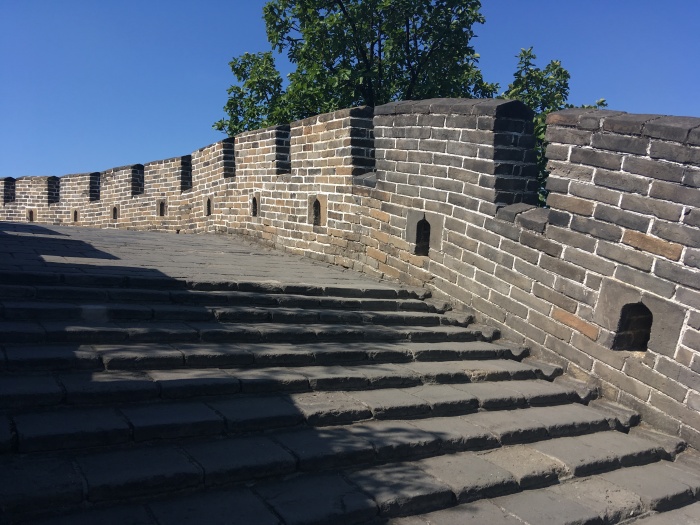
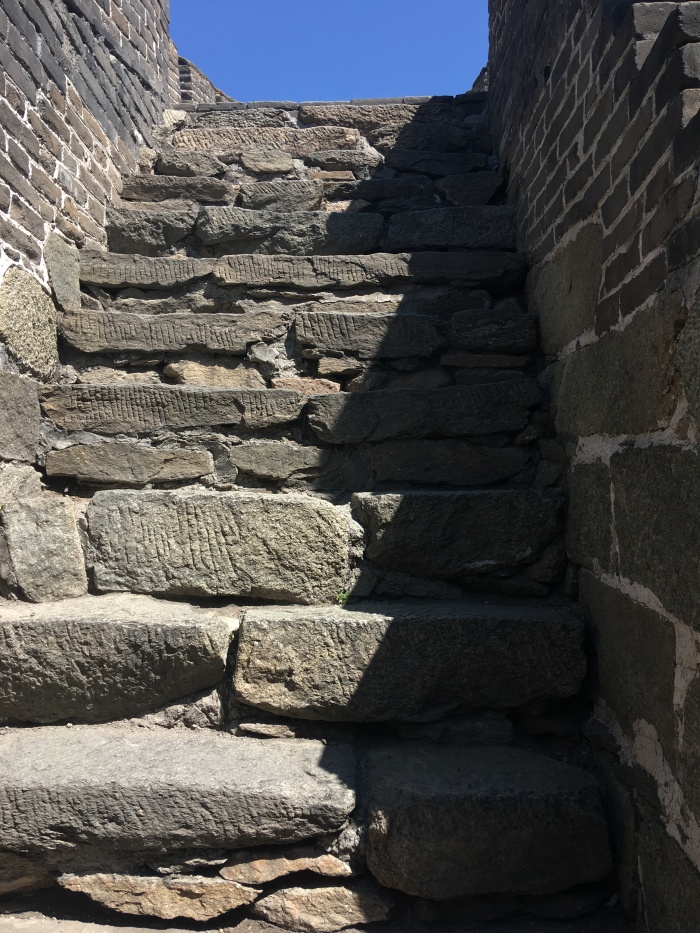
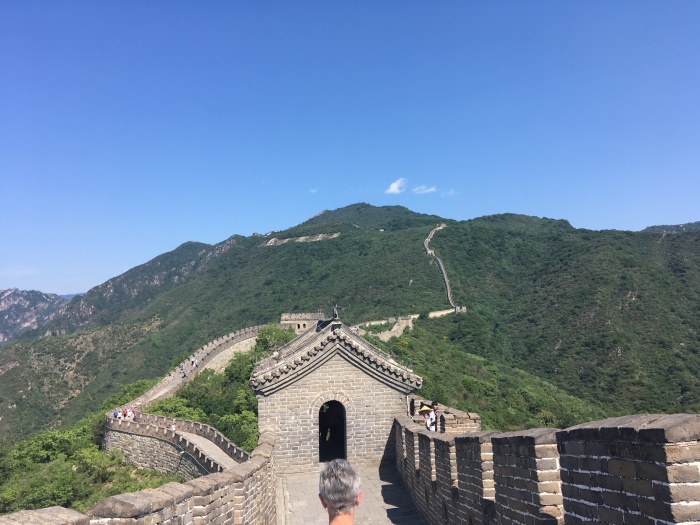
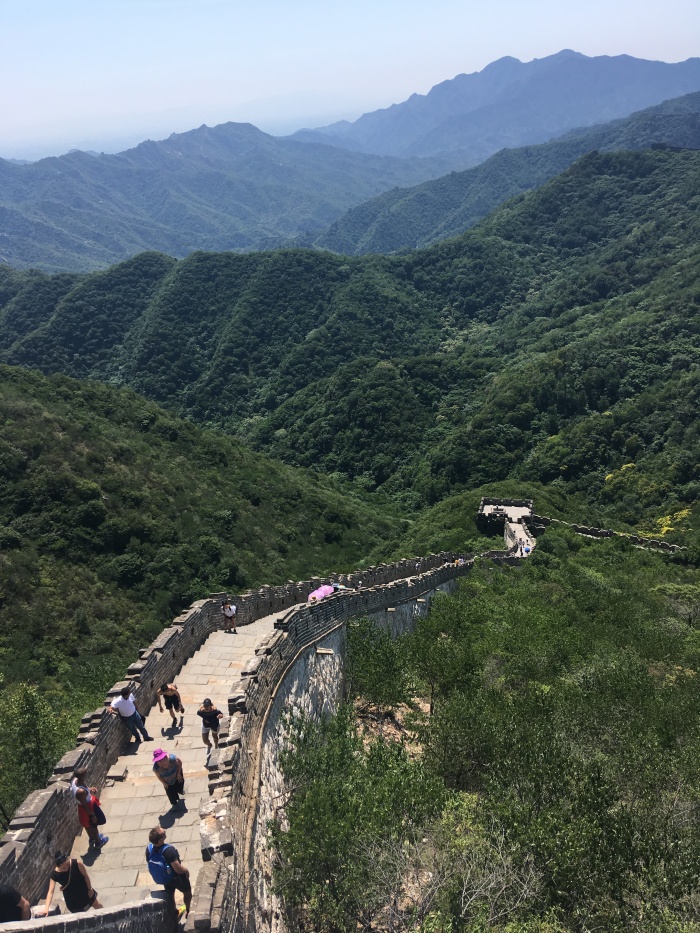









 Tienanmen Square and the Forbidden City were next. The square is absolutely huge, and while I was a little ignorant of the complete history of it, the magnitude and atmosphere were evident. Mao’s presence is forever present, both by a portrait of him hanging on the gate into the Forbidden City, as well as his remains embalmed in a mausoleum opposite. I was talking to someone who mentioned that there are some things that are not spoken about in China. The ‘Tin Man’ episode in the square is one of the taboo subjects. I found it very odd to see the extent of how much is controlled – some young Chinese people don’t seem to fully understand.
Tienanmen Square and the Forbidden City were next. The square is absolutely huge, and while I was a little ignorant of the complete history of it, the magnitude and atmosphere were evident. Mao’s presence is forever present, both by a portrait of him hanging on the gate into the Forbidden City, as well as his remains embalmed in a mausoleum opposite. I was talking to someone who mentioned that there are some things that are not spoken about in China. The ‘Tin Man’ episode in the square is one of the taboo subjects. I found it very odd to see the extent of how much is controlled – some young Chinese people don’t seem to fully understand. 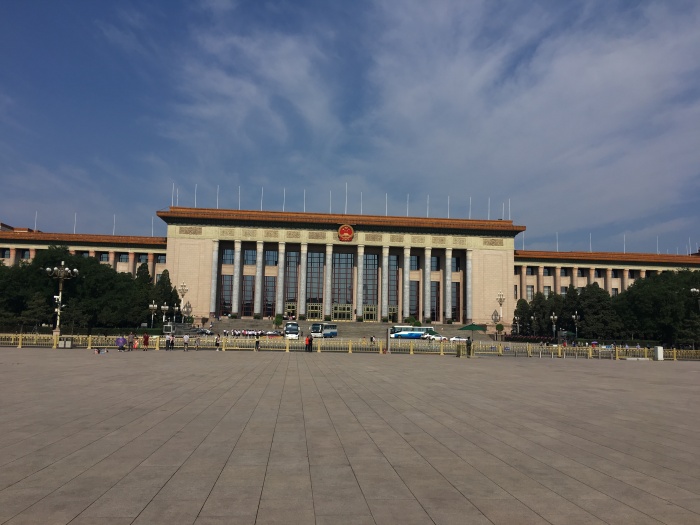

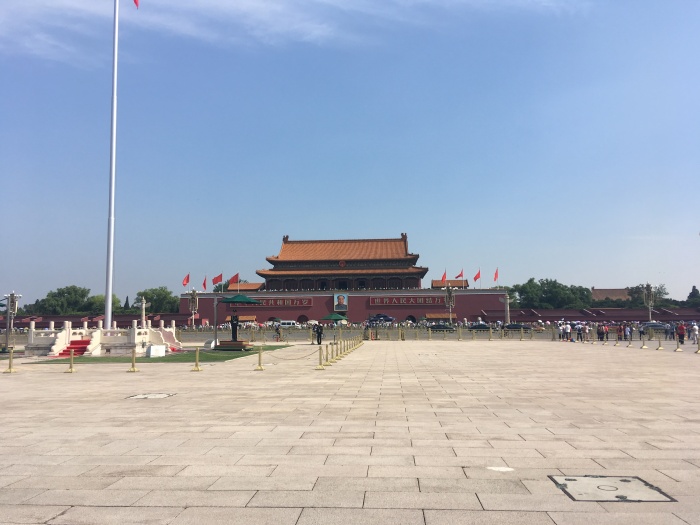
 The sense of tradition is also strong – women are still expected to marry a husband young to provide a family, and the man is the breadwinner. For a woman to be without a husband at the age of 30 can provide pressure within the family unit to produce heirs, but the one child policy seems to be a bit more relaxed – or couples keep on having children until they have a son. Someone I spoke to was the second child (and a girl), and her parents had to pay to register her when she was born, but they had chosen to have a second child. While boys are still preferable, girls are also still required for evolution, so I think that there can be a fluctuation between the desire for a male child and the desire for a female depending on the gender ratio. I was questioned why I didn’t have a husband or a family, and why I would want to travel by myself at my age instead. I wasn’t sure how to respond at first, but came up with something.
The sense of tradition is also strong – women are still expected to marry a husband young to provide a family, and the man is the breadwinner. For a woman to be without a husband at the age of 30 can provide pressure within the family unit to produce heirs, but the one child policy seems to be a bit more relaxed – or couples keep on having children until they have a son. Someone I spoke to was the second child (and a girl), and her parents had to pay to register her when she was born, but they had chosen to have a second child. While boys are still preferable, girls are also still required for evolution, so I think that there can be a fluctuation between the desire for a male child and the desire for a female depending on the gender ratio. I was questioned why I didn’t have a husband or a family, and why I would want to travel by myself at my age instead. I wasn’t sure how to respond at first, but came up with something.
The Forbidden City was the old palace of the Chinese dynasties – mainly Ming and Qing who ruled over China for the best part of 600 years. The term ‘Forbidden’ comes from no one being allowed to enter the palace apart from the emperor, unless you had an invitation. This is why there are no green spaces within the grounds until you come to the Imperial Gardens at one end – so that intruders could be easily spotted. Courtyard after courtyard rolls along – passing through gate after gate after gate to give a distinction between certain areas (work and living). You could easily spend a whole day wandering around getting lost in this place. It had become more crowded and hot later on – lots of Chinese tourists wanting a glimpse inside the various buildings that had were such an important part of their history. There was a lot of pushing and barging to grab the photo opportunity. Some parts of the palace were older than the others and you could spot the difference with the fading of the colour.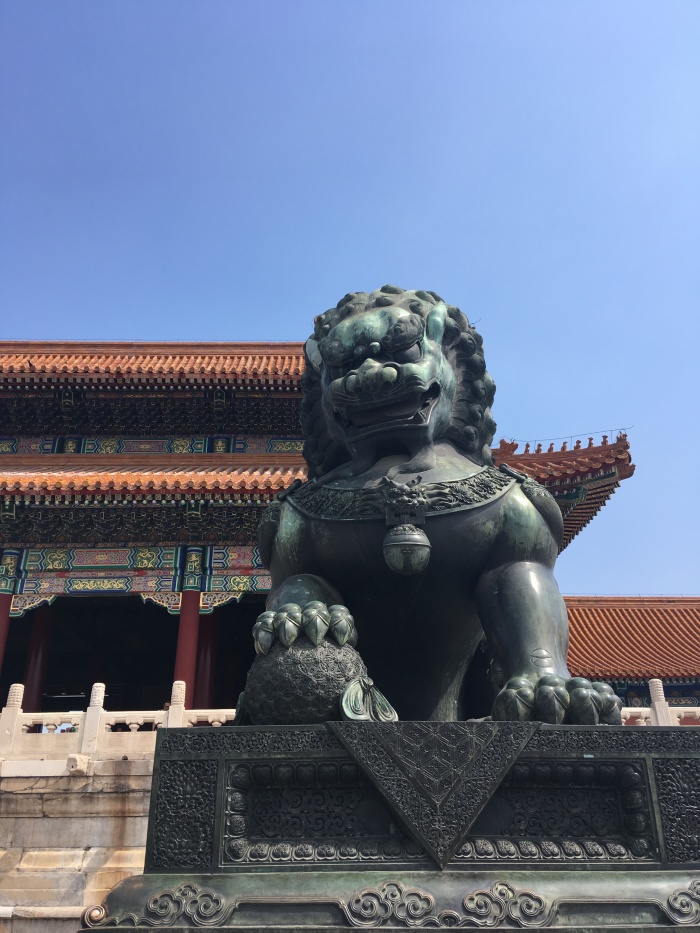

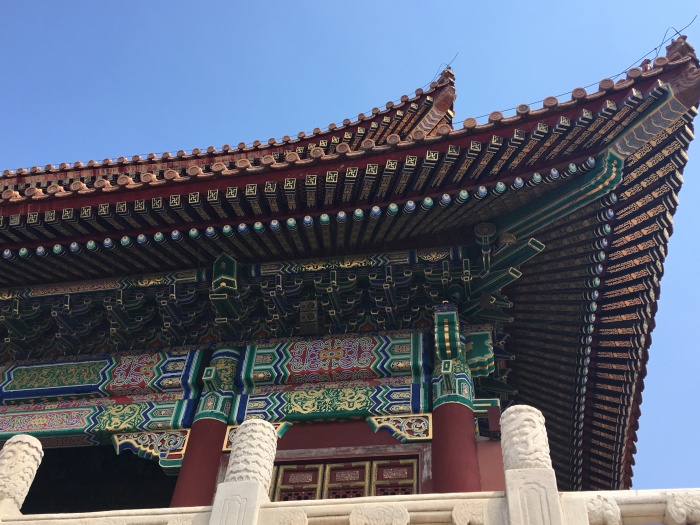
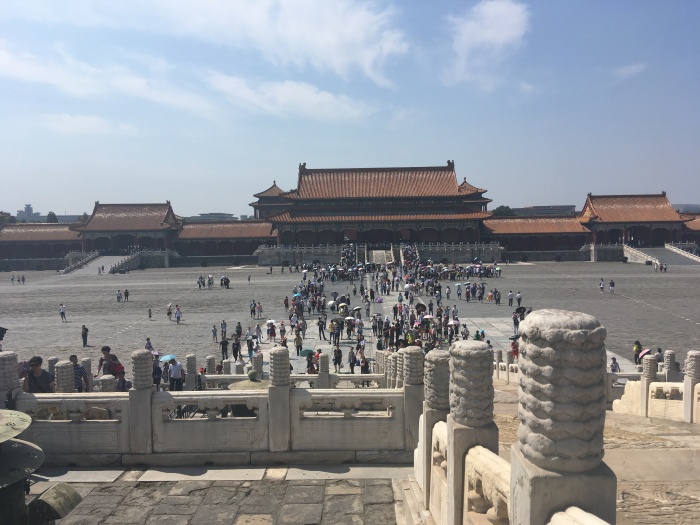
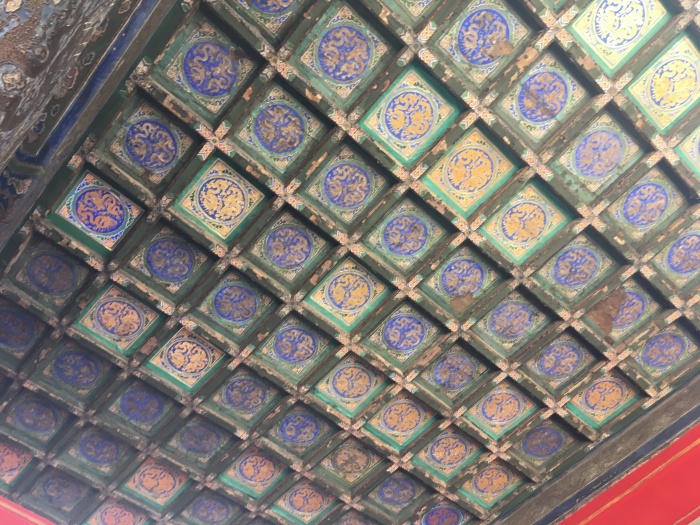
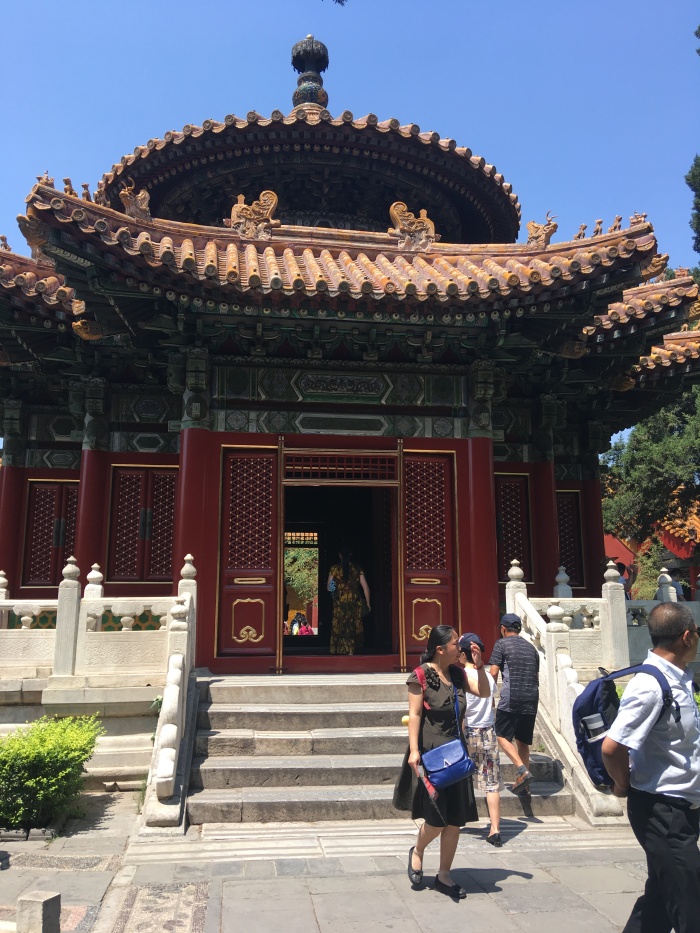
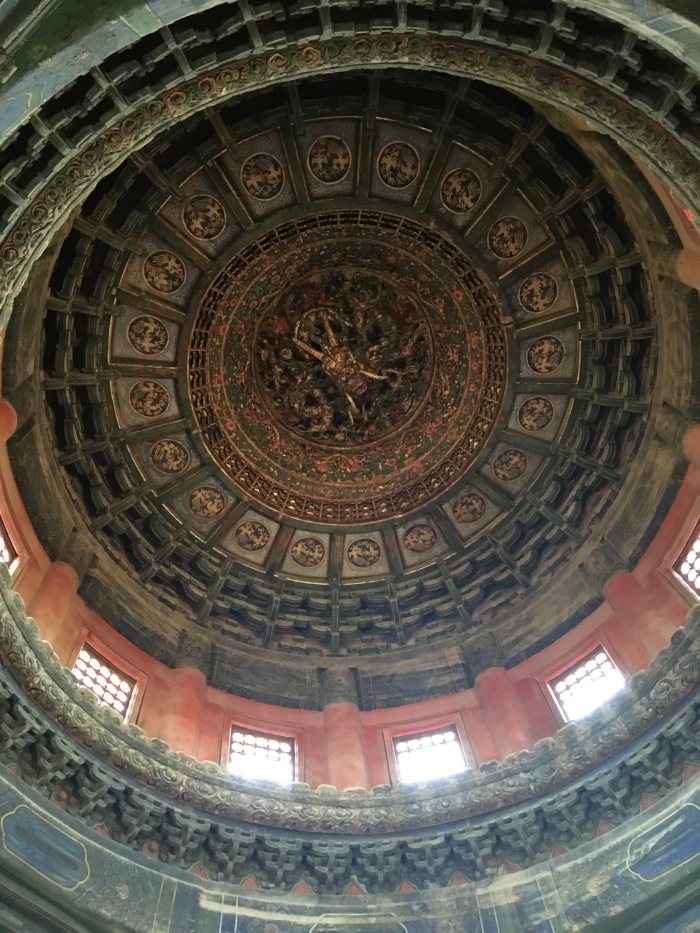
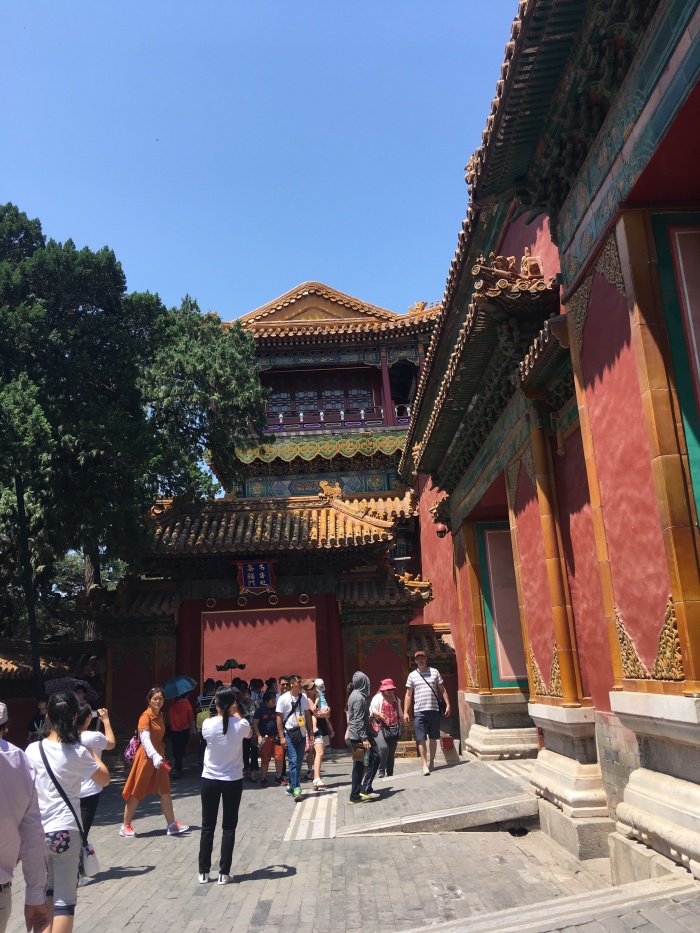 Visiting a local district called Hutong made me understand the importance of the family values and community – there are houses which have been passed through several generations. There is a tradition where the status of the family is illustrated by the beams outside the house, as well as the number of steps going inside the house. They should complement each other, so they preferably match – a balance illustrating the recognition of Feng Shui. Stopping for a home cooked lunch inside someone’s house was lovely and humbling – the food was simple, but delicious and the lady of the house made all the food herself while her husband was out at work. Visited a cricket trainer who developed the fighting talents of the crickets for gambling purposes – he would train the cricket and then sell it for a price depending on how good a fighter the cricket was. When looking for some food, I stumbled across a street market, and there were scorpions on sticks! You could see them wriggling around before they had been cooked – slightly odd.
Visiting a local district called Hutong made me understand the importance of the family values and community – there are houses which have been passed through several generations. There is a tradition where the status of the family is illustrated by the beams outside the house, as well as the number of steps going inside the house. They should complement each other, so they preferably match – a balance illustrating the recognition of Feng Shui. Stopping for a home cooked lunch inside someone’s house was lovely and humbling – the food was simple, but delicious and the lady of the house made all the food herself while her husband was out at work. Visited a cricket trainer who developed the fighting talents of the crickets for gambling purposes – he would train the cricket and then sell it for a price depending on how good a fighter the cricket was. When looking for some food, I stumbled across a street market, and there were scorpions on sticks! You could see them wriggling around before they had been cooked – slightly odd.
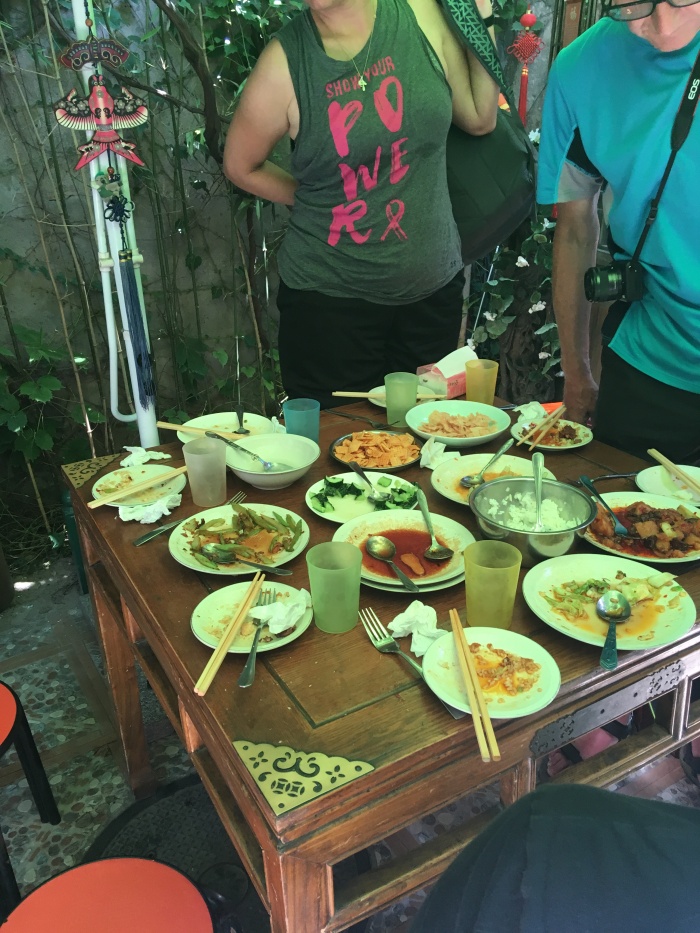
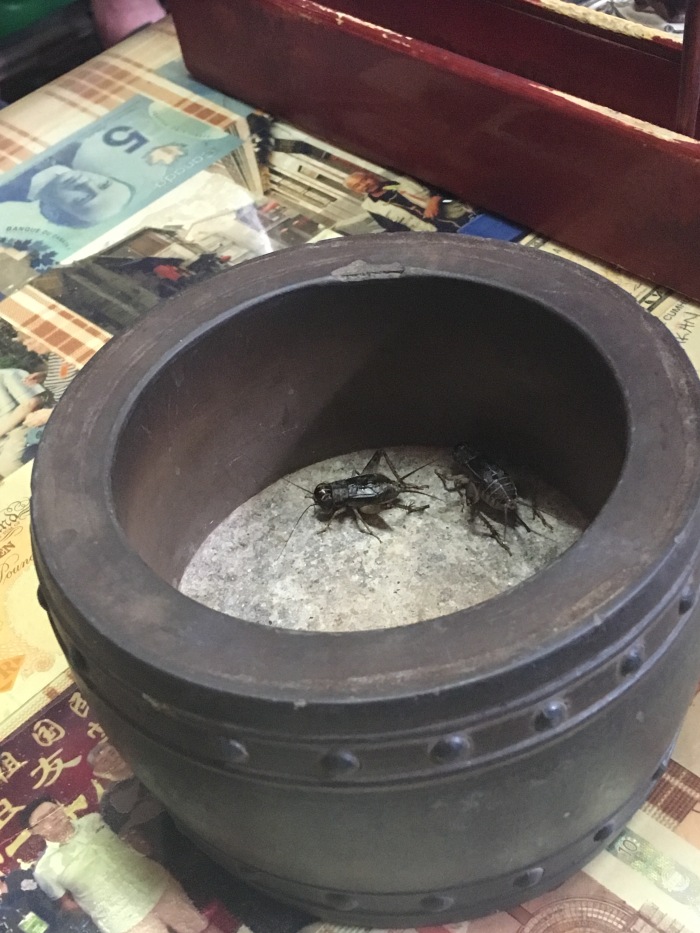
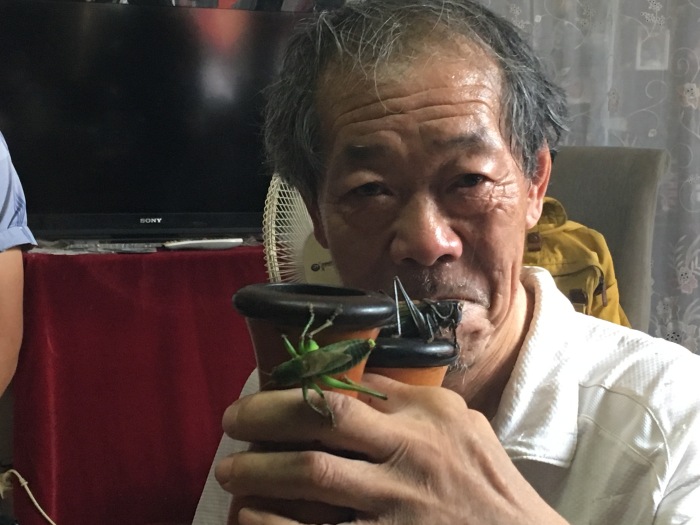
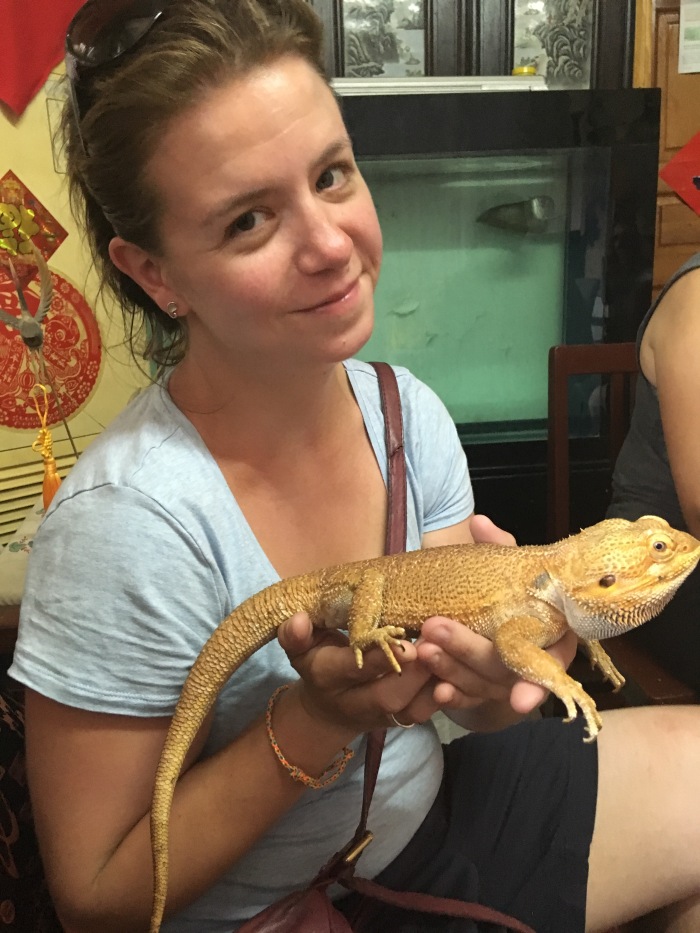
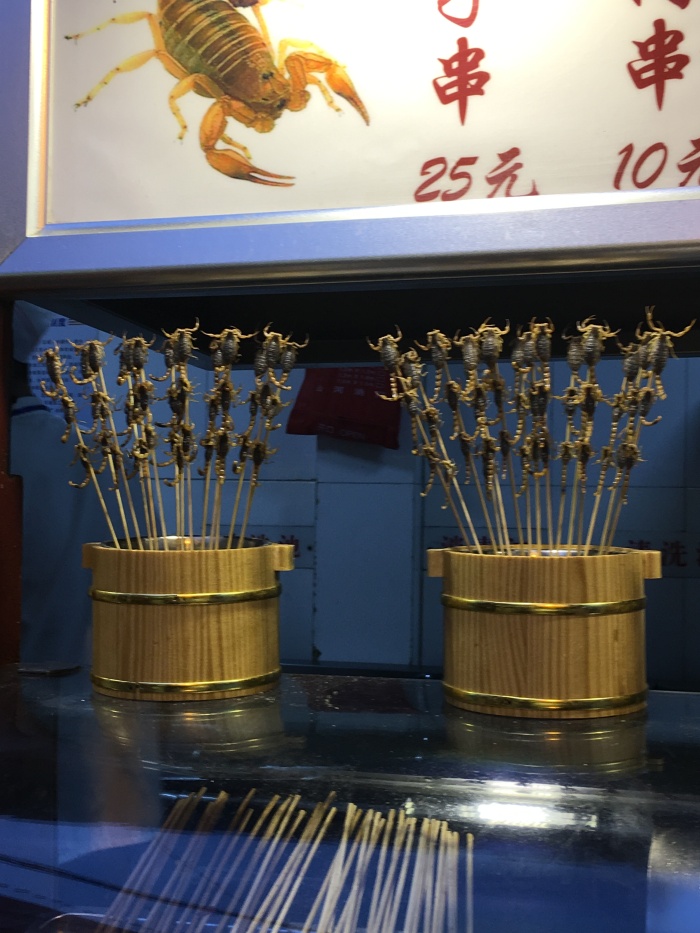 Boarded a fast train to Shanghai which took about five hours. It was nice to read my book for a bit and they reminded me of the Shinkansens in Japan. There was a completely different feel to this city. There was also a lot more cloud/fog/smog around. The day after I arrived in Shanghai, the weather in Beijing had turned from sun and heat to tropical thunder storms which made news headlines. The Great Wall access could get shut and there was news of a massive mudslide due to the weather – it was good that the Great Wall was seen in the sunshine!
Boarded a fast train to Shanghai which took about five hours. It was nice to read my book for a bit and they reminded me of the Shinkansens in Japan. There was a completely different feel to this city. There was also a lot more cloud/fog/smog around. The day after I arrived in Shanghai, the weather in Beijing had turned from sun and heat to tropical thunder storms which made news headlines. The Great Wall access could get shut and there was news of a massive mudslide due to the weather – it was good that the Great Wall was seen in the sunshine!
Shanghai was certainly a metropolis. The financial city was full of skyscrapers and the buildings were all very British looking after the Brits had come and developed the original port town. There is also a district full of French architecture. It was such a contrast to see the skyscrapers and architecture – part of me felt like I was at home. Unfortunately, the weather was a little disappointing, so the tallest skyscrapers on the Bund were difficult to see. But a night time boat ride was great so that I could see the buildings lit up. The Shanghai museum was good – there was a lot of old items inside which were ornately decorated. A visit to the Yuyuan bazaar was fun – it was originally part of the old town, but had been rebuilt to look old. It was a contrast to see the ‘old’ buildings with the tall skyscrapers behind. Walking down Nanjing road was busy – lots of modern shops and malls. The Shanghai Circus was fun to watch – all the acts are people who failed to get into the Olympic team. They have set a few world records – one included 8 motorbikes circling around inside a steel dome.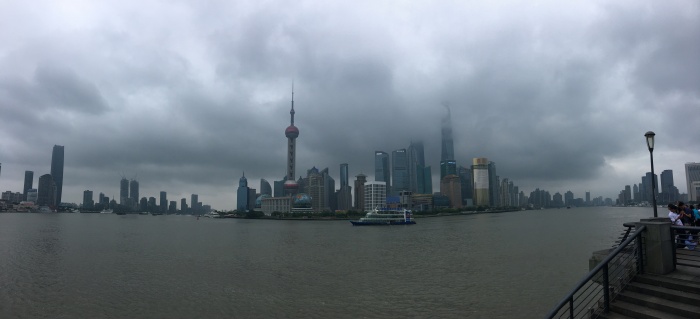
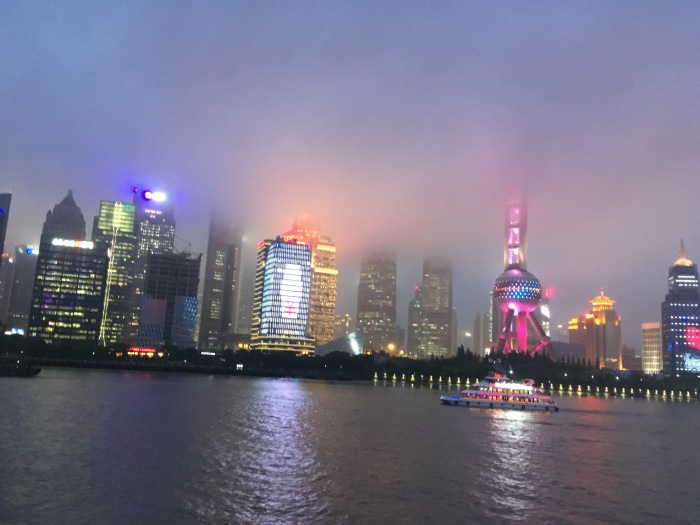
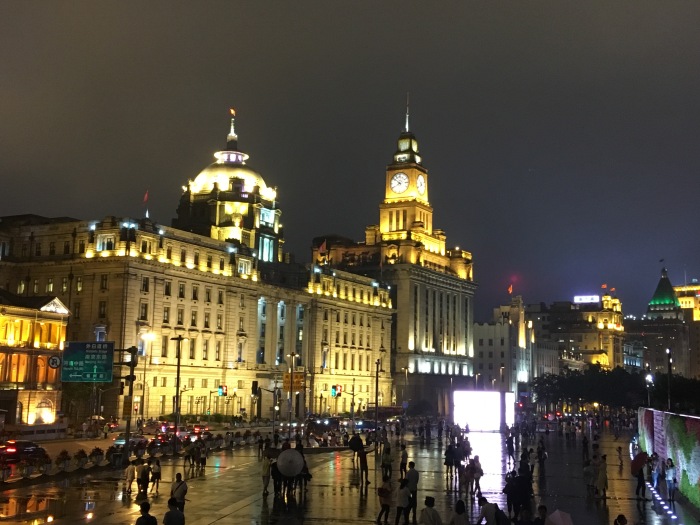
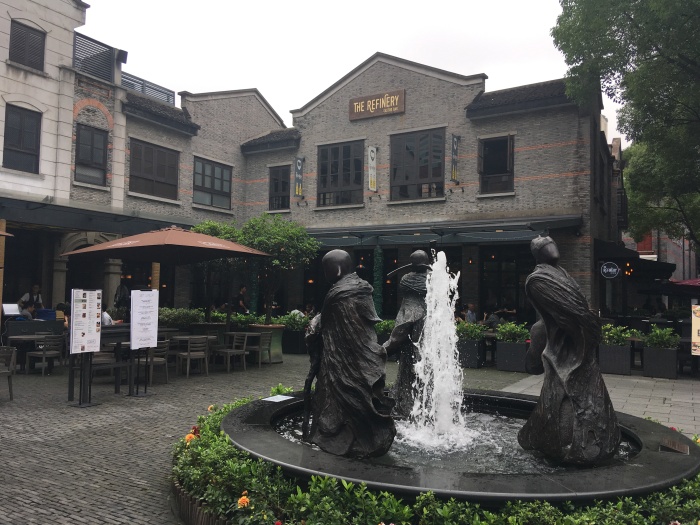
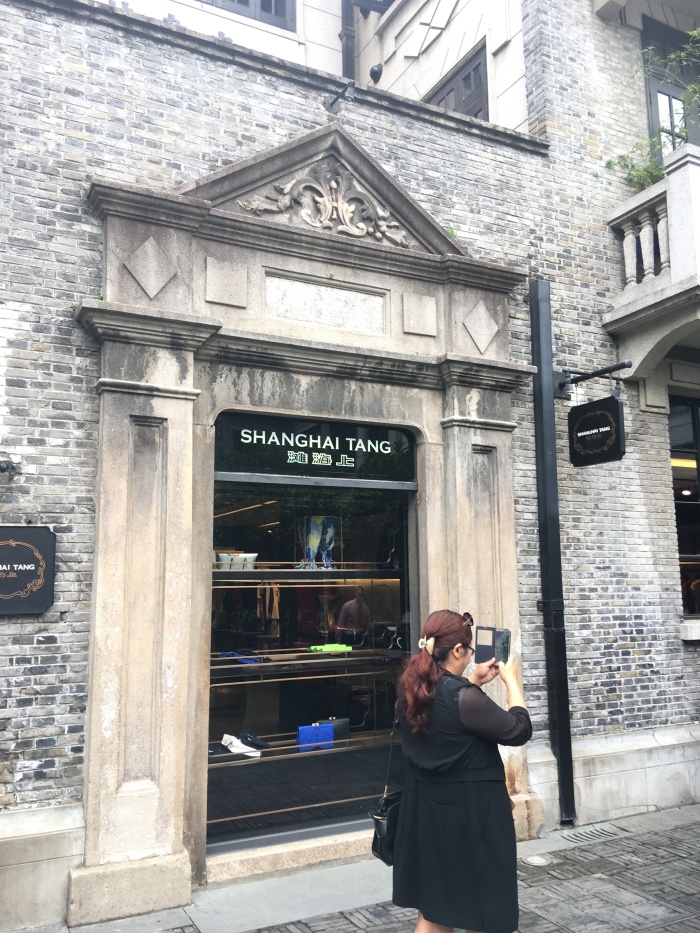
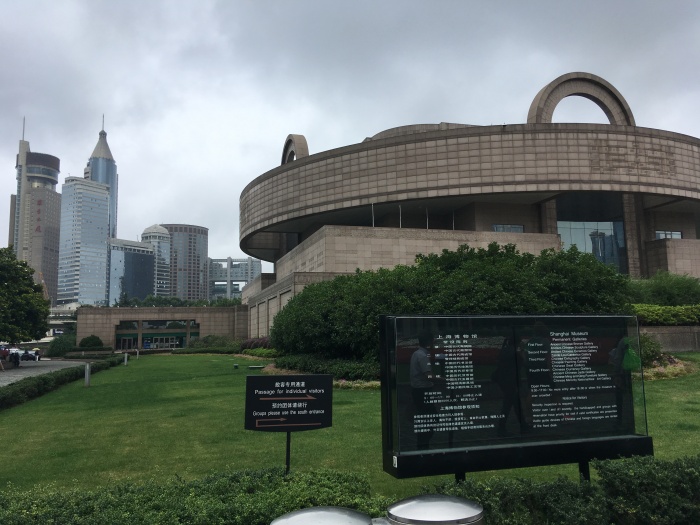
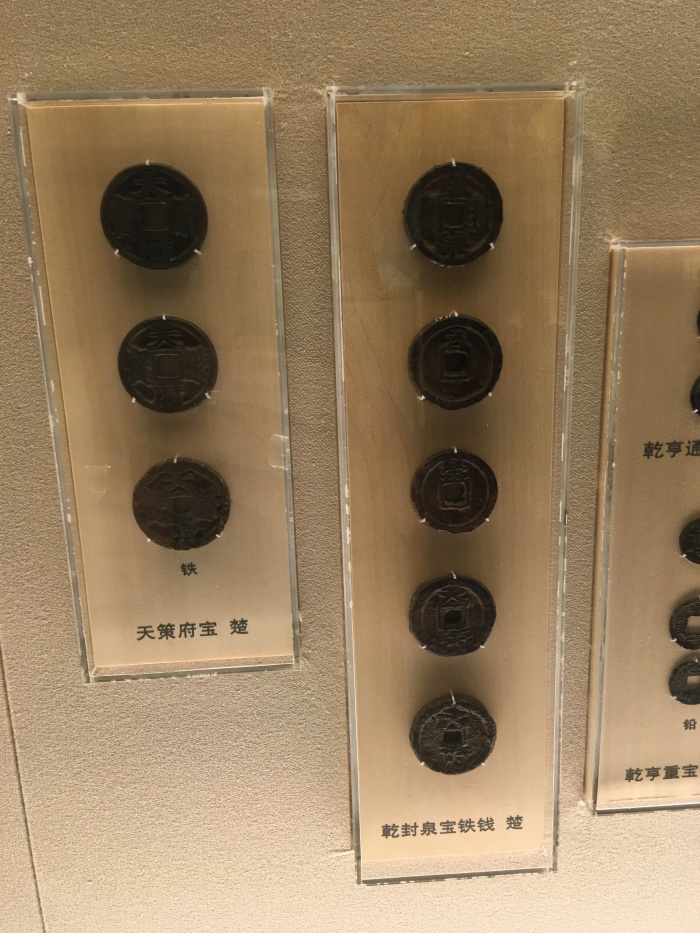
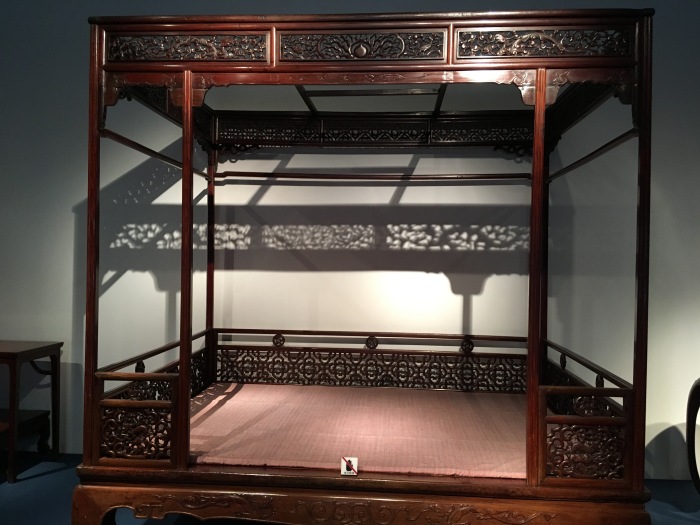
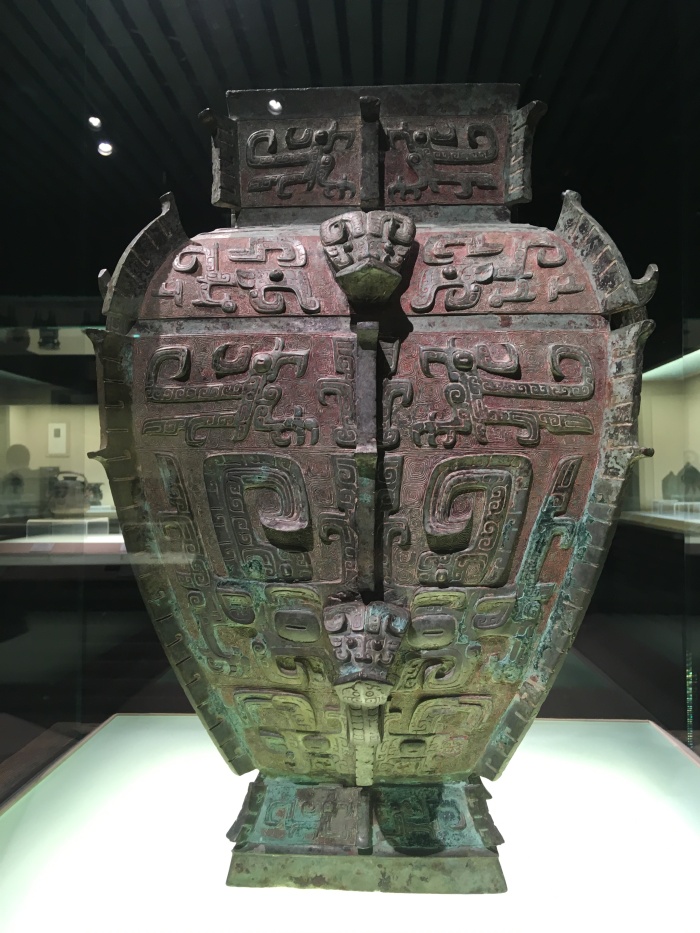
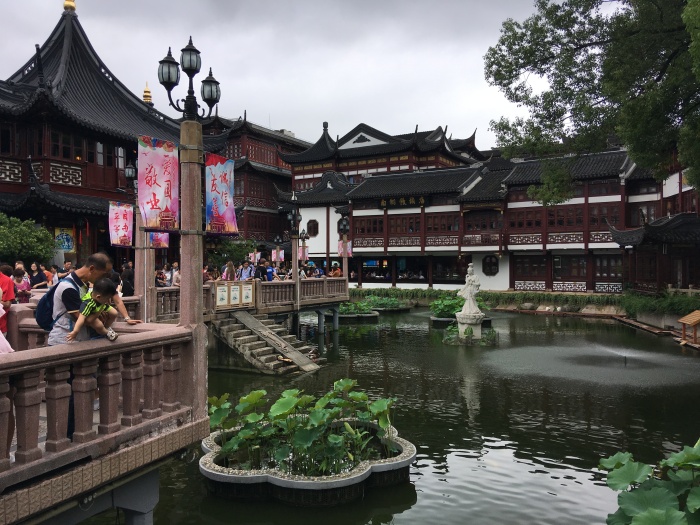
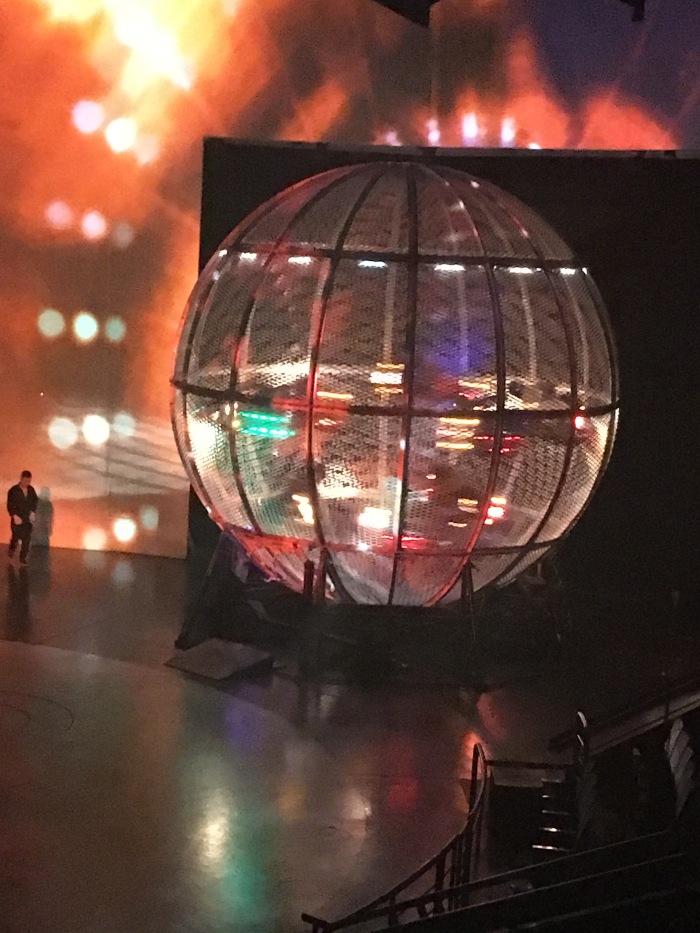
Shanghai to Xi’an – overnight train. It took about 16 hours in the end and was fairly comfortable, apart from the toilet! Wine and a pack of cards helped to pass some of the time. I spent the last day in Shanghai exploring the Xin Tian district which looked very French and found the Chinese version of Pizza Express. Had a nice mid afternoon noodle meal but I realised I had left my iPad in the hotel room after I checked out so I wasted a bit of time having to collect it. Also thought I had lost my wallet on train but was fine. It was stealthily hiding behind my bag – that could have been a real pain to try and sort if I had lost it. I seem to have developed a habit of misplacing things. Either that, or I am just too tired and busy to concentrate. Got to Xi’an feeling pretty grimy so a much needed shower was very welcome. A city walls cycle was next – the perimeter was 15km so took a while to get round in the heat but it was nice to be back on a bike again. An evening enjoying a banquet dumpling was also very nice.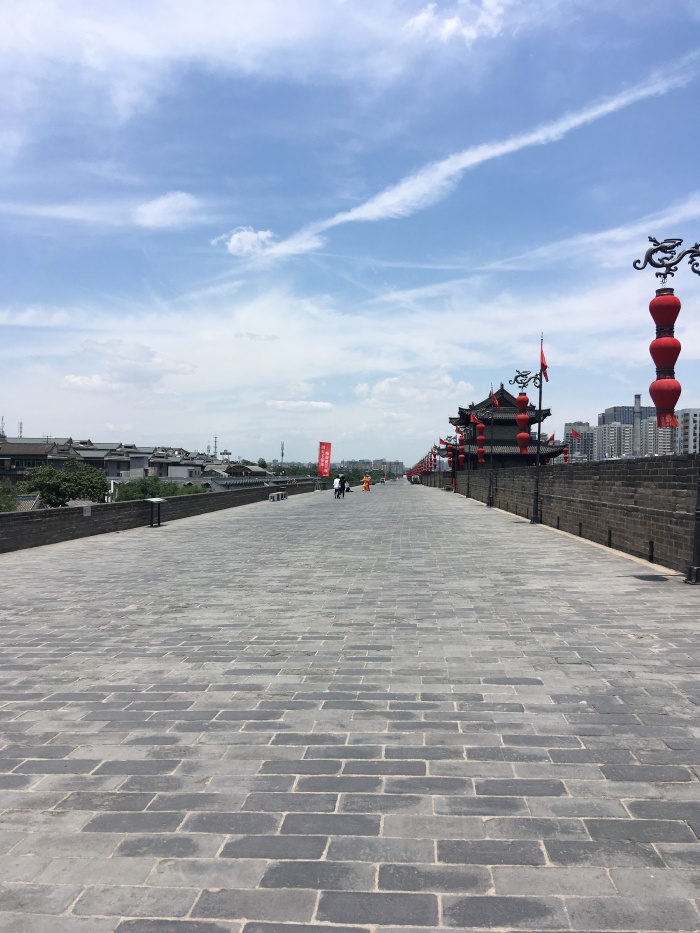

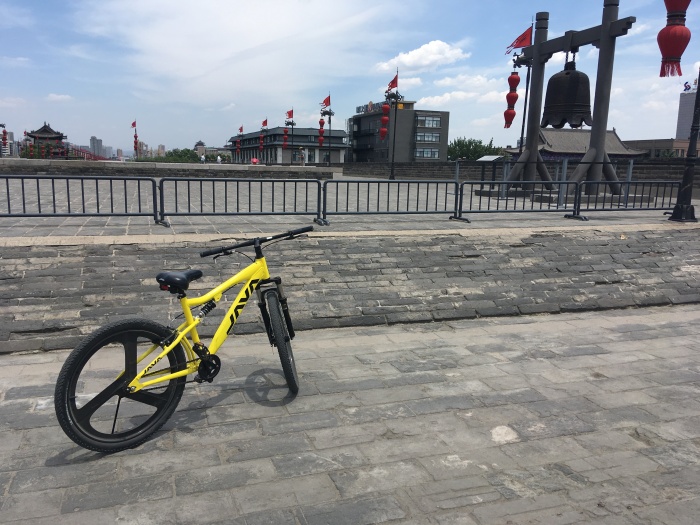
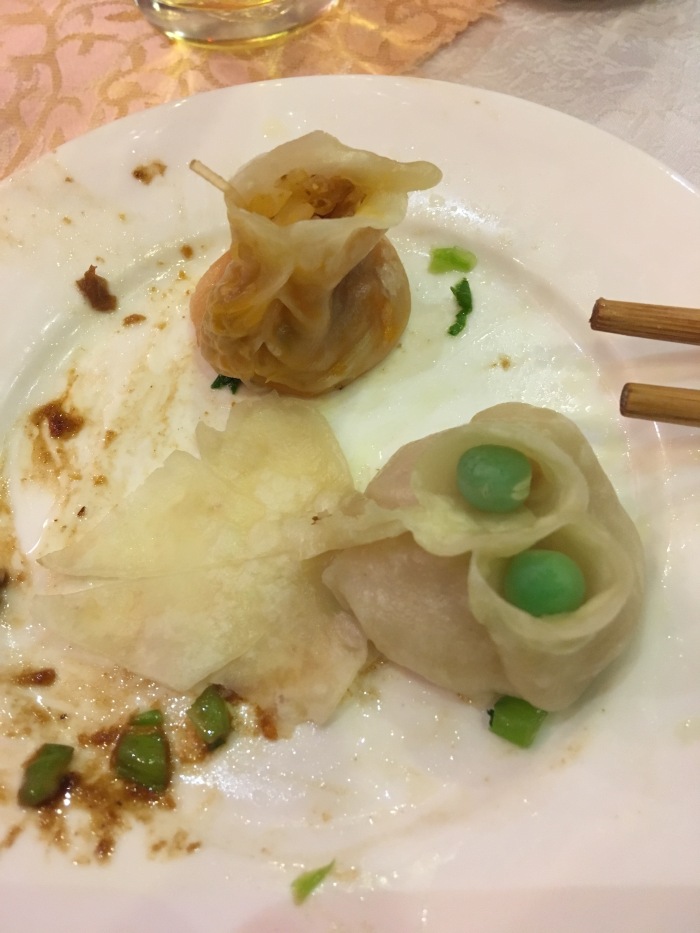
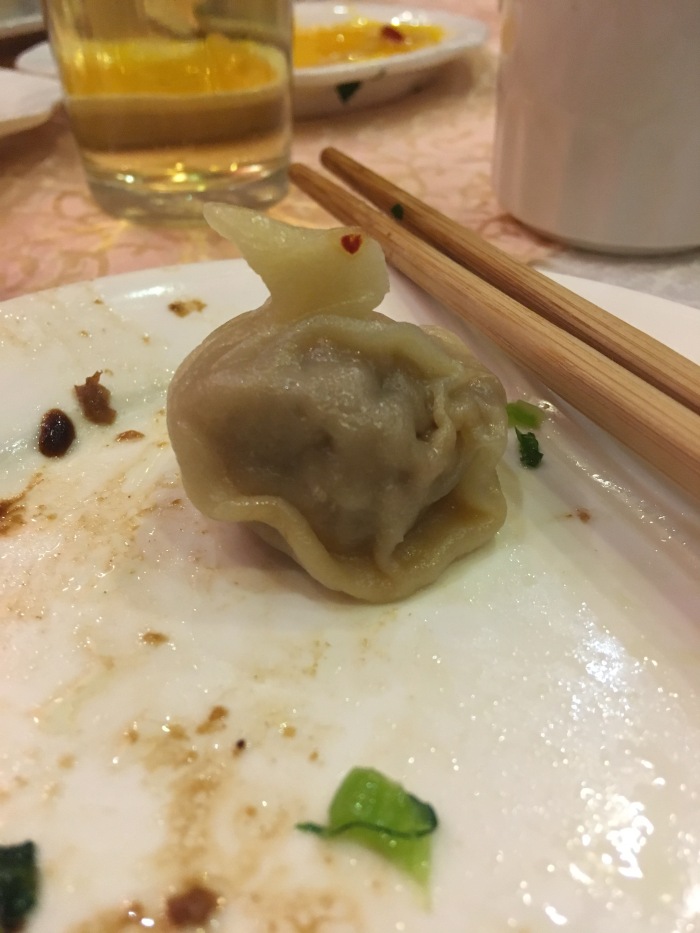
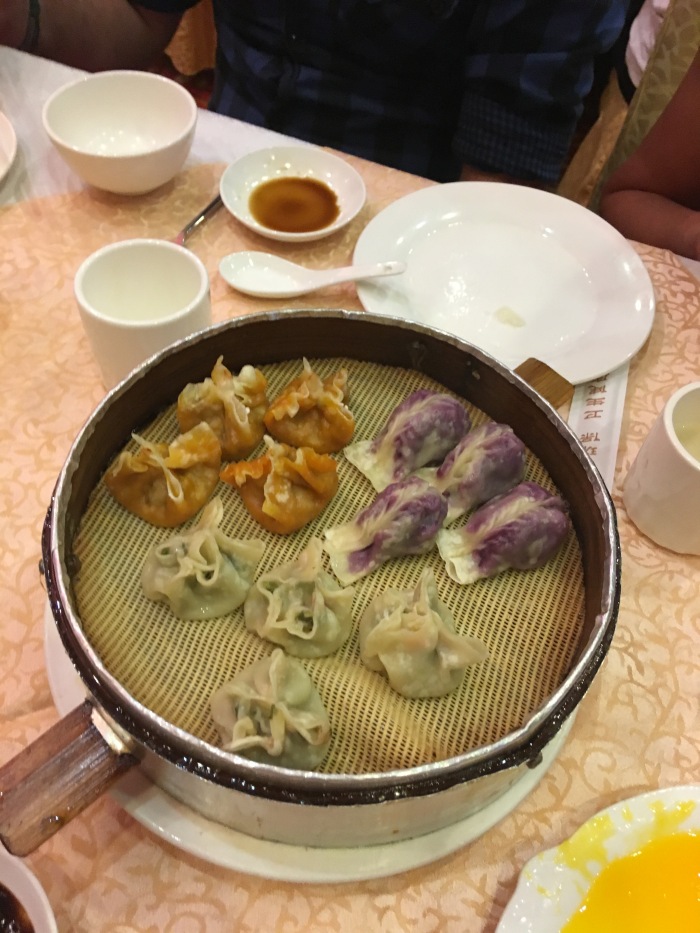 Visited the Great Wild Goose Pagoda and the temple which originally built in 652 and is now a little bit wonky due to an earthquake. The temples were very decorated and each ones housed different Buddhas for different things e.g. One symbolised wealth etc. I was able to buy something made of proper Chinese jade here too – a nice bangle but it was a bit on the expensive side. You could buy something from a street vendor, but it obviously would be fake. Then went to the Muslim sector of the town which was beside the Bell Tower and Drum Tower – these were originally used to signal the presence of the enemy, as well as give the town a sense of the time of day – bell was rung at the start, and drum sounded at the end. The Muslim quarter was one long street full of vendors selling different foods. These ranged from battered squid and crab to bread and nuts. Tried a variety of hamburger which was called a pancake – I think it had mutton inside. Found a great little place to eat on a rooftop where food and drink came to about a fiver each! It’s a lot cheaper to eat here than in Japan.
Visited the Great Wild Goose Pagoda and the temple which originally built in 652 and is now a little bit wonky due to an earthquake. The temples were very decorated and each ones housed different Buddhas for different things e.g. One symbolised wealth etc. I was able to buy something made of proper Chinese jade here too – a nice bangle but it was a bit on the expensive side. You could buy something from a street vendor, but it obviously would be fake. Then went to the Muslim sector of the town which was beside the Bell Tower and Drum Tower – these were originally used to signal the presence of the enemy, as well as give the town a sense of the time of day – bell was rung at the start, and drum sounded at the end. The Muslim quarter was one long street full of vendors selling different foods. These ranged from battered squid and crab to bread and nuts. Tried a variety of hamburger which was called a pancake – I think it had mutton inside. Found a great little place to eat on a rooftop where food and drink came to about a fiver each! It’s a lot cheaper to eat here than in Japan.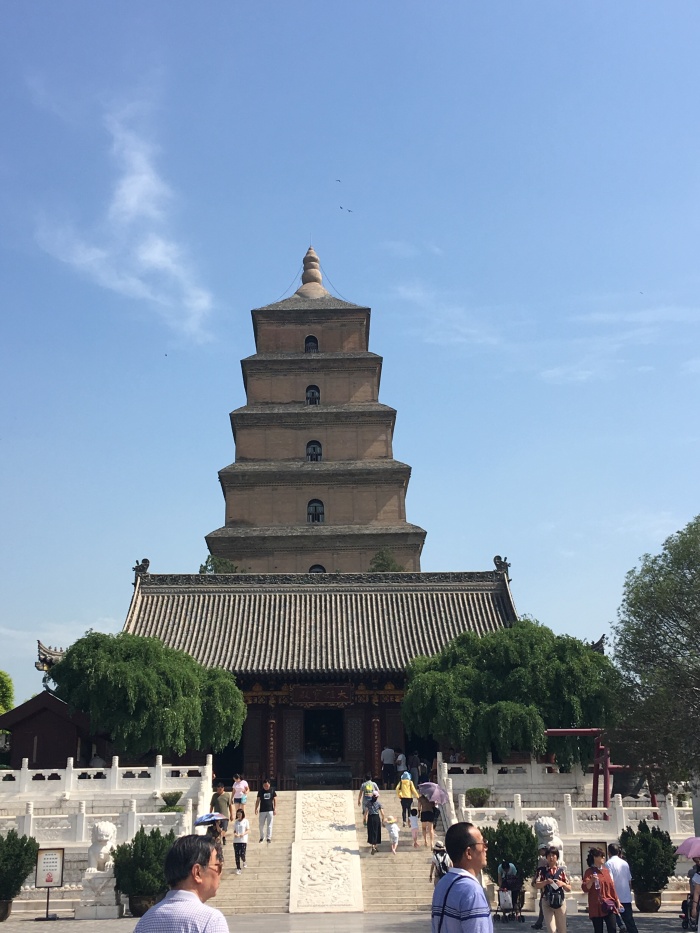

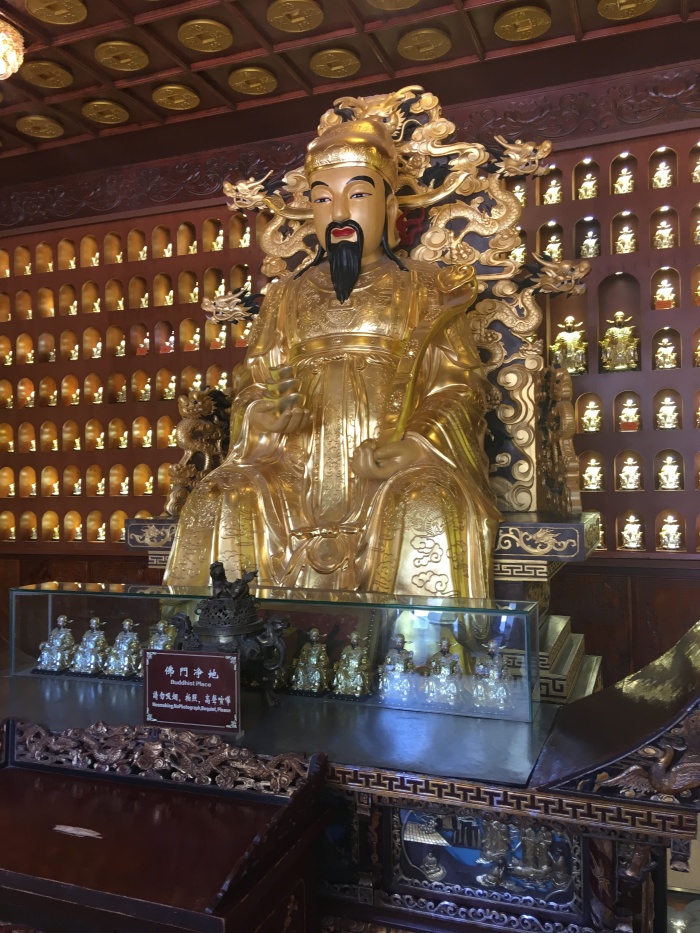
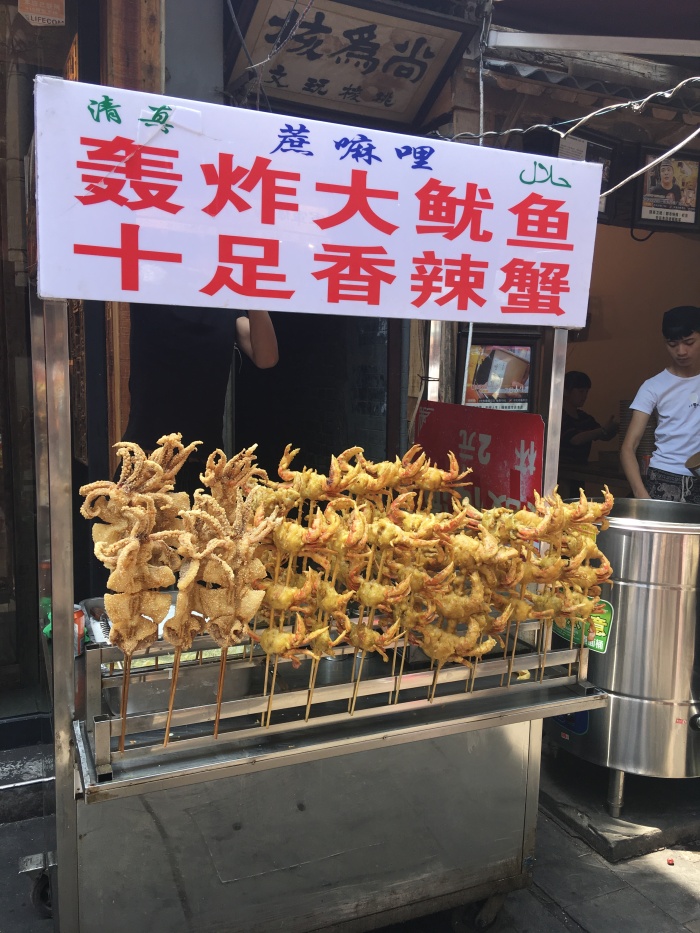

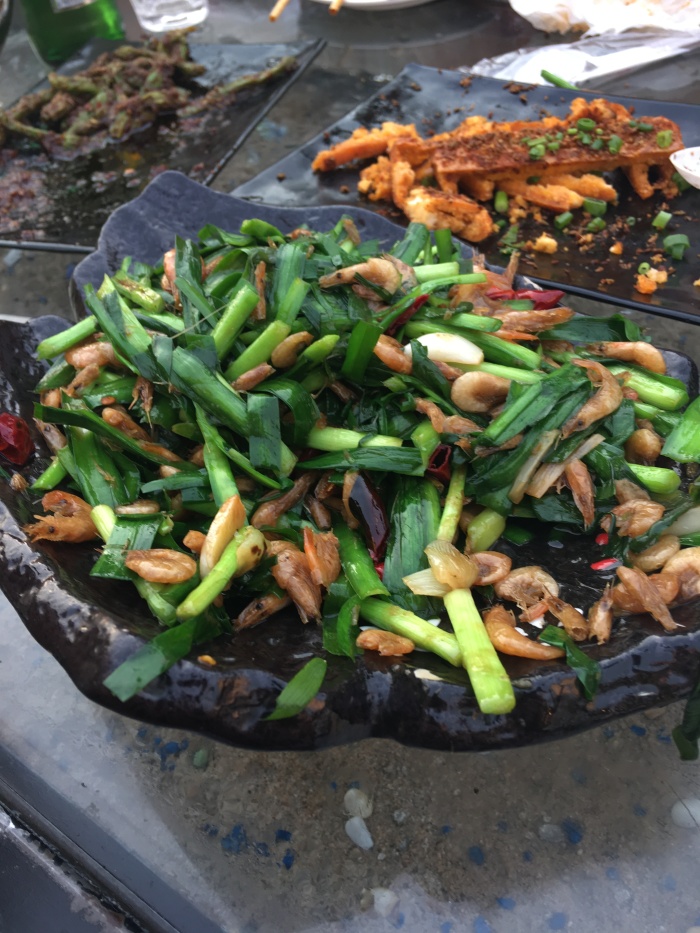 The Terracotta Warriors were amazing – they were only discovered in 1974 by a couple of local farmers working the land. The army was buried with Emperor Qin, who was an important ruler during the dynasty over 2000 years ago, along with things for the afterlife – the warriors were there to protect him, but had been broken into pieces by the enemy at the time who discovered the tombs after they had been betrayed by one of the workers. Usually, the workers were killed so that the secret could be kept, although I don’t think the actual tomb has been found yet. The excavation is still going on and more pieces are being put back together. Each warrior is individual and is a replica of the creator of that particular warrior, as one person usually made one. There were approximately 700,000 builders, so you can only imagine now many constructions happened. There is a large collection of the fully reconstructed ones on the site where they were found (about 2000 on display), and you also had the opportunity to look closely at a couple contained behind some glass. You could see the detail on the clothes and faces.
The Terracotta Warriors were amazing – they were only discovered in 1974 by a couple of local farmers working the land. The army was buried with Emperor Qin, who was an important ruler during the dynasty over 2000 years ago, along with things for the afterlife – the warriors were there to protect him, but had been broken into pieces by the enemy at the time who discovered the tombs after they had been betrayed by one of the workers. Usually, the workers were killed so that the secret could be kept, although I don’t think the actual tomb has been found yet. The excavation is still going on and more pieces are being put back together. Each warrior is individual and is a replica of the creator of that particular warrior, as one person usually made one. There were approximately 700,000 builders, so you can only imagine now many constructions happened. There is a large collection of the fully reconstructed ones on the site where they were found (about 2000 on display), and you also had the opportunity to look closely at a couple contained behind some glass. You could see the detail on the clothes and faces.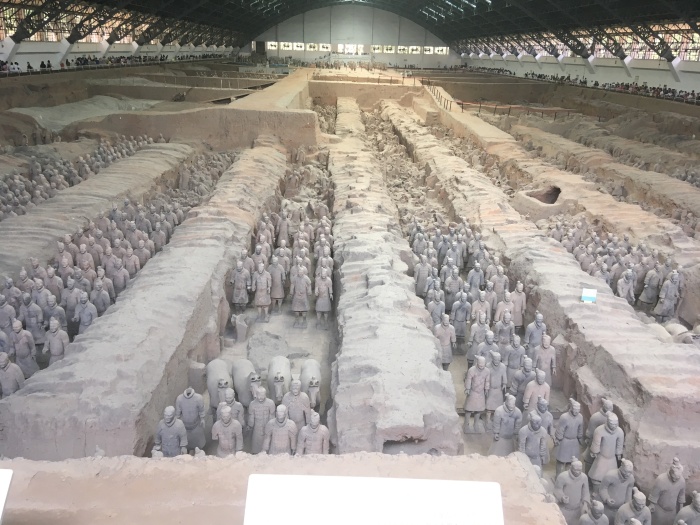
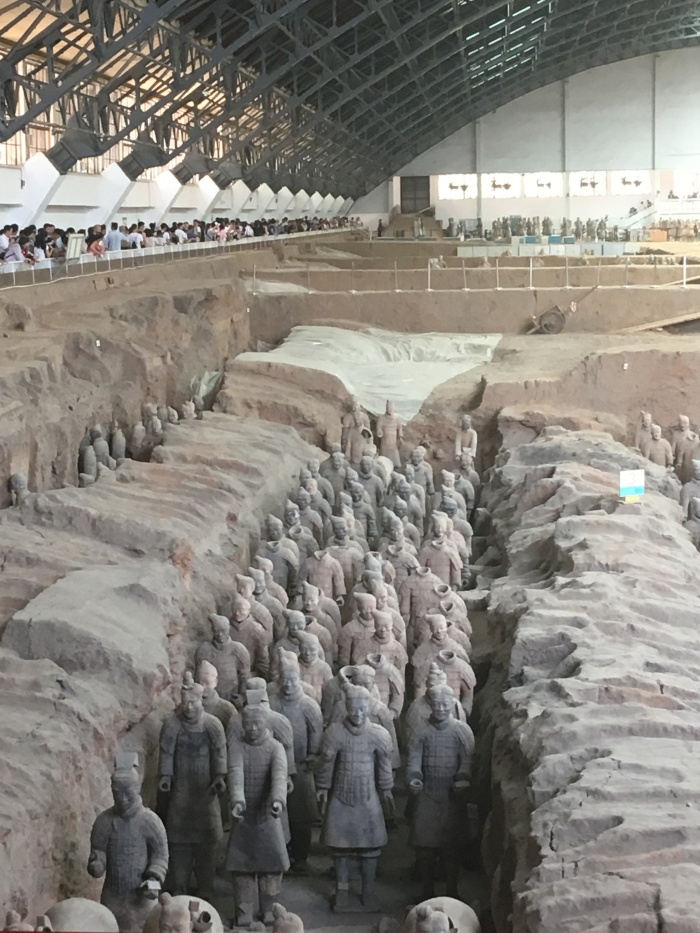
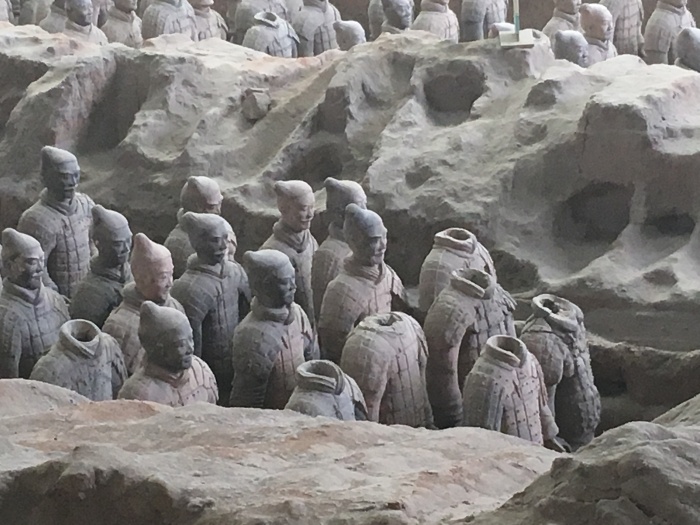

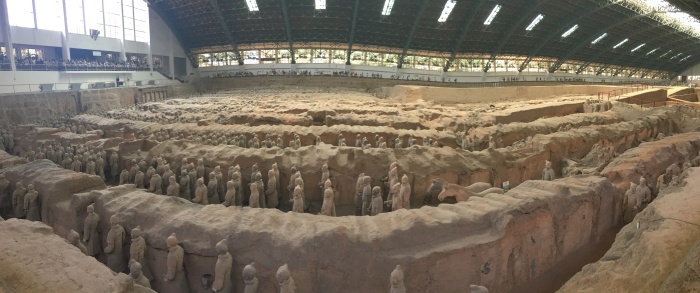
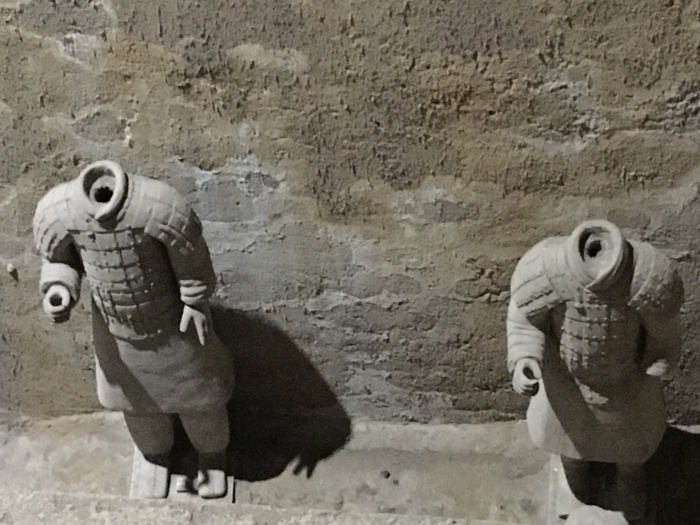
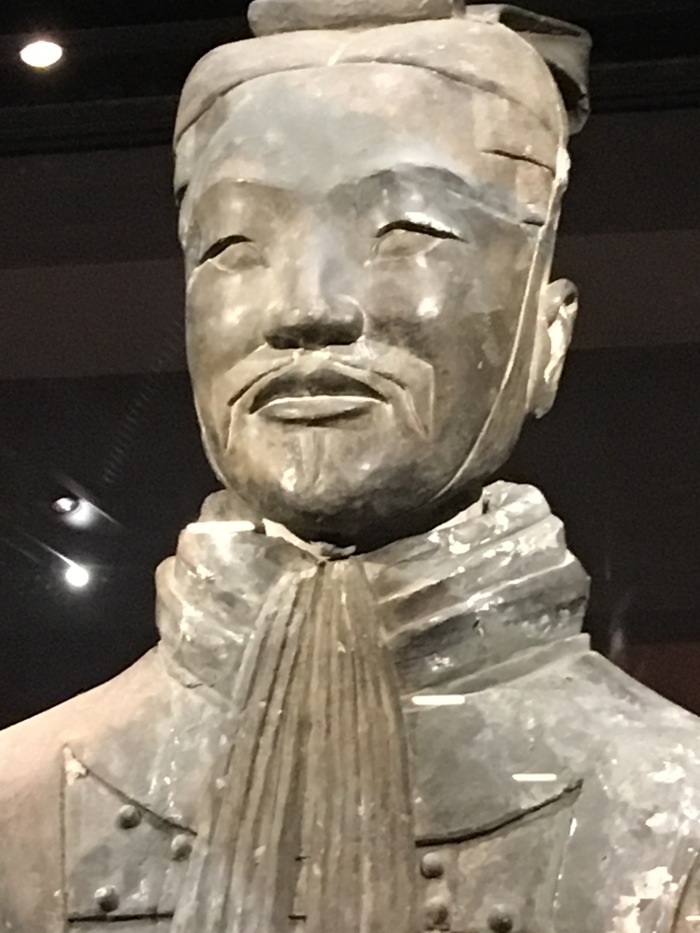
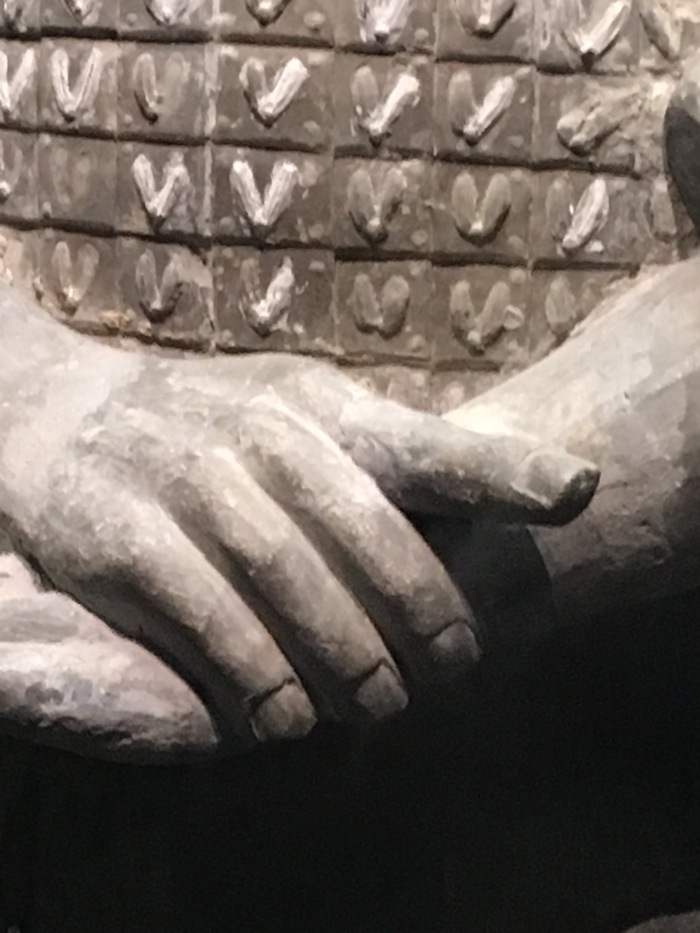
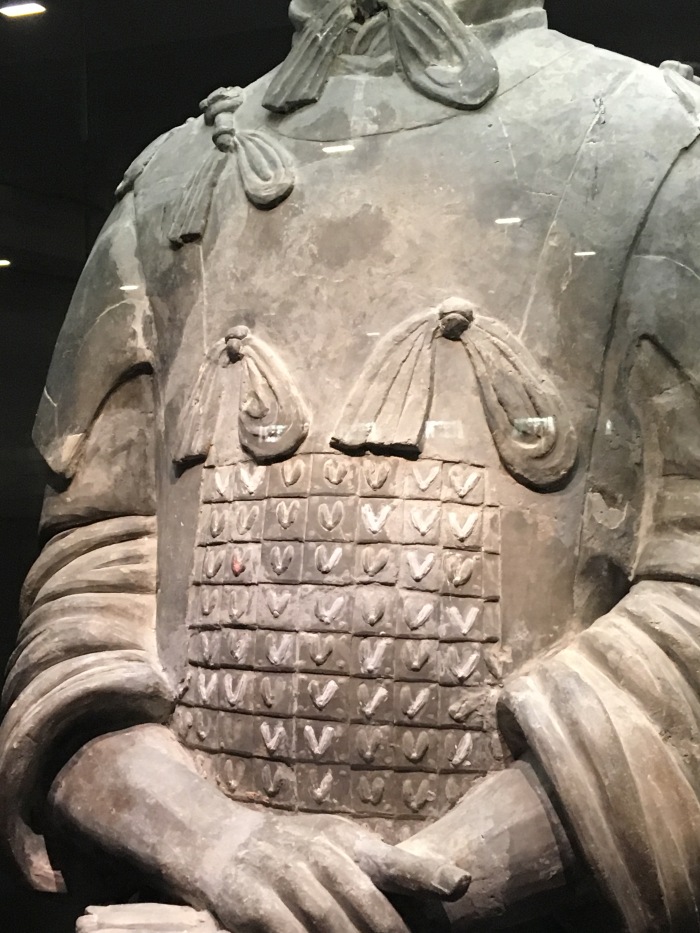
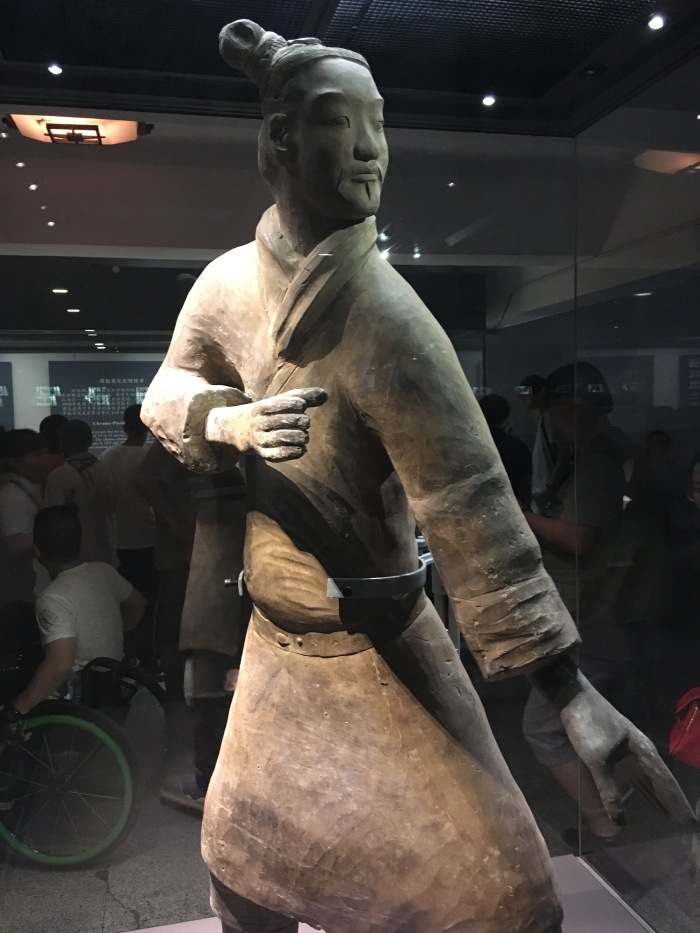 It was then time for another overnight train from Xi’an to Emei mountain. This was a 19 hour one and it was a bit more comfortable than the last one. There was some great scenery. Finally arrived and then went to the accommodation, which was another monastery near Emeishan town. Everything was basic and the communal showers could only be used at certain times in the late afternoon. Three nights here in the tranquillity after the hustle and bustle of cities. I did feel a bit intimidated walking through certain parts of the temple to go to the loo in my pjs – I felt that the Buddhas were looking at me disapprovingly. Oh well!
It was then time for another overnight train from Xi’an to Emei mountain. This was a 19 hour one and it was a bit more comfortable than the last one. There was some great scenery. Finally arrived and then went to the accommodation, which was another monastery near Emeishan town. Everything was basic and the communal showers could only be used at certain times in the late afternoon. Three nights here in the tranquillity after the hustle and bustle of cities. I did feel a bit intimidated walking through certain parts of the temple to go to the loo in my pjs – I felt that the Buddhas were looking at me disapprovingly. Oh well!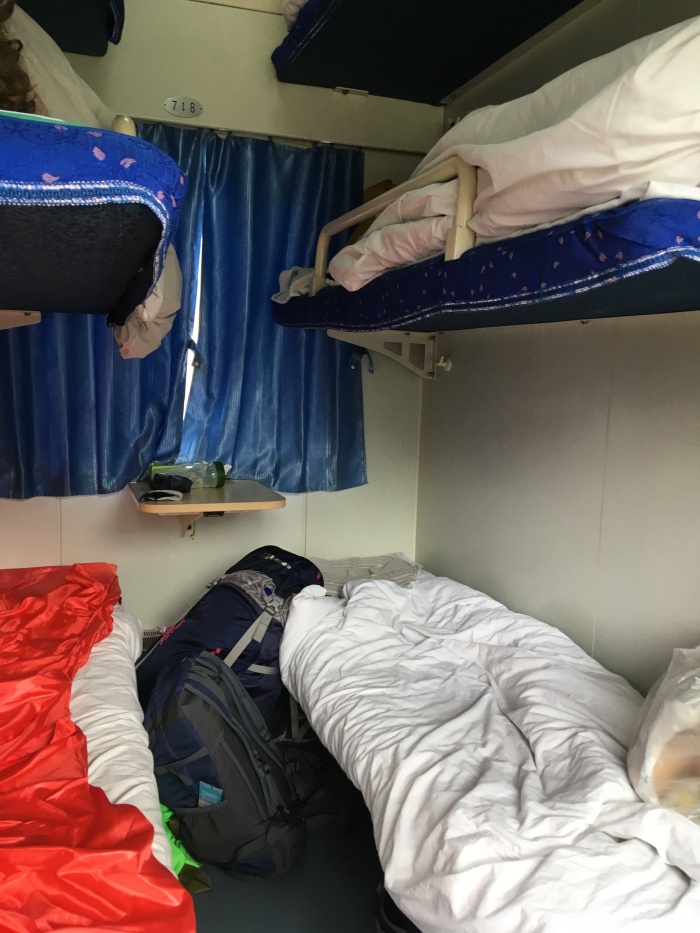

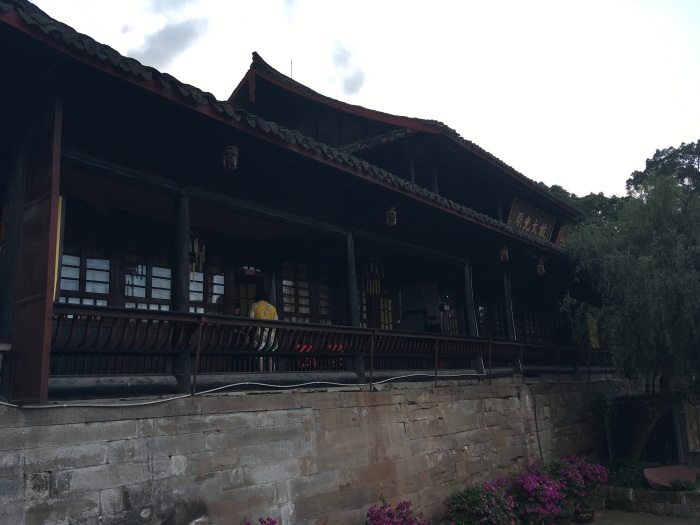
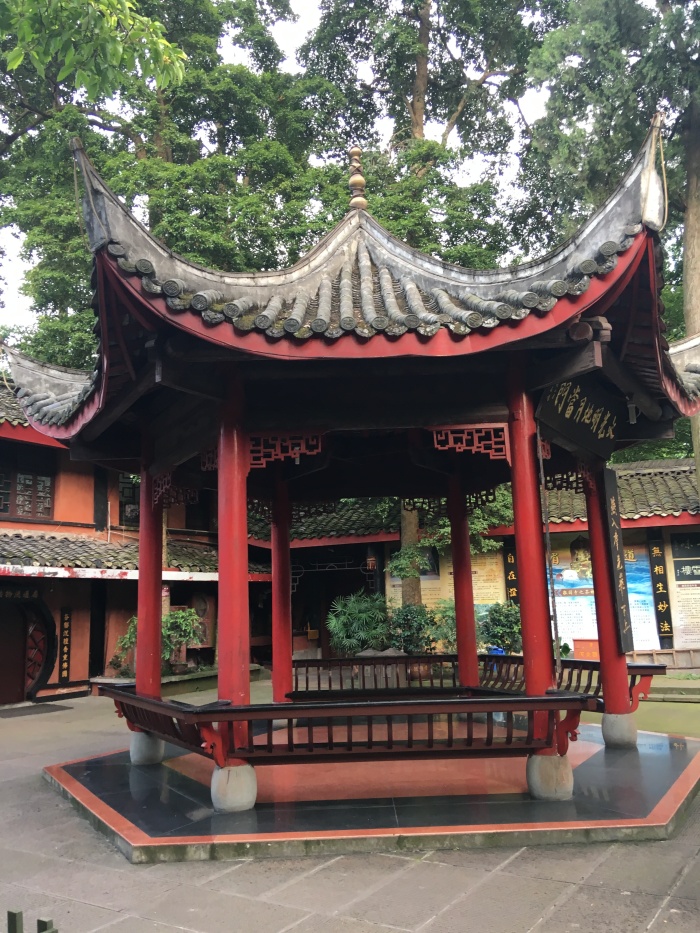
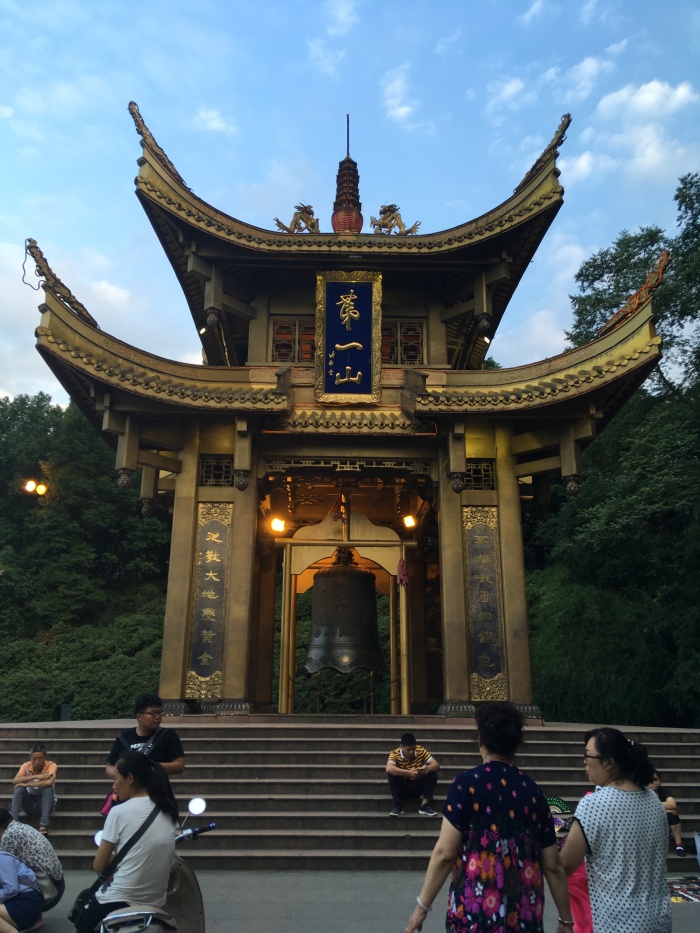
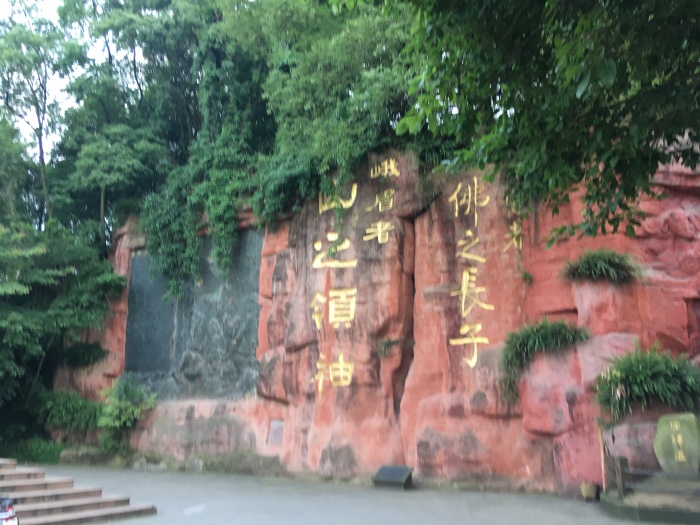 A hike next day into Mt Emei was welcome after a long train journey. There were a lot of carvings in the rock walls on the way up to certain temples, as well as streams and lovely bridges. After having had my photo taken with several Chinese people by their relatives, it was off to try and find some monkeys. A few monkeys were encountered and they were definitely ‘wild’! One or two looked into people’s bags and nabbed the odd face wipe. Luckily, I (and my possessions) remained intact, but they definitely looked fierce.
A hike next day into Mt Emei was welcome after a long train journey. There were a lot of carvings in the rock walls on the way up to certain temples, as well as streams and lovely bridges. After having had my photo taken with several Chinese people by their relatives, it was off to try and find some monkeys. A few monkeys were encountered and they were definitely ‘wild’! One or two looked into people’s bags and nabbed the odd face wipe. Luckily, I (and my possessions) remained intact, but they definitely looked fierce.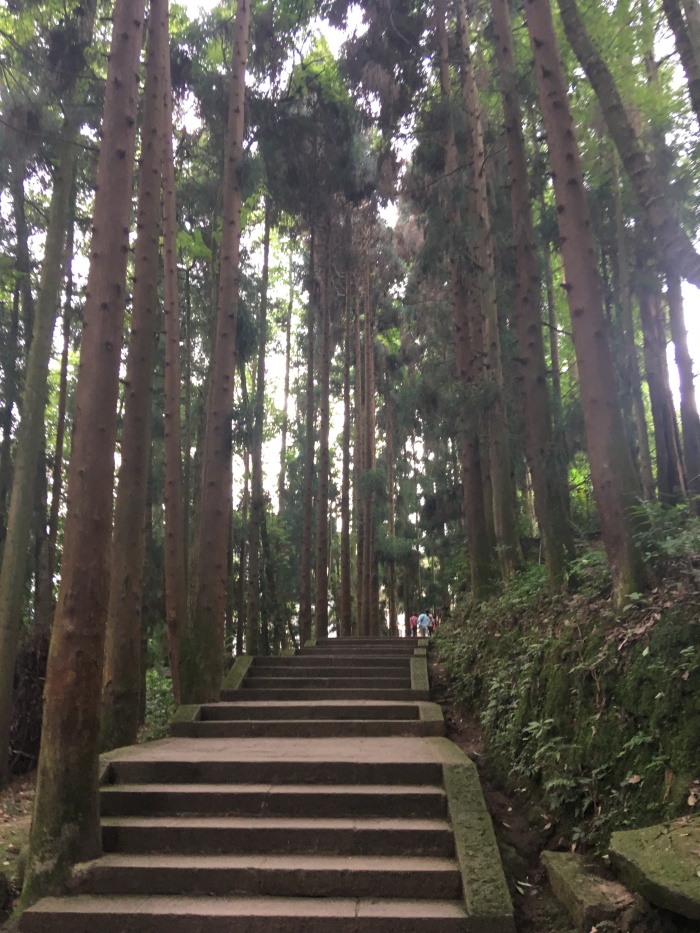
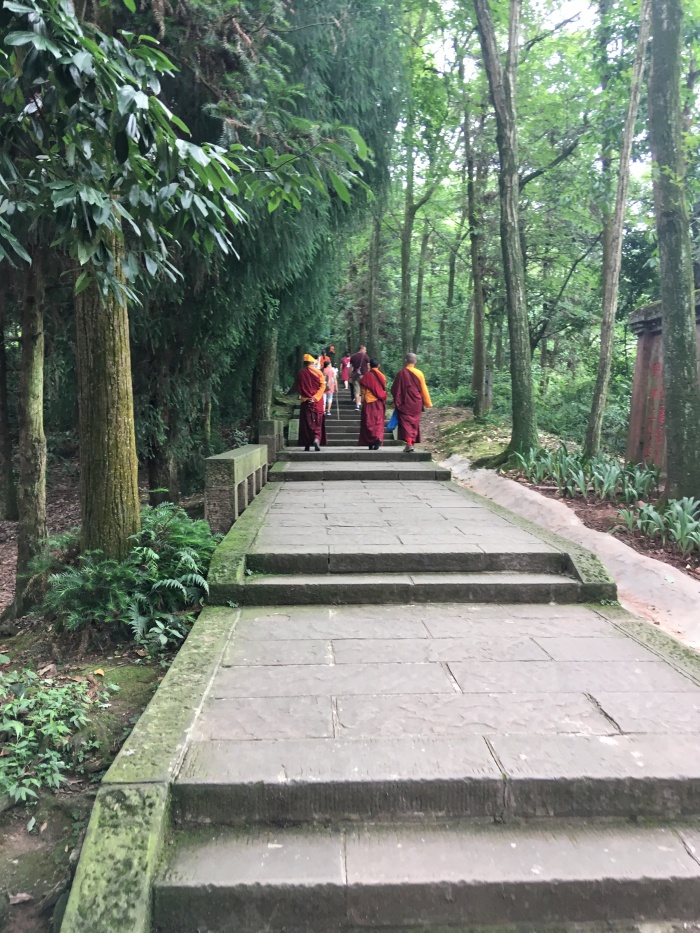
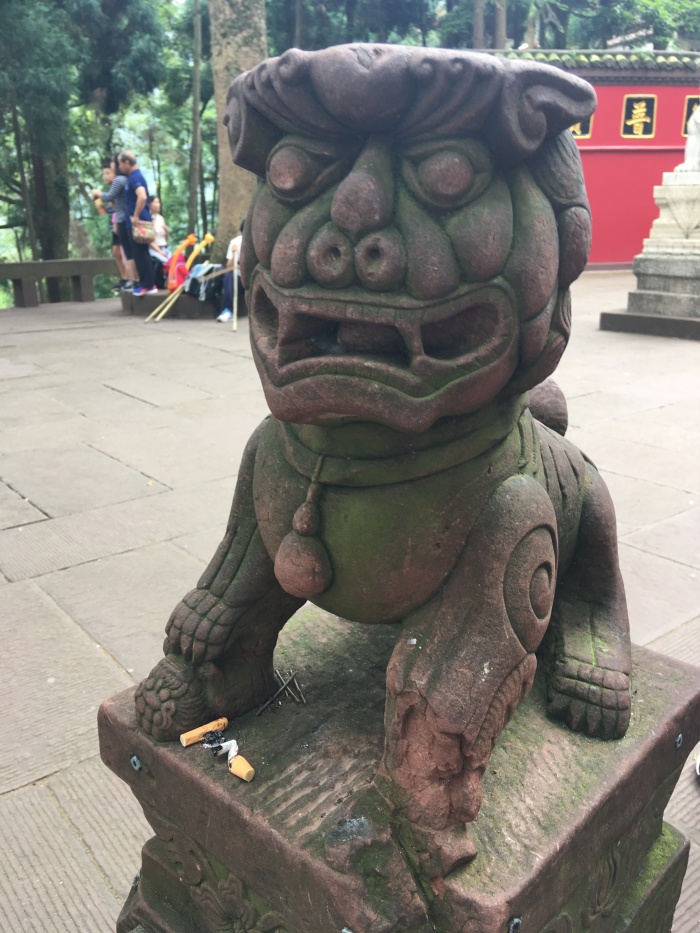
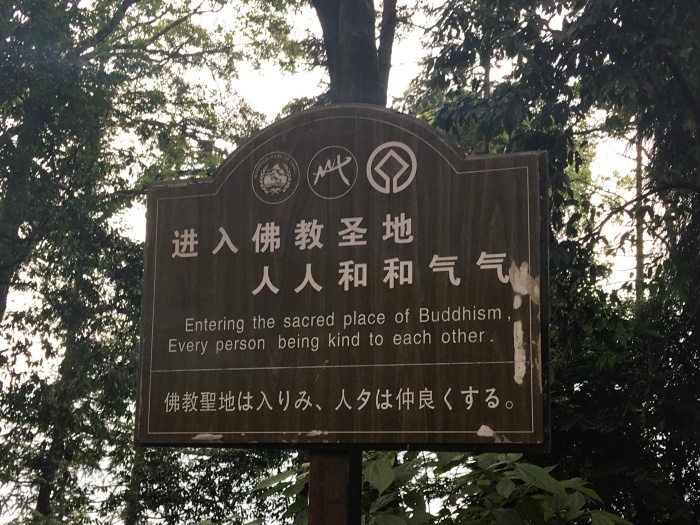
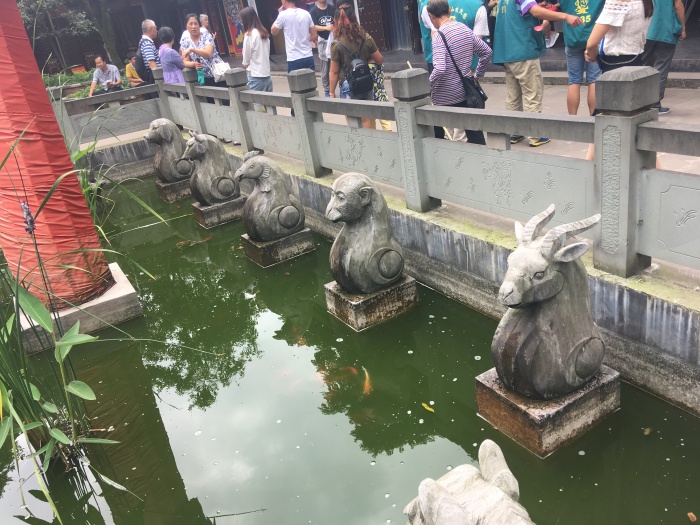
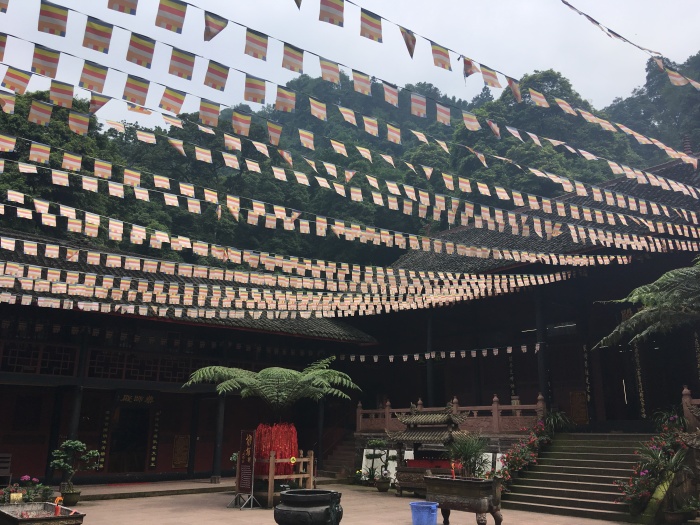
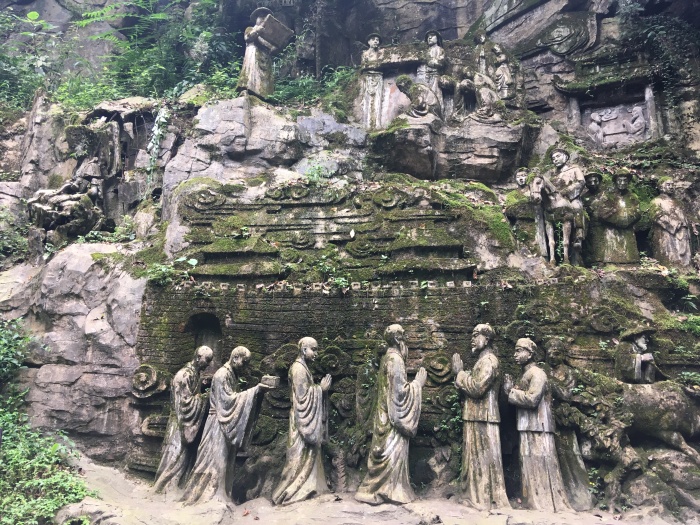
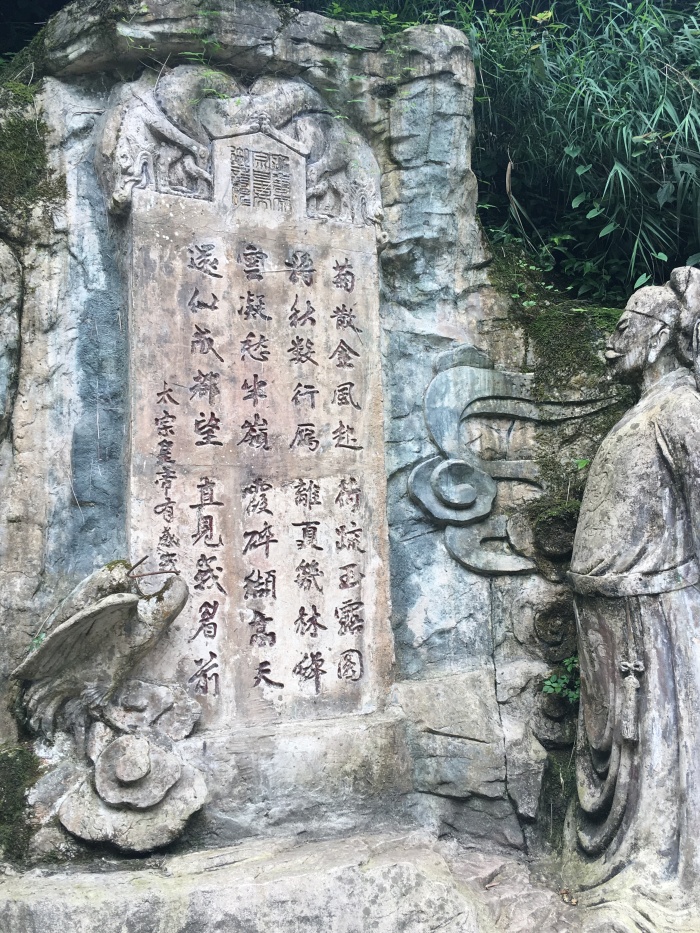

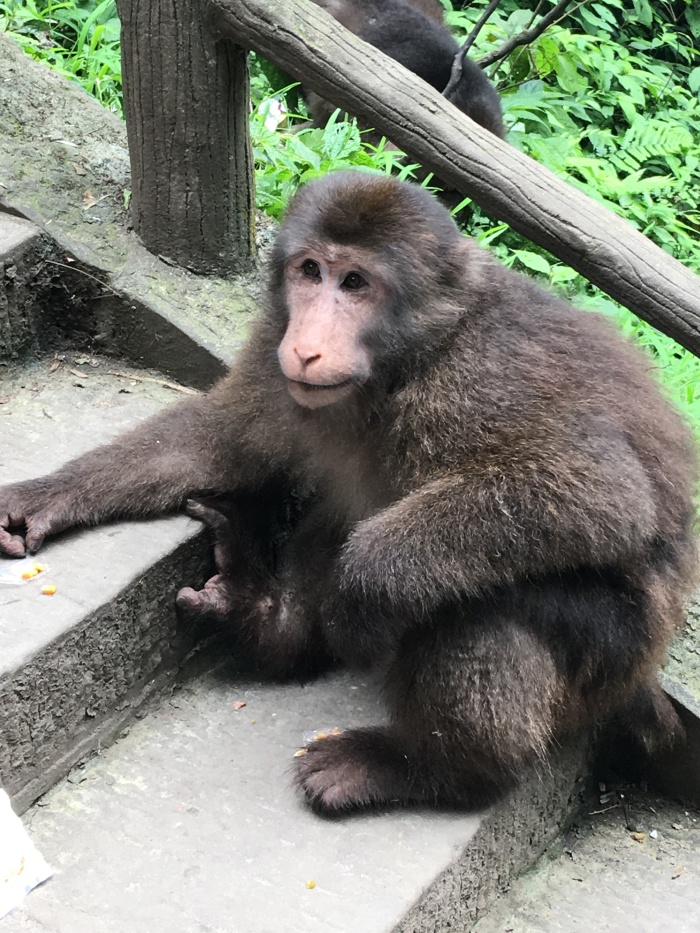
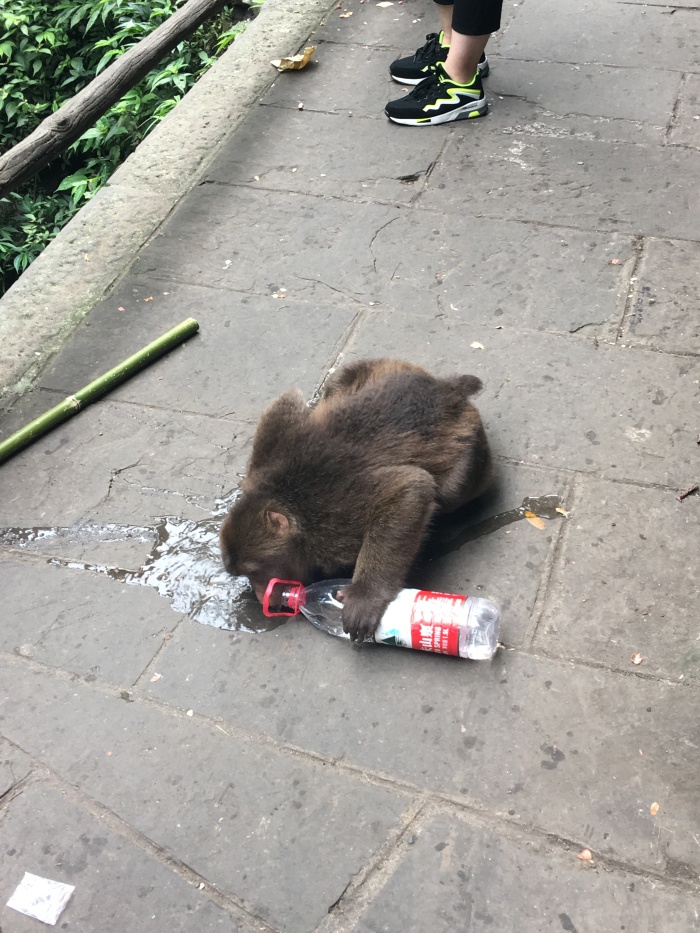
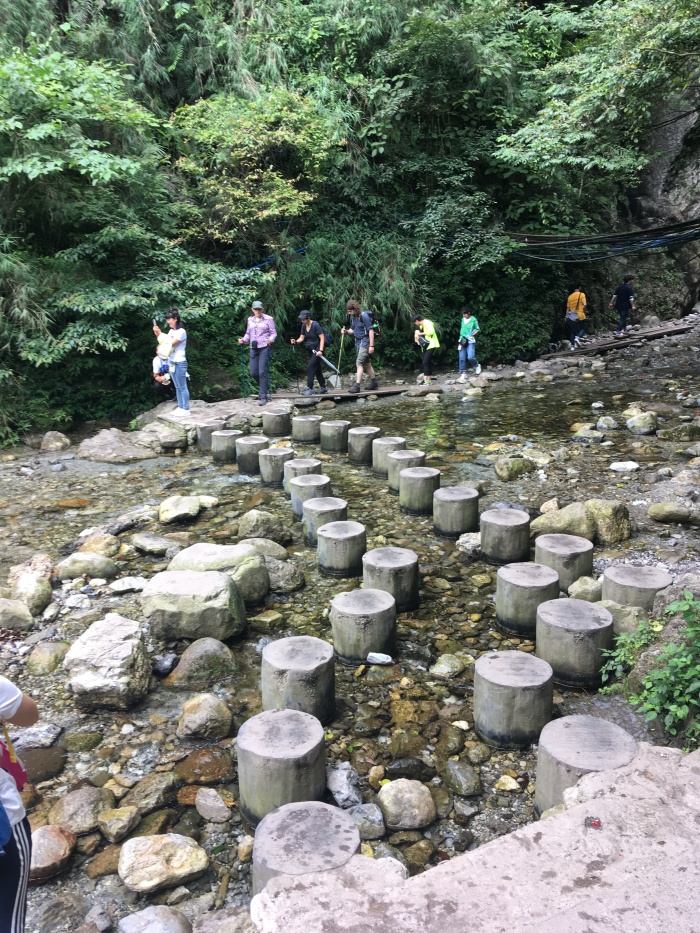
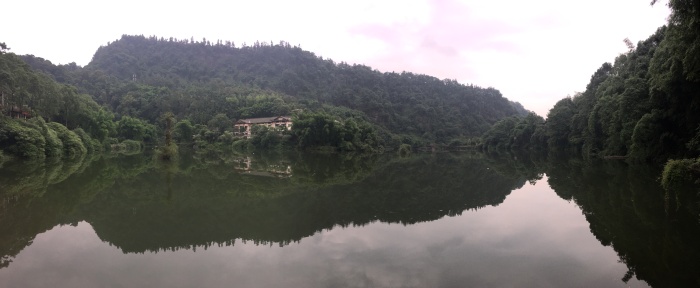
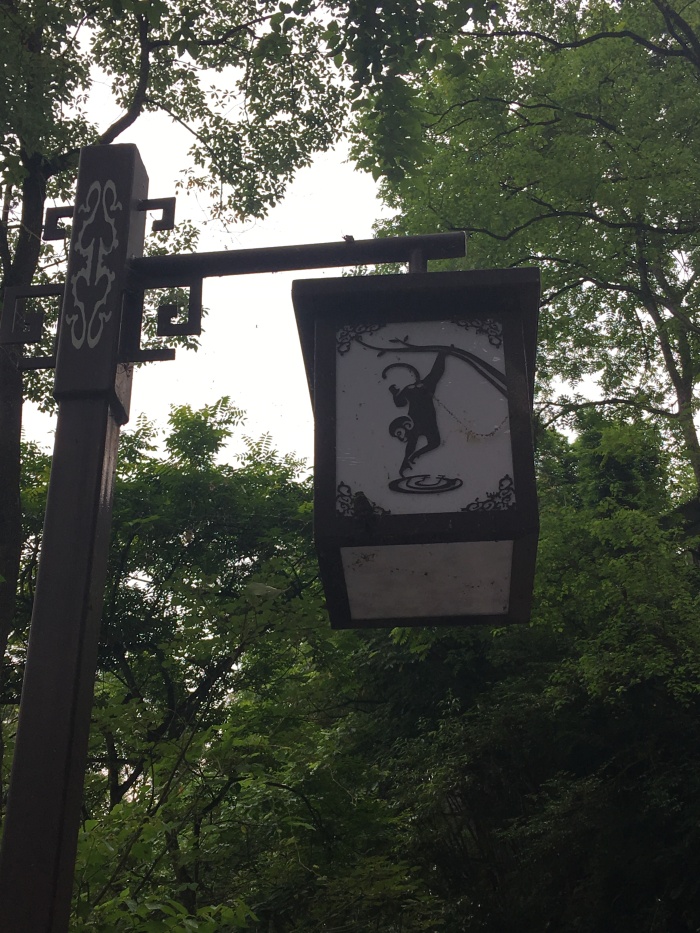
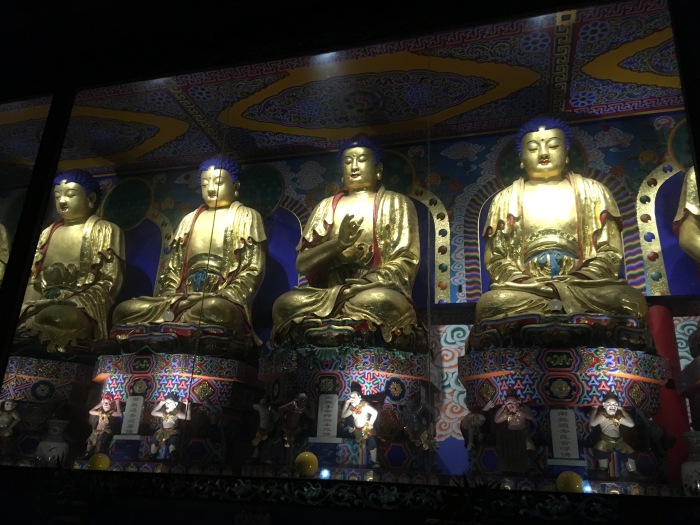 A long soak in a hot spring was a good reward. I thought that inflatable toys in the pool were much more fun, but I fear that I lost all dignity when I attempted to leap frog onto a little van called ‘Wave Attack’ (I now think that this was probably meant for small children). I jumped and went right over the darn thing ending up head first in the water and getting water up my nose. I rose out of the water to fits of giggles, but I was not going to be defeated. I managed to conquer the crocodile and the massive pink flamingo successfully in the end. With a bit of help. And many attempts.
A long soak in a hot spring was a good reward. I thought that inflatable toys in the pool were much more fun, but I fear that I lost all dignity when I attempted to leap frog onto a little van called ‘Wave Attack’ (I now think that this was probably meant for small children). I jumped and went right over the darn thing ending up head first in the water and getting water up my nose. I rose out of the water to fits of giggles, but I was not going to be defeated. I managed to conquer the crocodile and the massive pink flamingo successfully in the end. With a bit of help. And many attempts.













 Anyway, the next day was a trip to the Leshan giant Buddha. It was absolutely massive and completely hollow. It is 71 metres high and was built in the 8th century. It took a while to carve as it was started and stopped on many occasions. You could definitely see the difference in perspective from looking at the people standing at the base of the statue.
Anyway, the next day was a trip to the Leshan giant Buddha. It was absolutely massive and completely hollow. It is 71 metres high and was built in the 8th century. It took a while to carve as it was started and stopped on many occasions. You could definitely see the difference in perspective from looking at the people standing at the base of the statue.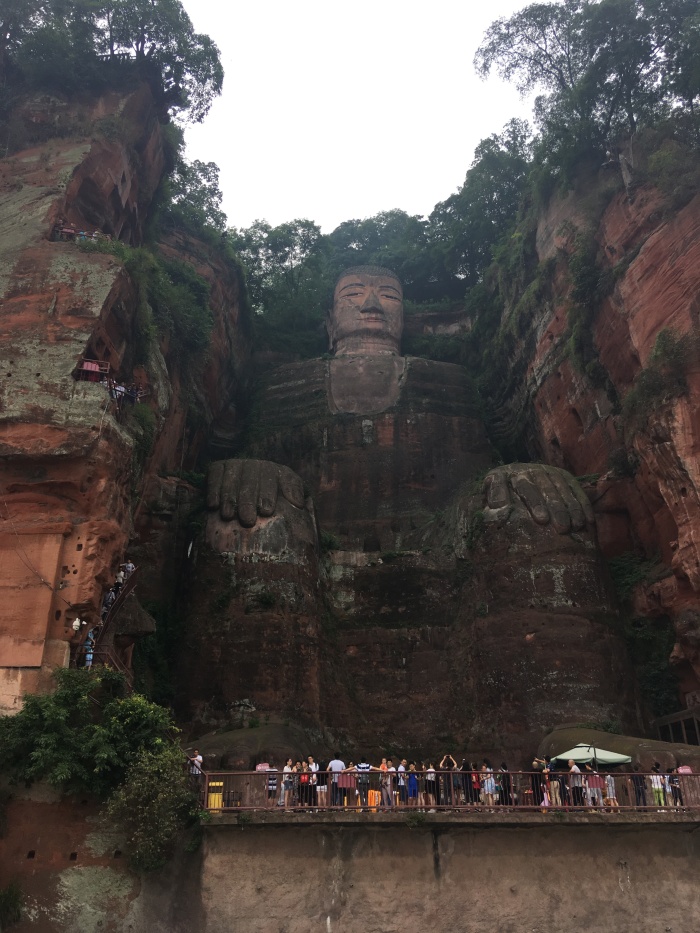
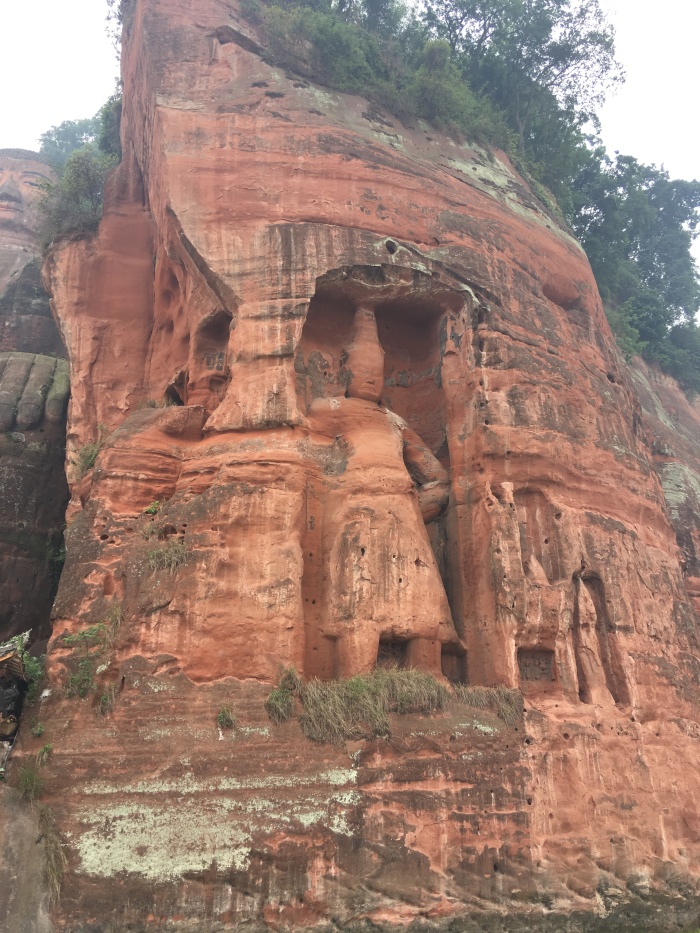 A local neighbourhood nearby was interesting to visit – there are a lot of very happy and relaxed people, compared with the citizens of the city who are rushing around and barging you out of the way. They are all still working at an old age – maybe in their 80s and 90s as there is no pension system, and if you don’t have children to help support you, then you have to continue working. This life isn’t easy, but they make the most of it – perhaps by drinking copious amounts of tea and playing mahjong. A local market was quite an eye opener – at home we are used to seeing meat packaged in supermarkets or a local farmers market being clean, but the way meat is prepared here is slightly different. For the Chinese, if they cannot see the meat being prepared, then it is not fresh for them. For me, if I see some meat on a stove in the sun on the street, I wouldn’t go near it, as I wouldn’t know how long it had been sitting around, especially with flies etc. On the plus side, one of the vendors did think I was 17, and was a bit surprised when I told them my real age. Winning!
A local neighbourhood nearby was interesting to visit – there are a lot of very happy and relaxed people, compared with the citizens of the city who are rushing around and barging you out of the way. They are all still working at an old age – maybe in their 80s and 90s as there is no pension system, and if you don’t have children to help support you, then you have to continue working. This life isn’t easy, but they make the most of it – perhaps by drinking copious amounts of tea and playing mahjong. A local market was quite an eye opener – at home we are used to seeing meat packaged in supermarkets or a local farmers market being clean, but the way meat is prepared here is slightly different. For the Chinese, if they cannot see the meat being prepared, then it is not fresh for them. For me, if I see some meat on a stove in the sun on the street, I wouldn’t go near it, as I wouldn’t know how long it had been sitting around, especially with flies etc. On the plus side, one of the vendors did think I was 17, and was a bit surprised when I told them my real age. Winning!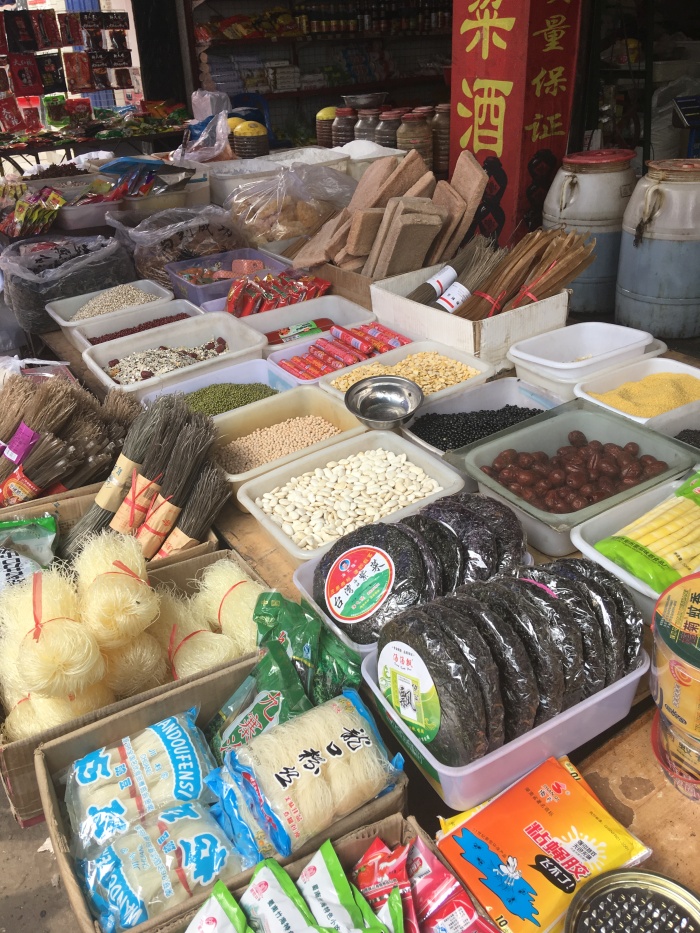
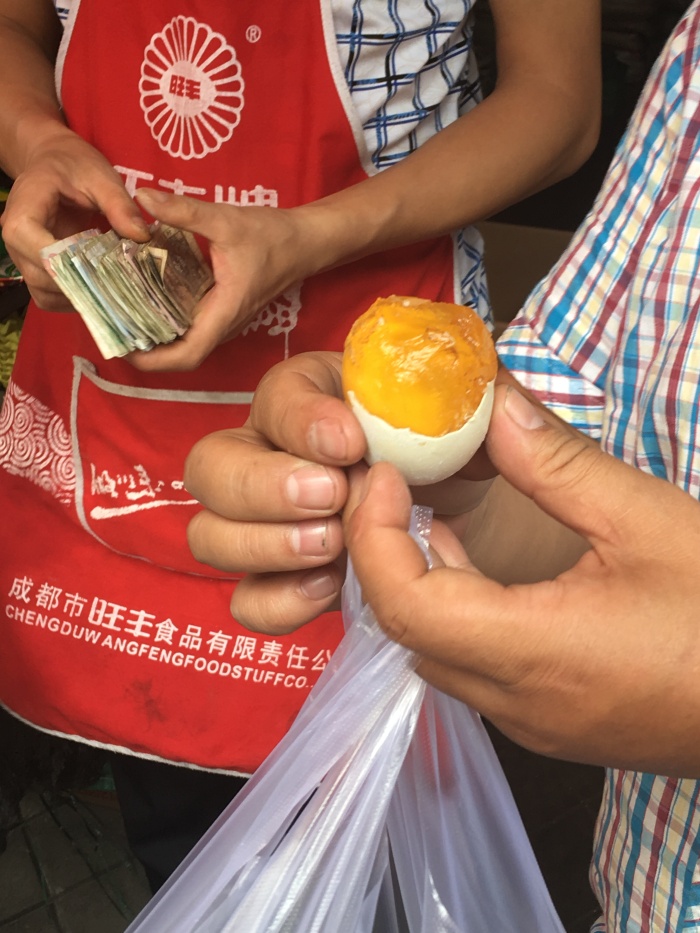
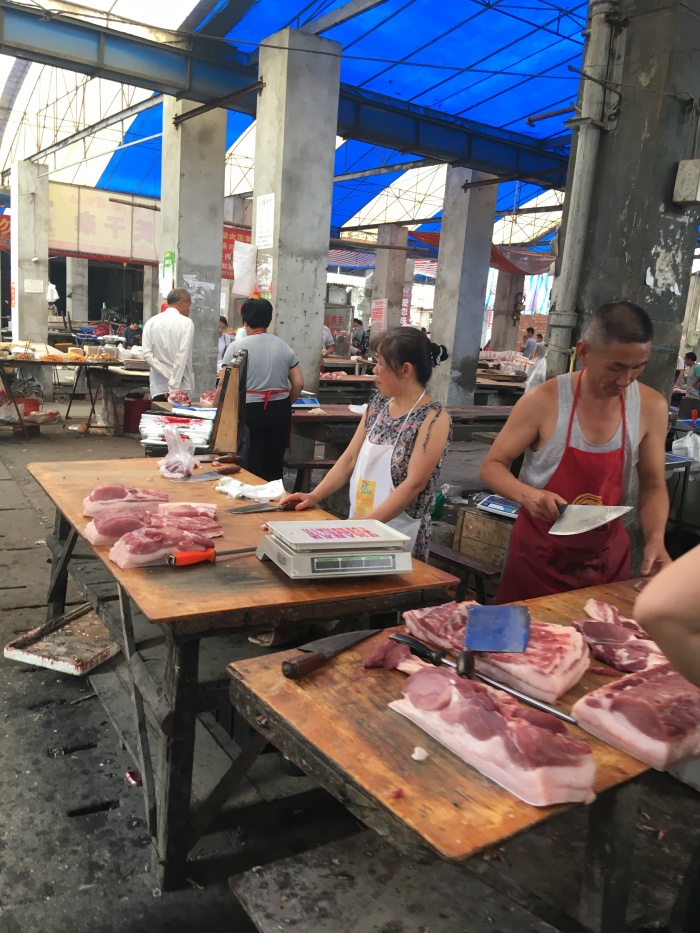
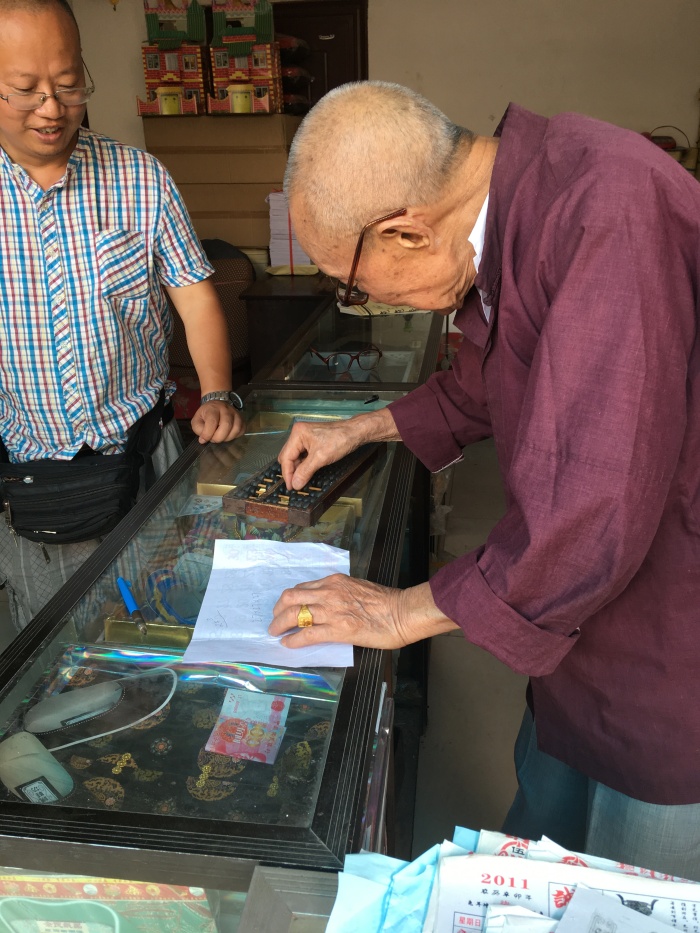
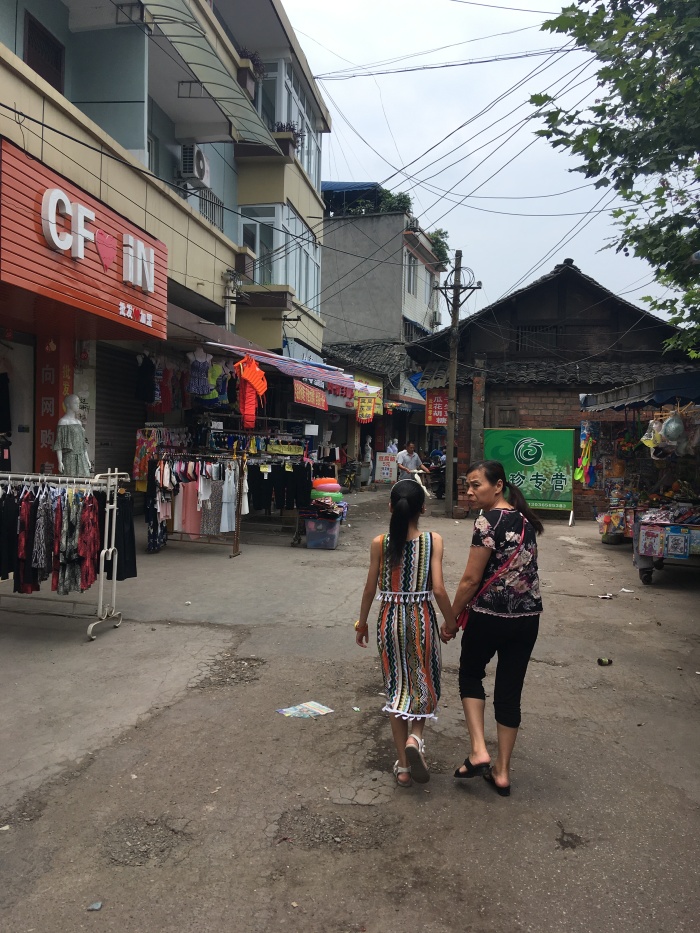
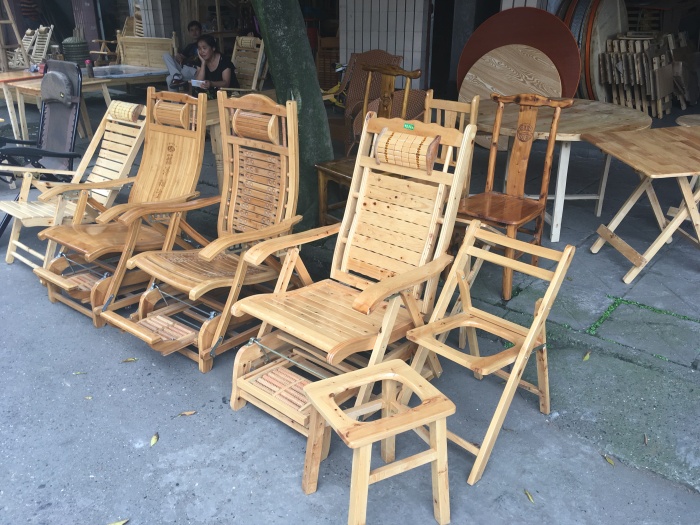








After the town, it was time to go to a local tea plantation. I even had a go at picking tea! Different varieties of tea are made from the different types of leaf from the same plant. The leaves are then dried and cooked to remove the moisture. The spring months are the best times to pick the leaves, and this is when the process becomes a bit more industrial in this plantation, rather than doing it all by hand. I was shown the traditional way of how the leaves were dried – it can take a long time! They would only sell the tea leaves after they were ready to be used as tea to wholesale companies.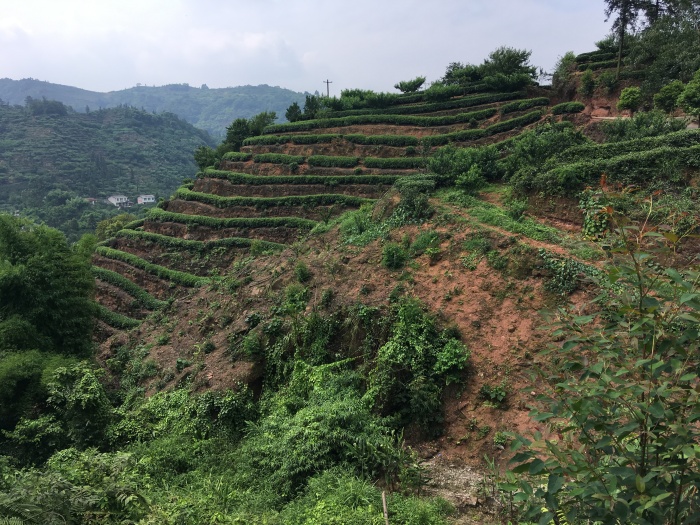
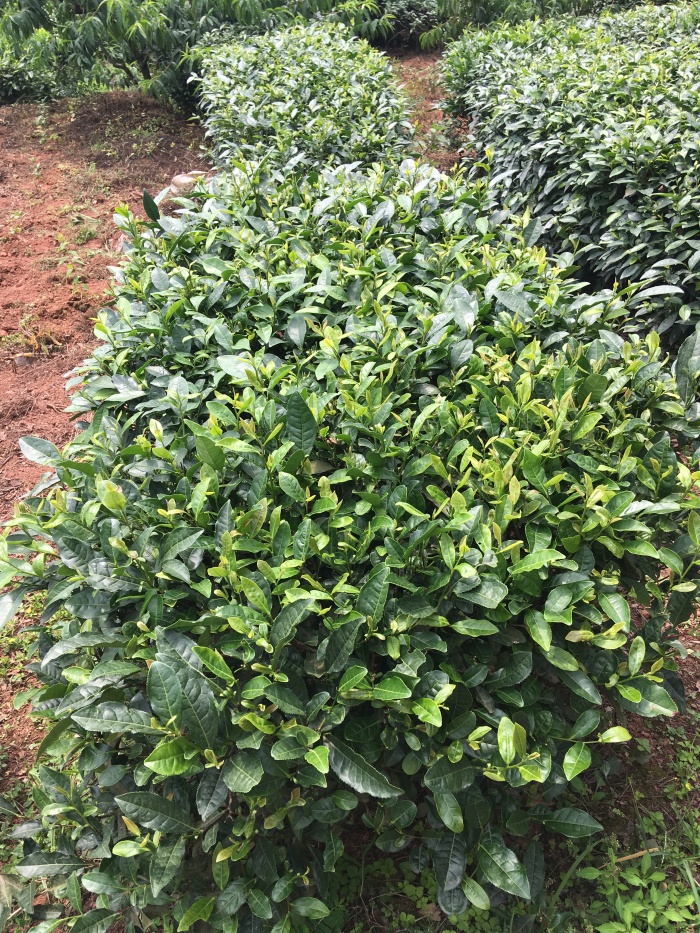
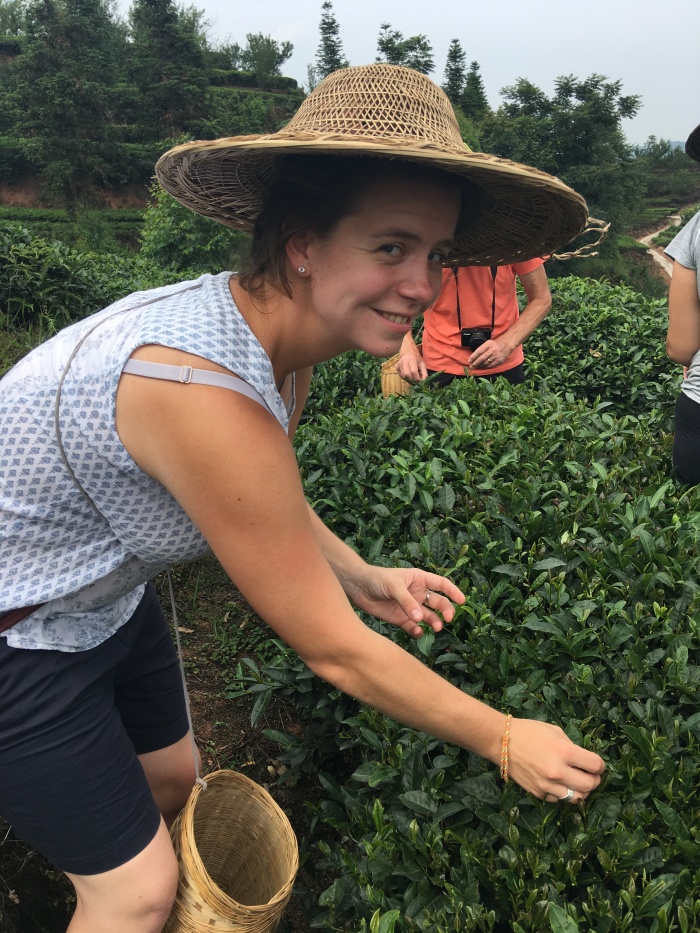
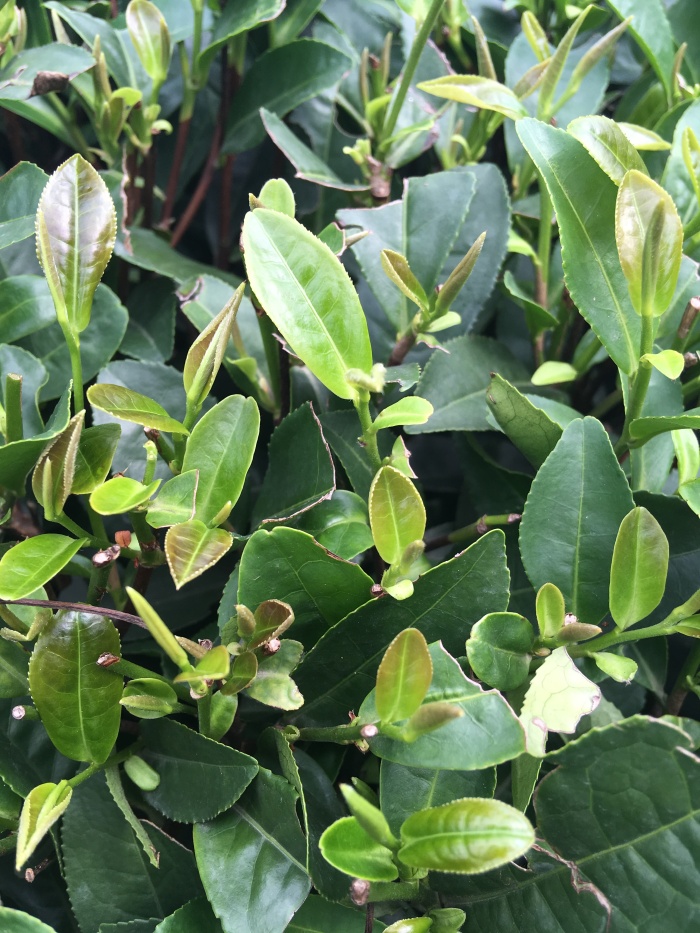
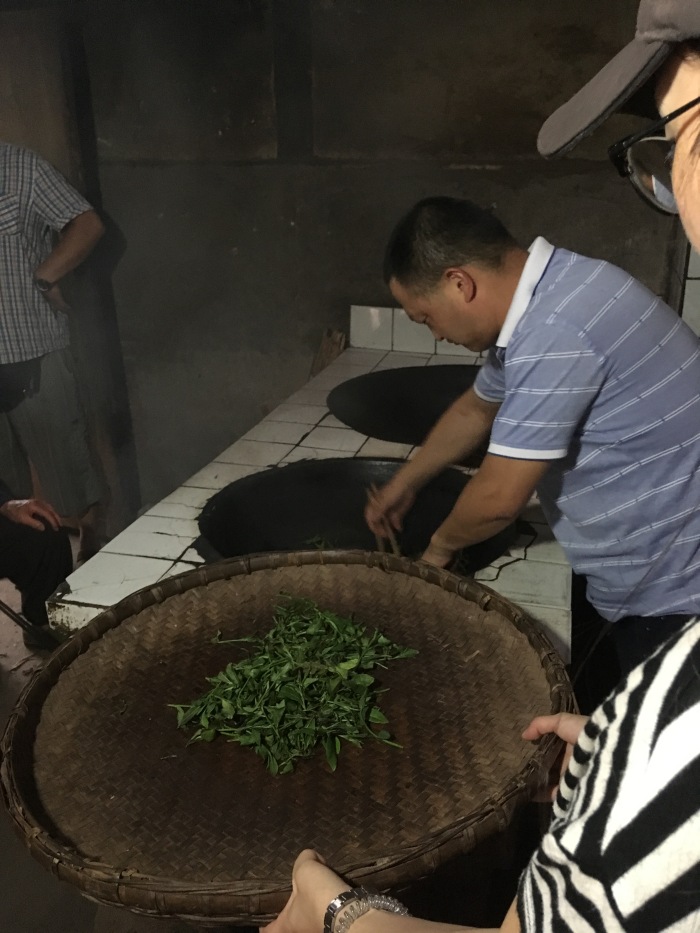
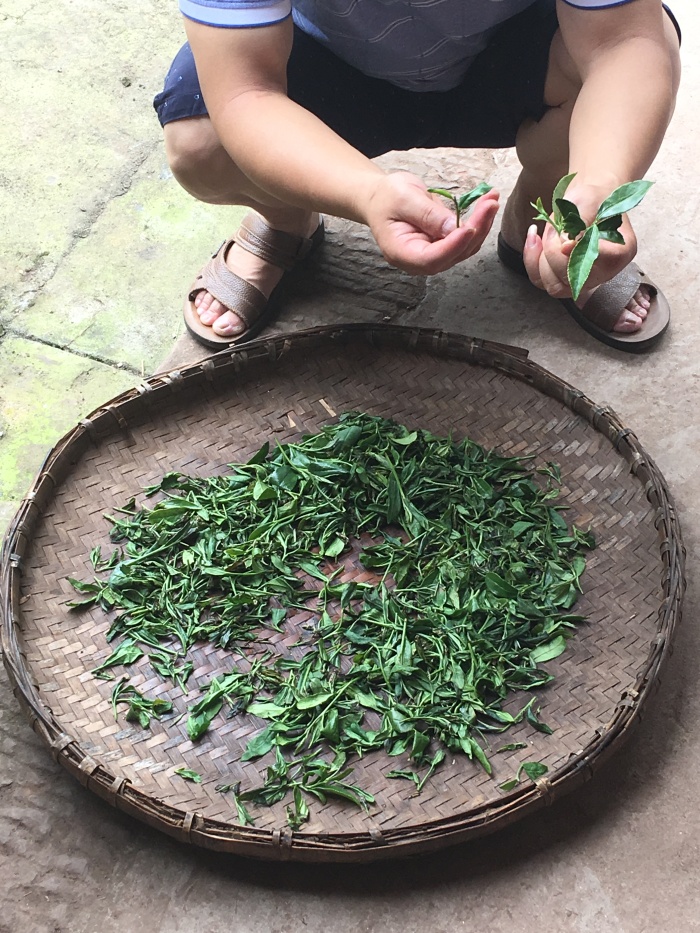 I’ve been lucky enough to taste a lot of home cooked traditional food which include different types of meat and vegetables. Rice comes with pretty much everything. I’ve never been too much of a rice person, so haven’t had too much which is never a bad thing, although I am missing my bread intake. A typical Chinese breakfast is a rice porridge with some sort of bun, but I wasn’t tempted by this. I found somewhere that actually made eggs on toast, so ate here three mornings in a row. Bread isn’t a common food here – I was starting to miss lovely bread.
I’ve been lucky enough to taste a lot of home cooked traditional food which include different types of meat and vegetables. Rice comes with pretty much everything. I’ve never been too much of a rice person, so haven’t had too much which is never a bad thing, although I am missing my bread intake. A typical Chinese breakfast is a rice porridge with some sort of bun, but I wasn’t tempted by this. I found somewhere that actually made eggs on toast, so ate here three mornings in a row. Bread isn’t a common food here – I was starting to miss lovely bread.
Next stop: Chengdu on the bullet train. Arrived early afternoon and it was time to sample a Chinese hotpot which is similar to fondue, but you dip different meat and veg into a simmering broth and allow it to cook. You could choose the level of spicy for the broth, but I think the heat can get quite strong! It was good to explore a small section of this massive city for a bit. A trip down Zhaixiangzi Alley was nice – there were lots of little independent shops and tea rooms, and it looked as though there were several places that put on shows. Then it was off to see the pandas! They were amazing and definitely played up to their audience. A few small ones ended up rolling around. I was actually quite glad that I had bought a selfie stick, as this was the first time I had properly used it to see over heads as there were a lot of people and it was quite difficult to get to a good spot. Chengdu is famous for its panda conservation.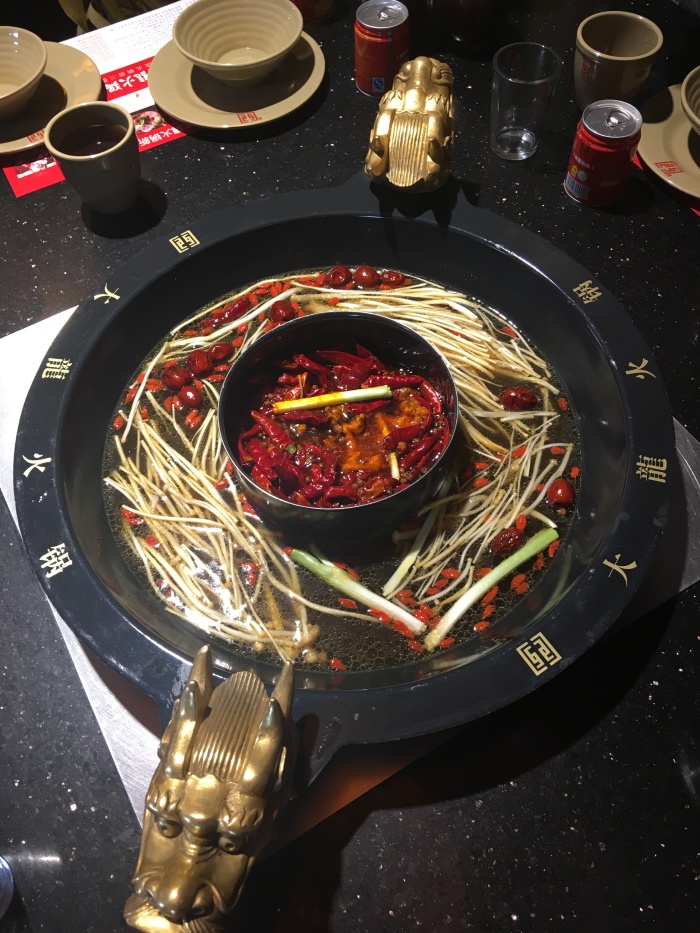

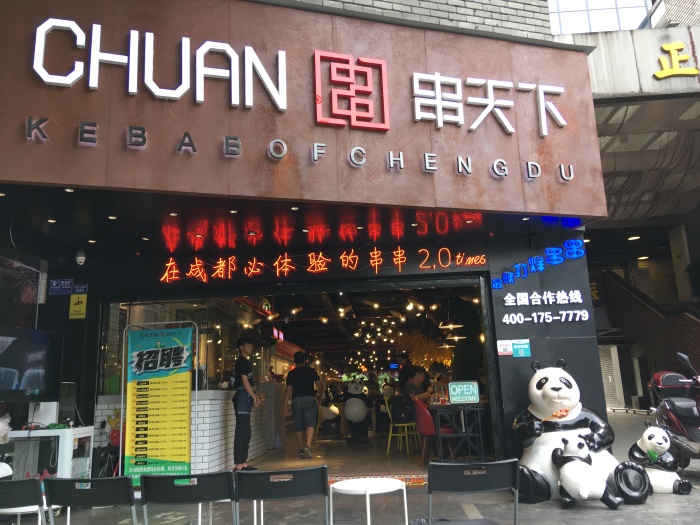
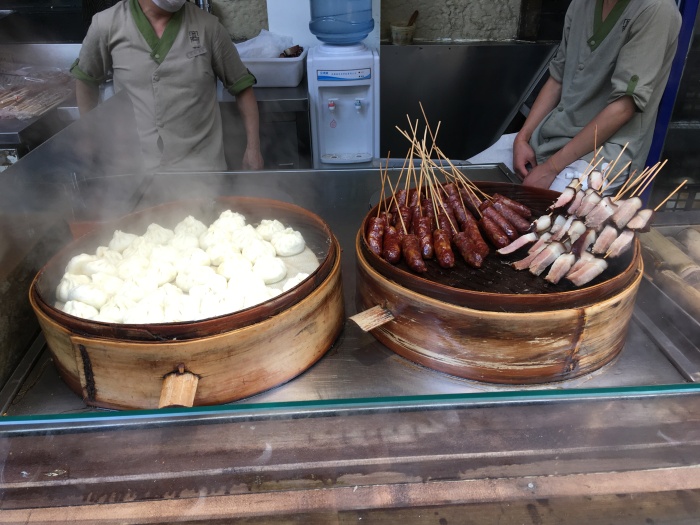

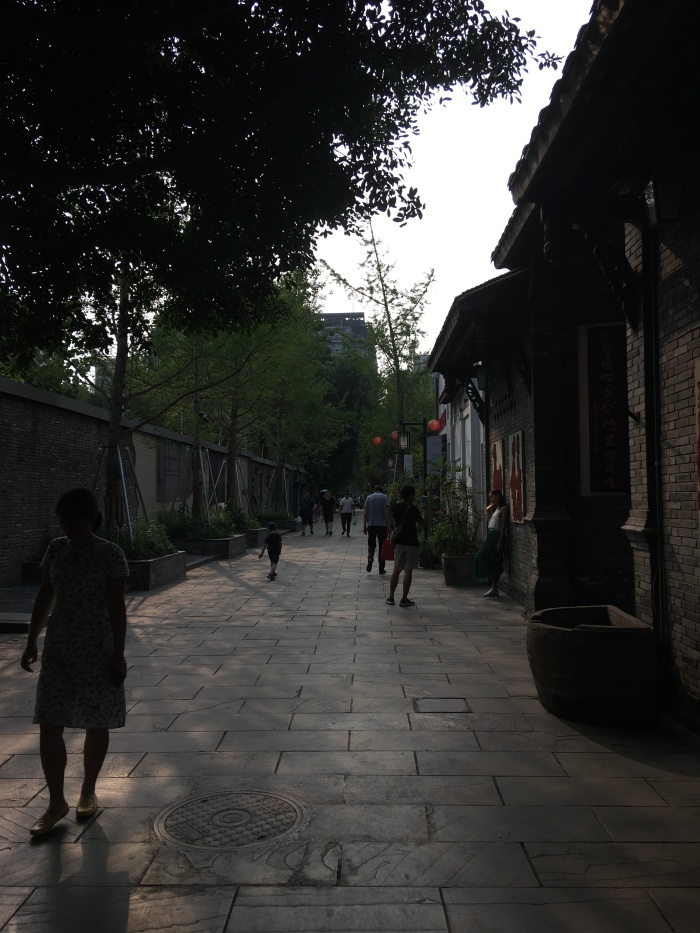
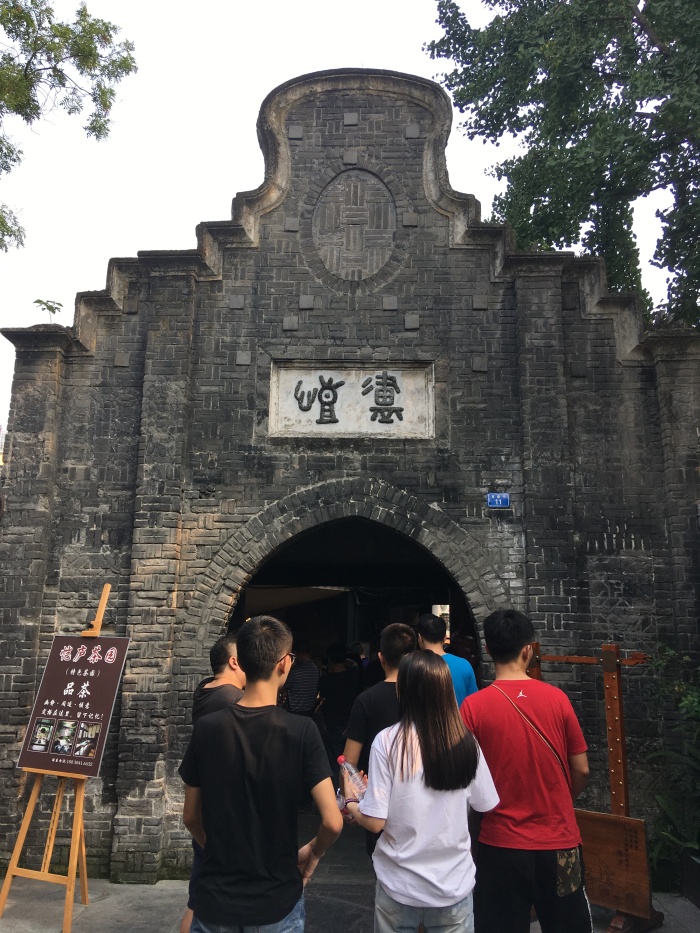
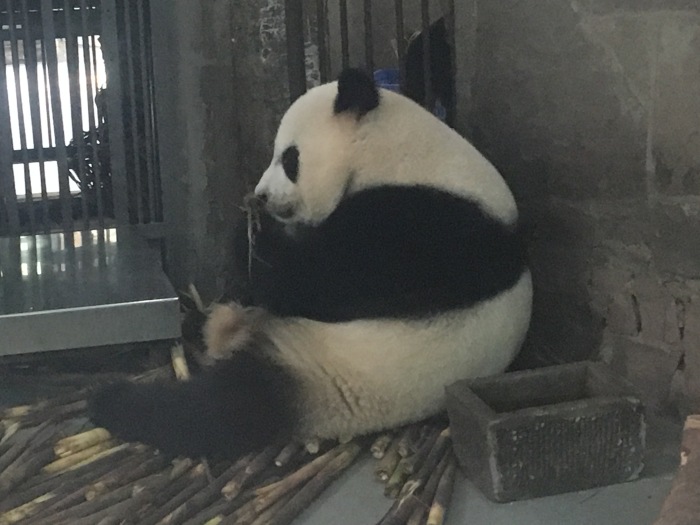

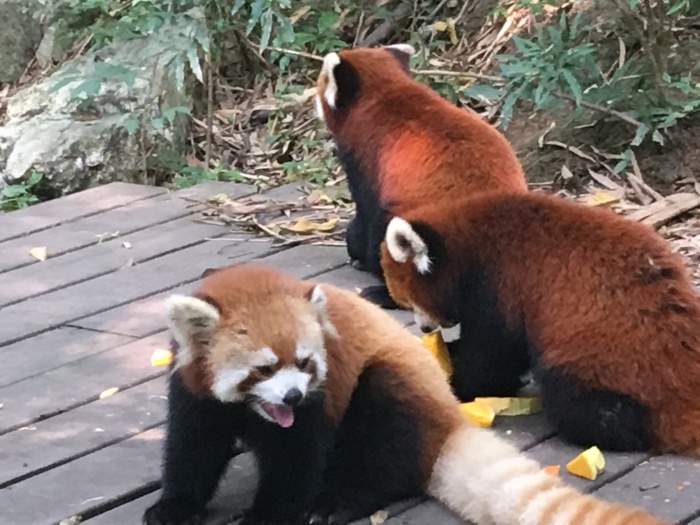
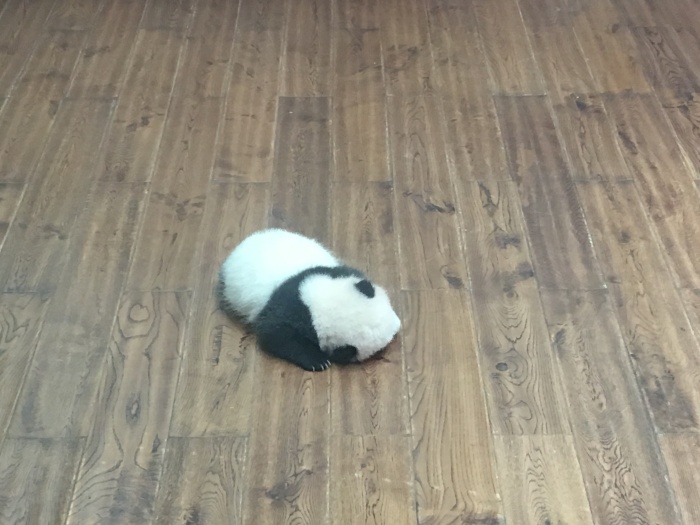 It was time to set sail on board a boat down the Yangtze River from Chongqing to Yichang. I was prepared for basic accommodation, possibly dormitory style cabins and shared facilities – almost like the sleeper trains but was pleasantly surprised with what I found. Nice cabins and own bathroom, along with some decent food and a deck on top. The Yangtze is the third longest river in the world, after the Amazon and the Nile. It isn’t actually called the Yangtze in China – this name was given to it by a European who first came across it in the town of Yangtze, but the Chinese translation means ‘long river’. I got off to see the Fengdu Ghost city on Ming mountain. It was believed that your soul or spirit would come here to be judged when you die, depending on what sort of a person you have been in this life. A series of tests would have been done to see if you were a good person or not – one of these was crossing over a bridge in odd steps, another balancing your foot on a small metal stone for a number of seconds. Of course, I passed all the tests, so no need to worry about going to hell or coming back as a slug in the next life! Some parts had been reconstructed after the earthquake in 2008, but the Temple of Hell at the top is still in its original state and had been built in 1666. The whole city is almost 2000 years old.
It was time to set sail on board a boat down the Yangtze River from Chongqing to Yichang. I was prepared for basic accommodation, possibly dormitory style cabins and shared facilities – almost like the sleeper trains but was pleasantly surprised with what I found. Nice cabins and own bathroom, along with some decent food and a deck on top. The Yangtze is the third longest river in the world, after the Amazon and the Nile. It isn’t actually called the Yangtze in China – this name was given to it by a European who first came across it in the town of Yangtze, but the Chinese translation means ‘long river’. I got off to see the Fengdu Ghost city on Ming mountain. It was believed that your soul or spirit would come here to be judged when you die, depending on what sort of a person you have been in this life. A series of tests would have been done to see if you were a good person or not – one of these was crossing over a bridge in odd steps, another balancing your foot on a small metal stone for a number of seconds. Of course, I passed all the tests, so no need to worry about going to hell or coming back as a slug in the next life! Some parts had been reconstructed after the earthquake in 2008, but the Temple of Hell at the top is still in its original state and had been built in 1666. The whole city is almost 2000 years old.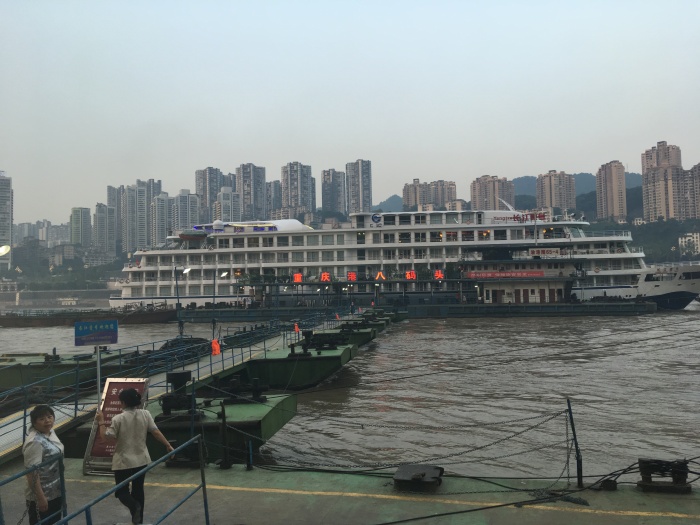
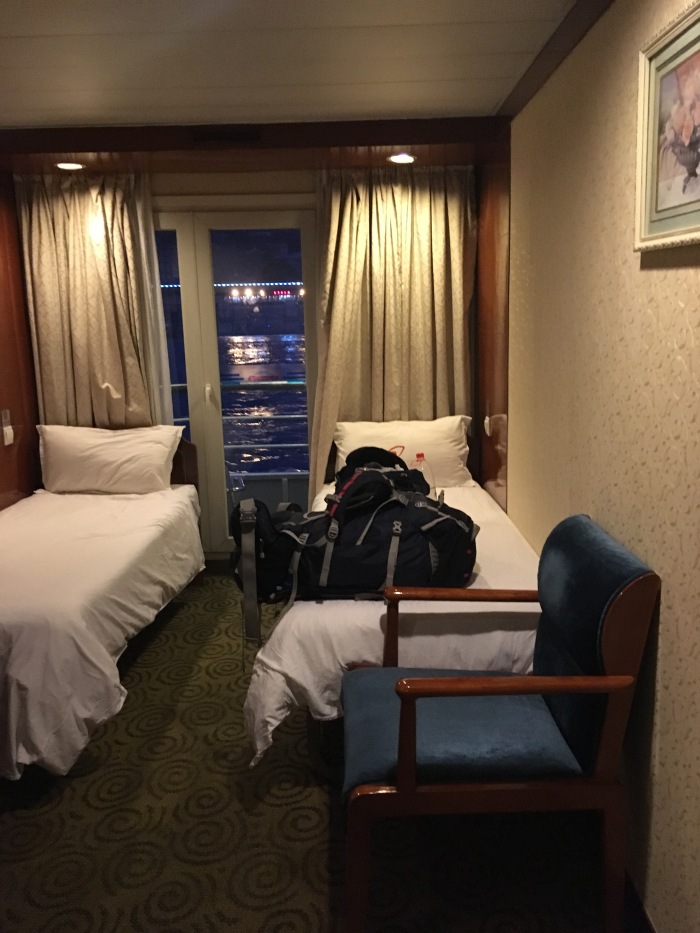
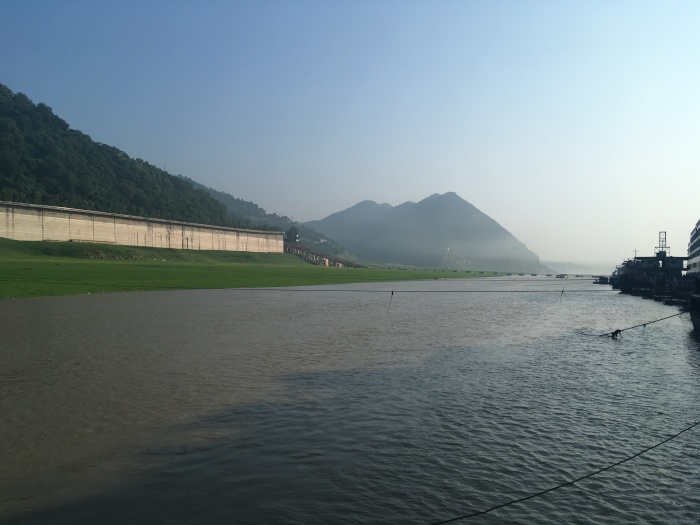

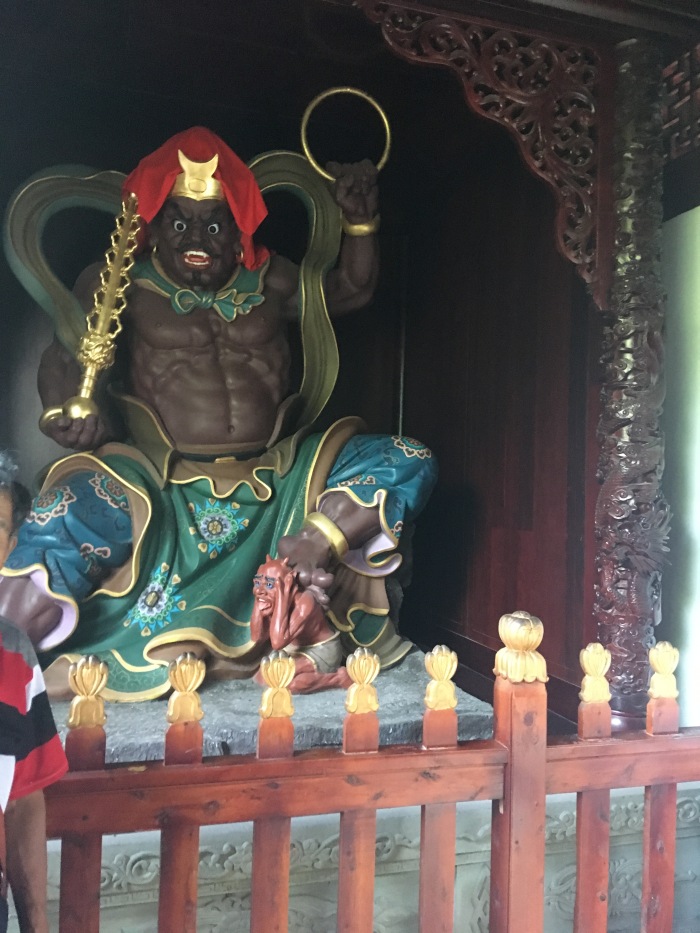
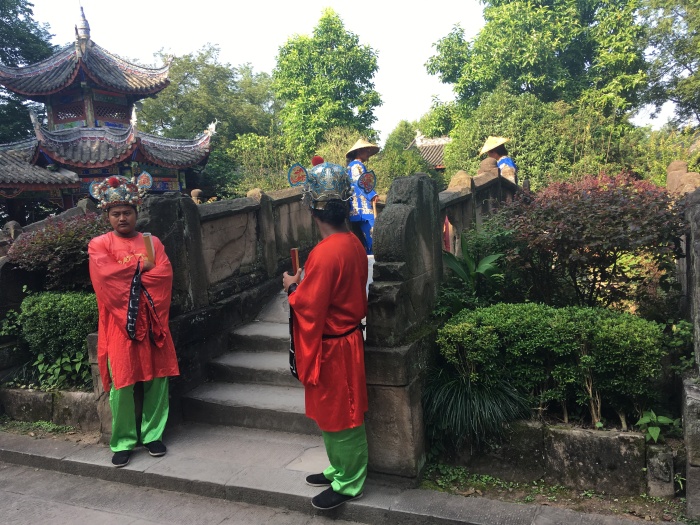
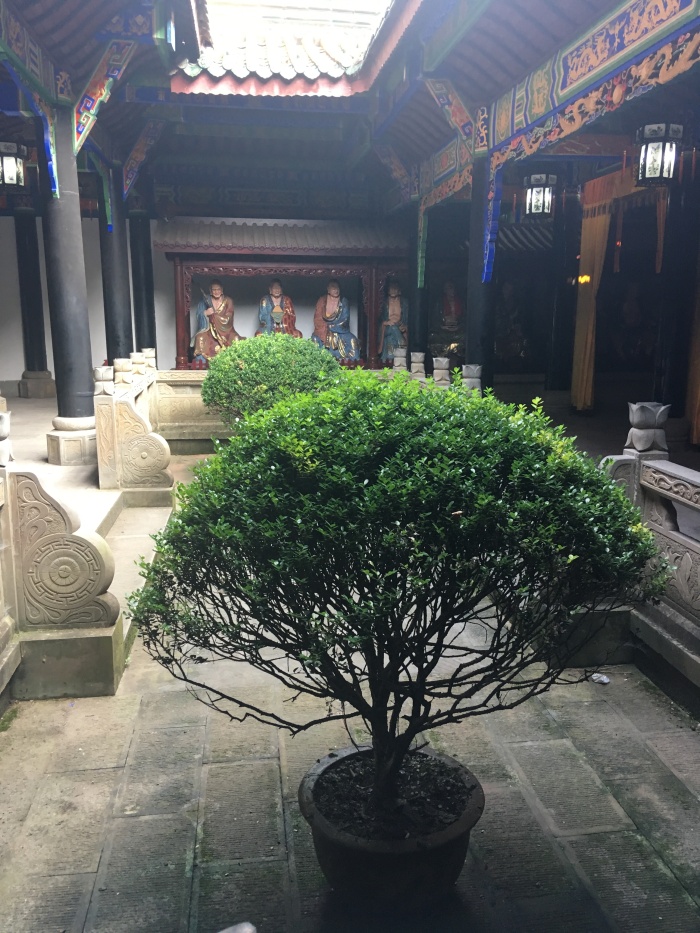
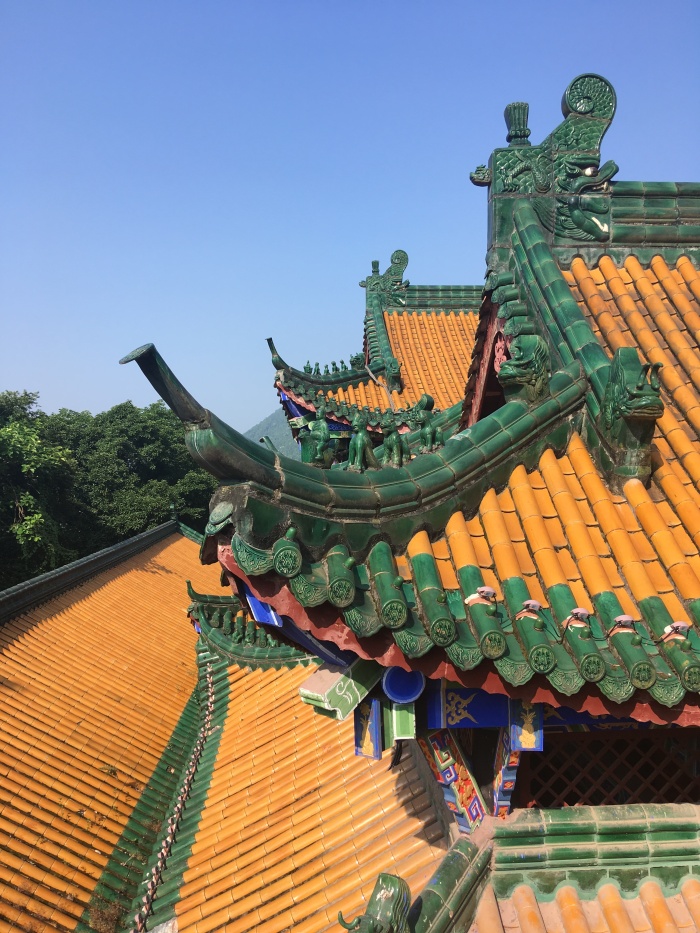
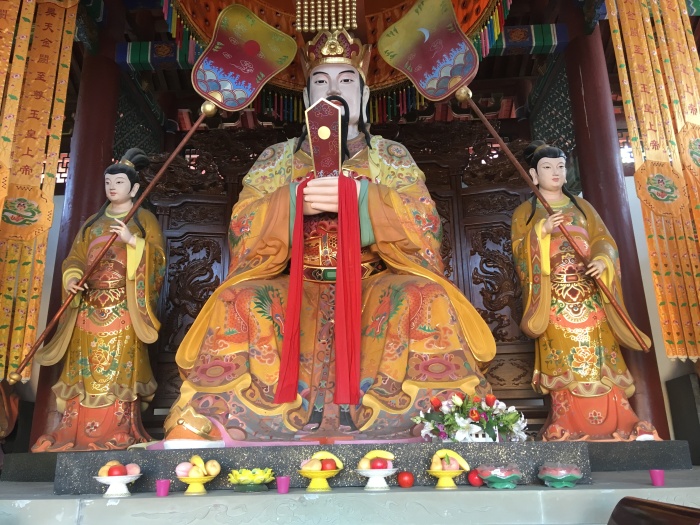 Going up the Yangtze continued through the three gorges. The river is quite murky in parts and this is something to do with the sediment collection. Went up Shennv Stream – this was shallow in comparison to the Yangtze and the water was a lot clearer. Surrounded by high cliffs both the Yangtze and Shennv Stream have varied climbing mountains either side where different names given to certain rock edges which are meant to look like things e.g. a seated Buddha. The water mark is clearly visible where the face has disintegrated and no trees grow. Exploring the Three Gorges Dam was amazing. It is the biggest one in the world, but only supplies electricity to 3% of China’s population – which is still a lot of people, but not as many as you’d think.
Going up the Yangtze continued through the three gorges. The river is quite murky in parts and this is something to do with the sediment collection. Went up Shennv Stream – this was shallow in comparison to the Yangtze and the water was a lot clearer. Surrounded by high cliffs both the Yangtze and Shennv Stream have varied climbing mountains either side where different names given to certain rock edges which are meant to look like things e.g. a seated Buddha. The water mark is clearly visible where the face has disintegrated and no trees grow. Exploring the Three Gorges Dam was amazing. It is the biggest one in the world, but only supplies electricity to 3% of China’s population – which is still a lot of people, but not as many as you’d think. 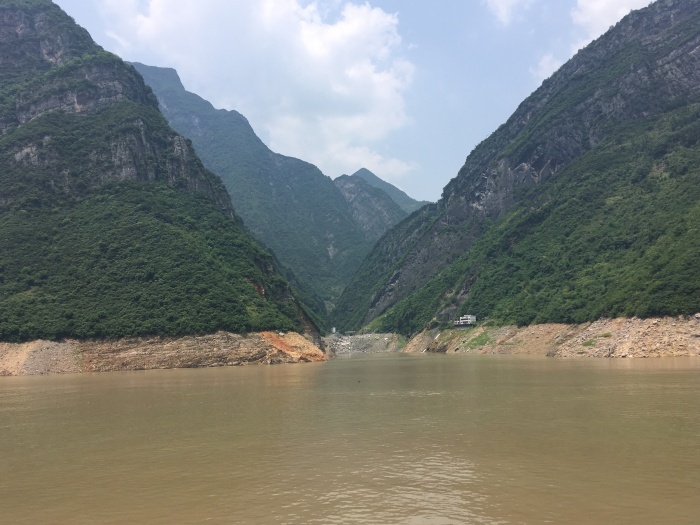
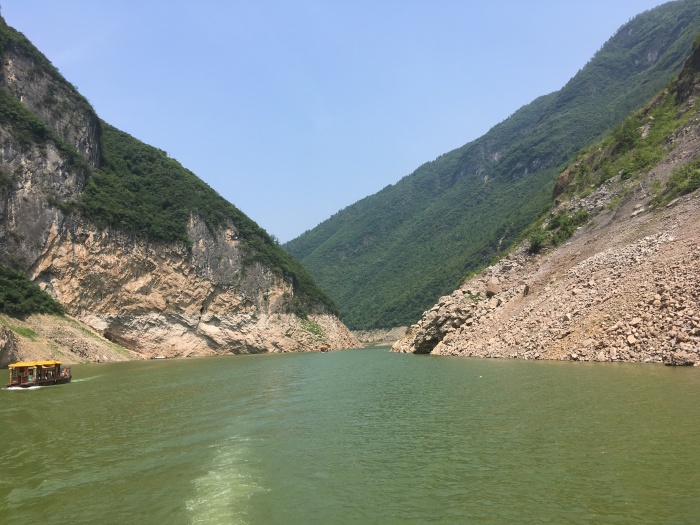
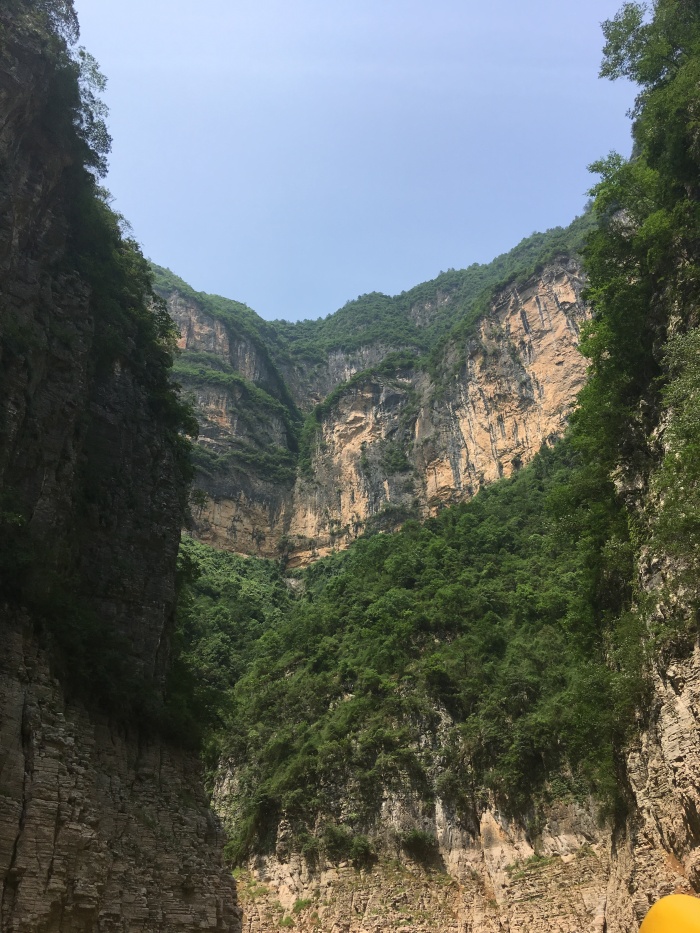
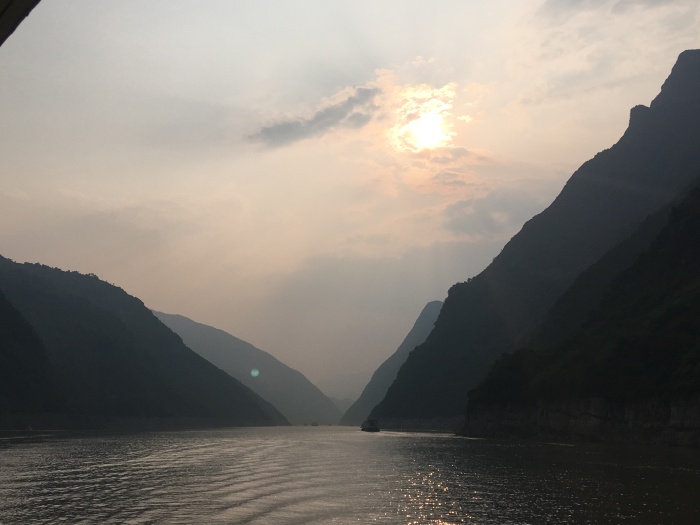
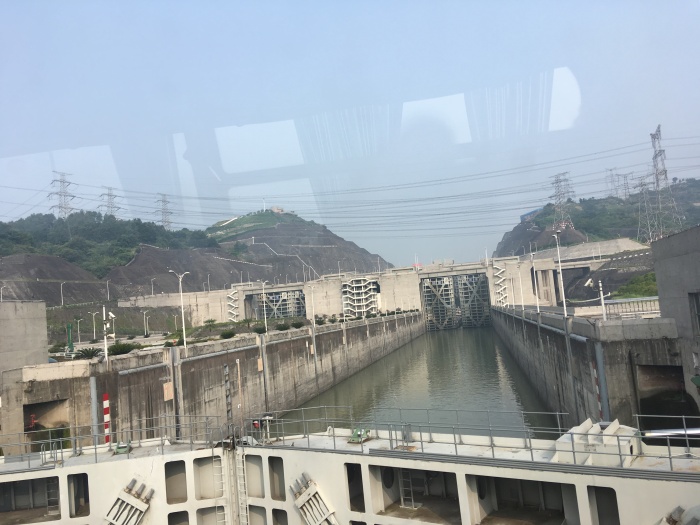
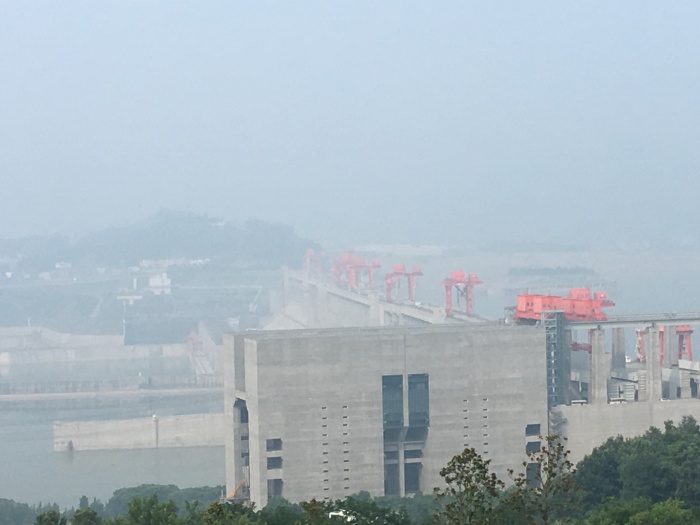








Off on another overnight train (only 16 hours this time, and I was armed with the Chinese version of a Pot Noodle which took me back to university days) to Yangshuo – this is a little backpackers town which had only been hit by torrential rain just prior to arriving, The scale of the floods were pretty bad – small businesses have lost a lot of stock and were badly damaged. While the government will send help to clear the streets, the businesses often do not have insurance. The chaos in the streets ensued; people were trying to dry out anything they could. Electricity was scarce. Such devastation was difficult to comprehend in parts, and vendors were desperate to sell anything they could to make some money to restore their business. The power and strength of nature is not easy to deal with.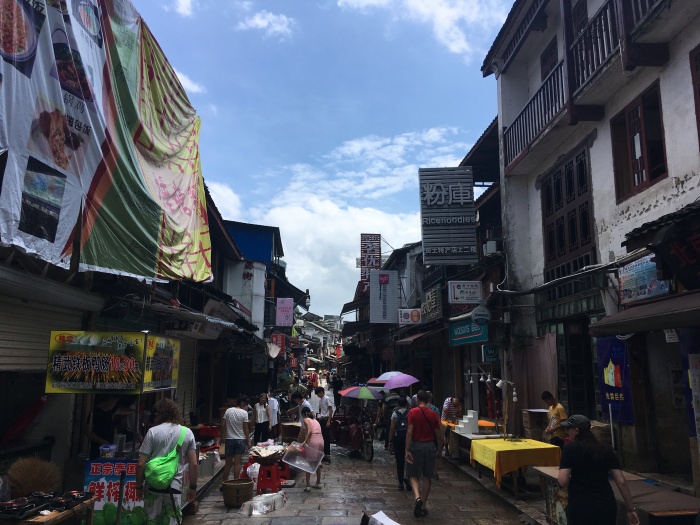
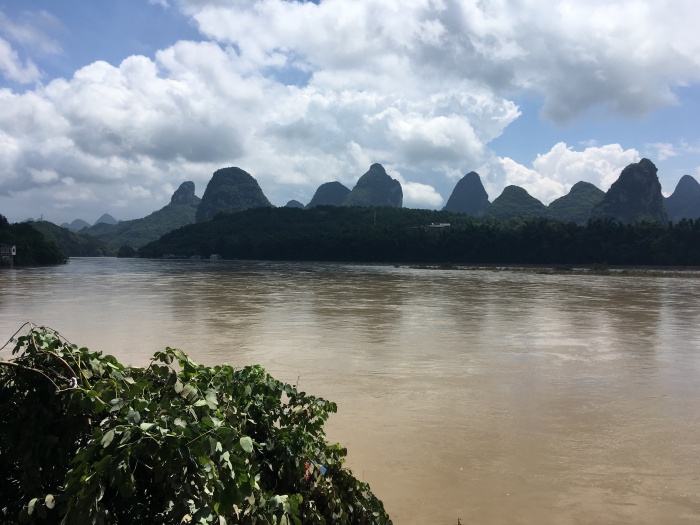
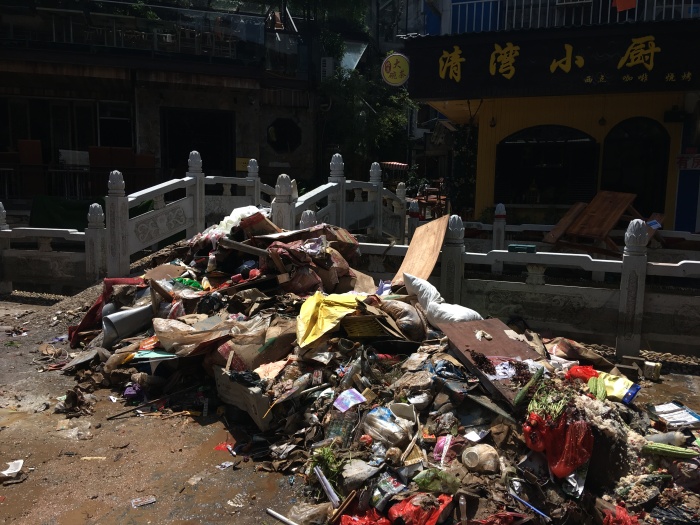
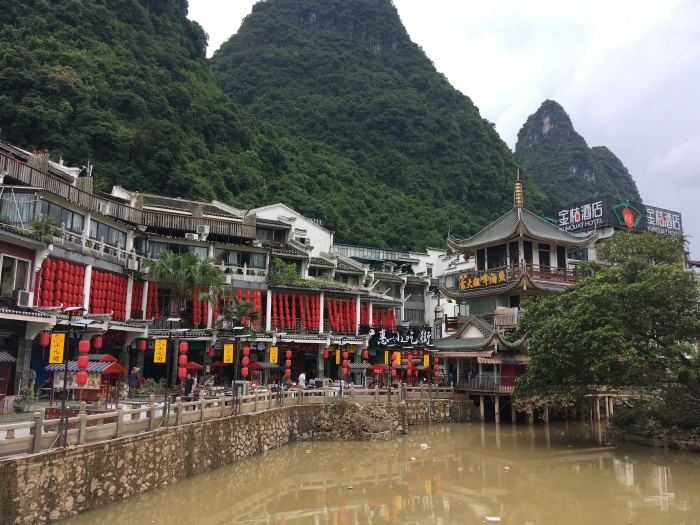
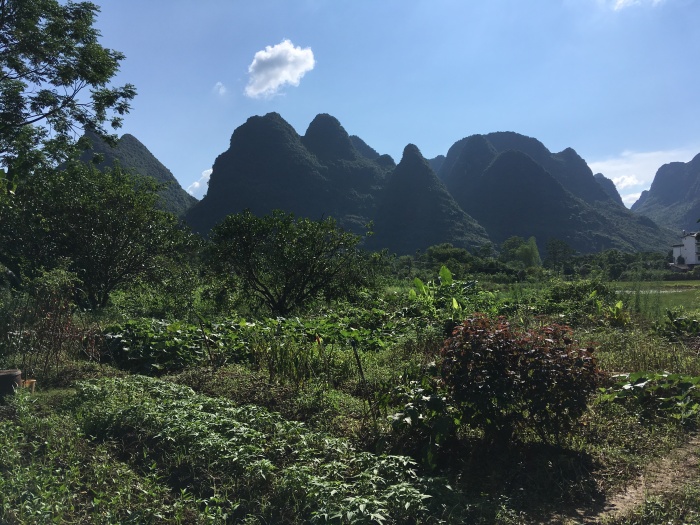
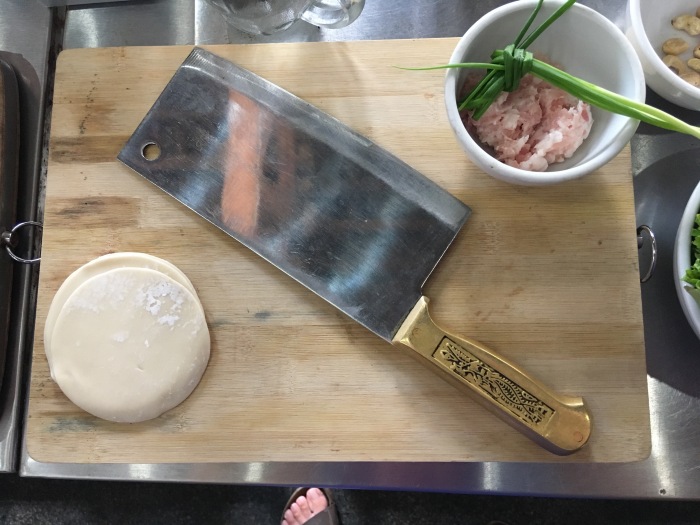
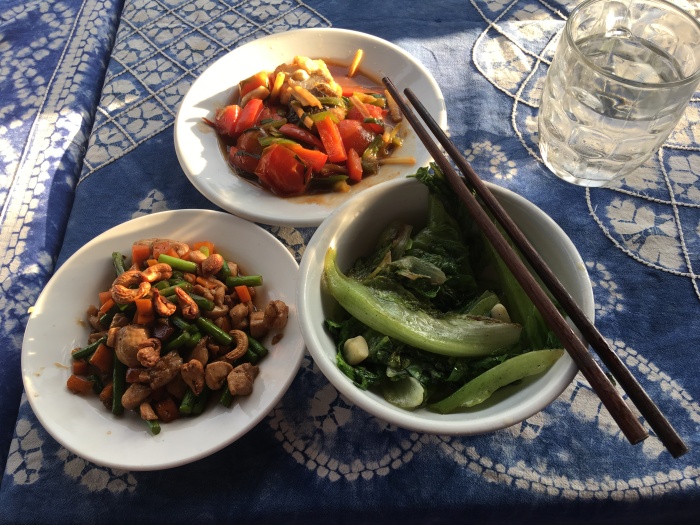
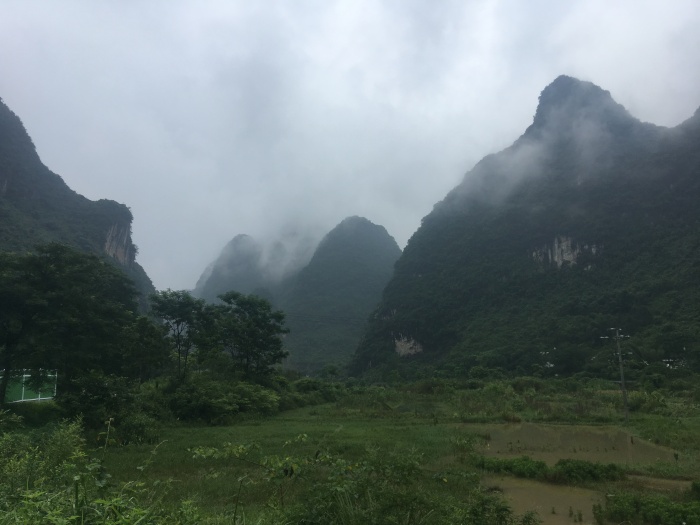
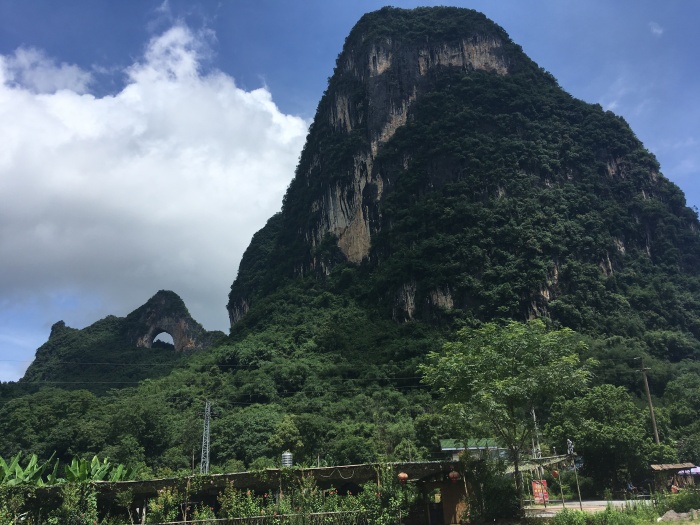
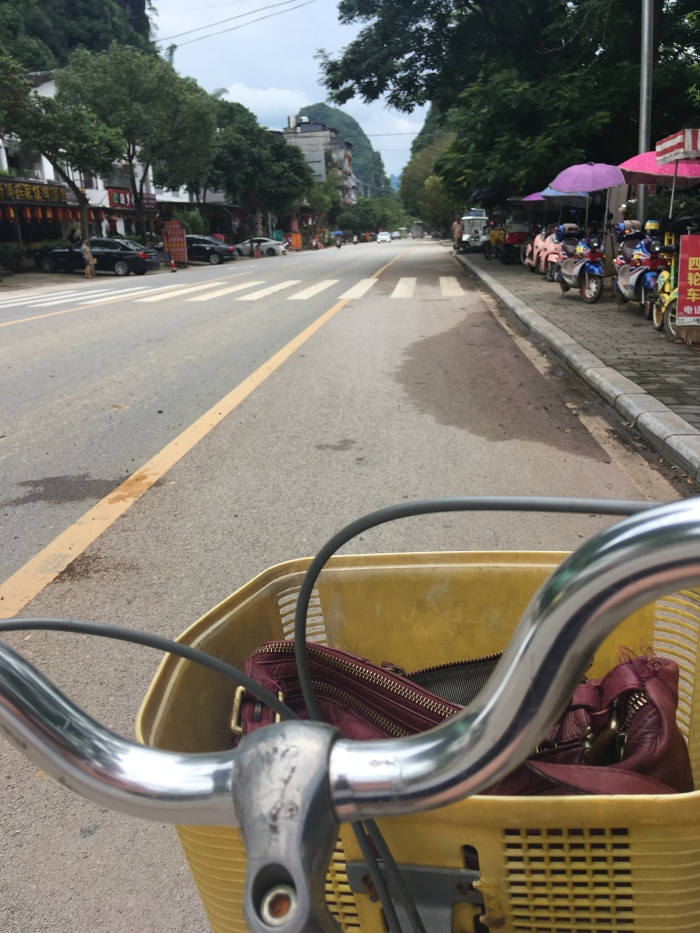 I did manage to attend a cookery class, and also cycled around the local area (although parts were shut off due to collapsed trees etc). The scenery is stunning. It was still very humid – I walked ten minutes and I was already dissolving into human prune situation. Factor 50 was not enough either. It was nice to cycle along some lovely roads with mountains either side, and lots of fields. The weather brightened up, so this made cycling rather warm. Navigating the roads (and being on the wrong side) was interesting, but the speed of the traffic was quite slow on the main roads – no helmets got given though due to the storage place being flooded. But it was definitely a memorable way to end the three week trip in China – a country full of different landscape and culture. Finished by entering into Hong Kong for a day – reminded me of home!
I did manage to attend a cookery class, and also cycled around the local area (although parts were shut off due to collapsed trees etc). The scenery is stunning. It was still very humid – I walked ten minutes and I was already dissolving into human prune situation. Factor 50 was not enough either. It was nice to cycle along some lovely roads with mountains either side, and lots of fields. The weather brightened up, so this made cycling rather warm. Navigating the roads (and being on the wrong side) was interesting, but the speed of the traffic was quite slow on the main roads – no helmets got given though due to the storage place being flooded. But it was definitely a memorable way to end the three week trip in China – a country full of different landscape and culture. Finished by entering into Hong Kong for a day – reminded me of home!




 Things I have learnt in China
Things I have learnt in China
- Don’t bother indicating when you drive, just honk the car horn and other drivers will either move or just pay attention. Weaving in and out of lanes, very heavy breaking and a lot of noise is how I would describe life on a Chinese road.
- Don’t try and get on inflatable toys in a pool, if you know what is good for you, and you want to retain some sort of dignity.
- Making a horrific noise to clear your throat, and then spitting anywhere is acceptable.
- Wine is hardly sold in glasses. Only bottles.
- Drinking tea all the time and smoking leads to a healthy, long life.
- Don’t let the locals do all the barging. Lose all Britishness and don’t bother queuing – act as though you are constantly trying to get to the bar.
- Helmets are not common on the roads.
- Although I am a tourist, I am also a tourist attraction – have had many photos taken with Chinese people, either with or without my permission. The ‘stealth selfie’ photo is fairly popular, where people are not trying to be so obvious, but it’s easy to notice.
- Looking like a 17 year old will not get me very far.
- A Western toilet with a seat is a rare and beautiful thing – hoping that I will have much stronger thighs by the time I return home!
- The Birdie song is something that’ll surprise the English when they hear it in a foreign place, and will shock them so much that they have to dance.
- I’m definitely getting a travellers tan!













 A friend was meant to come with me, but was stuck in Hong Kong where there had been a fierce typhoon, so she stayed there for another day until the weather cleared. The airline then misplaced her luggage, so she arrived in Bangkok and her suitcase hadn’t left Hong Kong yet. Thankfully it got delivered a few hours before our flight to Koh Samui, otherwise it would have been a bit more of a hassle.
A friend was meant to come with me, but was stuck in Hong Kong where there had been a fierce typhoon, so she stayed there for another day until the weather cleared. The airline then misplaced her luggage, so she arrived in Bangkok and her suitcase hadn’t left Hong Kong yet. Thankfully it got delivered a few hours before our flight to Koh Samui, otherwise it would have been a bit more of a hassle.






 The following day we did a snorkelling trip to Koh Tao and saw lots of lovely fish. The speed boat was very bumpy, but fun. I felt as though I wobbled off it when I got back to shore.
The following day we did a snorkelling trip to Koh Tao and saw lots of lovely fish. The speed boat was very bumpy, but fun. I felt as though I wobbled off it when I got back to shore.


 Getting a ferry back to Samui the next day was good, although I left my Vietnamese hat on a minibus en route. I had been carrying it round for a good month or so since leaving Vietnam so was a bit annoyed, even if it was a bit battered. In Samui, we stayed on a more touristy beach – Chaweng Beach – although at the quieter end in a nice little boutique hotel with a pool.
Getting a ferry back to Samui the next day was good, although I left my Vietnamese hat on a minibus en route. I had been carrying it round for a good month or so since leaving Vietnam so was a bit annoyed, even if it was a bit battered. In Samui, we stayed on a more touristy beach – Chaweng Beach – although at the quieter end in a nice little boutique hotel with a pool.








 A day trip on a jeep exploring the islands was fun – a lot of dirt tracks and good scenery. We sat on the top of the jeep for a bit which was fun and got thrown about (deliberately, of course!).
A day trip on a jeep exploring the islands was fun – a lot of dirt tracks and good scenery. We sat on the top of the jeep for a bit which was fun and got thrown about (deliberately, of course!).









 The last day was spent relaxing with a massage overlooking the beach. Even if you ask for one type of massage, you typically always get a Thai one where you’re bent about a lot. There was a lot of back cracking, and it was a bit tricky as I am not the most flexible of people, so bending in certain ways is unpleasant. Anyway, I felt a lot better after it. I was nice to walk up and down the beach. I definitely felt the ‘party’ atmosphere closer to the more tourist centered section. If I had been perhaps 5 years younger, I probably wouldn’t have minded, although I did feel quite old. An afternoon reading and nursing the sunburn finished the islands trip.
The last day was spent relaxing with a massage overlooking the beach. Even if you ask for one type of massage, you typically always get a Thai one where you’re bent about a lot. There was a lot of back cracking, and it was a bit tricky as I am not the most flexible of people, so bending in certain ways is unpleasant. Anyway, I felt a lot better after it. I was nice to walk up and down the beach. I definitely felt the ‘party’ atmosphere closer to the more tourist centered section. If I had been perhaps 5 years younger, I probably wouldn’t have minded, although I did feel quite old. An afternoon reading and nursing the sunburn finished the islands trip.



 An early flight the next day returned us to Bangkok where I would spend my final day on my own. The week went very quickly, but I think it was just about enough time to do things without getting too bored. I am not the sort of person who can go away and relax on a beach the whole time for a holiday, but having the odd morning or afternoon to read or catch up with friends or life was good. It definitely made me realise how exhausted I had become. A final day in Bangkok was spent without any rushing around or a massive amount of travel – I felt quite lost! An attempt to get into the Sky Bar was ruined by the fact I wasn’t in smart/casual attire. Apparently, a t-shirt and shorts aren’t appropriate. Oh well! A little tuk tuk took me to Chinatown where I found a rooftop bar on top of a hotel where I got a good view of the sunset with a G&T in hand – shame it was Beefeeters though!
An early flight the next day returned us to Bangkok where I would spend my final day on my own. The week went very quickly, but I think it was just about enough time to do things without getting too bored. I am not the sort of person who can go away and relax on a beach the whole time for a holiday, but having the odd morning or afternoon to read or catch up with friends or life was good. It definitely made me realise how exhausted I had become. A final day in Bangkok was spent without any rushing around or a massive amount of travel – I felt quite lost! An attempt to get into the Sky Bar was ruined by the fact I wasn’t in smart/casual attire. Apparently, a t-shirt and shorts aren’t appropriate. Oh well! A little tuk tuk took me to Chinatown where I found a rooftop bar on top of a hotel where I got a good view of the sunset with a G&T in hand – shame it was Beefeeters though! 

























































































































































































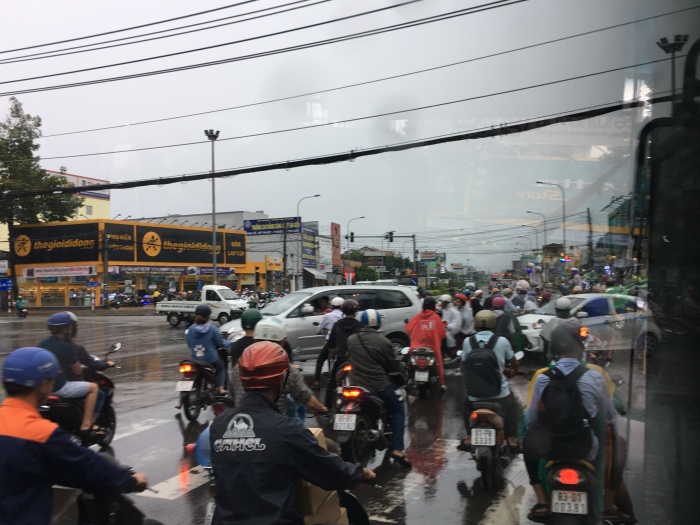
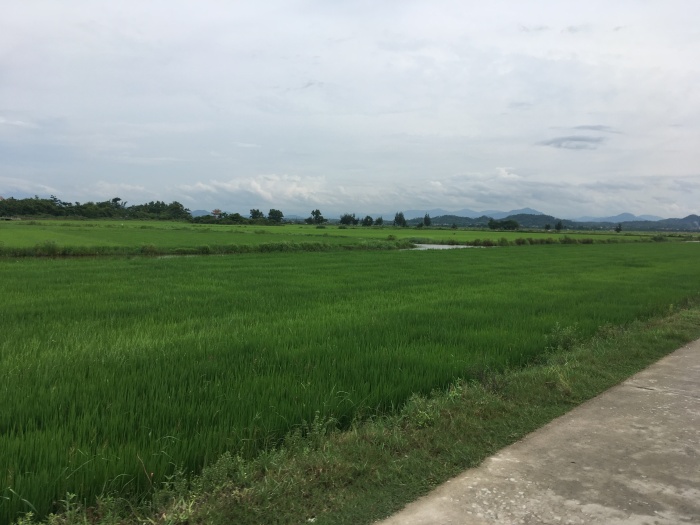 There are a lot of banana and coconut trees surrounding the roads as you drive through the country. Also, everyone seems to be wearing the typical straw hat – I’m making it my mission to bring one home with me. Throughout my travels, I have collected something from every place that I’ve been to as a good reminder of all the different countries, although the hat will be a pain to carry around.
There are a lot of banana and coconut trees surrounding the roads as you drive through the country. Also, everyone seems to be wearing the typical straw hat – I’m making it my mission to bring one home with me. Throughout my travels, I have collected something from every place that I’ve been to as a good reminder of all the different countries, although the hat will be a pain to carry around. 



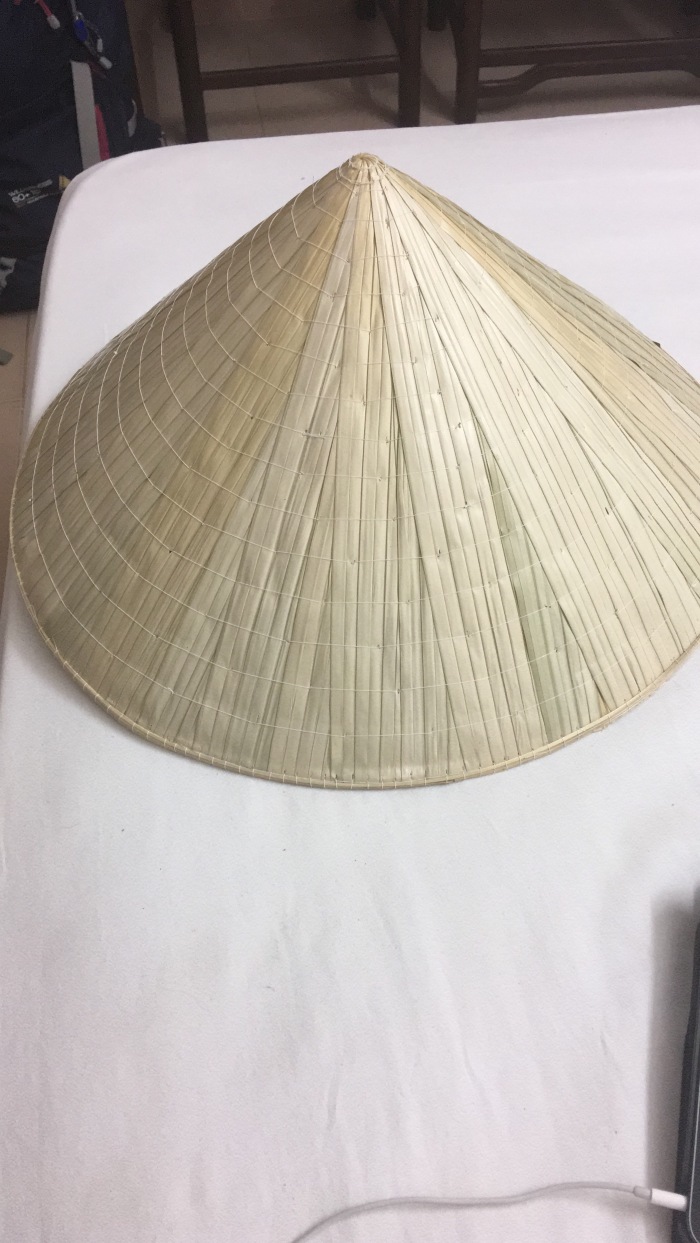


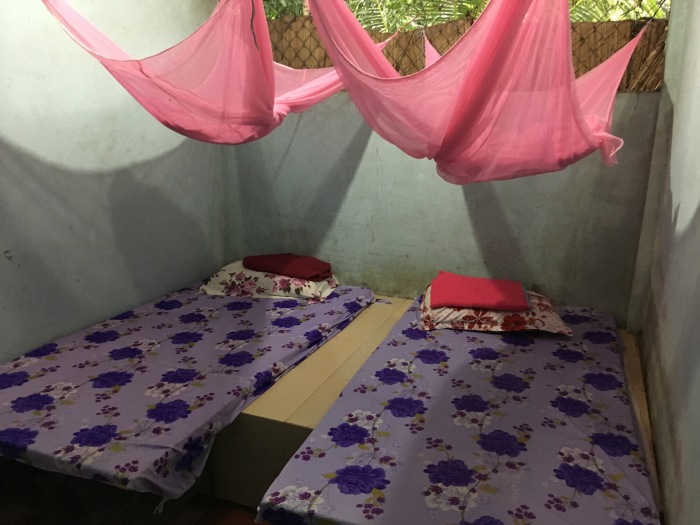
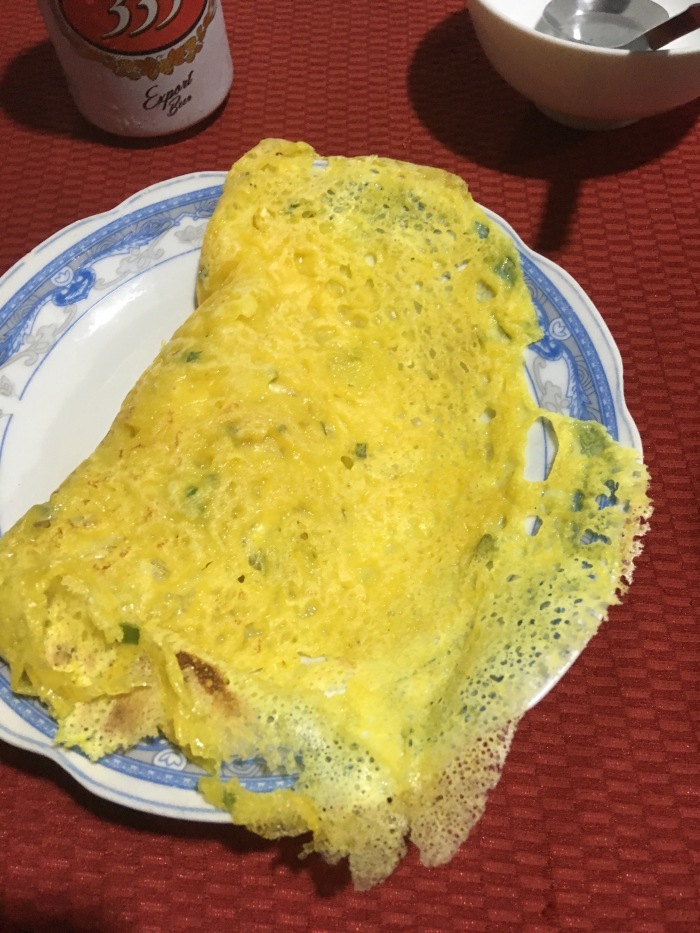








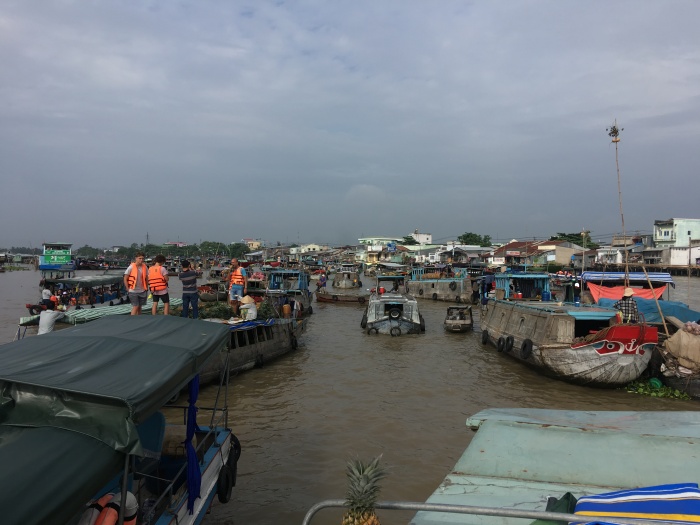











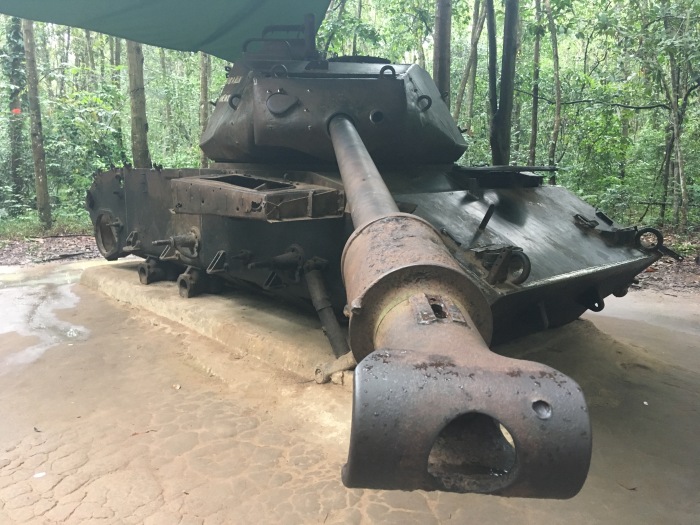
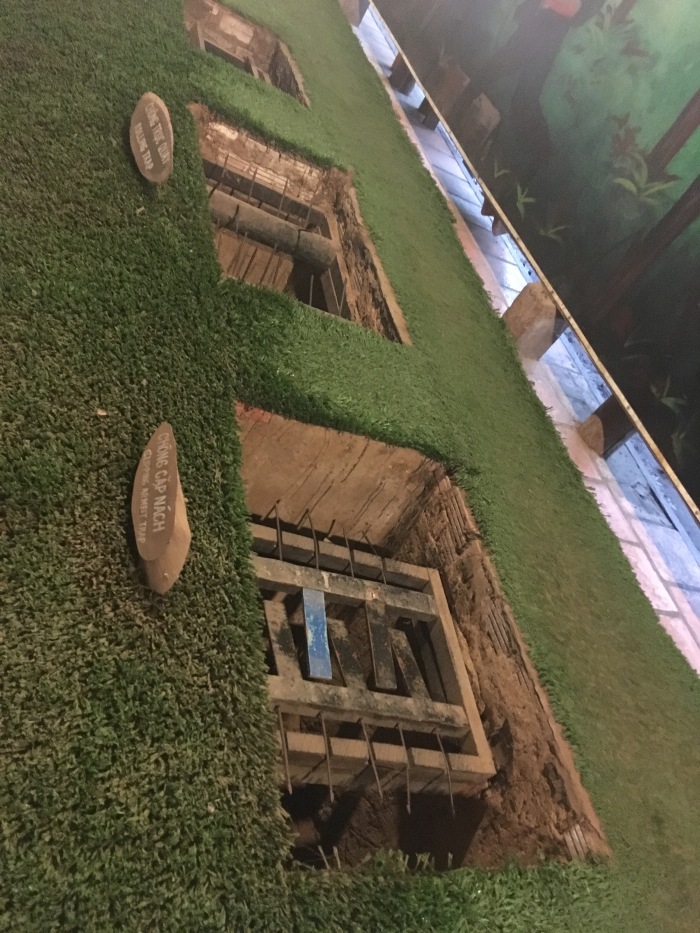

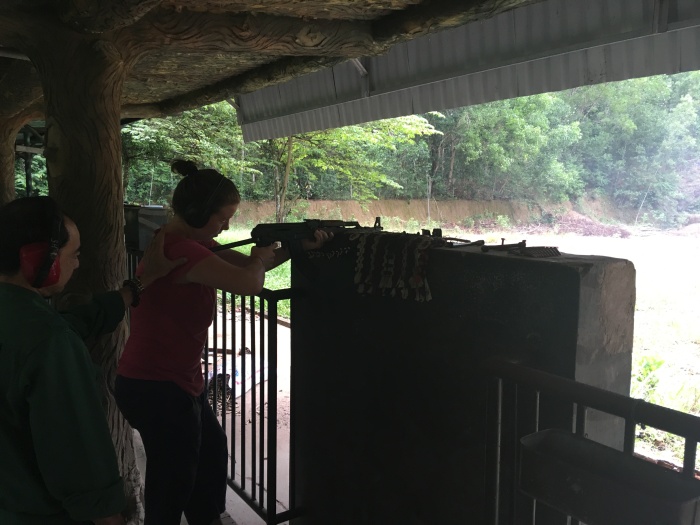








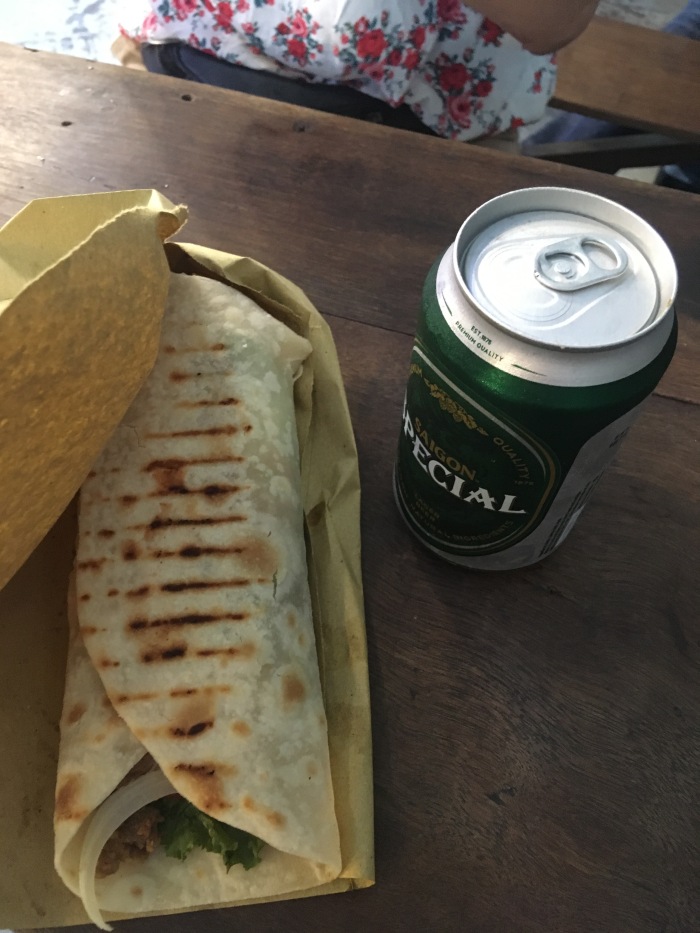

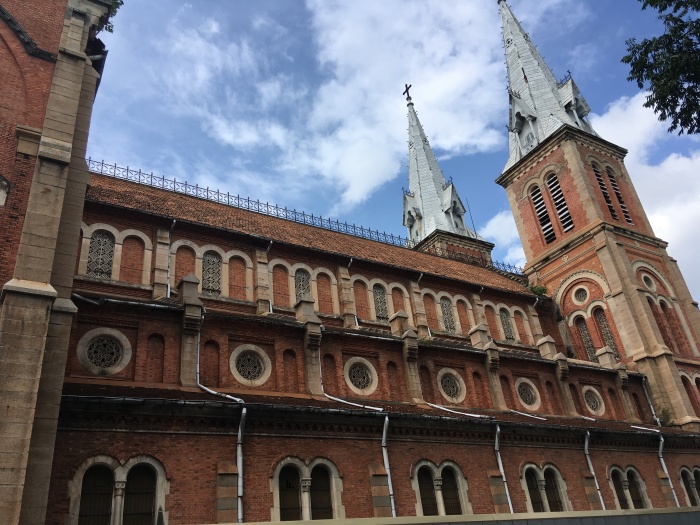
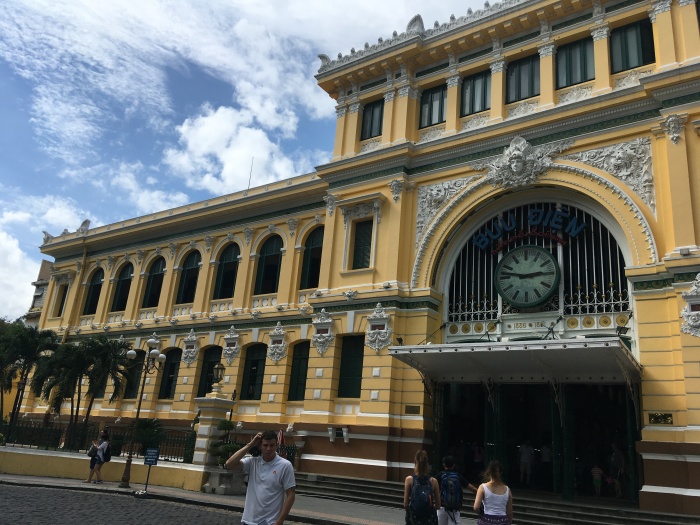
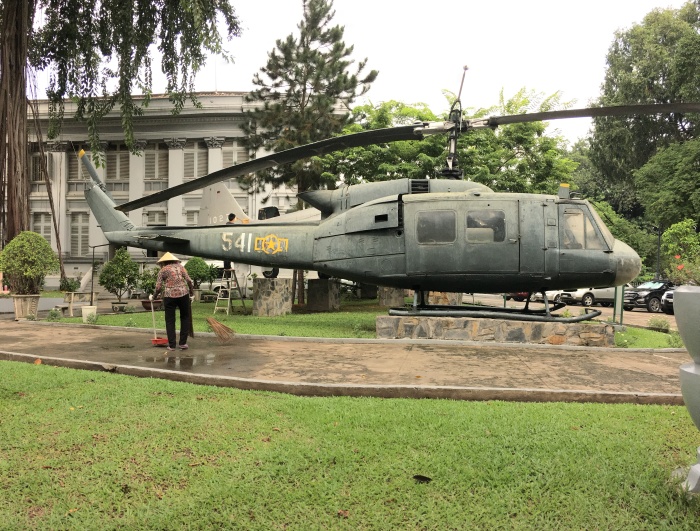 A 10 hour overnight train to Nha Trang was next – the train was a lot nicer than the ones in China. There was a western toilet too! It had decided to rain torrentially too just at the point of travelling to the station which was a bit nasty so that put a slight downer on things. It is the rainy season, after all! It can go from being quite nice and sunny to torrential rain a bit quickly.
A 10 hour overnight train to Nha Trang was next – the train was a lot nicer than the ones in China. There was a western toilet too! It had decided to rain torrentially too just at the point of travelling to the station which was a bit nasty so that put a slight downer on things. It is the rainy season, after all! It can go from being quite nice and sunny to torrential rain a bit quickly. 






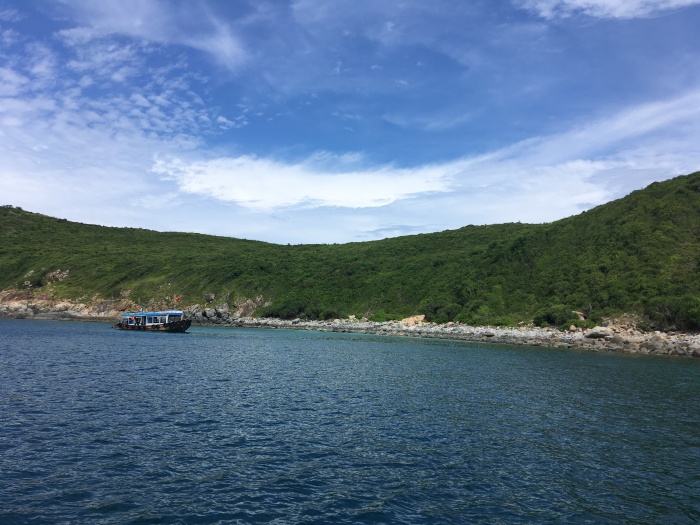
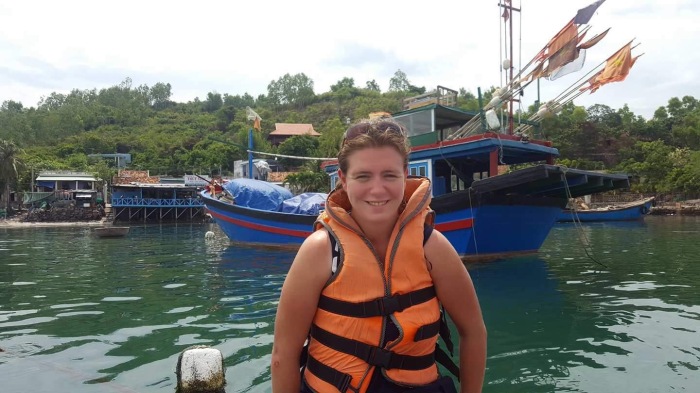
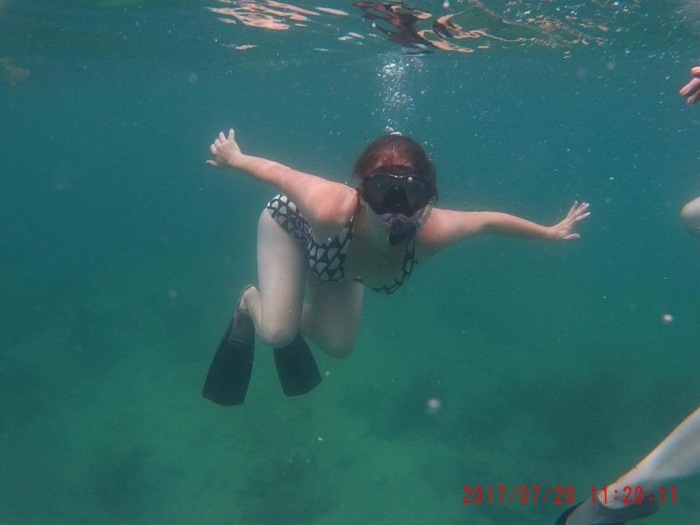 There were lots of fish and coral, as well as a lot of sea urchins. Some of the sea was very clear.
There were lots of fish and coral, as well as a lot of sea urchins. Some of the sea was very clear. 







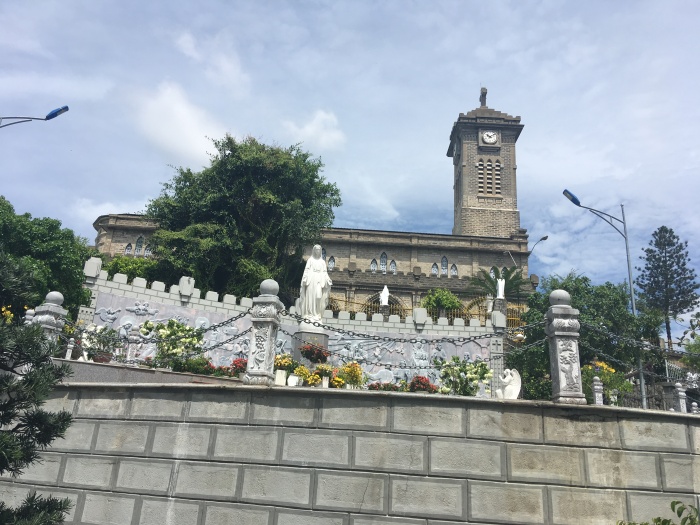 It was built in the early 20th century by the French in a gothic style. The beach looked good but it was so hot at 9am, I didn’t fancy my chances of sitting by the sea in the heat of the day.
It was built in the early 20th century by the French in a gothic style. The beach looked good but it was so hot at 9am, I didn’t fancy my chances of sitting by the sea in the heat of the day.






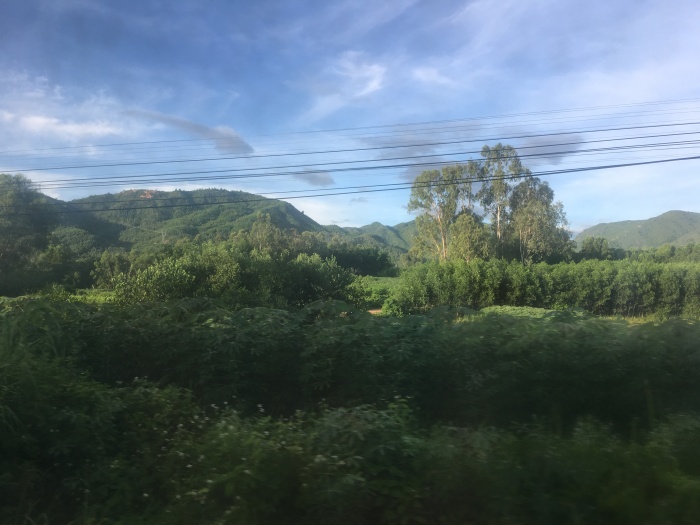
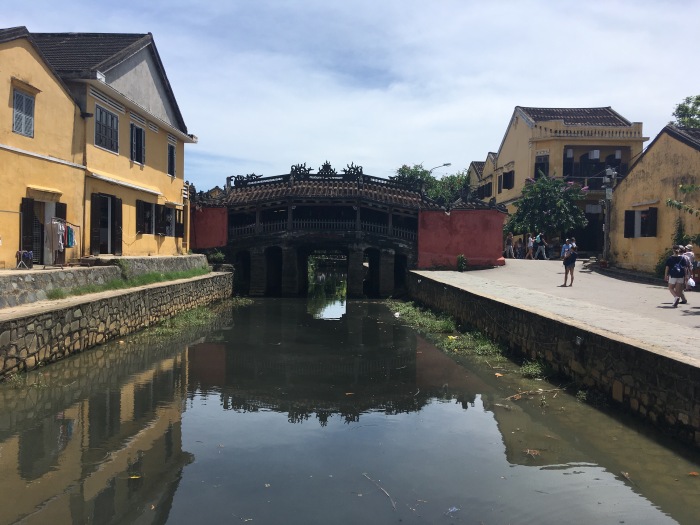

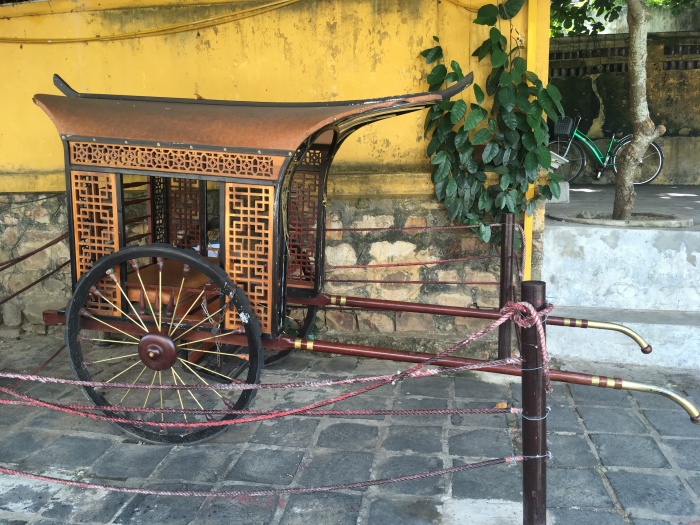 A short ride on a boat up the river a bit when the sun was setting was nice – all the lanterns that hang around the streets all light up. Candles in paper boxes get placed on the river by people for wishes.
A short ride on a boat up the river a bit when the sun was setting was nice – all the lanterns that hang around the streets all light up. Candles in paper boxes get placed on the river by people for wishes.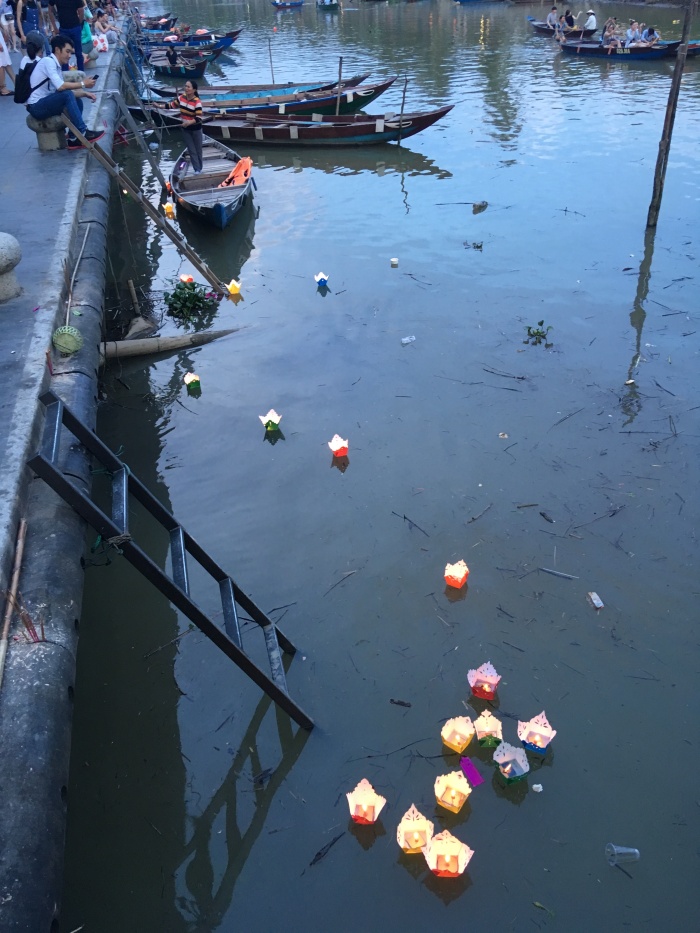
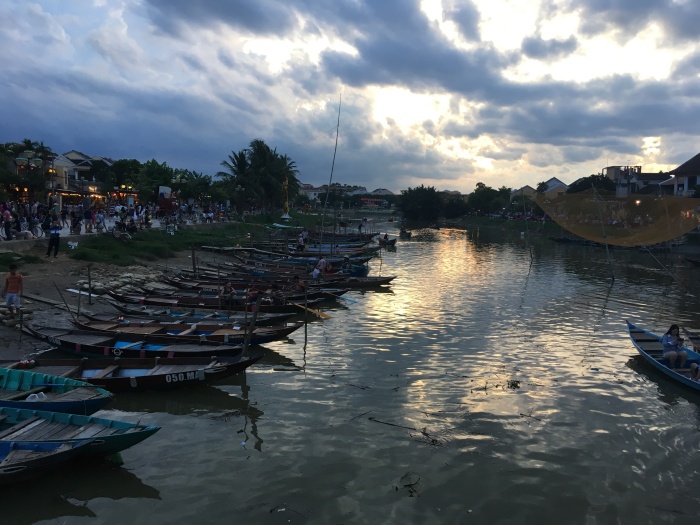

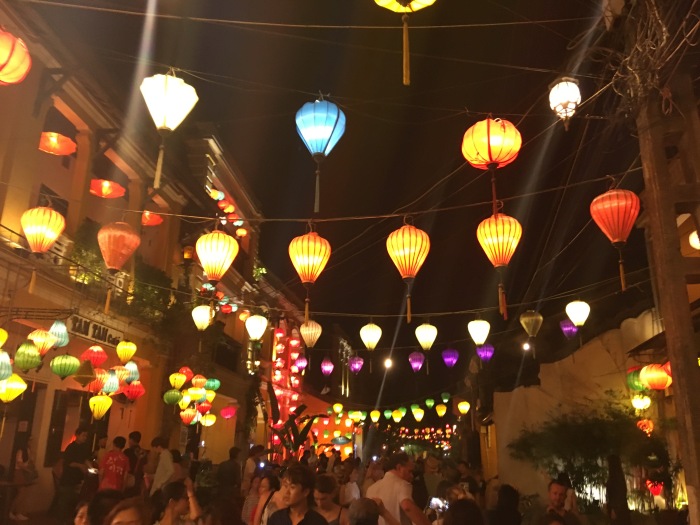 I learnt about how rice noodles were made from a small school which endeavours to improve the lives of young Vietnamese from difficult backgrounds who want to forge a career in the hospitality industry. There are many different types of noodle and it was good to see how each are made.
I learnt about how rice noodles were made from a small school which endeavours to improve the lives of young Vietnamese from difficult backgrounds who want to forge a career in the hospitality industry. There are many different types of noodle and it was good to see how each are made.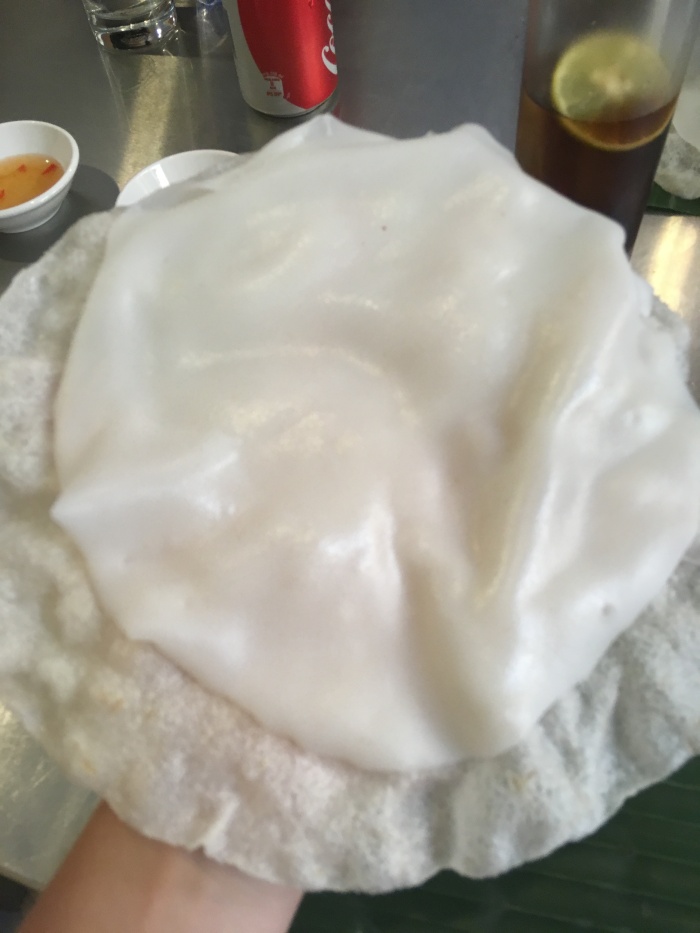
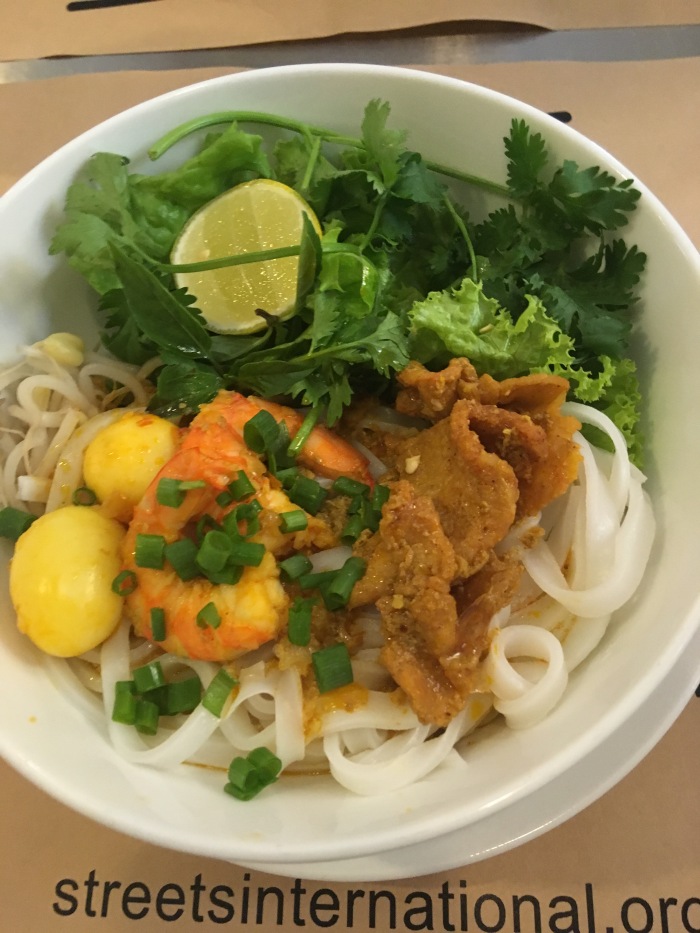
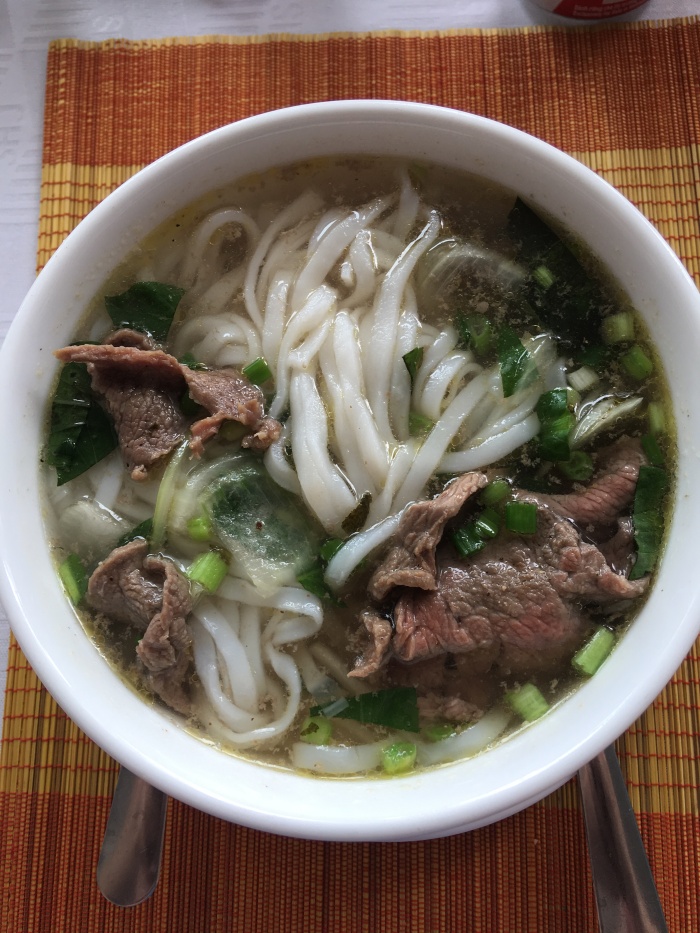 Another wander around the town with the odd temple visit and a bit of time for shopping. I gave in, and bought a hat. I also felt a bit spoilt as I also had a room to myself for a couple of nights – what a luxury!
Another wander around the town with the odd temple visit and a bit of time for shopping. I gave in, and bought a hat. I also felt a bit spoilt as I also had a room to myself for a couple of nights – what a luxury! The variations in water levels due to flooding.
The variations in water levels due to flooding. 
















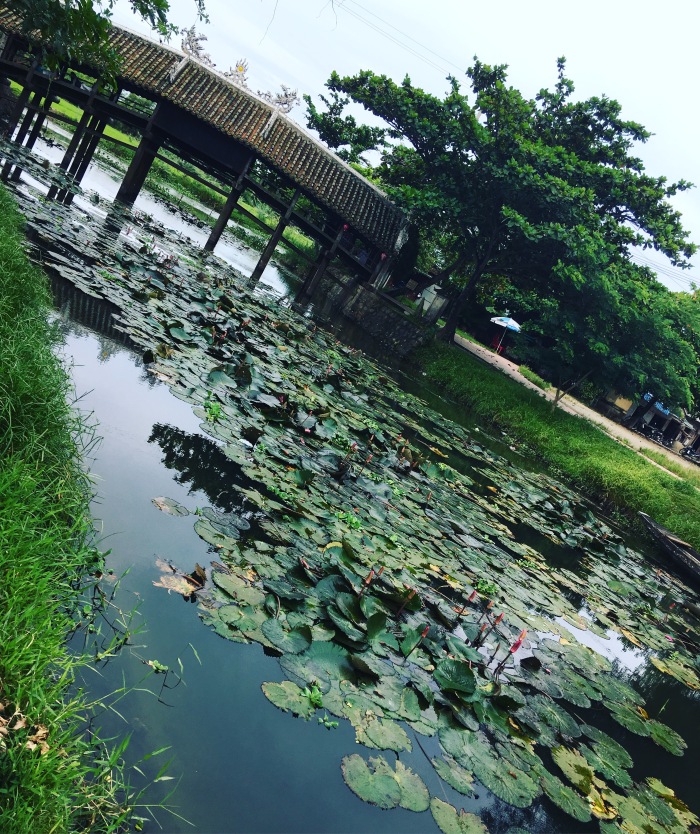
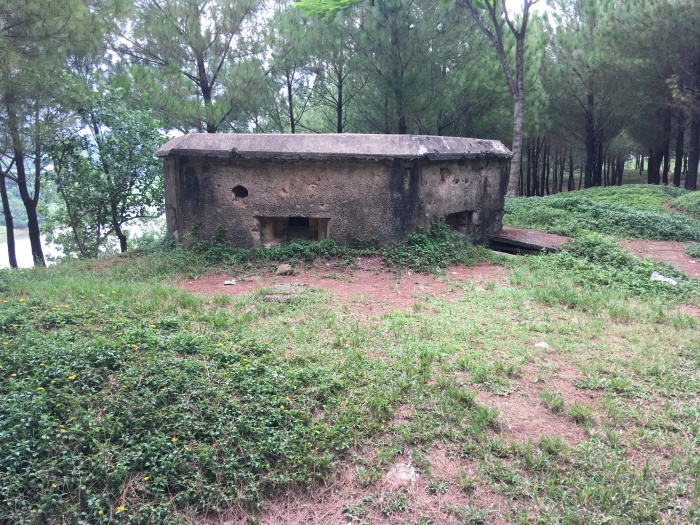
 Also saw an old colosseum where tigers and elephants used to fight – the tigers would be maimed to ensure the elephant’s victory, as the elephant is a symbol of royalty and power.
Also saw an old colosseum where tigers and elephants used to fight – the tigers would be maimed to ensure the elephant’s victory, as the elephant is a symbol of royalty and power.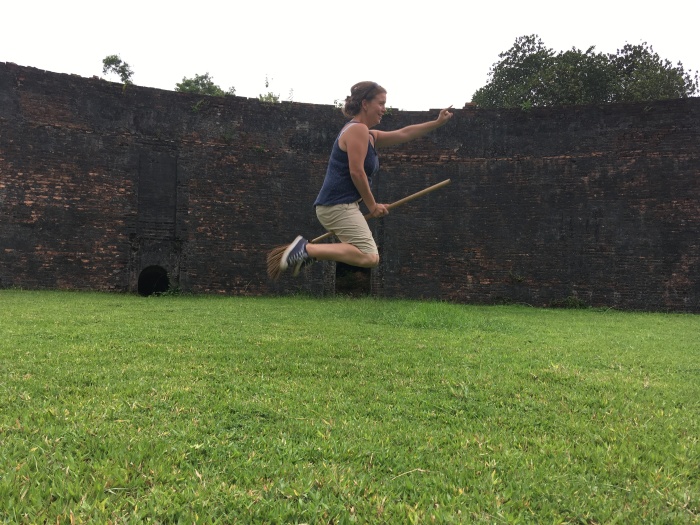
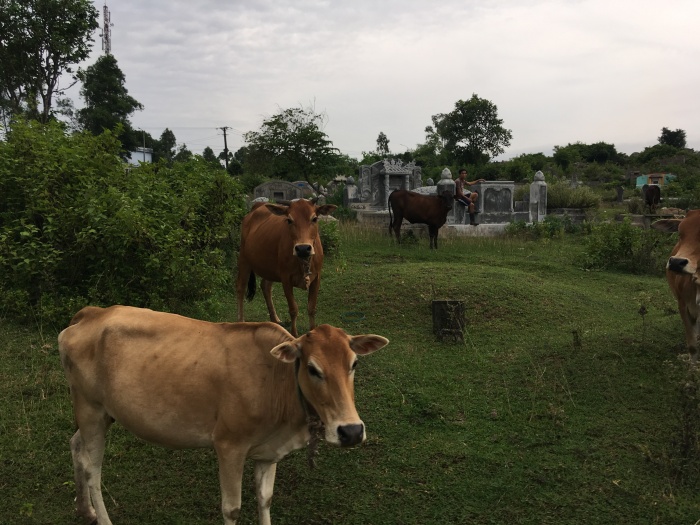 Popped to a local village to see how incense sticks were made. The view of the river was amazing and going off road in the rice fields gave an amazing sense of freedom.
Popped to a local village to see how incense sticks were made. The view of the river was amazing and going off road in the rice fields gave an amazing sense of freedom. 
















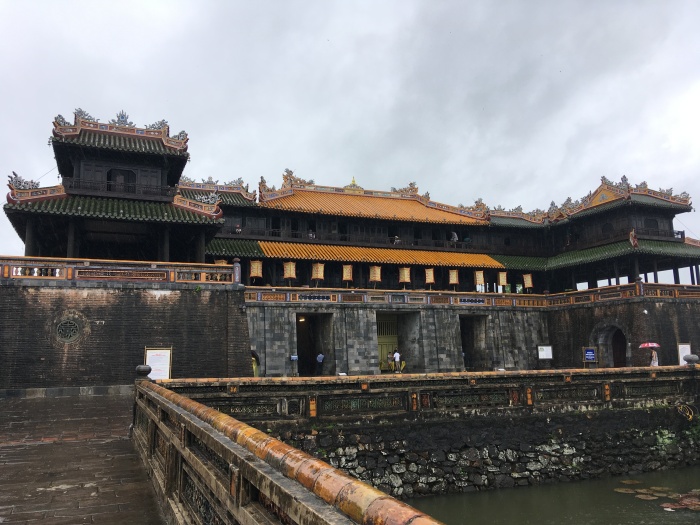
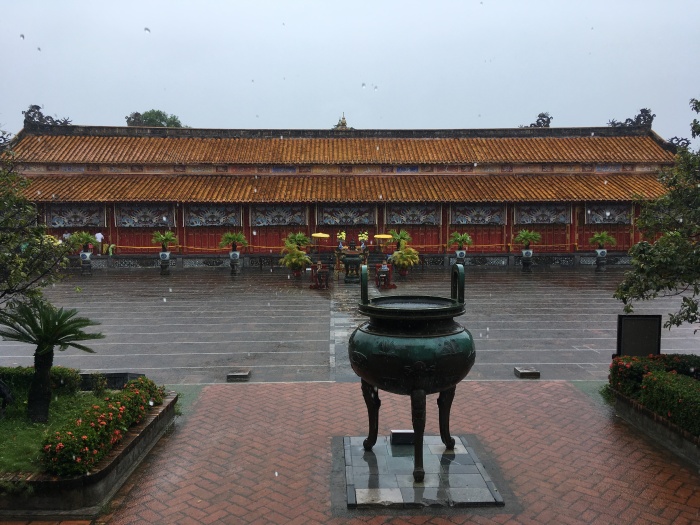
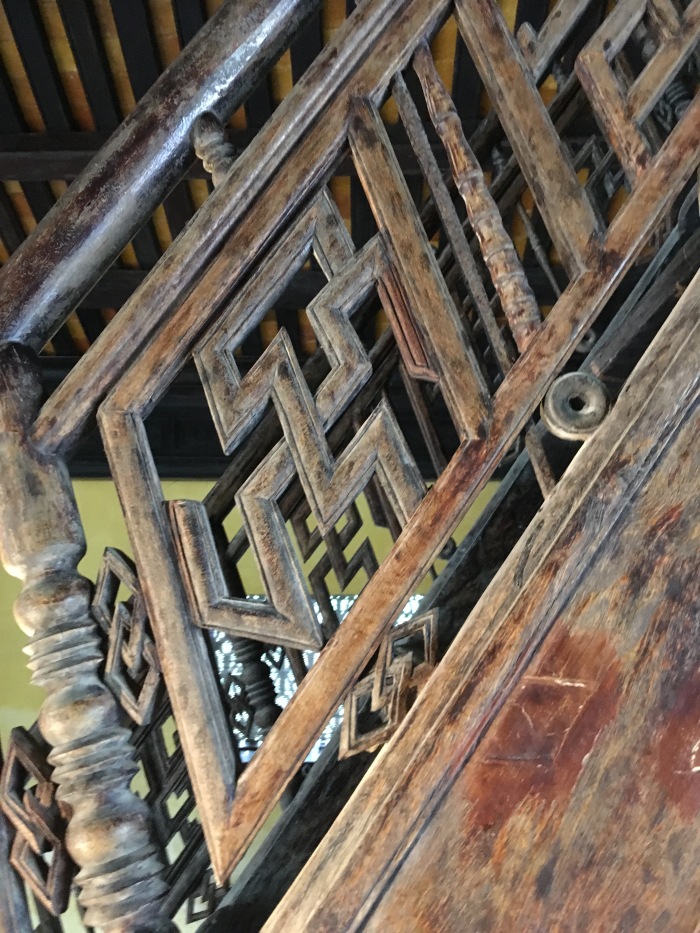
 The typhoon could have provided an issue with getting a train to Halong later that day, but climbed aboard without any issues. Apart from breaking a bottle of red wine on the platform specifically purchased for the night train 😔. The rainy season is incredibly random. Sometimes it can rain for a few moments and be ok again, but then it can rain all day and be very sunny the day after.
The typhoon could have provided an issue with getting a train to Halong later that day, but climbed aboard without any issues. Apart from breaking a bottle of red wine on the platform specifically purchased for the night train 😔. The rainy season is incredibly random. Sometimes it can rain for a few moments and be ok again, but then it can rain all day and be very sunny the day after.


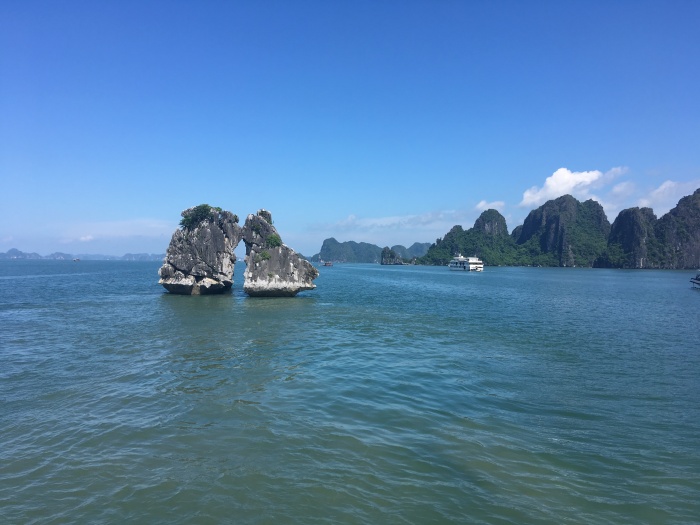
 Went into Dong Thien Cung cave with lovely stalactites and stalagmites.
Went into Dong Thien Cung cave with lovely stalactites and stalagmites.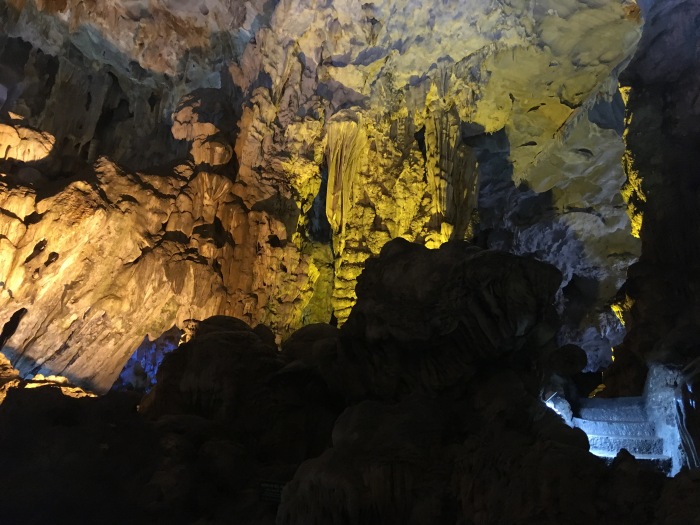 Then out in the evening for some local food – of course, there was too much of it and lots of people wanting to take their photo with you.
Then out in the evening for some local food – of course, there was too much of it and lots of people wanting to take their photo with you. 

















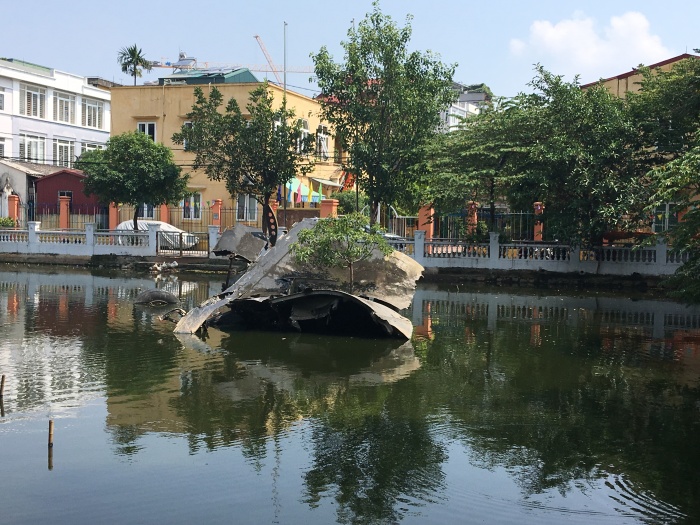 I then walked to the Temple of Literature which was built in 1070 and is where the first university (Imperial Academy) was built. There are 82 stelae (or stone tablets) in one courtyard (there used to be more) which mark the achievement of scholars and to encourage students to work. These are each attached to a stone turtle, which signifies longevity – a popular concept in Asia.
I then walked to the Temple of Literature which was built in 1070 and is where the first university (Imperial Academy) was built. There are 82 stelae (or stone tablets) in one courtyard (there used to be more) which mark the achievement of scholars and to encourage students to work. These are each attached to a stone turtle, which signifies longevity – a popular concept in Asia.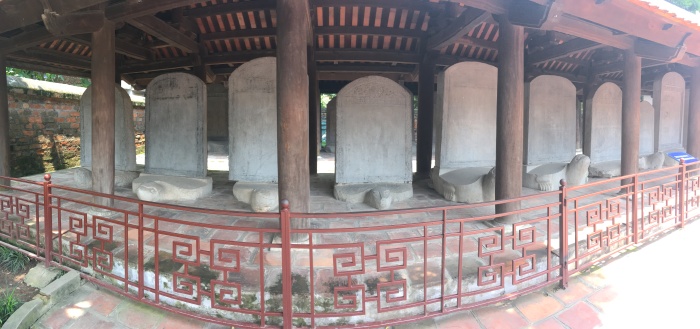 The ‘Hanoi Hilton’ was next – you might think that this was a hotel, but it is the nickname for the Hoa Lo Prison. Built by the French in the late 19th century, this was designed to house Vietnamese resistors (mainly political prisoners). It was expanded to hold more prisoners in 1913, and they were subjected to cruel torture, as well as life in extremely subhuman conditions – hardly any food, lots of disease etc. I was told once that the Vietnamese hate the French, and it was only here that I understood why. The prison was later used to house American POWs during the Vietnam War after the French had left the country. They were the ones that gave it its infamous sarcastic nickname. John McCain, the Presidential candidate, was a US Navy pilot who was kept here.
The ‘Hanoi Hilton’ was next – you might think that this was a hotel, but it is the nickname for the Hoa Lo Prison. Built by the French in the late 19th century, this was designed to house Vietnamese resistors (mainly political prisoners). It was expanded to hold more prisoners in 1913, and they were subjected to cruel torture, as well as life in extremely subhuman conditions – hardly any food, lots of disease etc. I was told once that the Vietnamese hate the French, and it was only here that I understood why. The prison was later used to house American POWs during the Vietnam War after the French had left the country. They were the ones that gave it its infamous sarcastic nickname. John McCain, the Presidential candidate, was a US Navy pilot who was kept here.




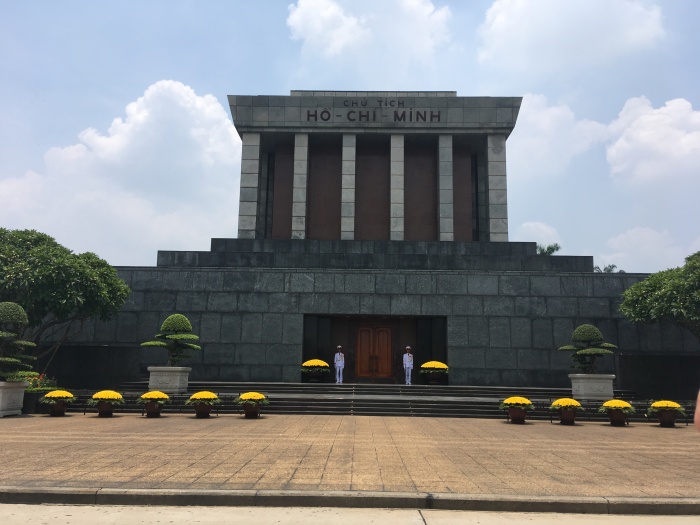




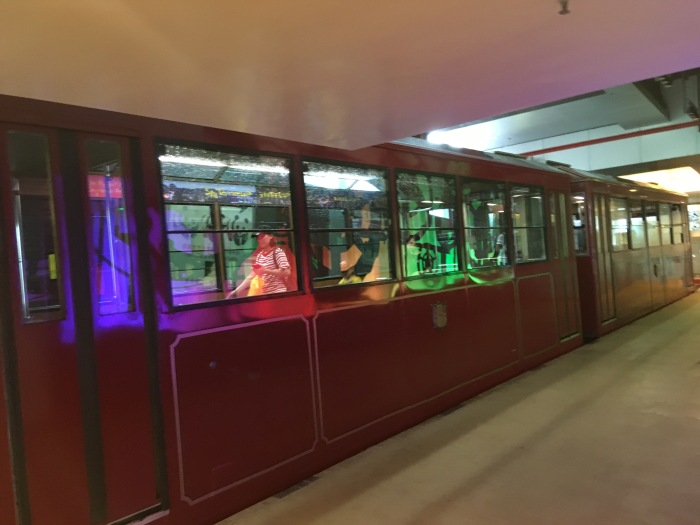

 I also found St John’s Cathedral where I could hear an organ playing ‘Eternal Father, Strong to Save’. With that and the metro looking like the London Underground, I was constantly given little reminders of home. Traffic also drives on the left hand side, but it was the right hand side in China. Western toilets were also very welcome. I also walked up and down Des Voeux road where there was a Marks and Spencer’s and a Harvey Nichols amongst others! Hong Kong had recently celebrated its 20 years of independence from Britain.
I also found St John’s Cathedral where I could hear an organ playing ‘Eternal Father, Strong to Save’. With that and the metro looking like the London Underground, I was constantly given little reminders of home. Traffic also drives on the left hand side, but it was the right hand side in China. Western toilets were also very welcome. I also walked up and down Des Voeux road where there was a Marks and Spencer’s and a Harvey Nichols amongst others! Hong Kong had recently celebrated its 20 years of independence from Britain. 






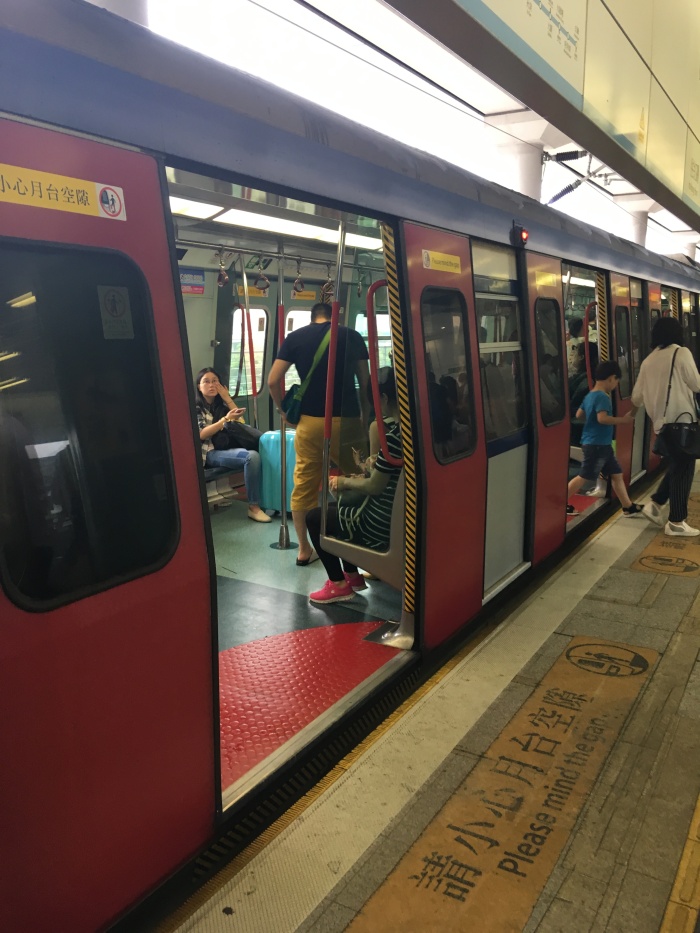
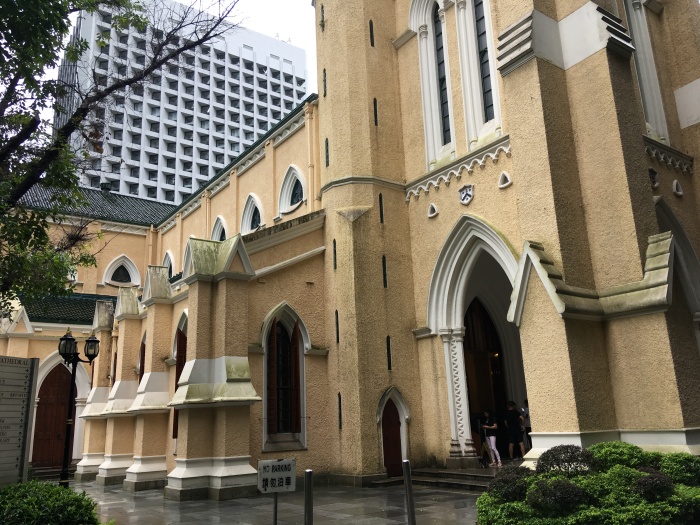
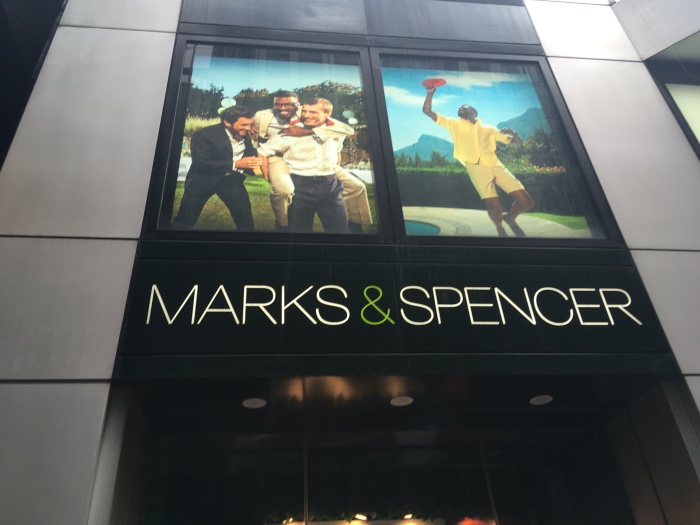
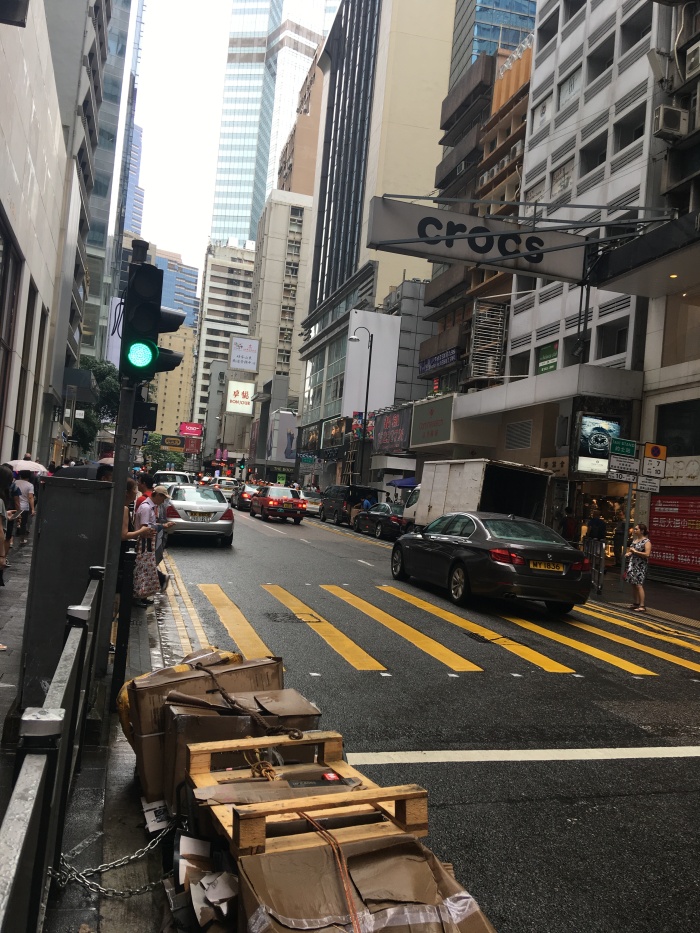






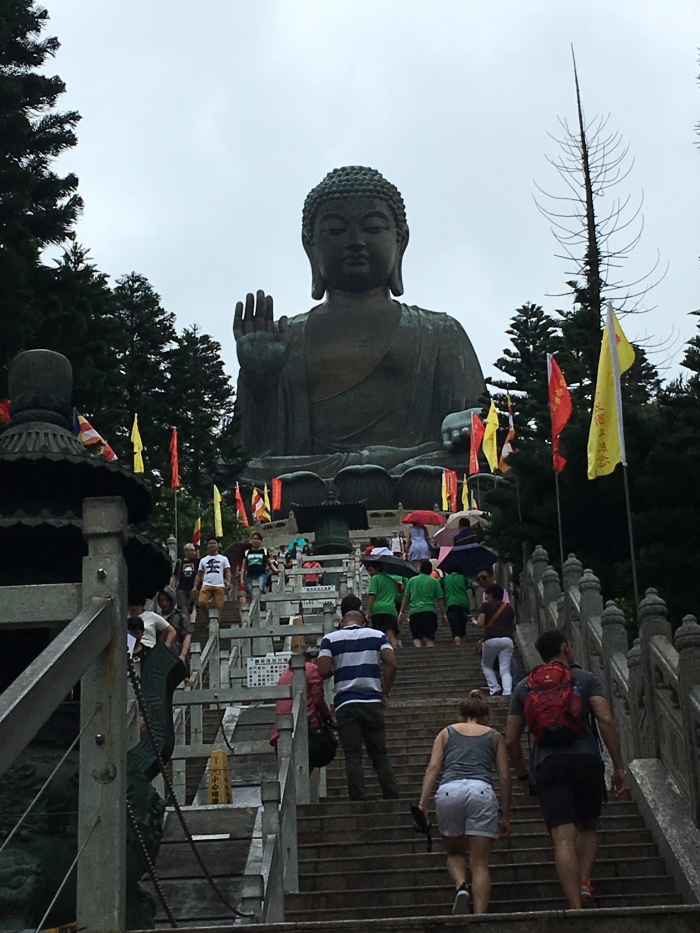



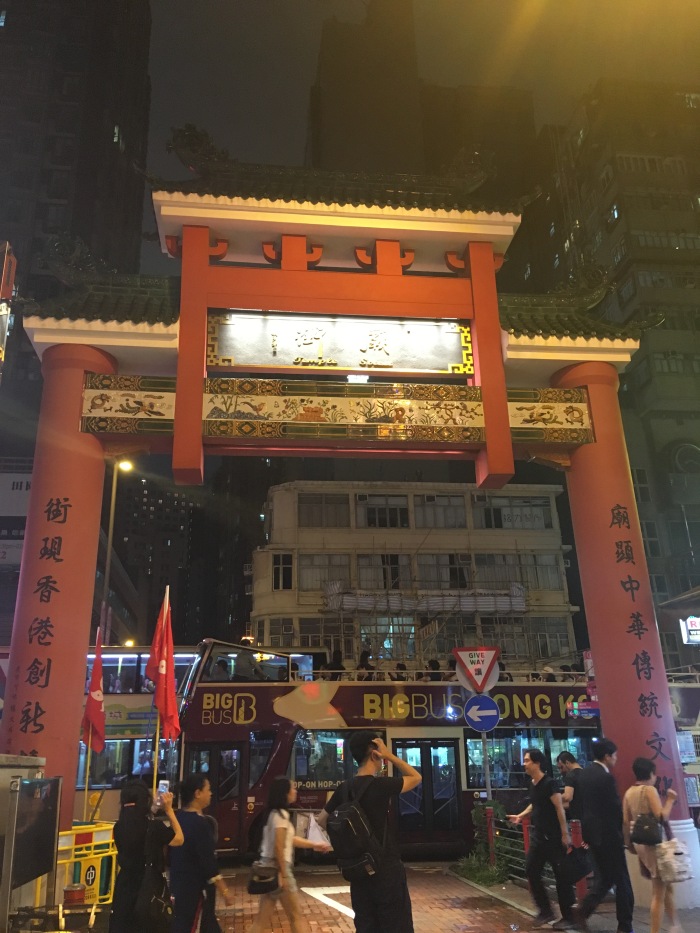
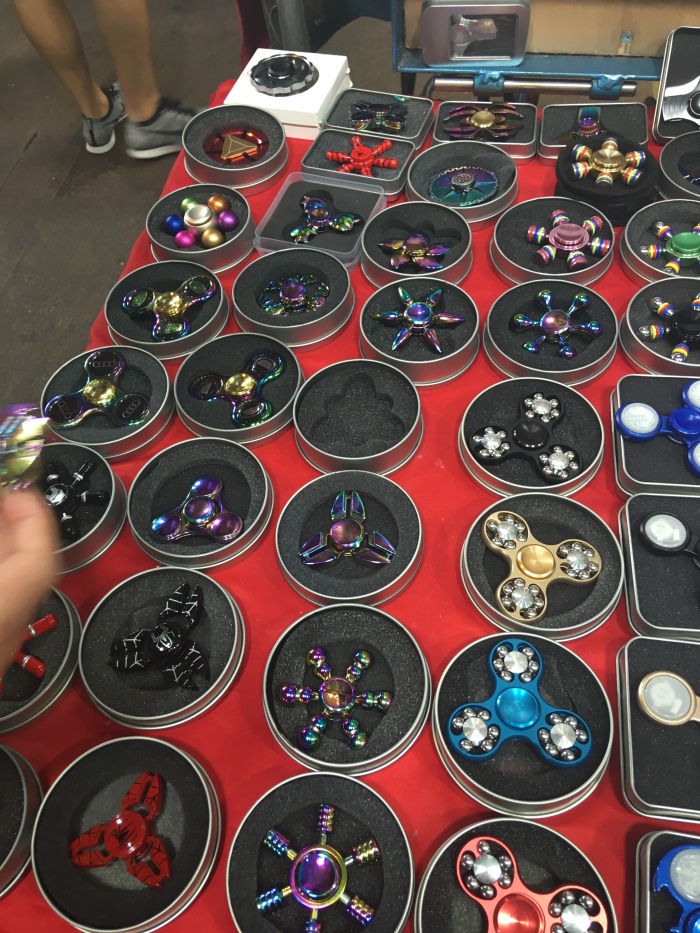




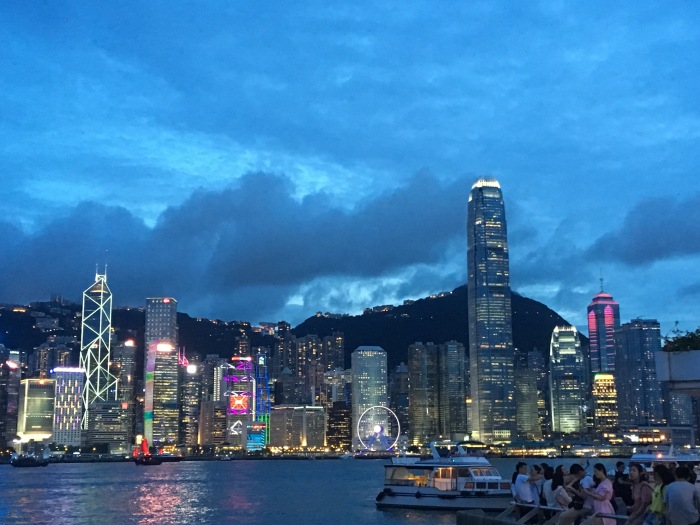
 Until now, I have always relied on Google to get me around but Google is something that is banned in China. Having to use another search engine or the Apple Maps app took a bit of time to adjust to. Facebook/Instagram/Twitter are all banned too. This was an odd feeling, as I know that many of us are often tied to social media in some way or another. In a way, I think it’s quite liberating not to be able to use social media. I couldn’t be bothered trying to deal with a VPN or a proxy server – I’m only in China for three weeks. Managed to acquire some more toiletries and get some money sorted. I didn’t realise how exhausted I would be. Beijing is quite hot and there is a bit of a haze in the air. It’s quite a busy city traffic wise and lots of people on scooters/bikes who think they own the road. I haven’t seen many helmets worn though. There is a cycle system here where you can pick up a bike from anywhere random by unlocking something on the back wheel. There aren’t any cycle stations like there are in London.
Until now, I have always relied on Google to get me around but Google is something that is banned in China. Having to use another search engine or the Apple Maps app took a bit of time to adjust to. Facebook/Instagram/Twitter are all banned too. This was an odd feeling, as I know that many of us are often tied to social media in some way or another. In a way, I think it’s quite liberating not to be able to use social media. I couldn’t be bothered trying to deal with a VPN or a proxy server – I’m only in China for three weeks. Managed to acquire some more toiletries and get some money sorted. I didn’t realise how exhausted I would be. Beijing is quite hot and there is a bit of a haze in the air. It’s quite a busy city traffic wise and lots of people on scooters/bikes who think they own the road. I haven’t seen many helmets worn though. There is a cycle system here where you can pick up a bike from anywhere random by unlocking something on the back wheel. There aren’t any cycle stations like there are in London.
















 The sense of tradition is also strong – women are still expected to marry a husband young to provide a family, and the man is the breadwinner. For a woman to be without a husband at the age of 30 can provide pressure within the family unit to produce heirs, but the one child policy seems to be a bit more relaxed – or couples keep on having children until they have a son. Someone I spoke to was the second child (and a girl), and her parents had to pay to register her when she was born, but they had chosen to have a second child. While boys are still preferable, girls are also still required for evolution, so I think that there can be a fluctuation between the desire for a male child and the desire for a female depending on the gender ratio. I was questioned why I didn’t have a husband or a family, and why I would want to travel by myself at my age instead. I wasn’t sure how to respond at first, but came up with something.
The sense of tradition is also strong – women are still expected to marry a husband young to provide a family, and the man is the breadwinner. For a woman to be without a husband at the age of 30 can provide pressure within the family unit to produce heirs, but the one child policy seems to be a bit more relaxed – or couples keep on having children until they have a son. Someone I spoke to was the second child (and a girl), and her parents had to pay to register her when she was born, but they had chosen to have a second child. While boys are still preferable, girls are also still required for evolution, so I think that there can be a fluctuation between the desire for a male child and the desire for a female depending on the gender ratio. I was questioned why I didn’t have a husband or a family, and why I would want to travel by myself at my age instead. I wasn’t sure how to respond at first, but came up with something.






 Visiting a local district called Hutong made me understand the importance of the family values and community – there are houses which have been passed through several generations. There is a tradition where the status of the family is illustrated by the beams outside the house, as well as the number of steps going inside the house. They should complement each other, so they preferably match – a balance illustrating the recognition of Feng Shui. Stopping for a home cooked lunch inside someone’s house was lovely and humbling – the food was simple, but delicious and the lady of the house made all the food herself while her husband was out at work. Visited a cricket trainer who developed the fighting talents of the crickets for gambling purposes – he would train the cricket and then sell it for a price depending on how good a fighter the cricket was. When looking for some food, I stumbled across a street market, and there were scorpions on sticks! You could see them wriggling around before they had been cooked – slightly odd.
Visiting a local district called Hutong made me understand the importance of the family values and community – there are houses which have been passed through several generations. There is a tradition where the status of the family is illustrated by the beams outside the house, as well as the number of steps going inside the house. They should complement each other, so they preferably match – a balance illustrating the recognition of Feng Shui. Stopping for a home cooked lunch inside someone’s house was lovely and humbling – the food was simple, but delicious and the lady of the house made all the food herself while her husband was out at work. Visited a cricket trainer who developed the fighting talents of the crickets for gambling purposes – he would train the cricket and then sell it for a price depending on how good a fighter the cricket was. When looking for some food, I stumbled across a street market, and there were scorpions on sticks! You could see them wriggling around before they had been cooked – slightly odd.




 Boarded a fast train to Shanghai which took about five hours. It was nice to read my book for a bit and they reminded me of the Shinkansens in Japan. There was a completely different feel to this city. There was also a lot more cloud/fog/smog around. The day after I arrived in Shanghai, the weather in Beijing had turned from sun and heat to tropical thunder storms which made news headlines. The Great Wall access could get shut and there was news of a massive mudslide due to the weather – it was good that the Great Wall was seen in the sunshine!
Boarded a fast train to Shanghai which took about five hours. It was nice to read my book for a bit and they reminded me of the Shinkansens in Japan. There was a completely different feel to this city. There was also a lot more cloud/fog/smog around. The day after I arrived in Shanghai, the weather in Beijing had turned from sun and heat to tropical thunder storms which made news headlines. The Great Wall access could get shut and there was news of a massive mudslide due to the weather – it was good that the Great Wall was seen in the sunshine!















 Visited the Great Wild Goose Pagoda and the temple which originally built in 652 and is now a little bit wonky due to an earthquake. The temples were very decorated and each ones housed different Buddhas for different things e.g. One symbolised wealth etc. I was able to buy something made of proper Chinese jade here too – a nice bangle but it was a bit on the expensive side. You could buy something from a street vendor, but it obviously would be fake. Then went to the Muslim sector of the town which was beside the Bell Tower and Drum Tower – these were originally used to signal the presence of the enemy, as well as give the town a sense of the time of day – bell was rung at the start, and drum sounded at the end. The Muslim quarter was one long street full of vendors selling different foods. These ranged from battered squid and crab to bread and nuts. Tried a variety of hamburger which was called a pancake – I think it had mutton inside. Found a great little place to eat on a rooftop where food and drink came to about a fiver each! It’s a lot cheaper to eat here than in Japan.
Visited the Great Wild Goose Pagoda and the temple which originally built in 652 and is now a little bit wonky due to an earthquake. The temples were very decorated and each ones housed different Buddhas for different things e.g. One symbolised wealth etc. I was able to buy something made of proper Chinese jade here too – a nice bangle but it was a bit on the expensive side. You could buy something from a street vendor, but it obviously would be fake. Then went to the Muslim sector of the town which was beside the Bell Tower and Drum Tower – these were originally used to signal the presence of the enemy, as well as give the town a sense of the time of day – bell was rung at the start, and drum sounded at the end. The Muslim quarter was one long street full of vendors selling different foods. These ranged from battered squid and crab to bread and nuts. Tried a variety of hamburger which was called a pancake – I think it had mutton inside. Found a great little place to eat on a rooftop where food and drink came to about a fiver each! It’s a lot cheaper to eat here than in Japan.




 The Terracotta Warriors were amazing – they were only discovered in 1974 by a couple of local farmers working the land. The army was buried with Emperor Qin, who was an important ruler during the dynasty over 2000 years ago, along with things for the afterlife – the warriors were there to protect him, but had been broken into pieces by the enemy at the time who discovered the tombs after they had been betrayed by one of the workers. Usually, the workers were killed so that the secret could be kept, although I don’t think the actual tomb has been found yet. The excavation is still going on and more pieces are being put back together. Each warrior is individual and is a replica of the creator of that particular warrior, as one person usually made one. There were approximately 700,000 builders, so you can only imagine now many constructions happened. There is a large collection of the fully reconstructed ones on the site where they were found (about 2000 on display), and you also had the opportunity to look closely at a couple contained behind some glass. You could see the detail on the clothes and faces.
The Terracotta Warriors were amazing – they were only discovered in 1974 by a couple of local farmers working the land. The army was buried with Emperor Qin, who was an important ruler during the dynasty over 2000 years ago, along with things for the afterlife – the warriors were there to protect him, but had been broken into pieces by the enemy at the time who discovered the tombs after they had been betrayed by one of the workers. Usually, the workers were killed so that the secret could be kept, although I don’t think the actual tomb has been found yet. The excavation is still going on and more pieces are being put back together. Each warrior is individual and is a replica of the creator of that particular warrior, as one person usually made one. There were approximately 700,000 builders, so you can only imagine now many constructions happened. There is a large collection of the fully reconstructed ones on the site where they were found (about 2000 on display), and you also had the opportunity to look closely at a couple contained behind some glass. You could see the detail on the clothes and faces.








 It was then time for another overnight train from Xi’an to Emei mountain. This was a 19 hour one and it was a bit more comfortable than the last one. There was some great scenery. Finally arrived and then went to the accommodation, which was another monastery near Emeishan town. Everything was basic and the communal showers could only be used at certain times in the late afternoon. Three nights here in the tranquillity after the hustle and bustle of cities. I did feel a bit intimidated walking through certain parts of the temple to go to the loo in my pjs – I felt that the Buddhas were looking at me disapprovingly. Oh well!
It was then time for another overnight train from Xi’an to Emei mountain. This was a 19 hour one and it was a bit more comfortable than the last one. There was some great scenery. Finally arrived and then went to the accommodation, which was another monastery near Emeishan town. Everything was basic and the communal showers could only be used at certain times in the late afternoon. Three nights here in the tranquillity after the hustle and bustle of cities. I did feel a bit intimidated walking through certain parts of the temple to go to the loo in my pjs – I felt that the Buddhas were looking at me disapprovingly. Oh well!




 A hike next day into Mt Emei was welcome after a long train journey. There were a lot of carvings in the rock walls on the way up to certain temples, as well as streams and lovely bridges. After having had my photo taken with several Chinese people by their relatives, it was off to try and find some monkeys. A few monkeys were encountered and they were definitely ‘wild’! One or two looked into people’s bags and nabbed the odd face wipe. Luckily, I (and my possessions) remained intact, but they definitely looked fierce.
A hike next day into Mt Emei was welcome after a long train journey. There were a lot of carvings in the rock walls on the way up to certain temples, as well as streams and lovely bridges. After having had my photo taken with several Chinese people by their relatives, it was off to try and find some monkeys. A few monkeys were encountered and they were definitely ‘wild’! One or two looked into people’s bags and nabbed the odd face wipe. Luckily, I (and my possessions) remained intact, but they definitely looked fierce.













 A long soak in a hot spring was a good reward. I thought that inflatable toys in the pool were much more fun, but I fear that I lost all dignity when I attempted to leap frog onto a little van called ‘Wave Attack’ (I now think that this was probably meant for small children). I jumped and went right over the darn thing ending up head first in the water and getting water up my nose. I rose out of the water to fits of giggles, but I was not going to be defeated. I managed to conquer the crocodile and the massive pink flamingo successfully in the end. With a bit of help. And many attempts.
A long soak in a hot spring was a good reward. I thought that inflatable toys in the pool were much more fun, but I fear that I lost all dignity when I attempted to leap frog onto a little van called ‘Wave Attack’ (I now think that this was probably meant for small children). I jumped and went right over the darn thing ending up head first in the water and getting water up my nose. I rose out of the water to fits of giggles, but I was not going to be defeated. I managed to conquer the crocodile and the massive pink flamingo successfully in the end. With a bit of help. And many attempts.














 A local neighbourhood nearby was interesting to visit – there are a lot of very happy and relaxed people, compared with the citizens of the city who are rushing around and barging you out of the way. They are all still working at an old age – maybe in their 80s and 90s as there is no pension system, and if you don’t have children to help support you, then you have to continue working. This life isn’t easy, but they make the most of it – perhaps by drinking copious amounts of tea and playing mahjong. A local market was quite an eye opener – at home we are used to seeing meat packaged in supermarkets or a local farmers market being clean, but the way meat is prepared here is slightly different. For the Chinese, if they cannot see the meat being prepared, then it is not fresh for them. For me, if I see some meat on a stove in the sun on the street, I wouldn’t go near it, as I wouldn’t know how long it had been sitting around, especially with flies etc. On the plus side, one of the vendors did think I was 17, and was a bit surprised when I told them my real age. Winning!
A local neighbourhood nearby was interesting to visit – there are a lot of very happy and relaxed people, compared with the citizens of the city who are rushing around and barging you out of the way. They are all still working at an old age – maybe in their 80s and 90s as there is no pension system, and if you don’t have children to help support you, then you have to continue working. This life isn’t easy, but they make the most of it – perhaps by drinking copious amounts of tea and playing mahjong. A local market was quite an eye opener – at home we are used to seeing meat packaged in supermarkets or a local farmers market being clean, but the way meat is prepared here is slightly different. For the Chinese, if they cannot see the meat being prepared, then it is not fresh for them. For me, if I see some meat on a stove in the sun on the street, I wouldn’t go near it, as I wouldn’t know how long it had been sitting around, especially with flies etc. On the plus side, one of the vendors did think I was 17, and was a bit surprised when I told them my real age. Winning!


















 I’ve been lucky enough to taste a lot of home cooked traditional food which include different types of meat and vegetables. Rice comes with pretty much everything. I’ve never been too much of a rice person, so haven’t had too much which is never a bad thing, although I am missing my bread intake. A typical Chinese breakfast is a rice porridge with some sort of bun, but I wasn’t tempted by this. I found somewhere that actually made eggs on toast, so ate here three mornings in a row. Bread isn’t a common food here – I was starting to miss lovely bread.
I’ve been lucky enough to taste a lot of home cooked traditional food which include different types of meat and vegetables. Rice comes with pretty much everything. I’ve never been too much of a rice person, so haven’t had too much which is never a bad thing, although I am missing my bread intake. A typical Chinese breakfast is a rice porridge with some sort of bun, but I wasn’t tempted by this. I found somewhere that actually made eggs on toast, so ate here three mornings in a row. Bread isn’t a common food here – I was starting to miss lovely bread.









 It was time to set sail on board a boat down the Yangtze River from Chongqing to Yichang. I was prepared for basic accommodation, possibly dormitory style cabins and shared facilities – almost like the sleeper trains but was pleasantly surprised with what I found. Nice cabins and own bathroom, along with some decent food and a deck on top. The Yangtze is the third longest river in the world, after the Amazon and the Nile. It isn’t actually called the Yangtze in China – this name was given to it by a European who first came across it in the town of Yangtze, but the Chinese translation means ‘long river’. I got off to see the Fengdu Ghost city on Ming mountain. It was believed that your soul or spirit would come here to be judged when you die, depending on what sort of a person you have been in this life. A series of tests would have been done to see if you were a good person or not – one of these was crossing over a bridge in odd steps, another balancing your foot on a small metal stone for a number of seconds. Of course, I passed all the tests, so no need to worry about going to hell or coming back as a slug in the next life! Some parts had been reconstructed after the earthquake in 2008, but the Temple of Hell at the top is still in its original state and had been built in 1666. The whole city is almost 2000 years old.
It was time to set sail on board a boat down the Yangtze River from Chongqing to Yichang. I was prepared for basic accommodation, possibly dormitory style cabins and shared facilities – almost like the sleeper trains but was pleasantly surprised with what I found. Nice cabins and own bathroom, along with some decent food and a deck on top. The Yangtze is the third longest river in the world, after the Amazon and the Nile. It isn’t actually called the Yangtze in China – this name was given to it by a European who first came across it in the town of Yangtze, but the Chinese translation means ‘long river’. I got off to see the Fengdu Ghost city on Ming mountain. It was believed that your soul or spirit would come here to be judged when you die, depending on what sort of a person you have been in this life. A series of tests would have been done to see if you were a good person or not – one of these was crossing over a bridge in odd steps, another balancing your foot on a small metal stone for a number of seconds. Of course, I passed all the tests, so no need to worry about going to hell or coming back as a slug in the next life! Some parts had been reconstructed after the earthquake in 2008, but the Temple of Hell at the top is still in its original state and had been built in 1666. The whole city is almost 2000 years old.







 Going up the Yangtze continued through the three gorges. The river is quite murky in parts and this is something to do with the sediment collection. Went up Shennv Stream – this was shallow in comparison to the Yangtze and the water was a lot clearer. Surrounded by high cliffs both the Yangtze and Shennv Stream have varied climbing mountains either side where different names given to certain rock edges which are meant to look like things e.g. a seated Buddha. The water mark is clearly visible where the face has disintegrated and no trees grow. Exploring the Three Gorges Dam was amazing. It is the biggest one in the world, but only supplies electricity to 3% of China’s population – which is still a lot of people, but not as many as you’d think.
Going up the Yangtze continued through the three gorges. The river is quite murky in parts and this is something to do with the sediment collection. Went up Shennv Stream – this was shallow in comparison to the Yangtze and the water was a lot clearer. Surrounded by high cliffs both the Yangtze and Shennv Stream have varied climbing mountains either side where different names given to certain rock edges which are meant to look like things e.g. a seated Buddha. The water mark is clearly visible where the face has disintegrated and no trees grow. Exploring the Three Gorges Dam was amazing. It is the biggest one in the world, but only supplies electricity to 3% of China’s population – which is still a lot of people, but not as many as you’d think. 






















 I did manage to attend a cookery class, and also cycled around the local area (although parts were shut off due to collapsed trees etc). The scenery is stunning. It was still very humid – I walked ten minutes and I was already dissolving into human prune situation. Factor 50 was not enough either. It was nice to cycle along some lovely roads with mountains either side, and lots of fields. The weather brightened up, so this made cycling rather warm. Navigating the roads (and being on the wrong side) was interesting, but the speed of the traffic was quite slow on the main roads – no helmets got given though due to the storage place being flooded. But it was definitely a memorable way to end the three week trip in China – a country full of different landscape and culture. Finished by entering into Hong Kong for a day – reminded me of home!
I did manage to attend a cookery class, and also cycled around the local area (although parts were shut off due to collapsed trees etc). The scenery is stunning. It was still very humid – I walked ten minutes and I was already dissolving into human prune situation. Factor 50 was not enough either. It was nice to cycle along some lovely roads with mountains either side, and lots of fields. The weather brightened up, so this made cycling rather warm. Navigating the roads (and being on the wrong side) was interesting, but the speed of the traffic was quite slow on the main roads – no helmets got given though due to the storage place being flooded. But it was definitely a memorable way to end the three week trip in China – a country full of different landscape and culture. Finished by entering into Hong Kong for a day – reminded me of home!





 I walked through them and they were quite pretty in parts. After working out the Metro, I found myself at Shibuya where the big and famous pedestrian crossing is.
I walked through them and they were quite pretty in parts. After working out the Metro, I found myself at Shibuya where the big and famous pedestrian crossing is. 







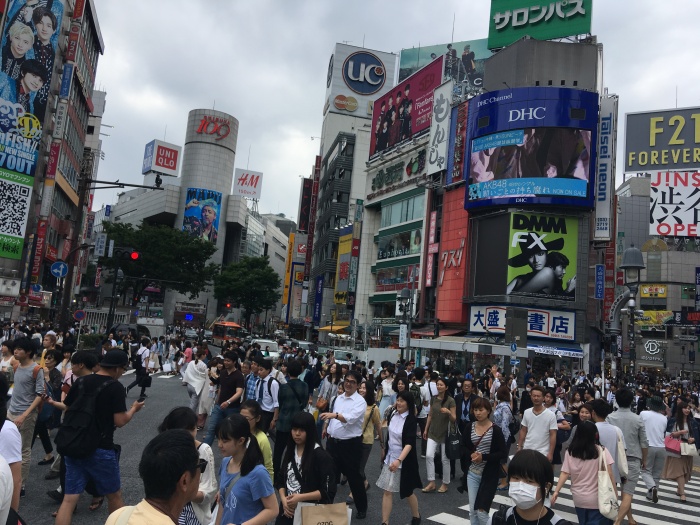
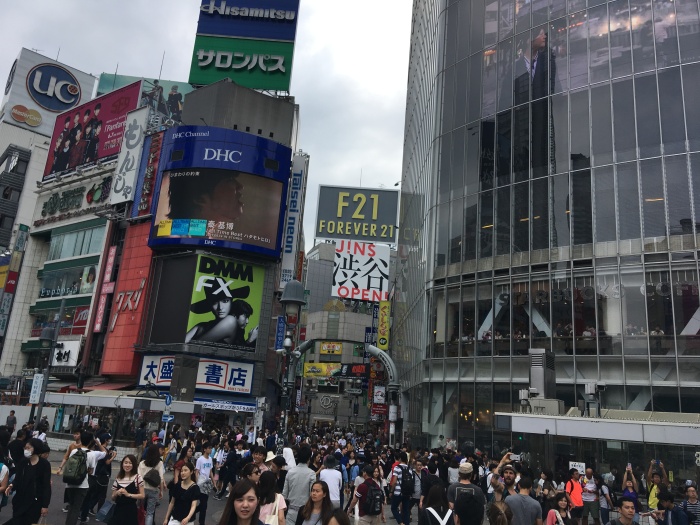









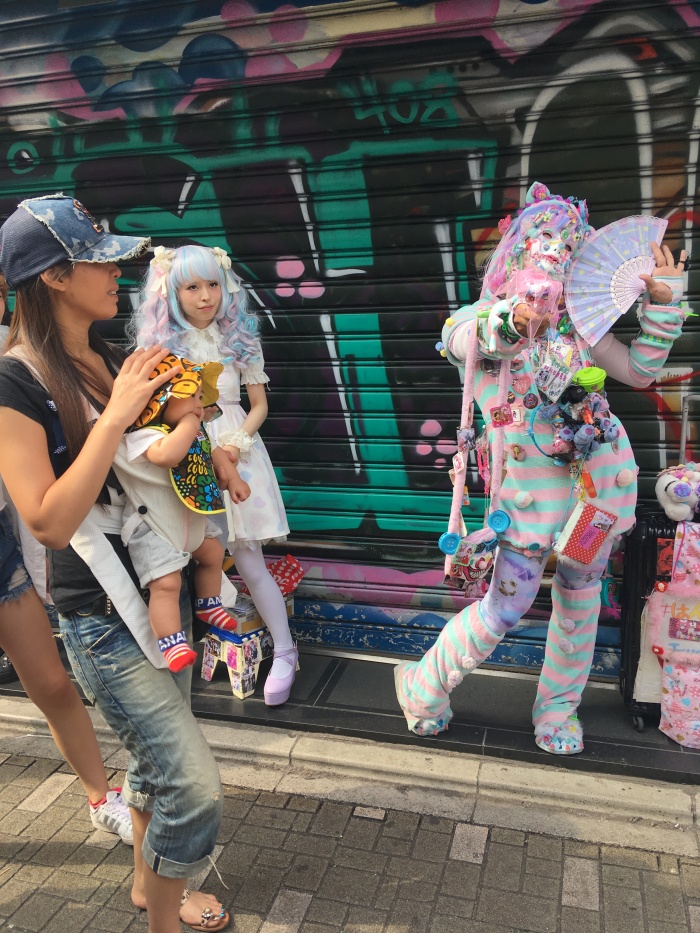
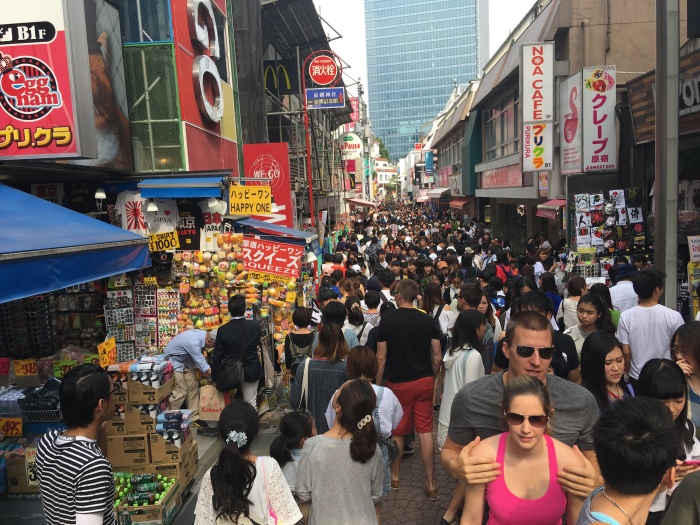
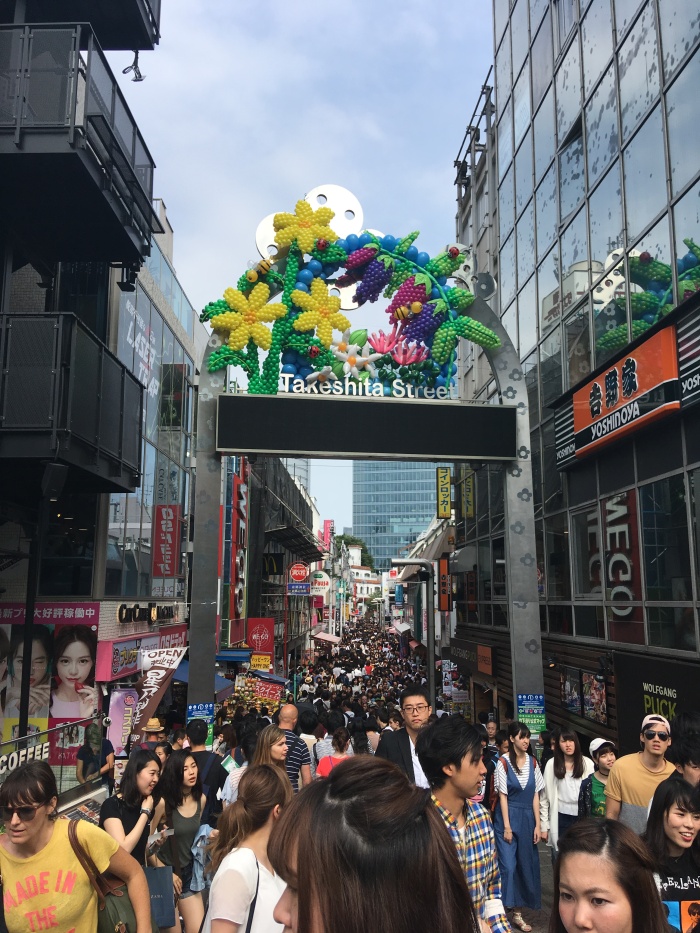




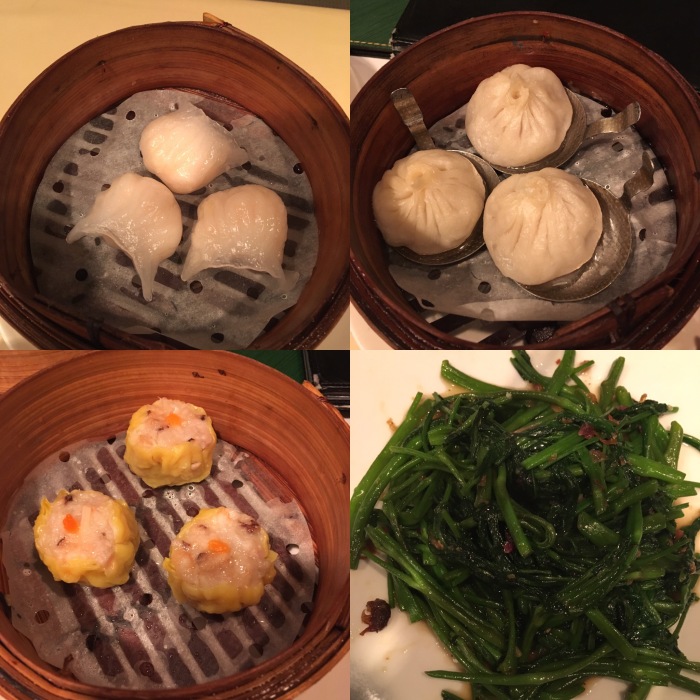 A day trip to Kamakura was next which is about an hour out of the central city. This was a lot quieter and had a lot of temples and shrines, as well as a big bronze Amida Buddha (Kotoku-in temple) which was constructed over ten years in the mid 13th century. You could climb inside him and have a look at the construction of the metal work. It was originally located inside a large temple hall, but this was destroyed during a natural disaster. It has been standing in open air since 1495.
A day trip to Kamakura was next which is about an hour out of the central city. This was a lot quieter and had a lot of temples and shrines, as well as a big bronze Amida Buddha (Kotoku-in temple) which was constructed over ten years in the mid 13th century. You could climb inside him and have a look at the construction of the metal work. It was originally located inside a large temple hall, but this was destroyed during a natural disaster. It has been standing in open air since 1495. 
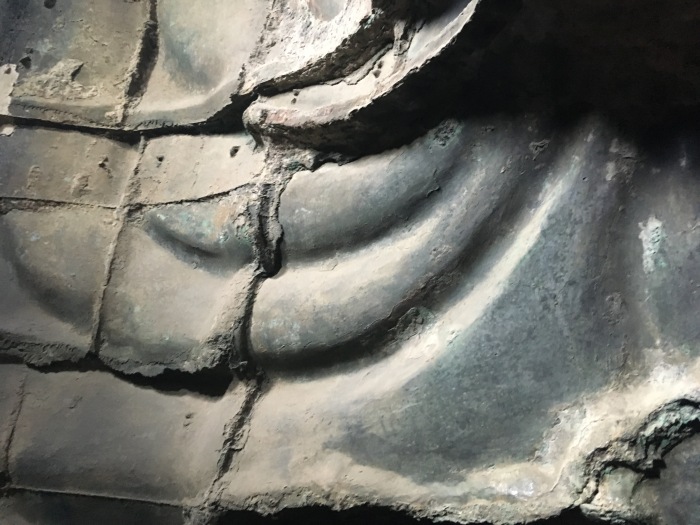








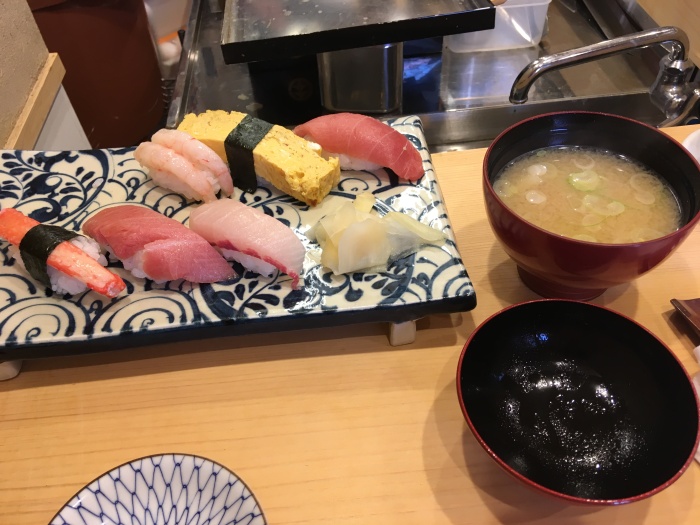


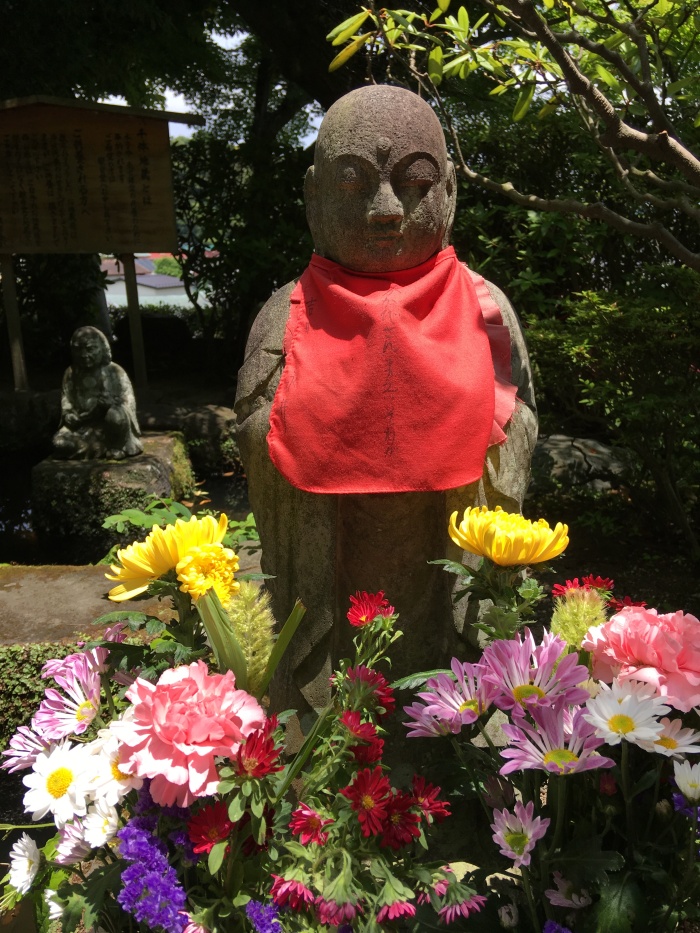

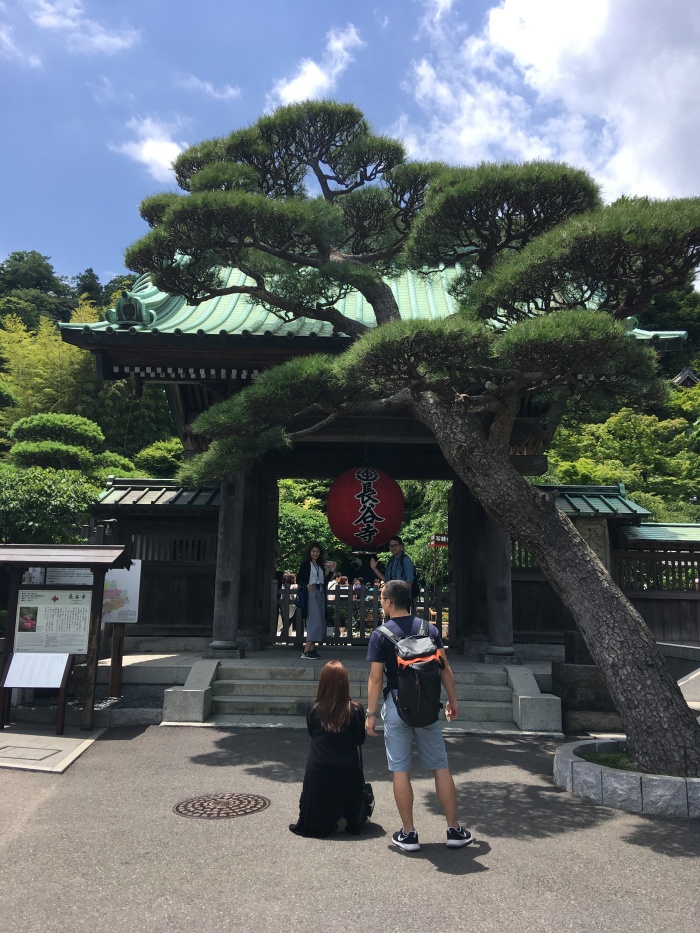
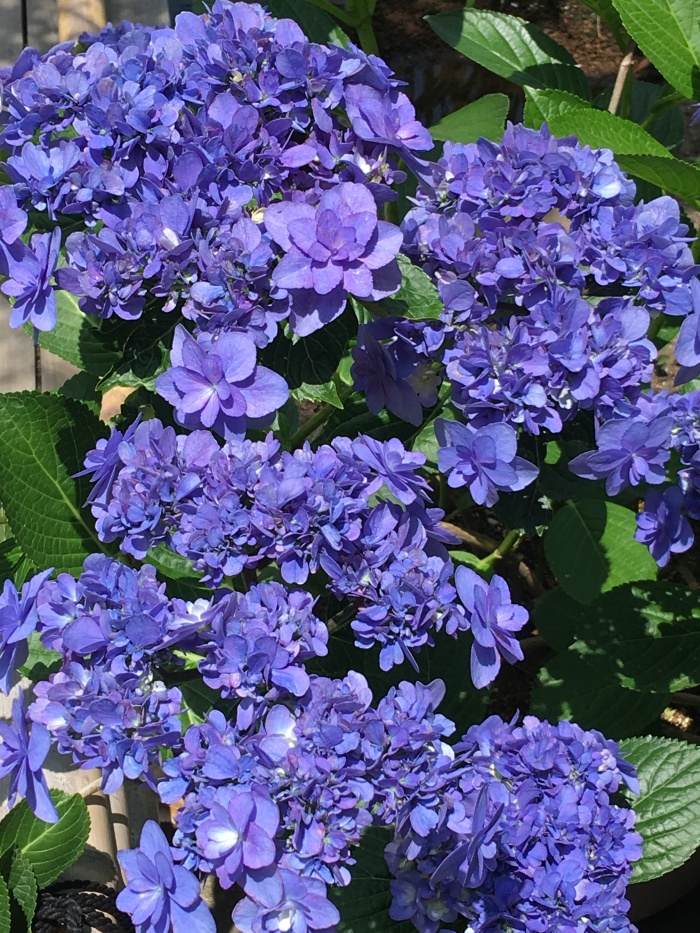
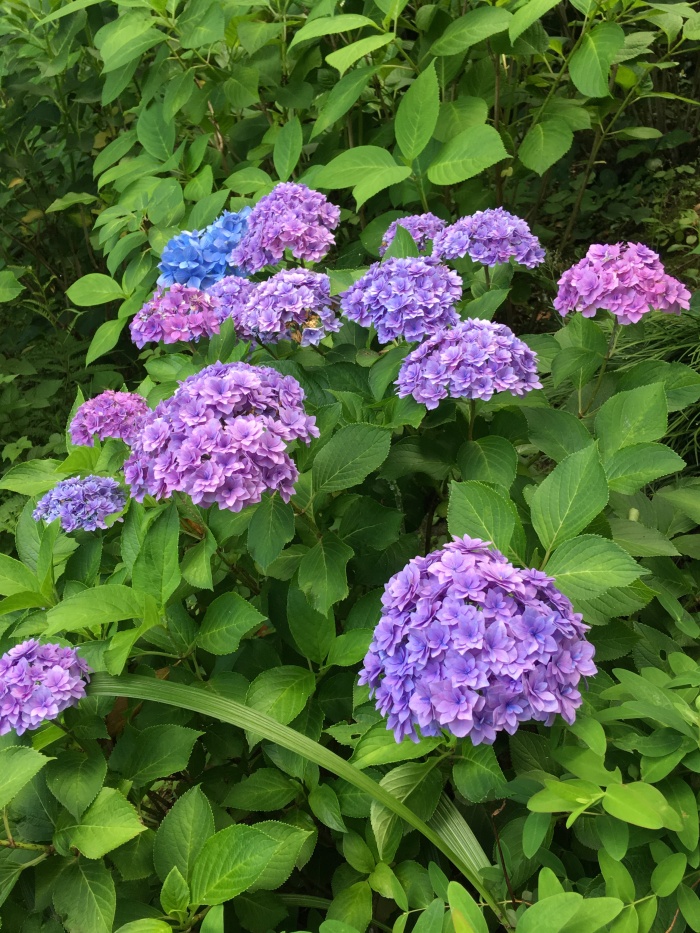



















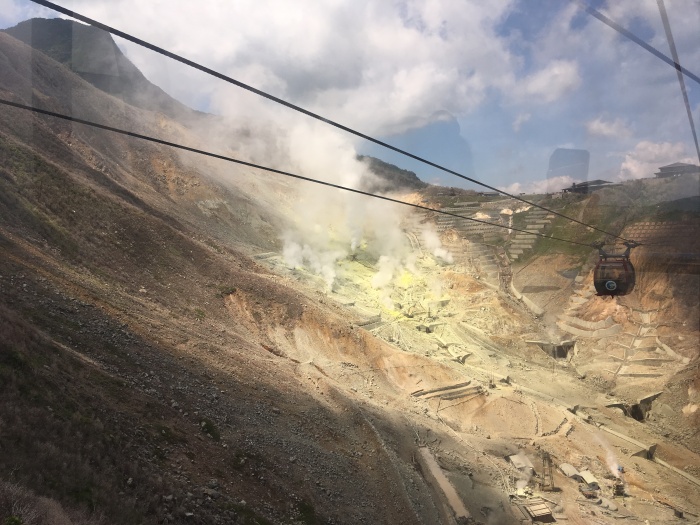
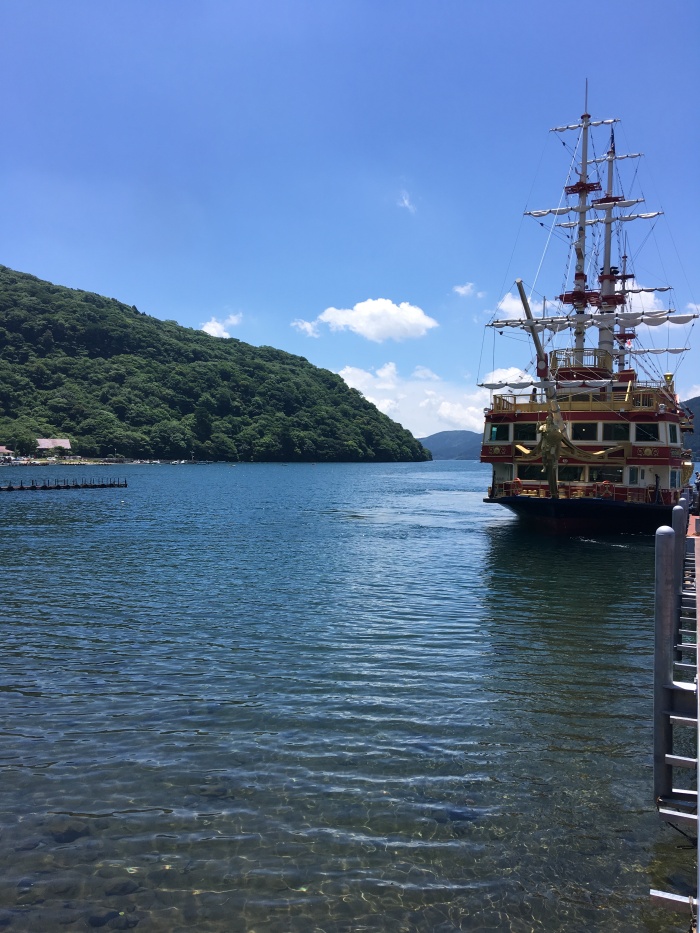
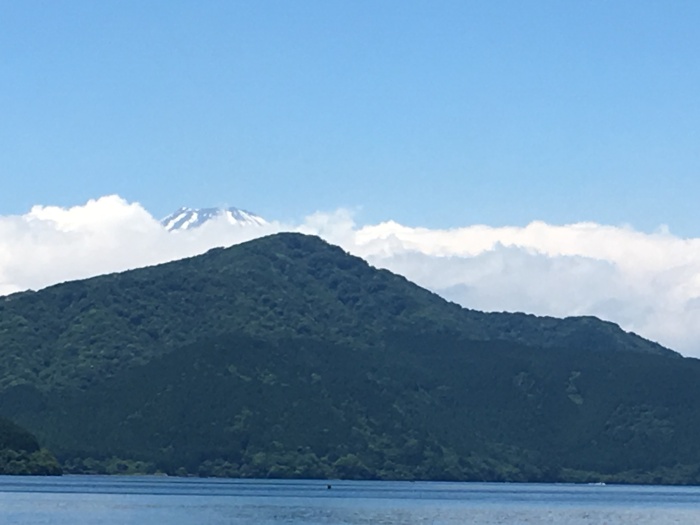
















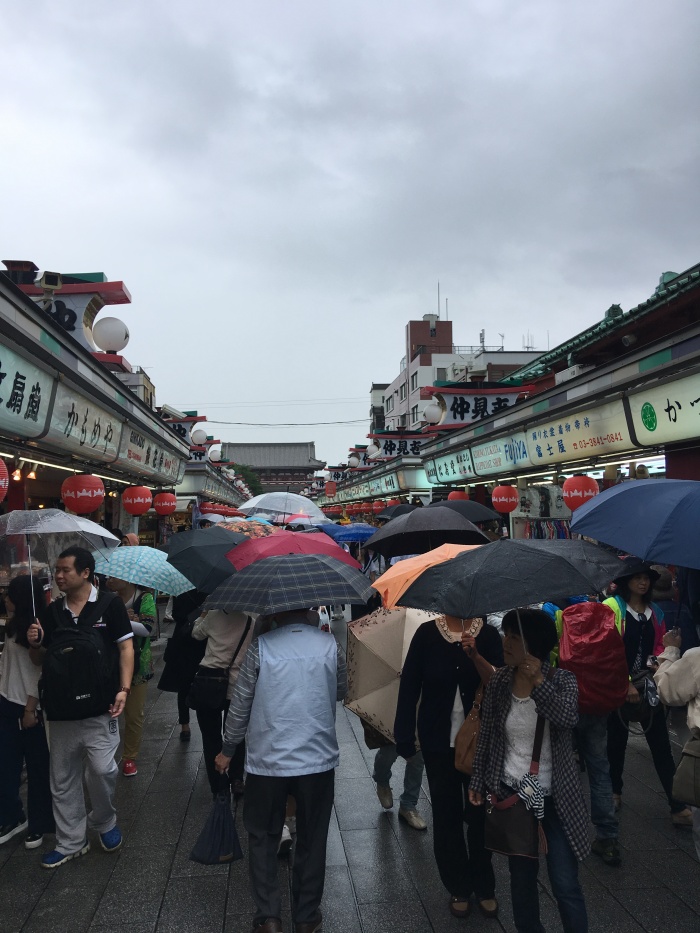
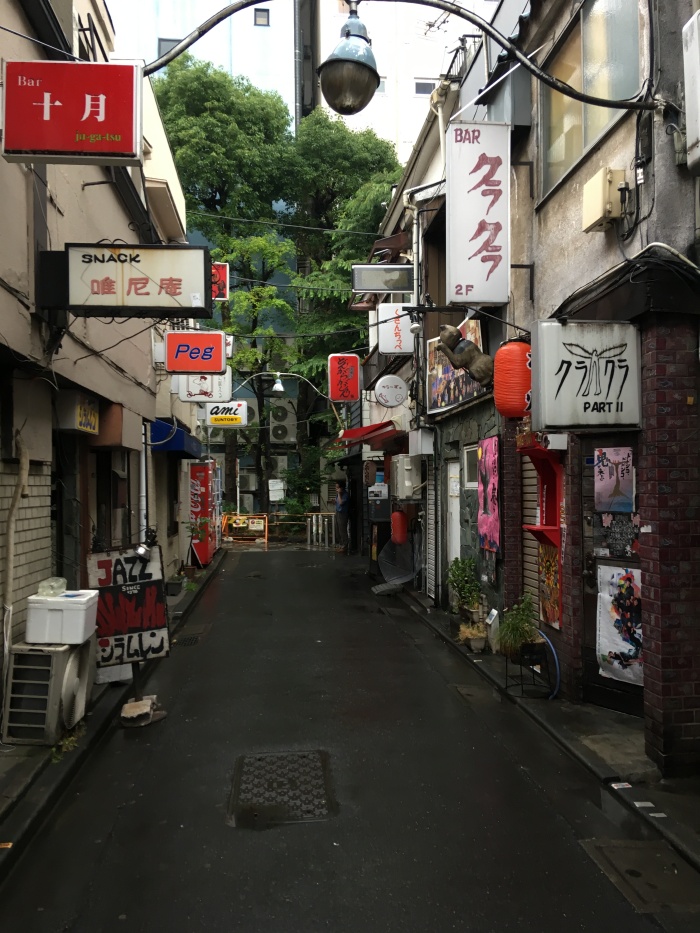




















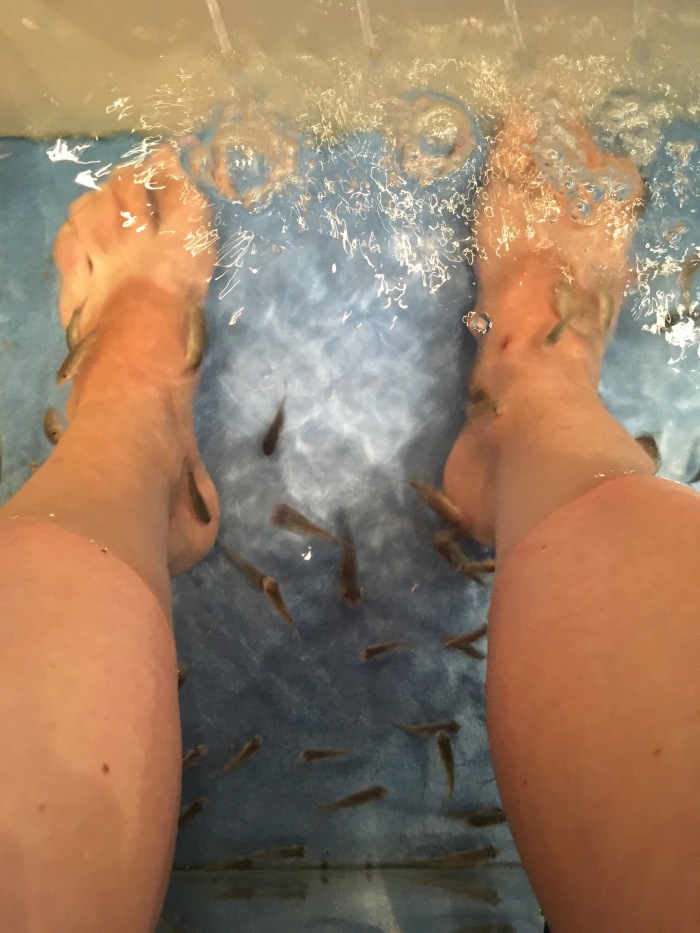

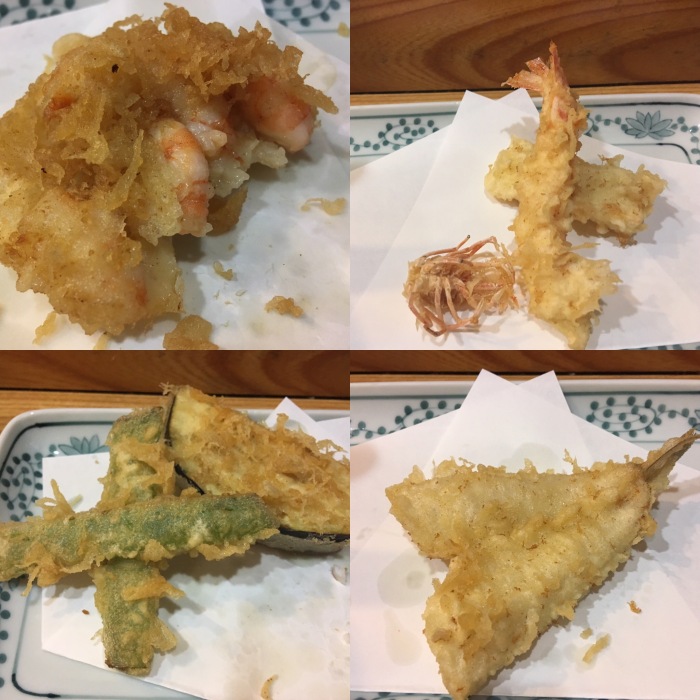
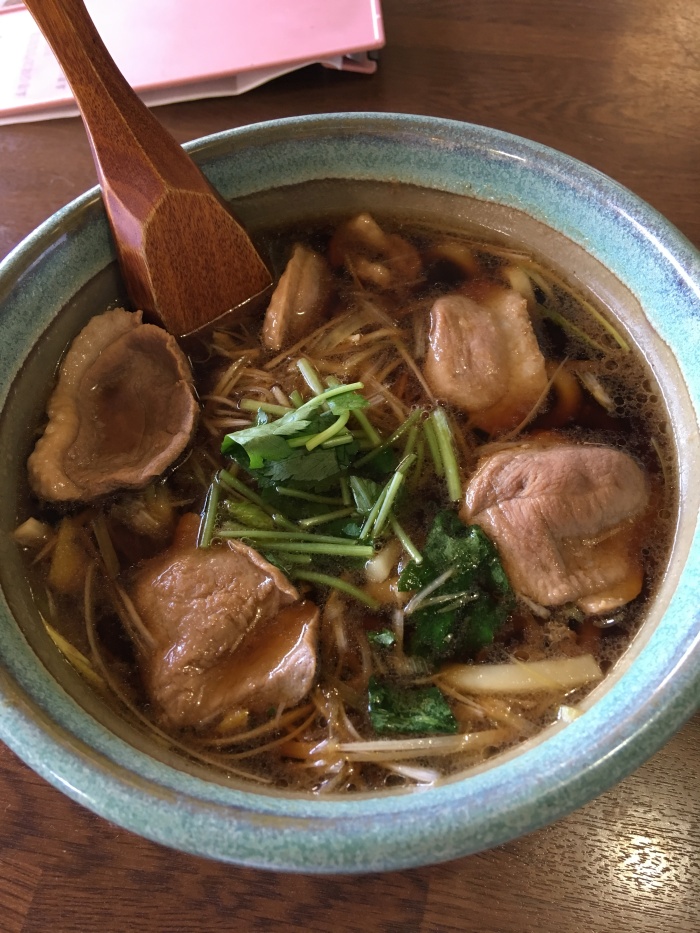






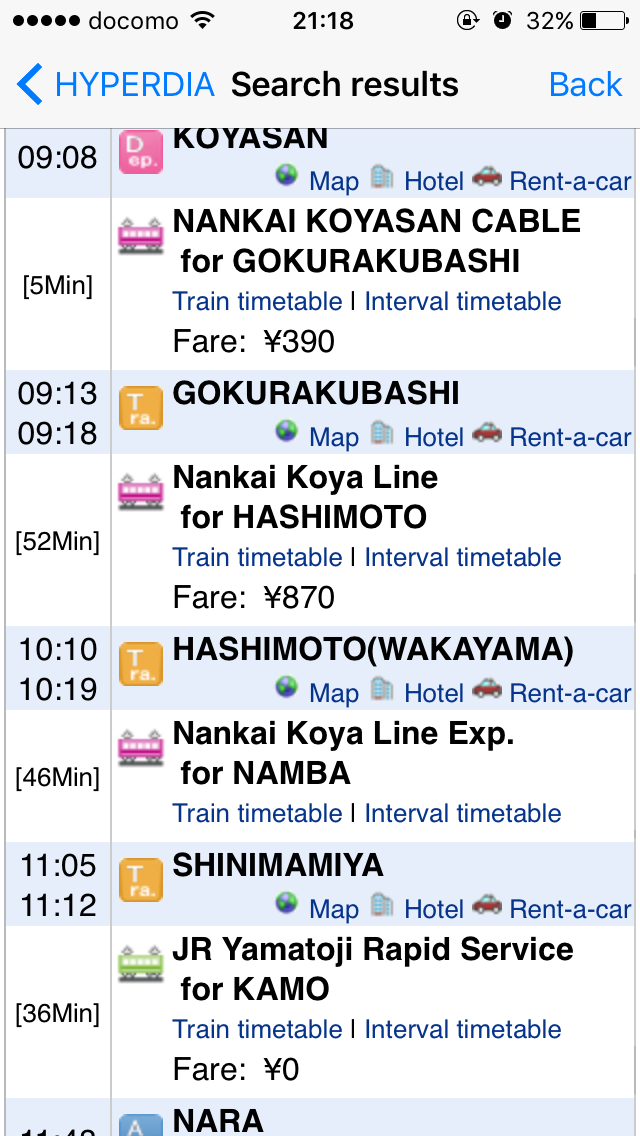
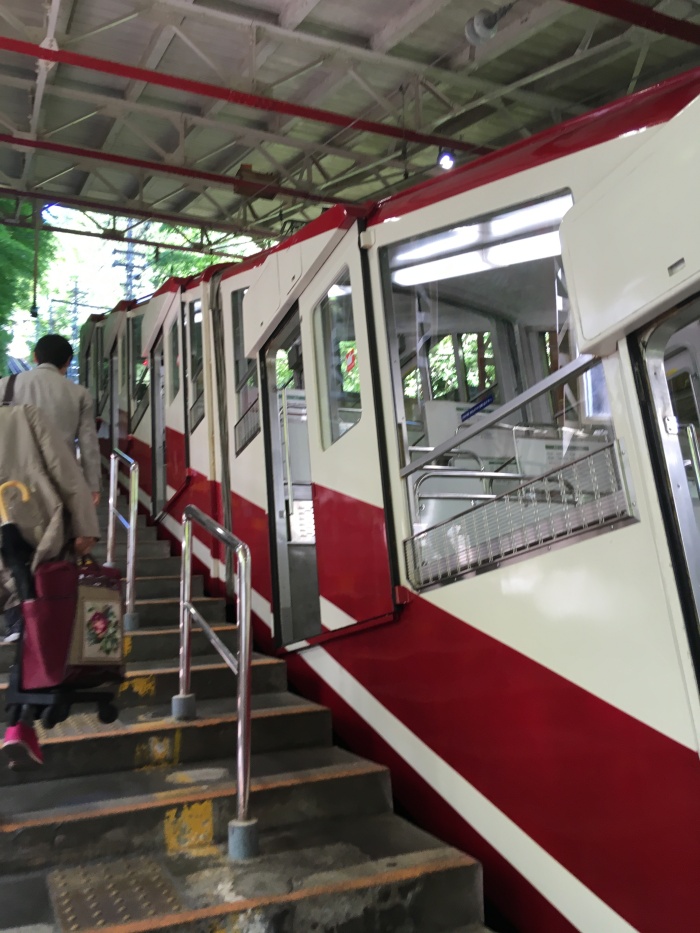

















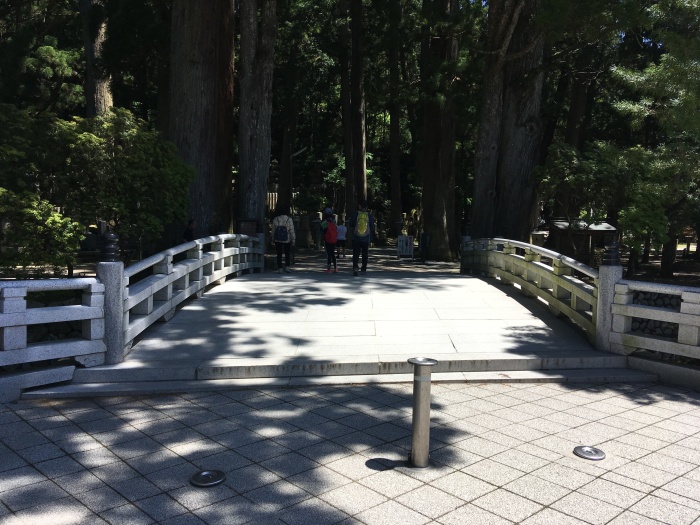


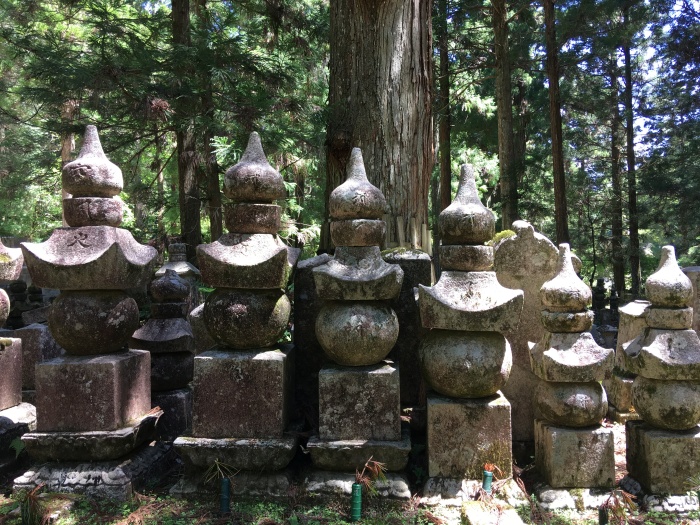
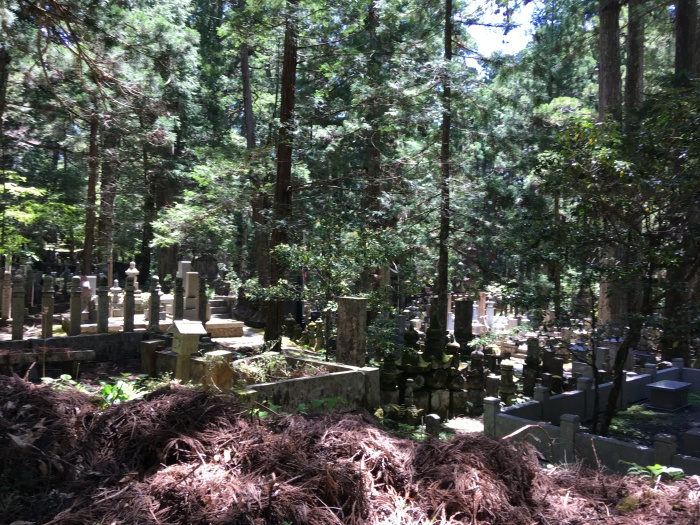
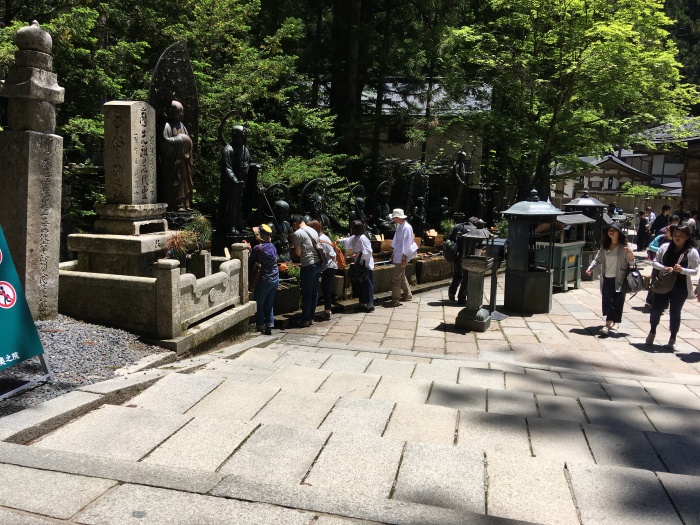
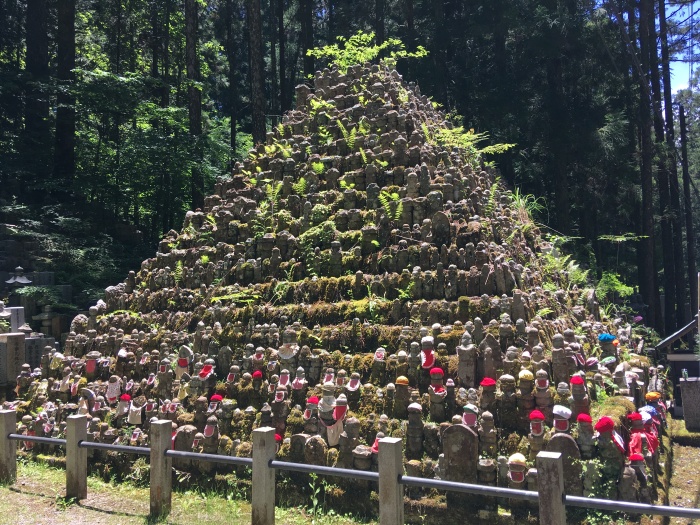
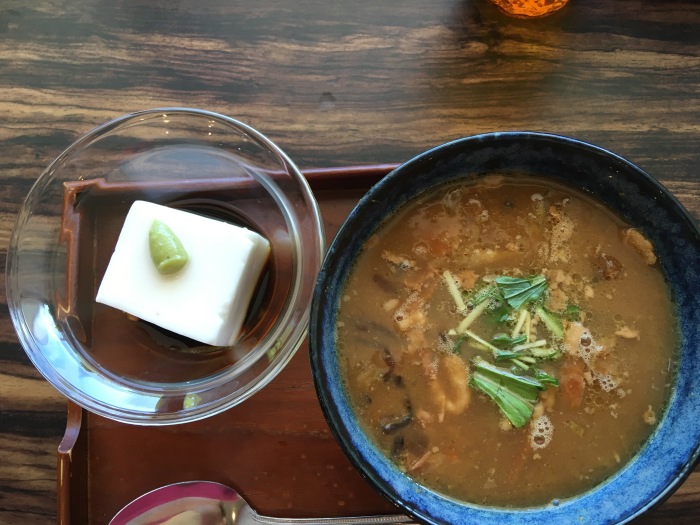




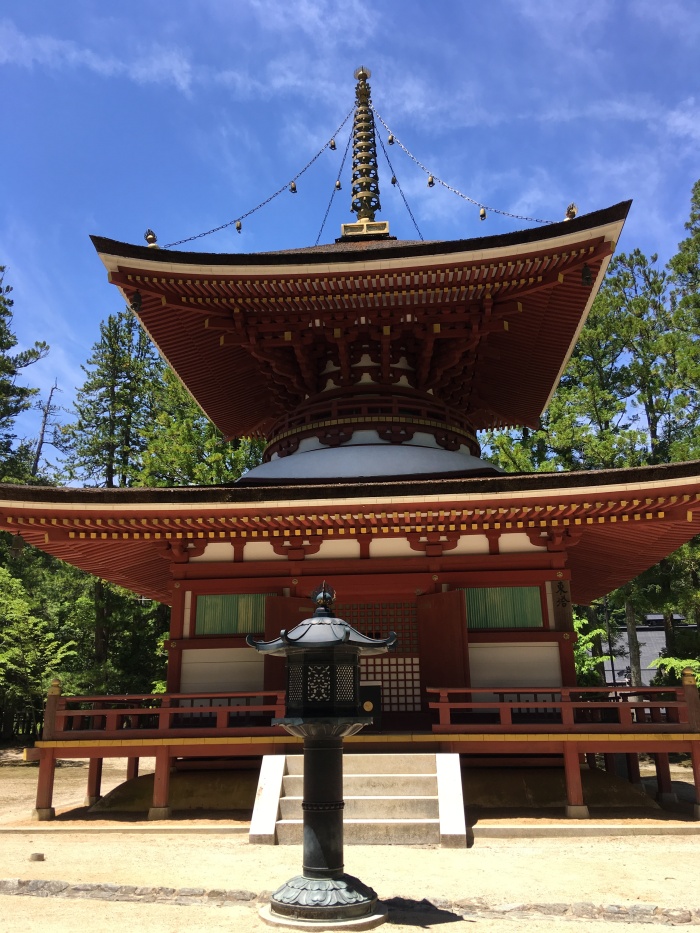
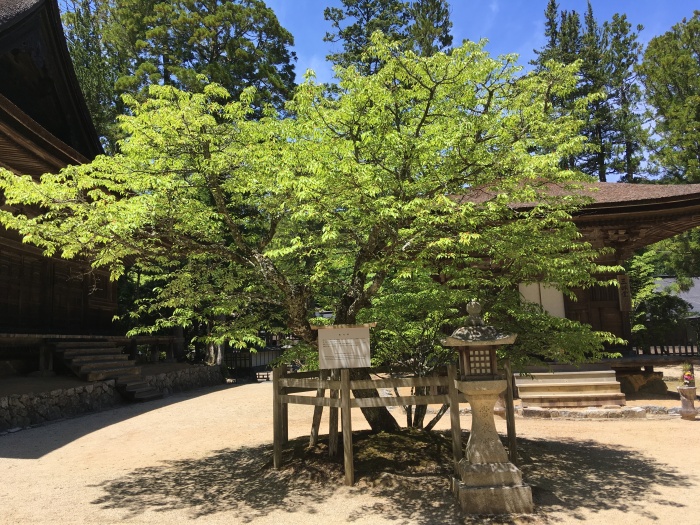
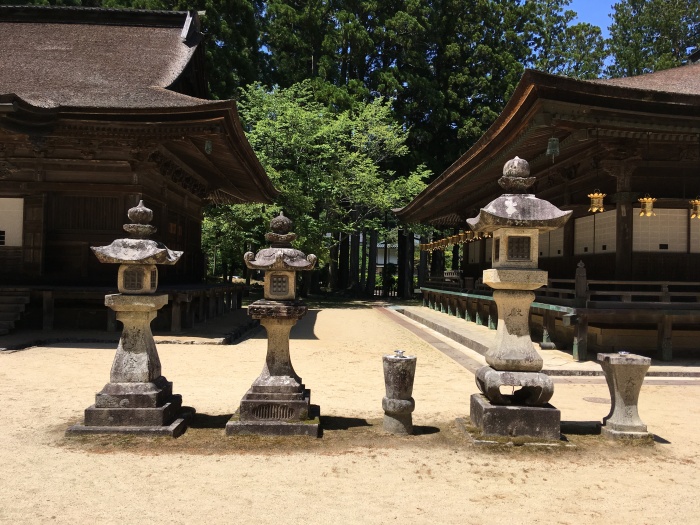
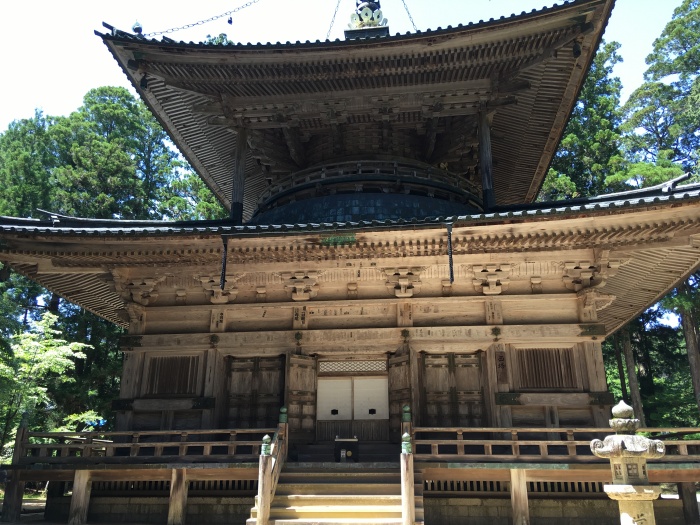













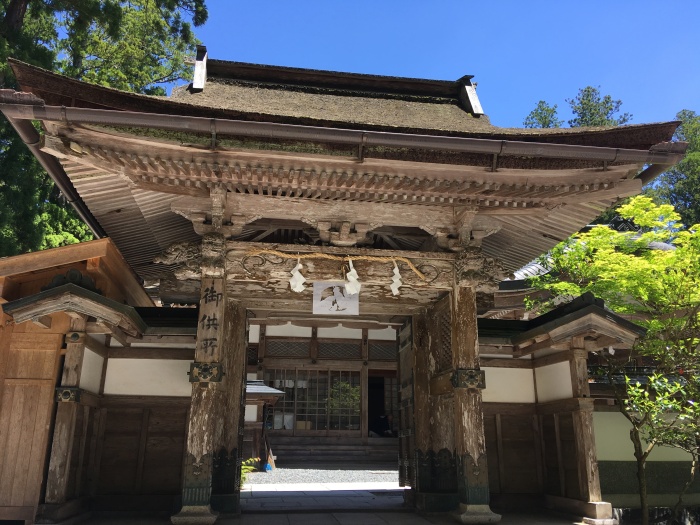 I was invited to attend a morning prayer ceremony in the morning at 06:30, and then have breakfast after. I was shown to my room and it was amazing. No shoes, obviously, and very basic to fit in with those who lived in the monastery. There was also a public bath (onsen), and this would only be available in the evening. I would be sleeping on a futon bed which would be made up after I had finished eating. I enjoyed the peace and quiet after a few hectic days. The food was incredible! No meat or fish, but I think there was tofu….I thought it would be quite a lonely experience, but I enjoyed the time to register my experiences so far….and to sort my bag out! Living out of a bag can be like playing a lucky dip sometimes – you’re never quite sure what clothes you’ll pull out. I was able to relax.
I was invited to attend a morning prayer ceremony in the morning at 06:30, and then have breakfast after. I was shown to my room and it was amazing. No shoes, obviously, and very basic to fit in with those who lived in the monastery. There was also a public bath (onsen), and this would only be available in the evening. I would be sleeping on a futon bed which would be made up after I had finished eating. I enjoyed the peace and quiet after a few hectic days. The food was incredible! No meat or fish, but I think there was tofu….I thought it would be quite a lonely experience, but I enjoyed the time to register my experiences so far….and to sort my bag out! Living out of a bag can be like playing a lucky dip sometimes – you’re never quite sure what clothes you’ll pull out. I was able to relax. 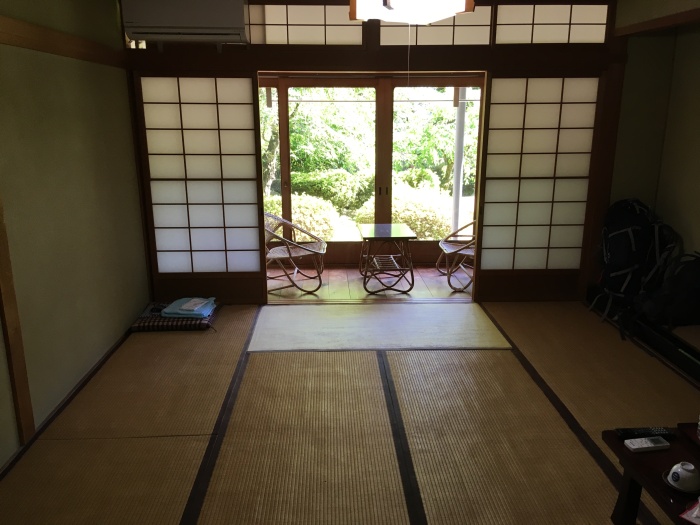


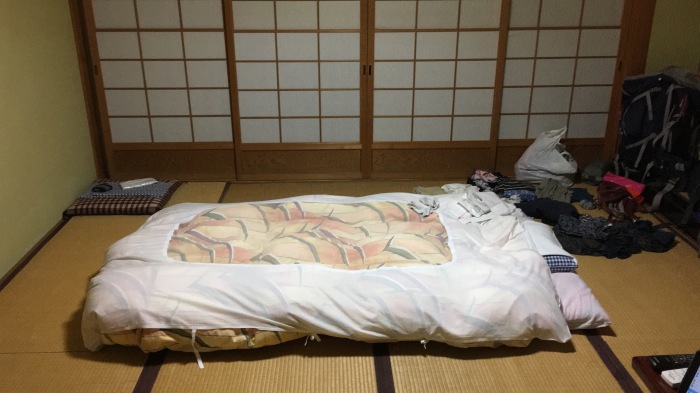
 The prayers the next morning was something that will stay with me for a long time. Even though I did not understand any of what was happening, there was a sense of spirituality and dedication from the monks who devote themselves to this way of life. We were invited to make a wish on a piece of wood which would get burned, as well as contribute to the incense burning by adding wood chips, and think about those who we would wish good health. It was quite meaningful actually and I would recommend it to anyone.
The prayers the next morning was something that will stay with me for a long time. Even though I did not understand any of what was happening, there was a sense of spirituality and dedication from the monks who devote themselves to this way of life. We were invited to make a wish on a piece of wood which would get burned, as well as contribute to the incense burning by adding wood chips, and think about those who we would wish good health. It was quite meaningful actually and I would recommend it to anyone. 




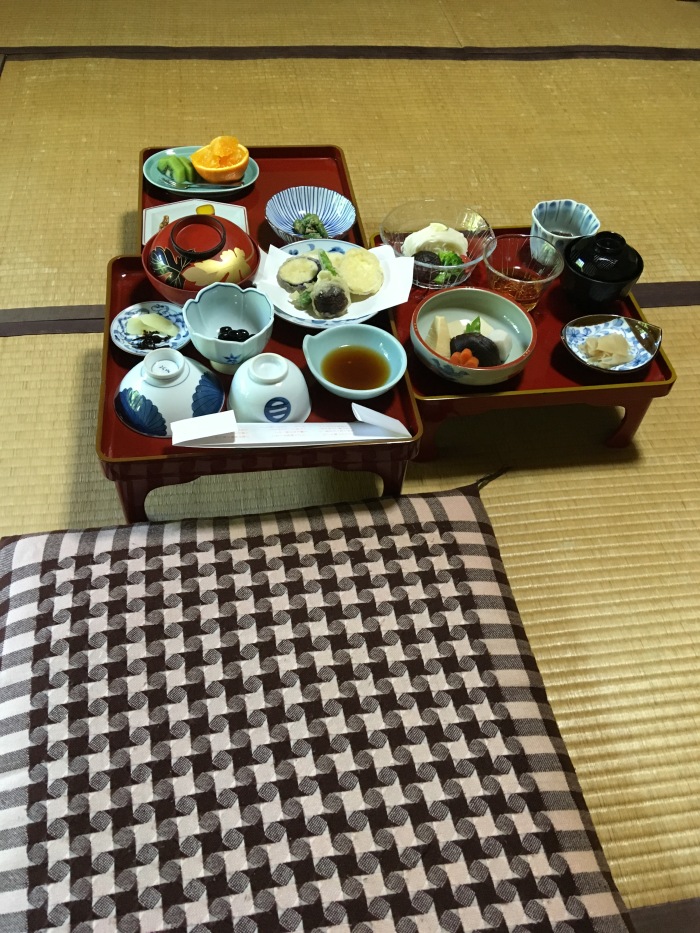
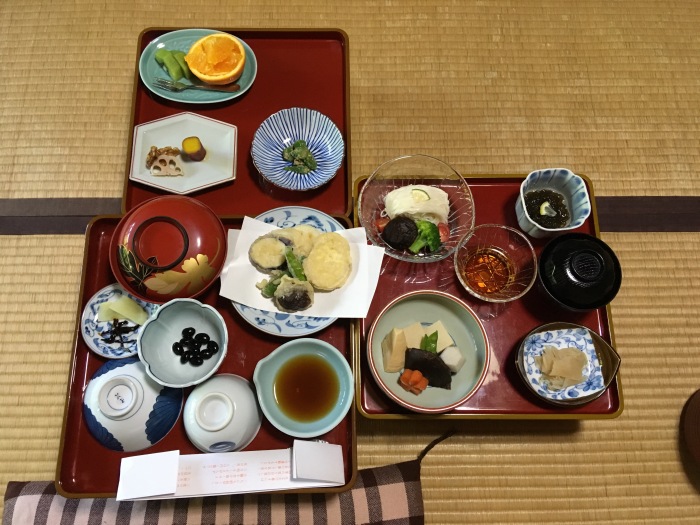

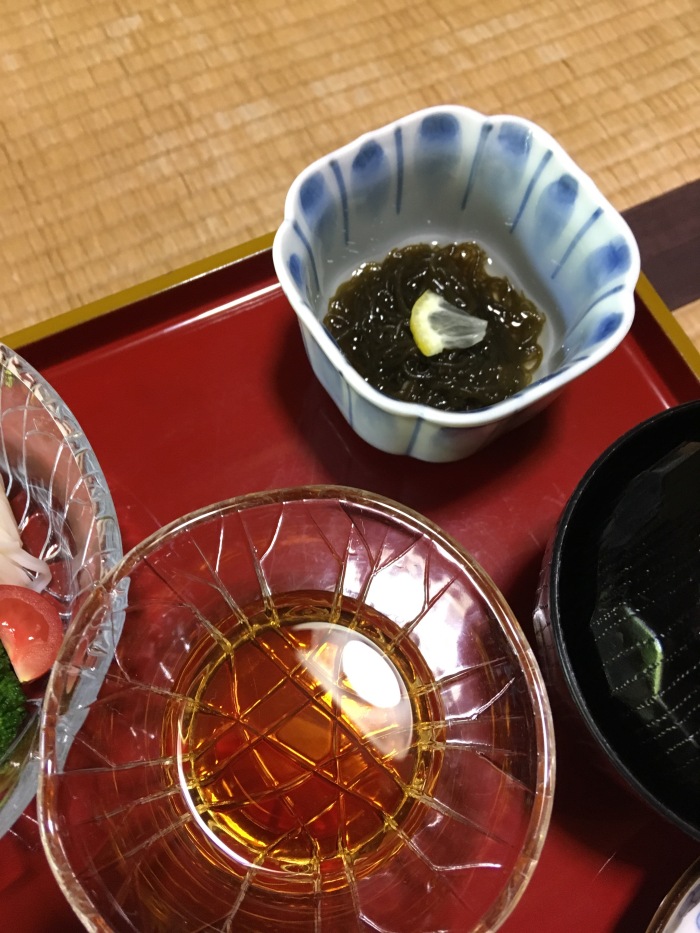
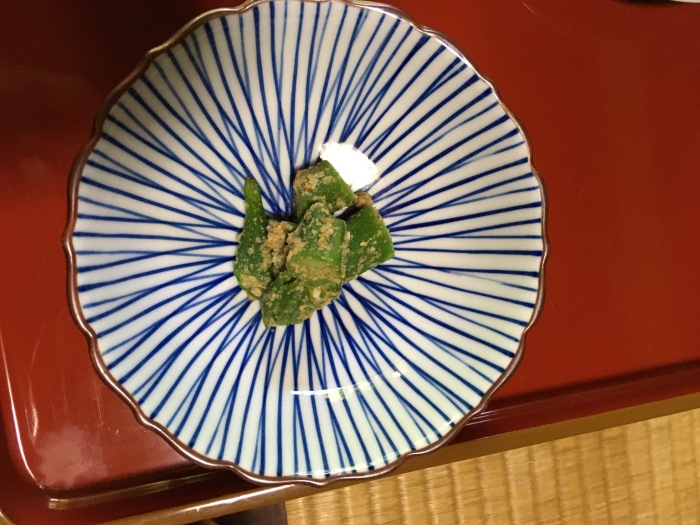
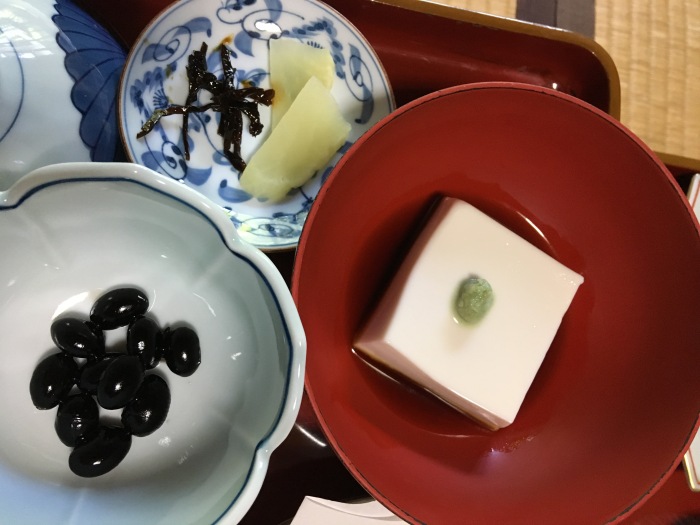
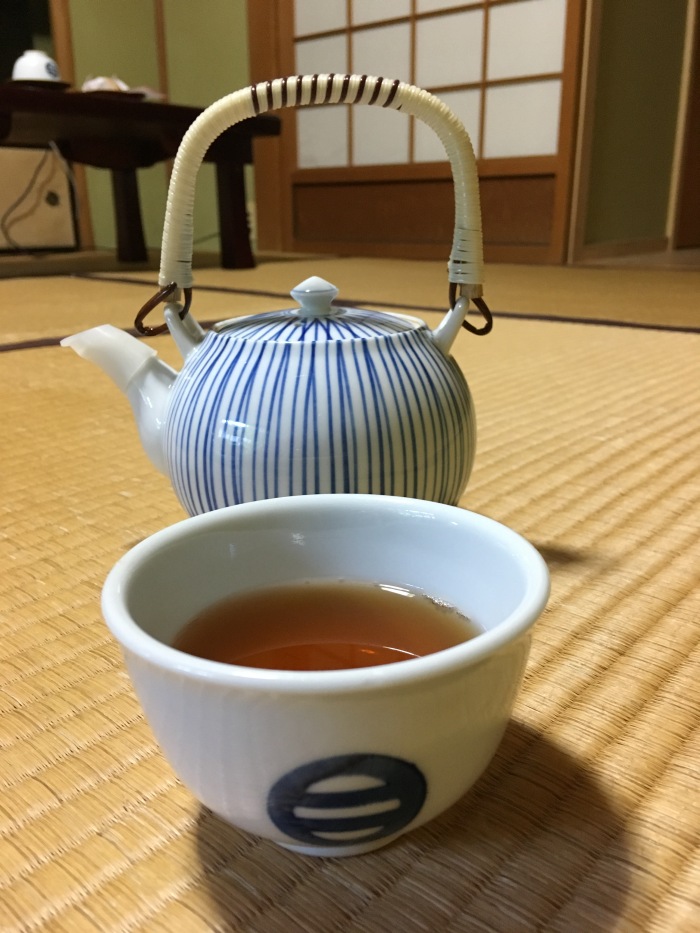







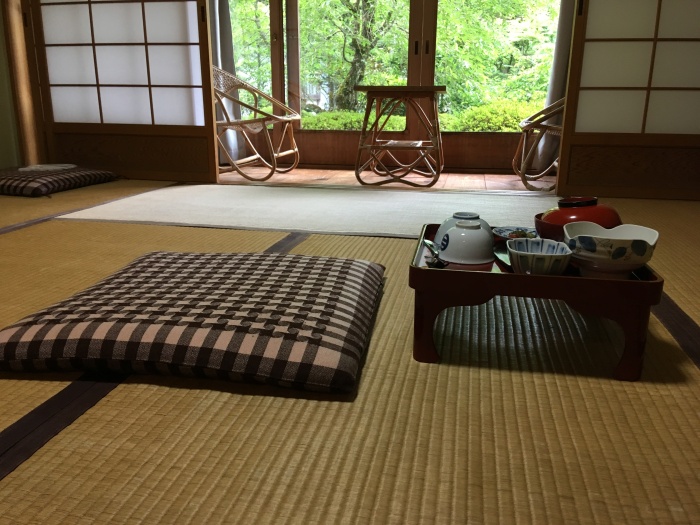
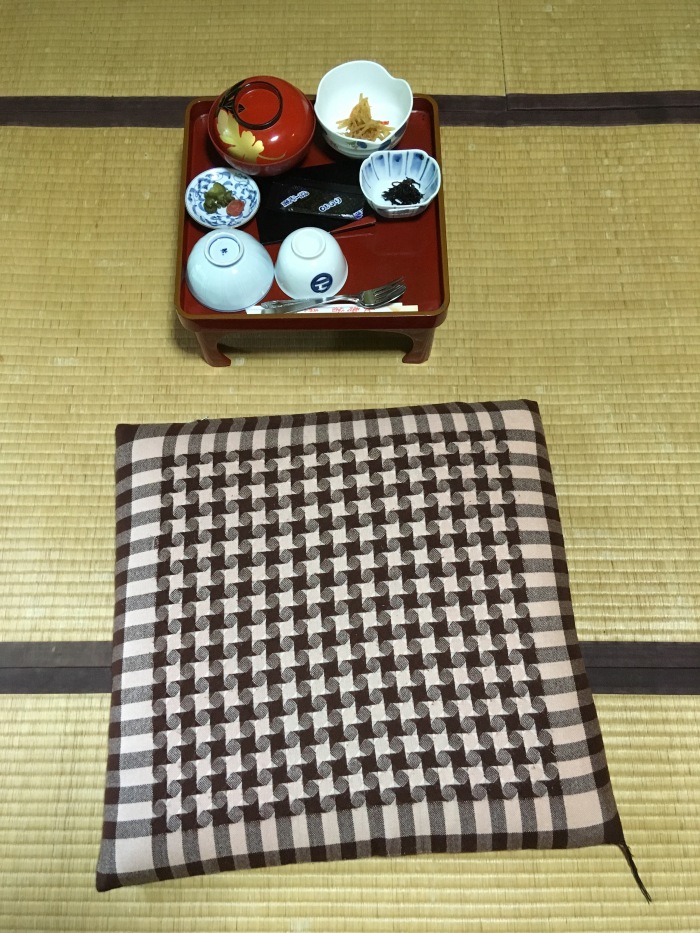
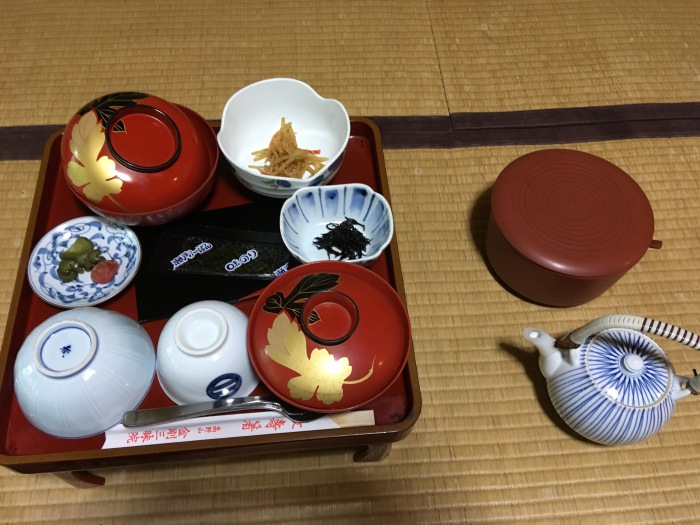
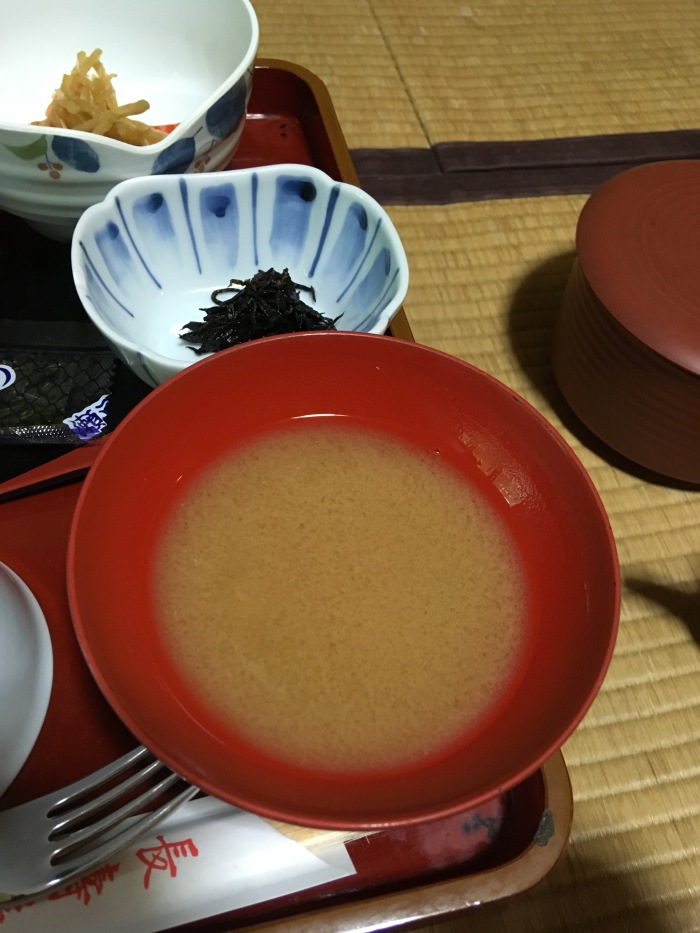




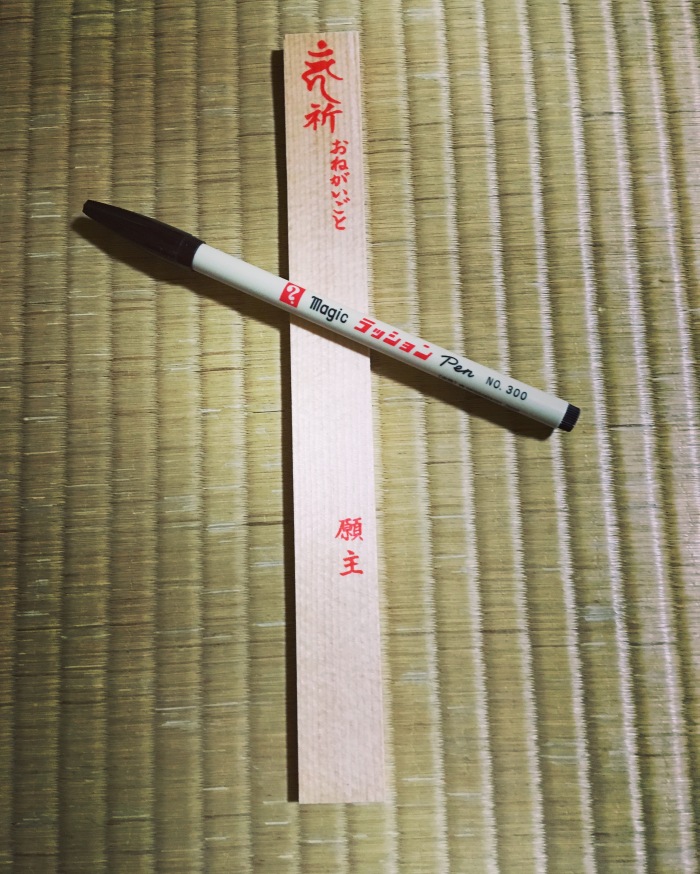











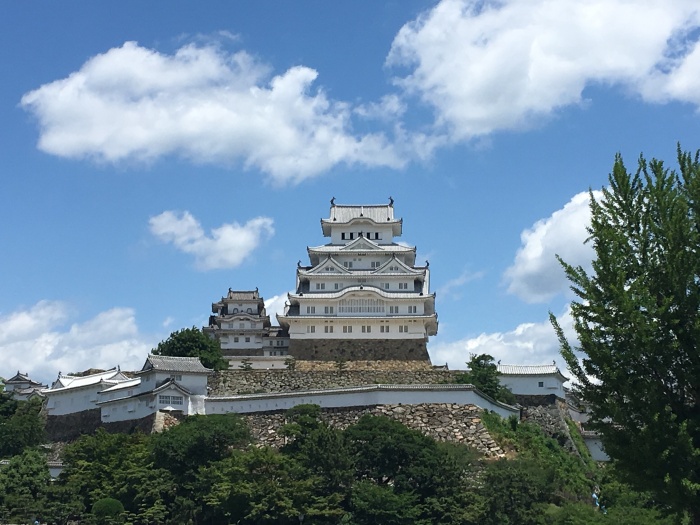
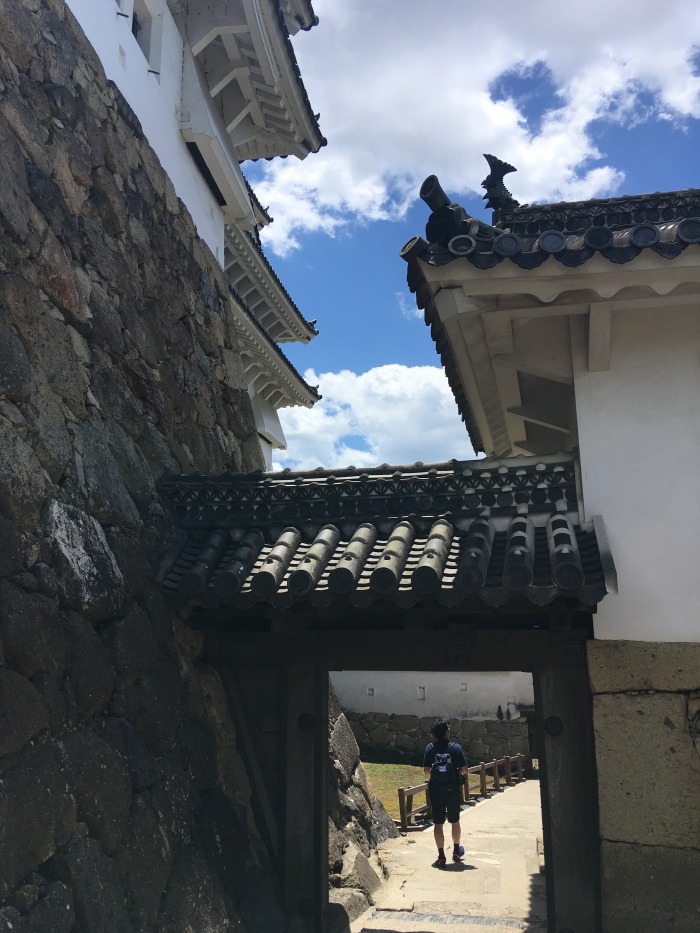
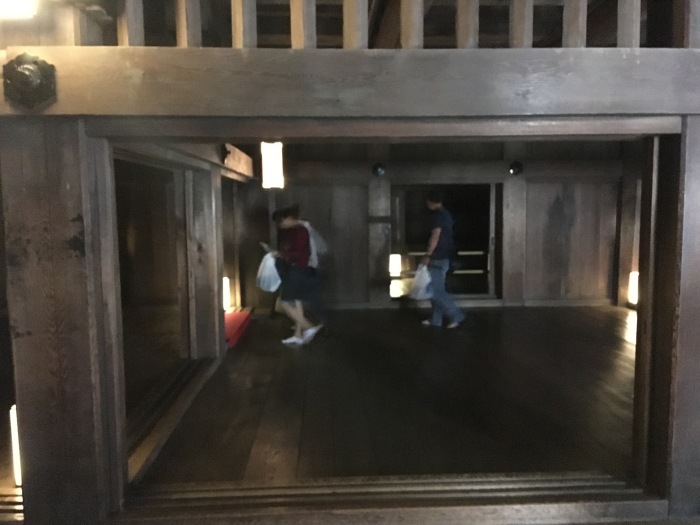
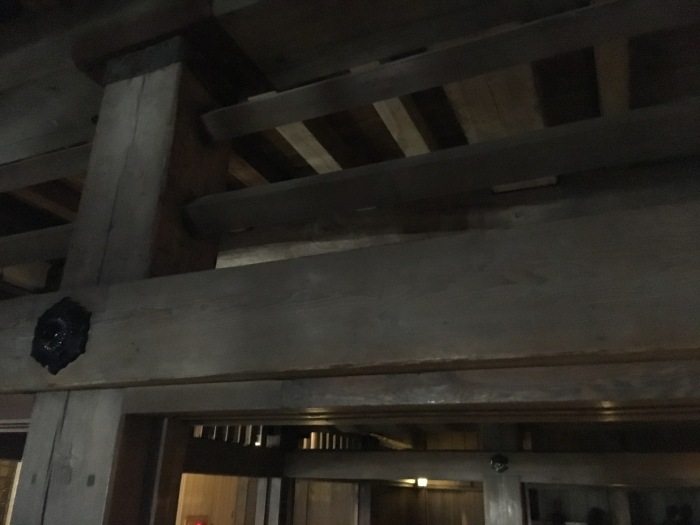

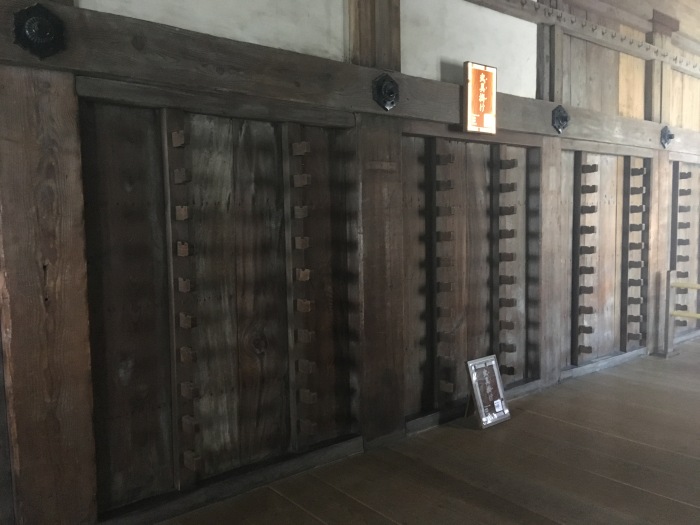
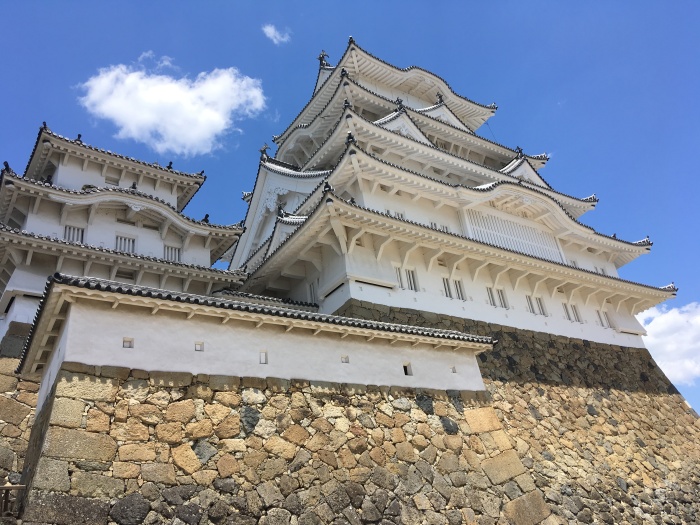
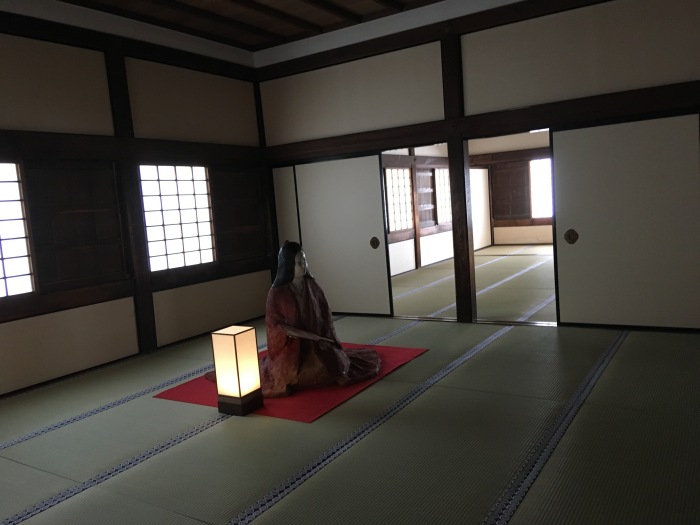

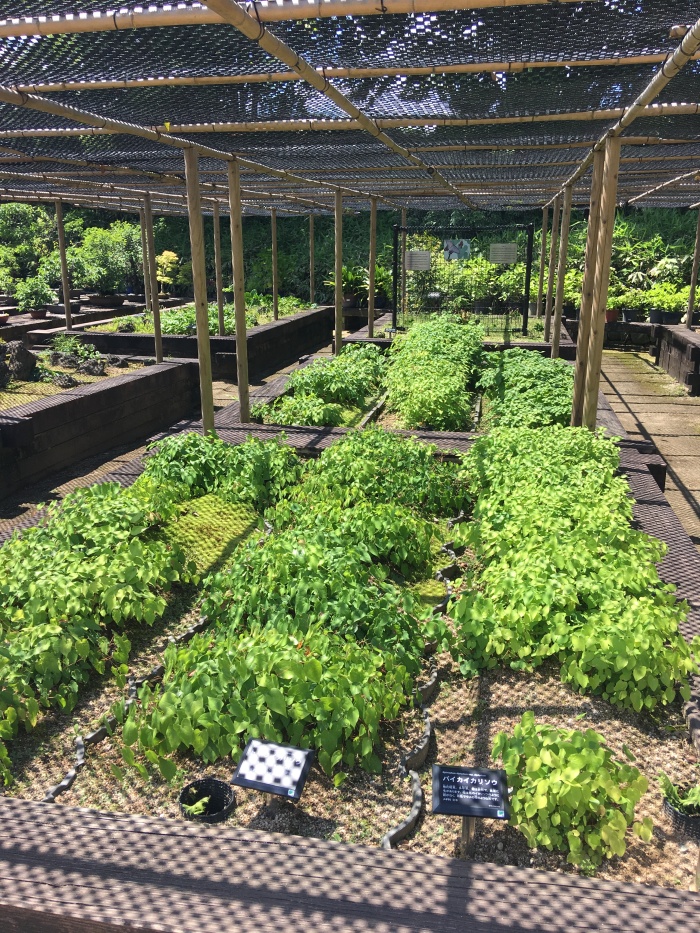
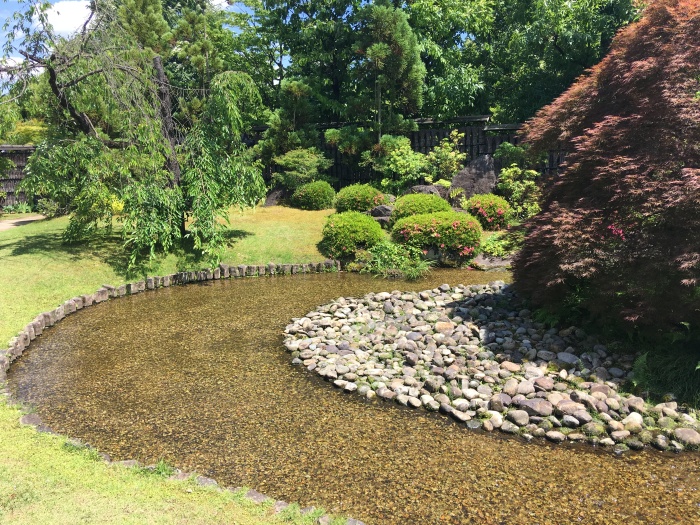
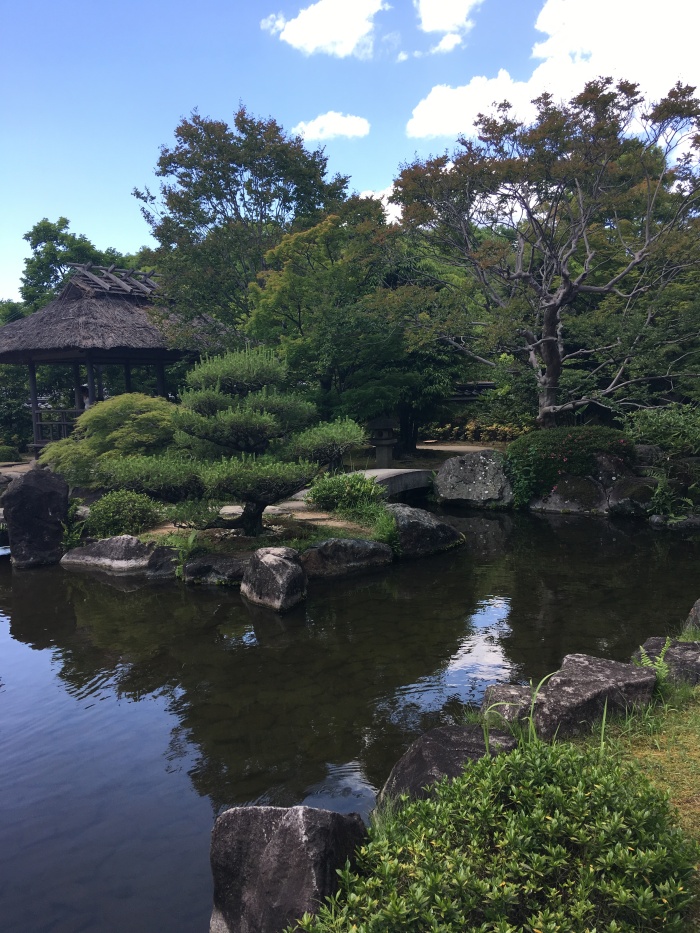


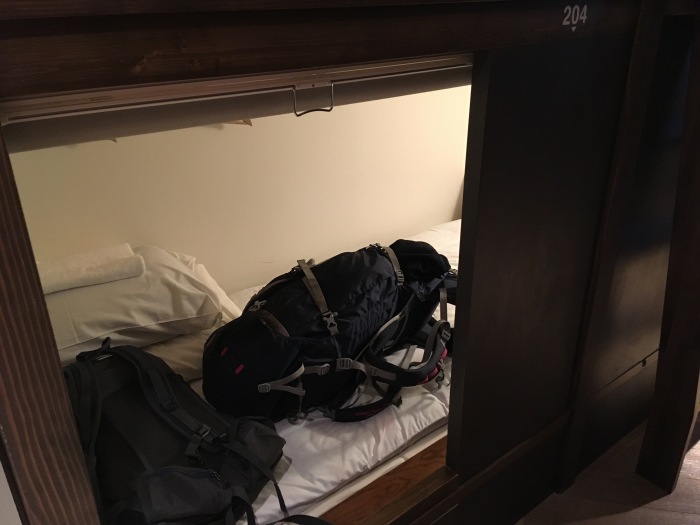









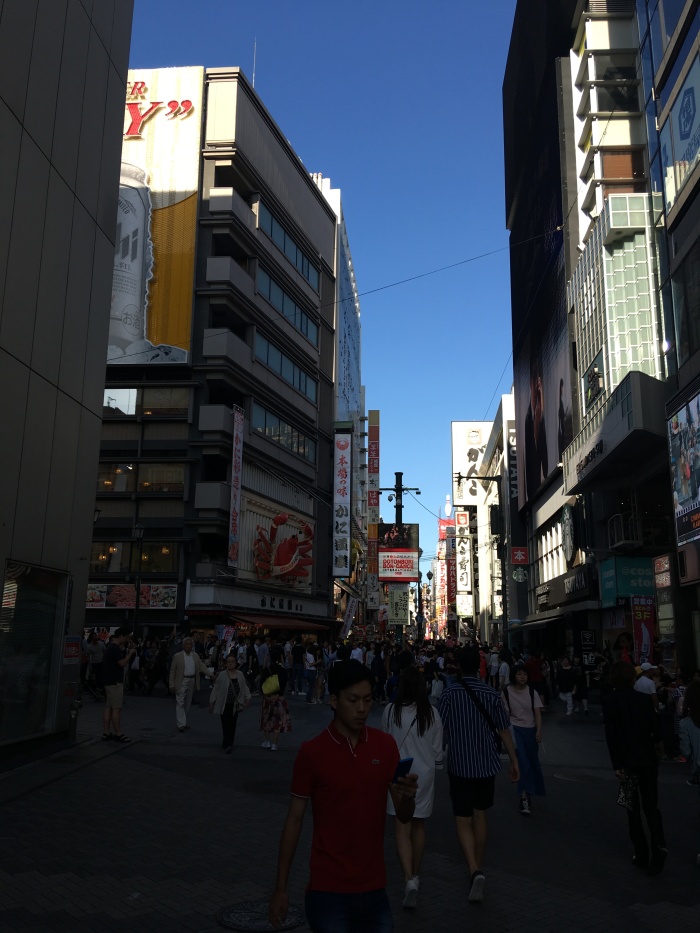

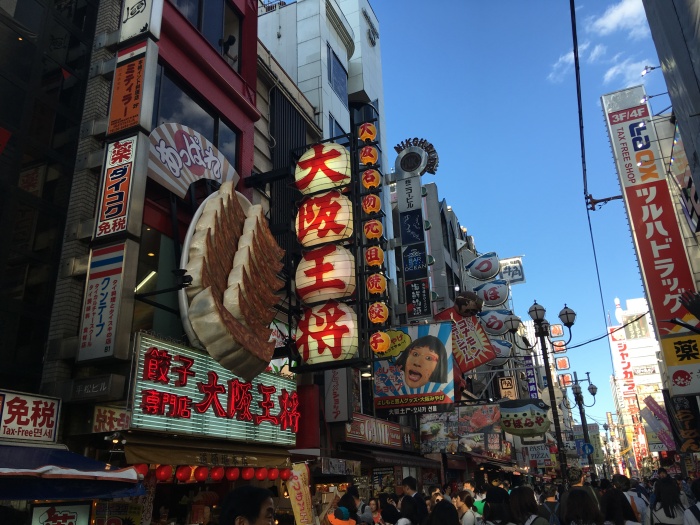
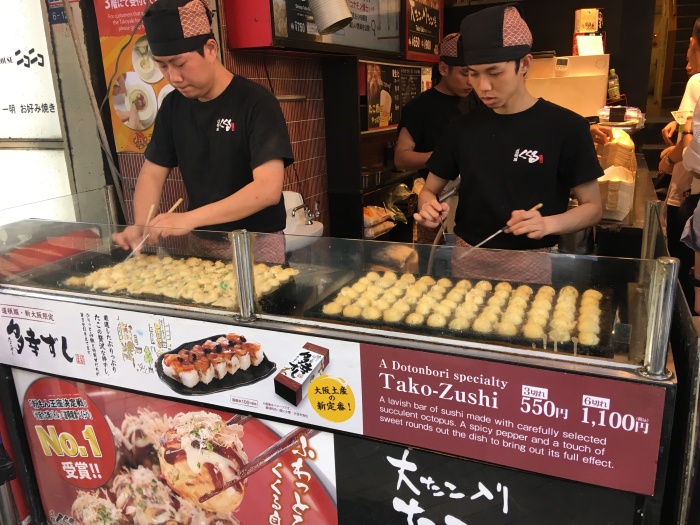
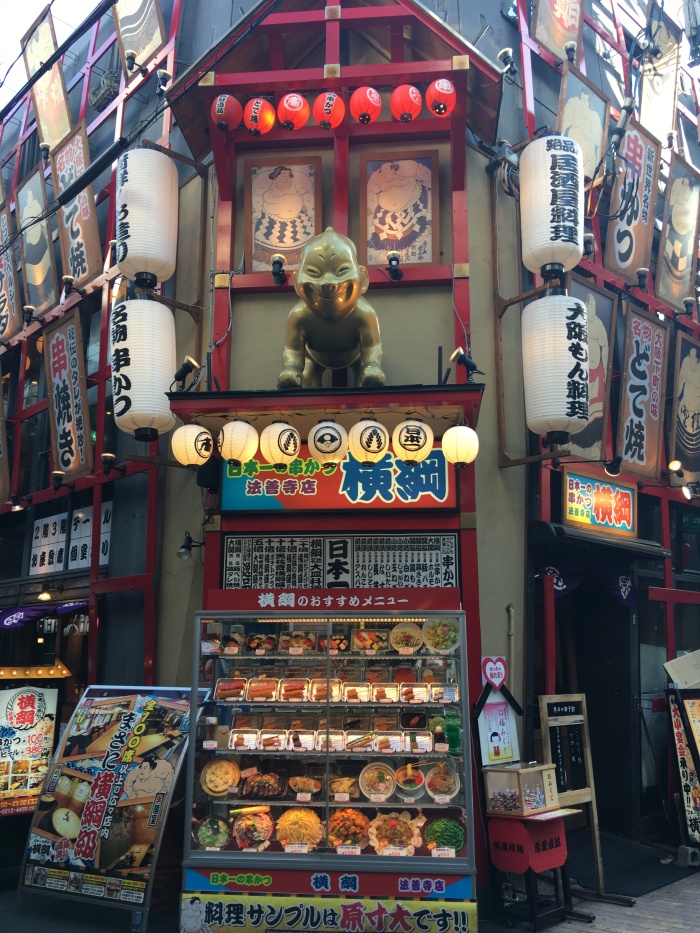


 Big objects on the walls above food places illustrate the main selling point (I assume, anyway) e.g. Crab/squid. There was lots of shops in arcades too. There were so many food places to choose from. Especially down little alleyways off the main drag.
Big objects on the walls above food places illustrate the main selling point (I assume, anyway) e.g. Crab/squid. There was lots of shops in arcades too. There were so many food places to choose from. Especially down little alleyways off the main drag. 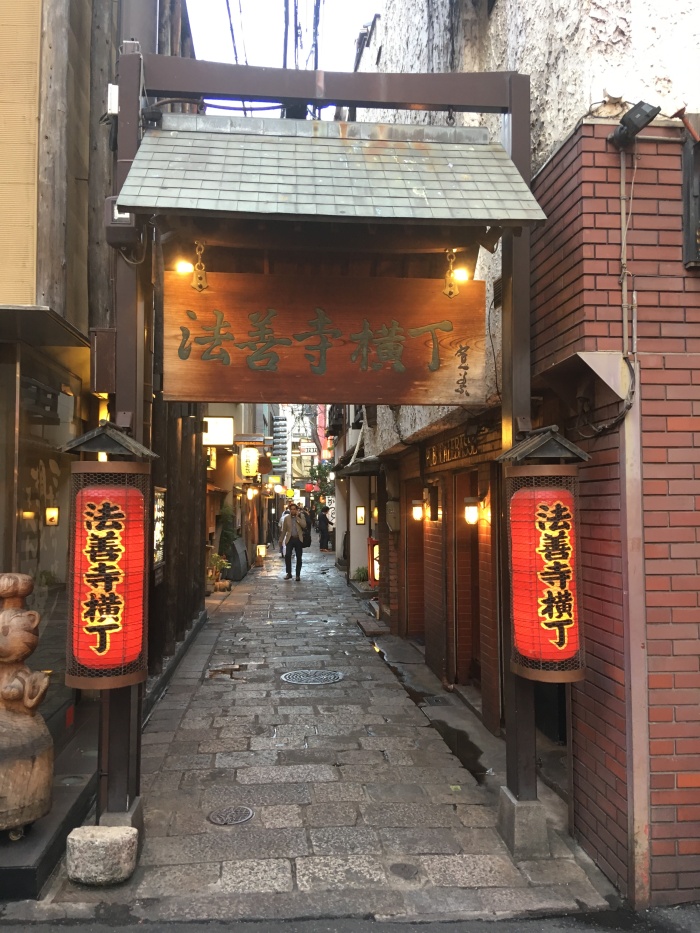 There was one little street which was meant to be the oldest street and there was a temple nearby.
There was one little street which was meant to be the oldest street and there was a temple nearby. 





 You get this a lot, I think, in Japan where you can turn down a little side street and come across a small temple or shrine.
You get this a lot, I think, in Japan where you can turn down a little side street and come across a small temple or shrine. 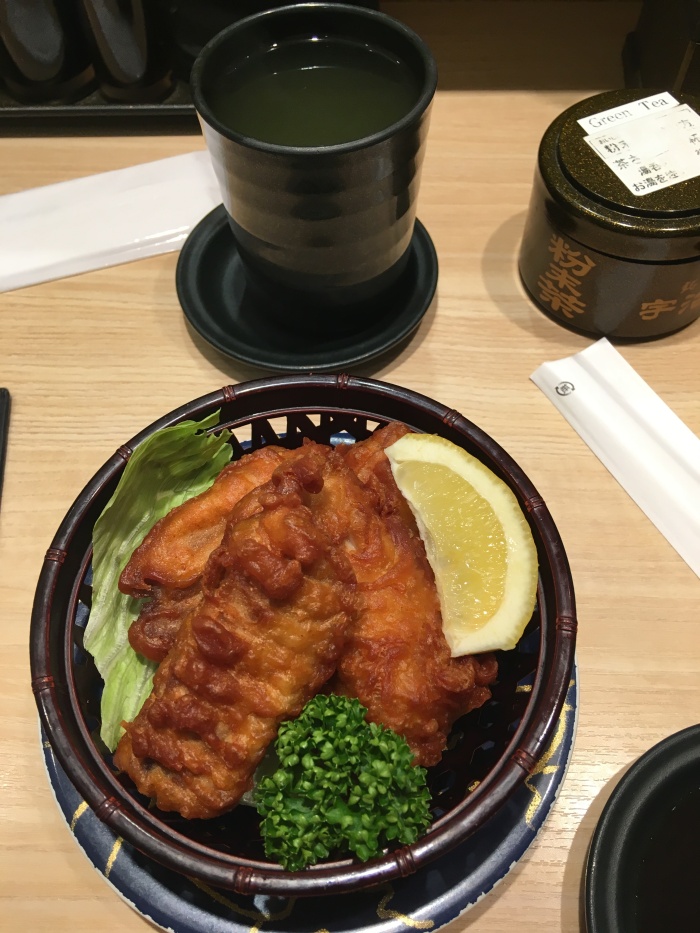 This was tuna that I had in a sushi place on the main street in Dotonbori. It proved to be fairly popular as there was constant queues.
This was tuna that I had in a sushi place on the main street in Dotonbori. It proved to be fairly popular as there was constant queues.

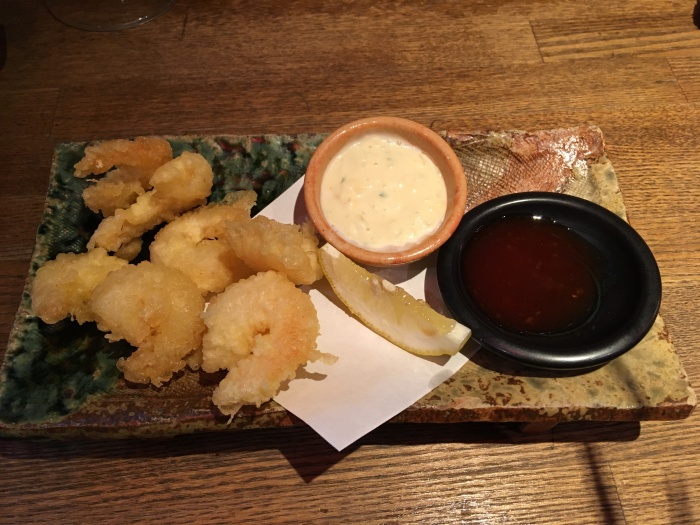

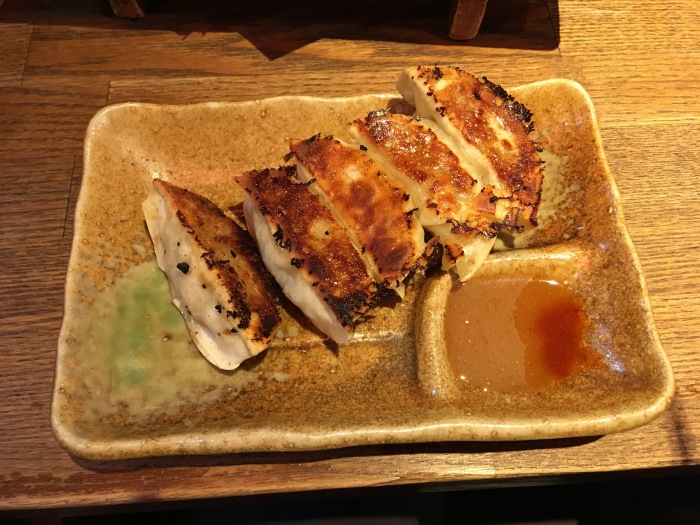



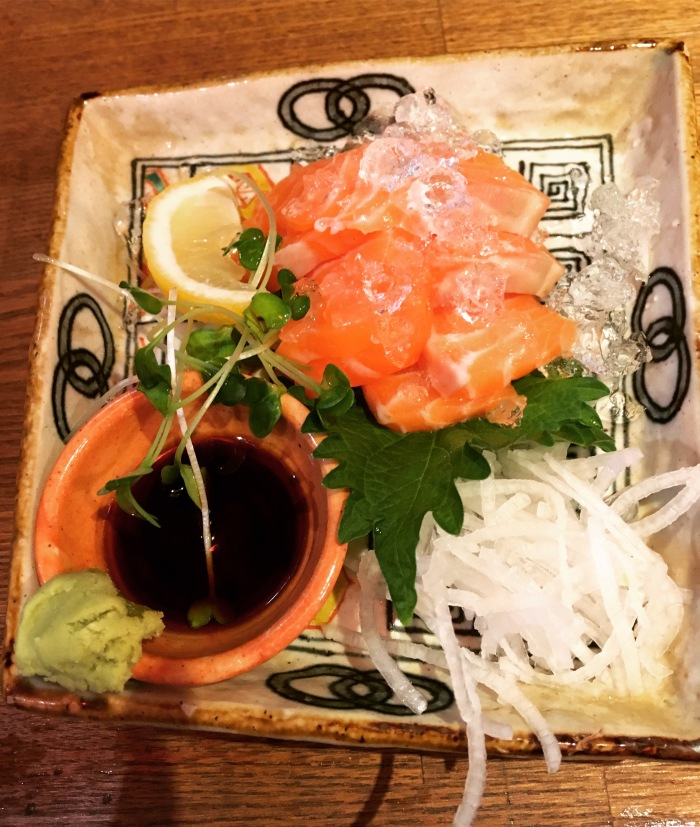




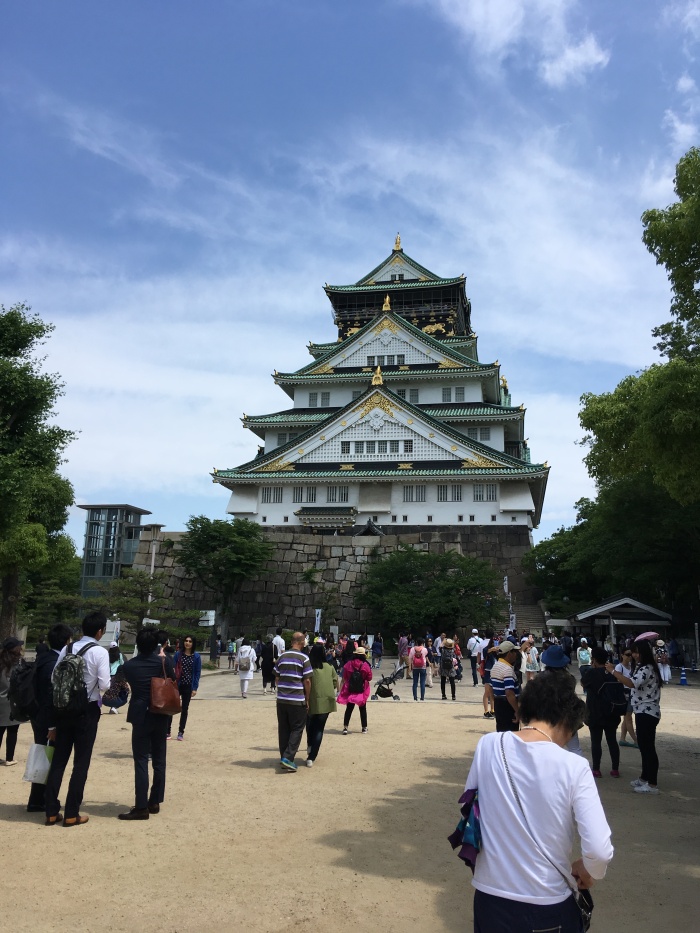
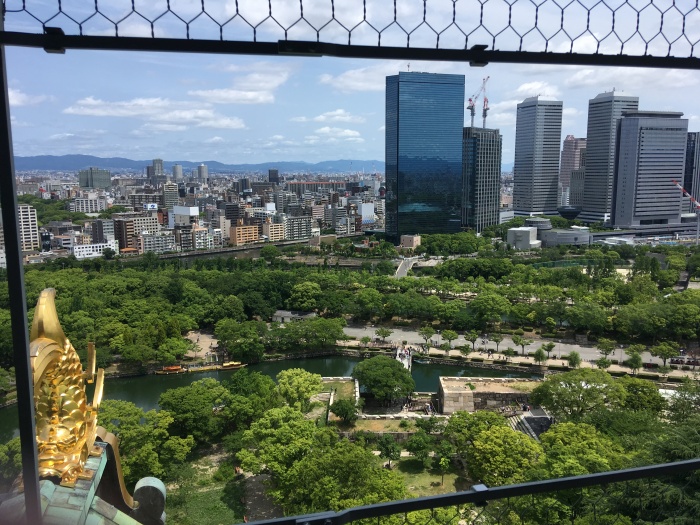

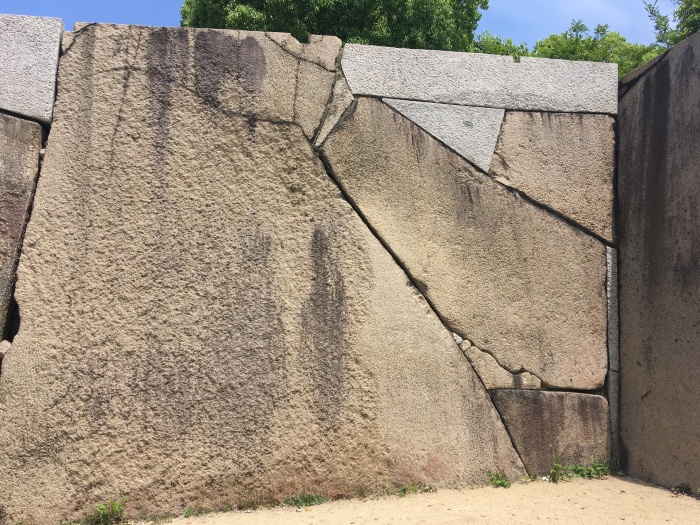








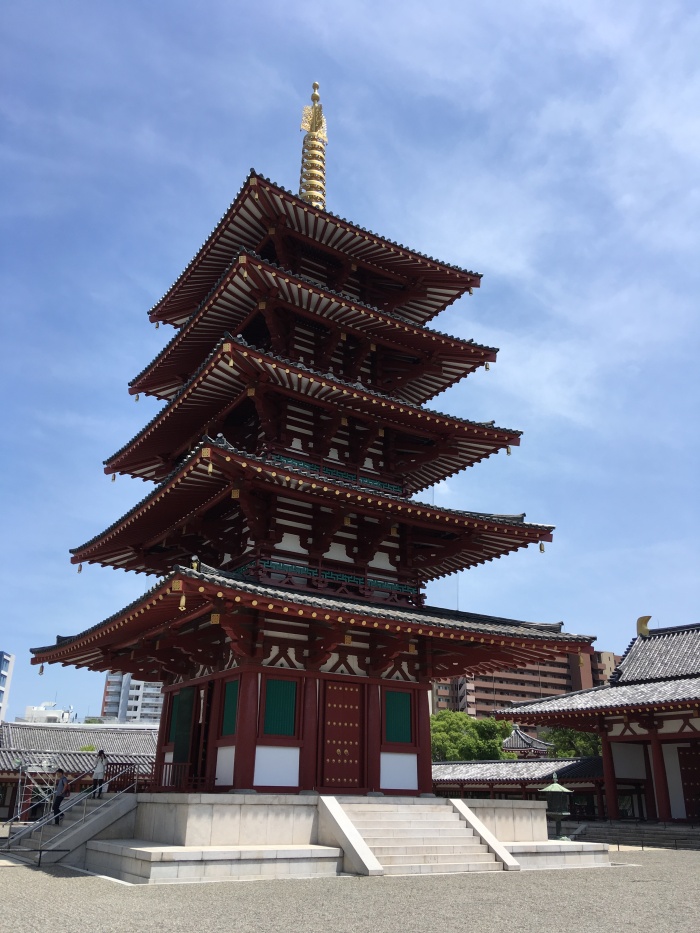








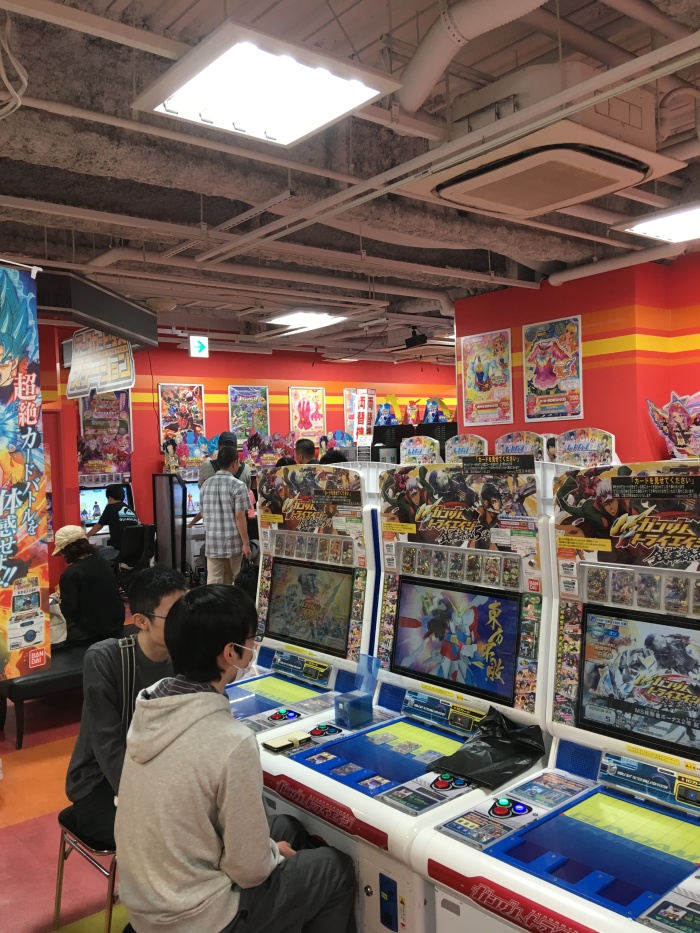
 I walked into another arcade and had a quick massage on a chair and then found a little tribute to Alice in Wonderland shop.
I walked into another arcade and had a quick massage on a chair and then found a little tribute to Alice in Wonderland shop.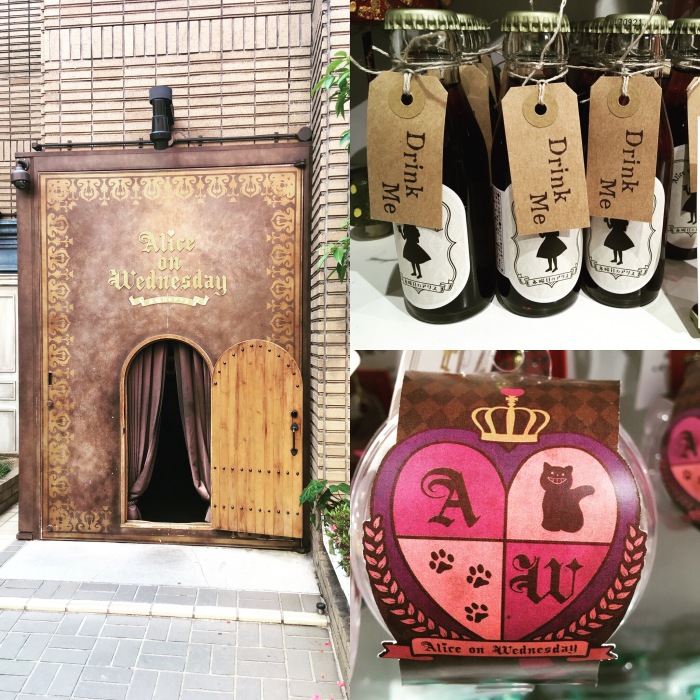







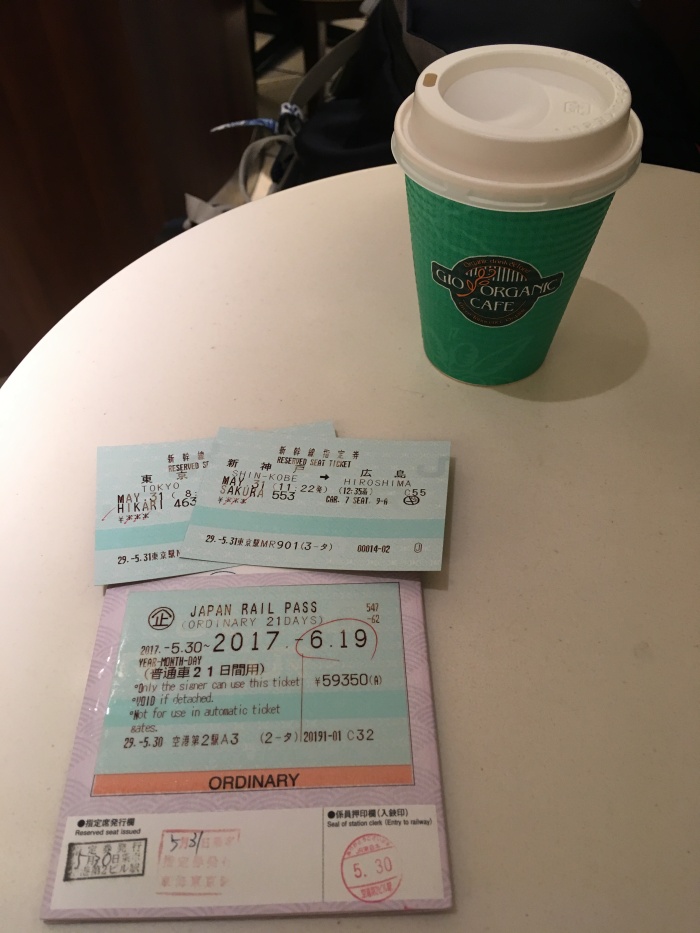 Stepping off the plane in Tokyo after 17 hours on planes and not too much sleep was exciting. But I was only thinking about my bladder at that precise moment, so decided to do something about it. It was going to the loo that made me realise I wasn’t in London anymore. For one thing, it took me ages to work out how to flush it – lots of buttons with options in Japanese characters. Secondly, there are some other buttons on the loo you can press to play music, as well as a flushing sound. Do you really need to let other people know that you are doing your business that badly? If something needs extensive flushing, why don’t you just flush twice? I’d get embarrassed if I’d walked out of the cubicle and others washing their hands had heard extensive flushing. Would only mean one thing, really….The seats are heated too which was a little bit of a shock.
Stepping off the plane in Tokyo after 17 hours on planes and not too much sleep was exciting. But I was only thinking about my bladder at that precise moment, so decided to do something about it. It was going to the loo that made me realise I wasn’t in London anymore. For one thing, it took me ages to work out how to flush it – lots of buttons with options in Japanese characters. Secondly, there are some other buttons on the loo you can press to play music, as well as a flushing sound. Do you really need to let other people know that you are doing your business that badly? If something needs extensive flushing, why don’t you just flush twice? I’d get embarrassed if I’d walked out of the cubicle and others washing their hands had heard extensive flushing. Would only mean one thing, really….The seats are heated too which was a little bit of a shock. 
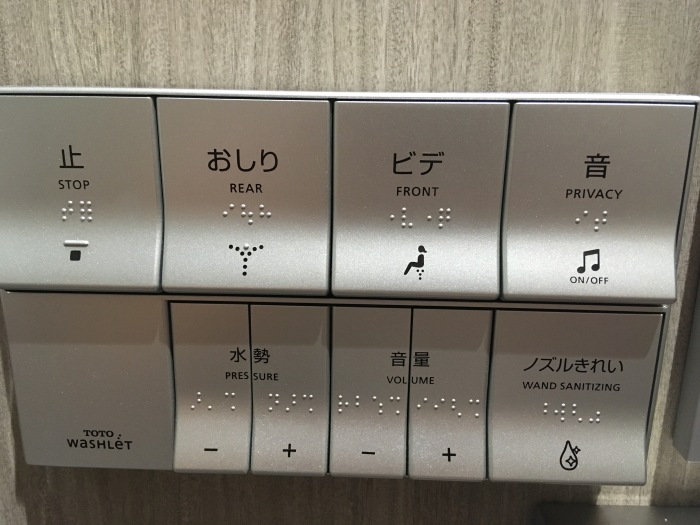 Anyway, bar the loo fiasco, getting into Tokyo was fairly straightforward. I was struck with a sense of brightness, colour and information, both digital and placarded. I just about found the place to sort the Rail Pass out after checking there was an express train into the city fairly soon – I managed to find an app on the App Store called HYPERDIA which gives you train times, and selects those which you can use the Rail Pass on – v useful, I think you’ll agree. Just about made the train (after a moment of panic, questioning whether it was the right one as the information was in Japanese, and running down stairs with my massive bag) and it was an hour into the city, The main train station is massive and I could get an intercity train one stop to my hostel for the night. It was a pretty decent hostel and it was compartmentalised rather than just beds which was quite nice. Picked up some Dim Sum which was much appreciated and got my face stroked by a few people which was a bit odd. But hey ho, all part of it, right?
Anyway, bar the loo fiasco, getting into Tokyo was fairly straightforward. I was struck with a sense of brightness, colour and information, both digital and placarded. I just about found the place to sort the Rail Pass out after checking there was an express train into the city fairly soon – I managed to find an app on the App Store called HYPERDIA which gives you train times, and selects those which you can use the Rail Pass on – v useful, I think you’ll agree. Just about made the train (after a moment of panic, questioning whether it was the right one as the information was in Japanese, and running down stairs with my massive bag) and it was an hour into the city, The main train station is massive and I could get an intercity train one stop to my hostel for the night. It was a pretty decent hostel and it was compartmentalised rather than just beds which was quite nice. Picked up some Dim Sum which was much appreciated and got my face stroked by a few people which was a bit odd. But hey ho, all part of it, right? 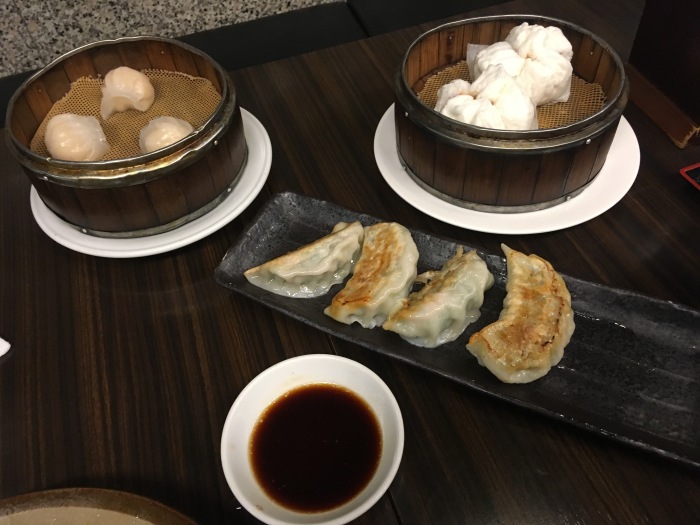 Jet lag hit me a bit and I only got a few hours sleep. I didn’t mind to much as I had to be up and out to catch a Shinkansen to Hiroshima. I changed at Shin Kobe on the way so I could use the rail pass. Arrived after four hours and found the capsule hostel! I had been looking forward to staying in this. I walked through Tokyo in the early hours when it was very quiet. I am amazed at the fact that you can smoke on trains – only in certain carriages, and I’ve only noticed then on Shinkansens.
Jet lag hit me a bit and I only got a few hours sleep. I didn’t mind to much as I had to be up and out to catch a Shinkansen to Hiroshima. I changed at Shin Kobe on the way so I could use the rail pass. Arrived after four hours and found the capsule hostel! I had been looking forward to staying in this. I walked through Tokyo in the early hours when it was very quiet. I am amazed at the fact that you can smoke on trains – only in certain carriages, and I’ve only noticed then on Shinkansens. 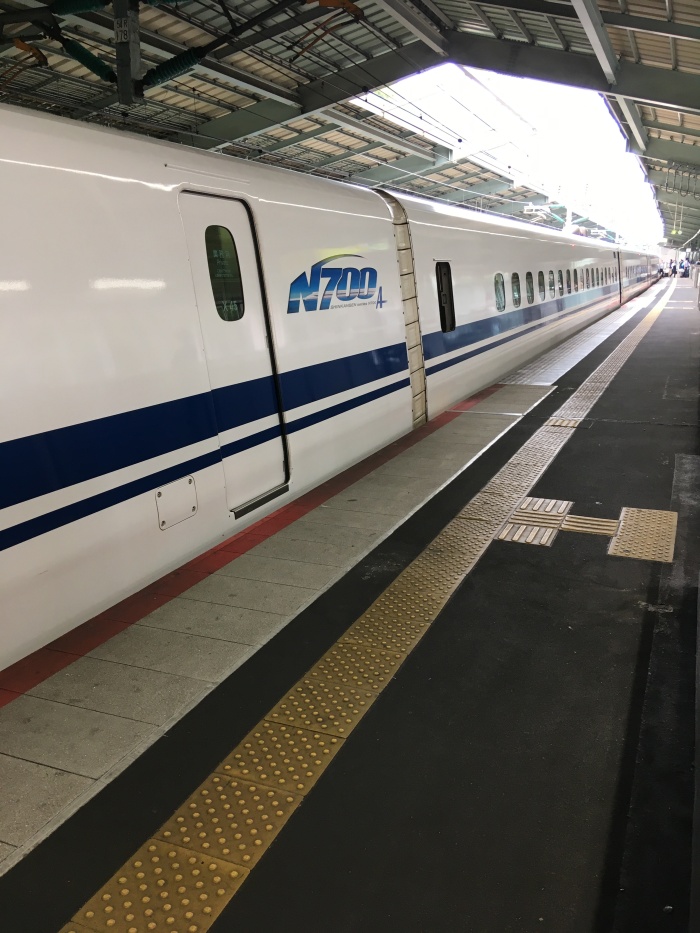
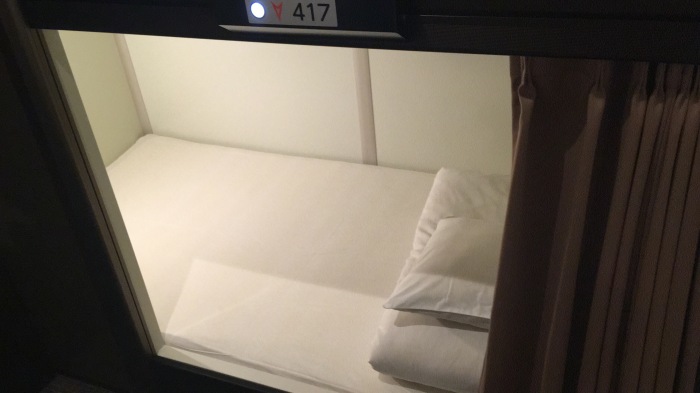 Then it was out to explore Hiroshima. I was fairly tired but I kept on the move. I visited the Peace Memorial Park where there is a cenotaph paying tribute to all of those who lost their lives on 6th August 1945. Apparently, the park is now built on what was the political centre, and was the target of the atomic bomb, The dome building which is one of the few buildings left standing is very ghostly. I visited the memorial park centre where there was an exhibition about what took place leading up to the bomb being dropped, and the horrific events during and after the bomb was dropped. The scale of the tragedy is unfathomable.
Then it was out to explore Hiroshima. I was fairly tired but I kept on the move. I visited the Peace Memorial Park where there is a cenotaph paying tribute to all of those who lost their lives on 6th August 1945. Apparently, the park is now built on what was the political centre, and was the target of the atomic bomb, The dome building which is one of the few buildings left standing is very ghostly. I visited the memorial park centre where there was an exhibition about what took place leading up to the bomb being dropped, and the horrific events during and after the bomb was dropped. The scale of the tragedy is unfathomable. 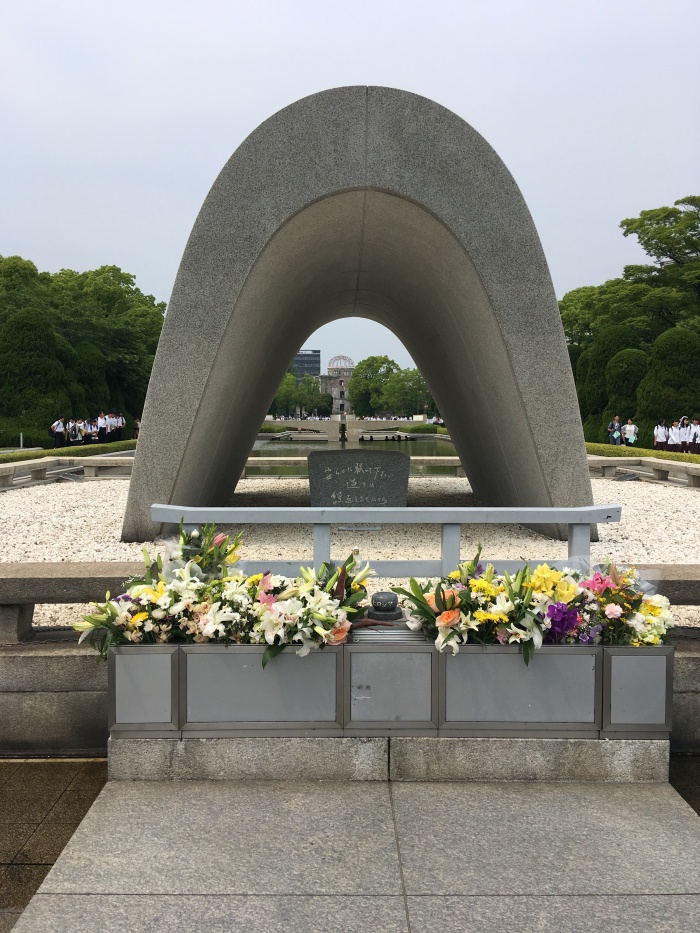
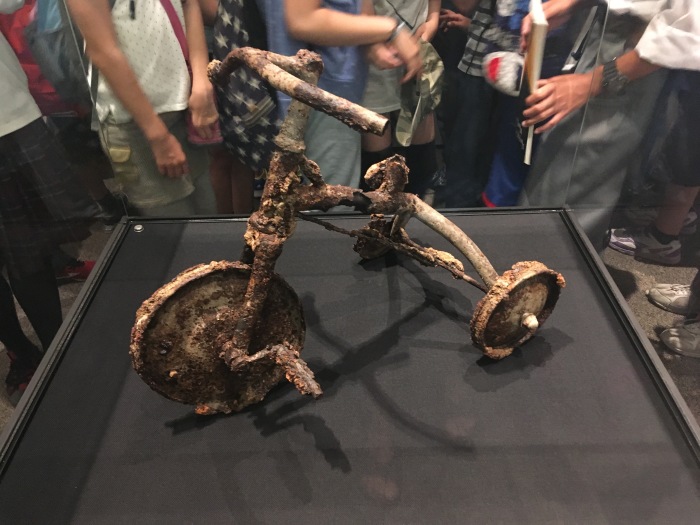
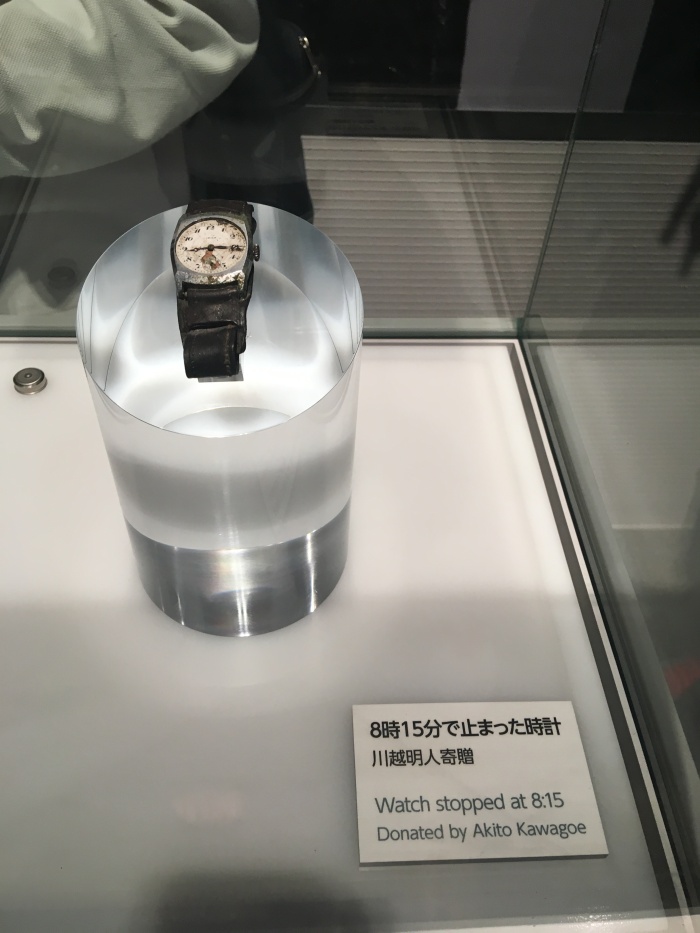
 I then went to the castle which was originally 16th century but had to rebuilt after 1945. The building is nice and it was interesting to see some artefacts that survived. There was a shrine nearby and I first noticed the water ladles and fountain which is used to purify your hands and mouth before prayer.
I then went to the castle which was originally 16th century but had to rebuilt after 1945. The building is nice and it was interesting to see some artefacts that survived. There was a shrine nearby and I first noticed the water ladles and fountain which is used to purify your hands and mouth before prayer.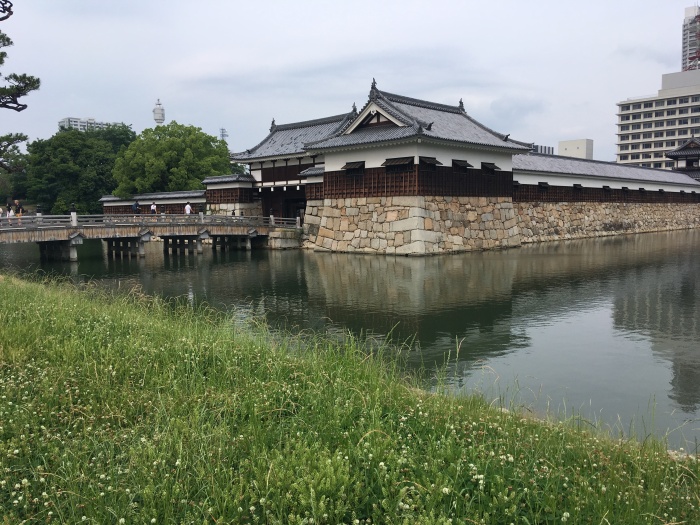
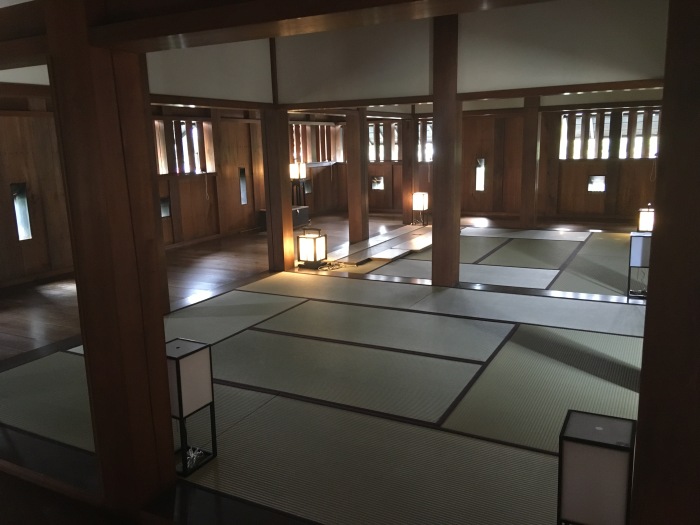
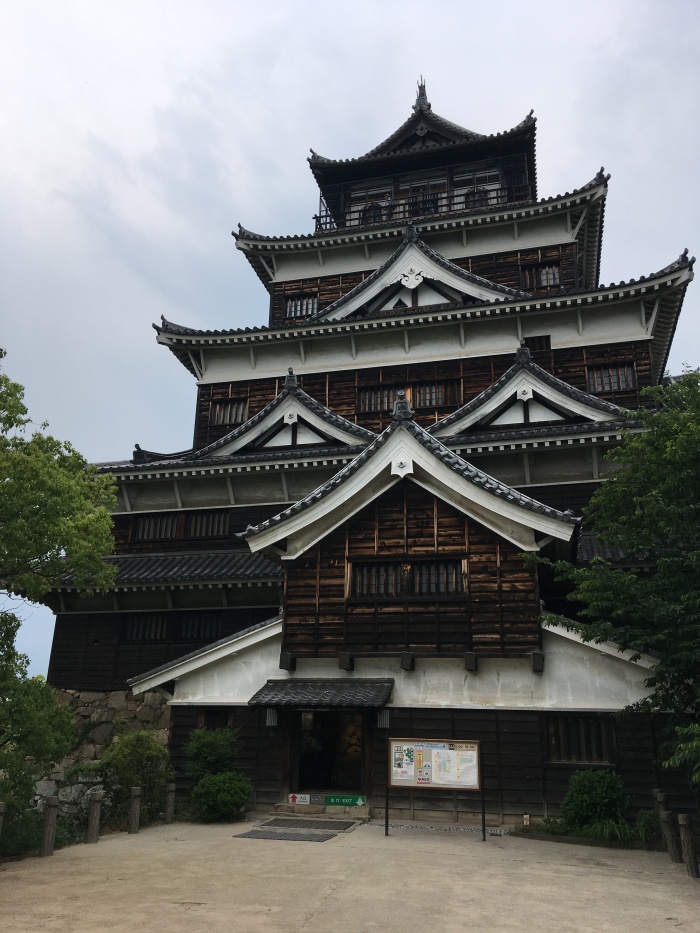
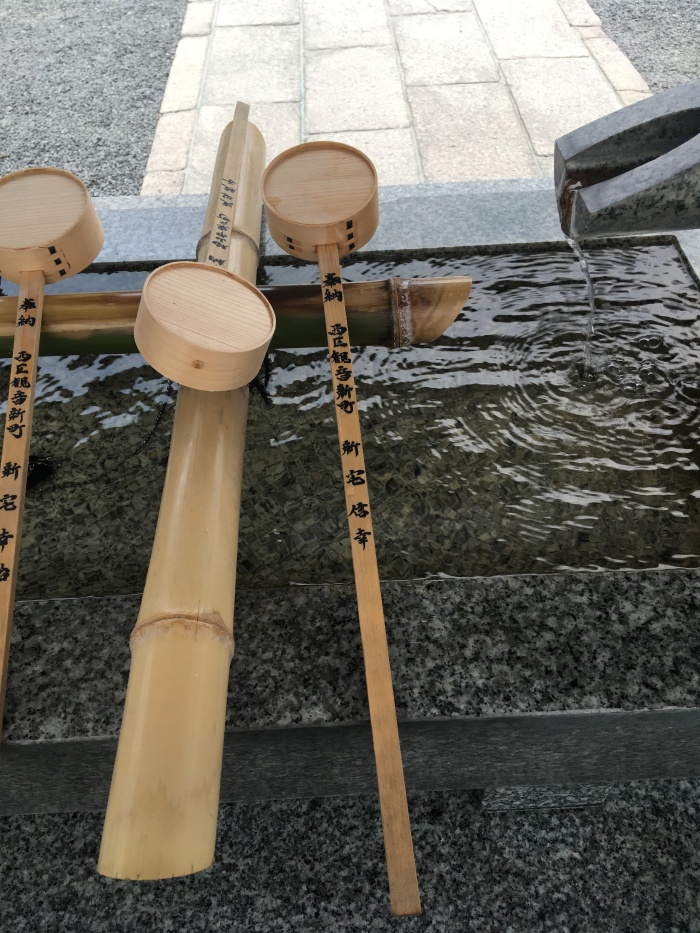 I wanted an early night after a busy day so thought I’d just grab some food and get some much needed rest. There were a lot of places to choose from just off the Main Street – Hiroshima’s Oxford St. I went into one random one which was quite small and was given a menu solely in Japanese. There were some locals willing to help me out who didn’t speak too much English but were keen anyway. I had some eel, pork and edamame beans – yum!
I wanted an early night after a busy day so thought I’d just grab some food and get some much needed rest. There were a lot of places to choose from just off the Main Street – Hiroshima’s Oxford St. I went into one random one which was quite small and was given a menu solely in Japanese. There were some locals willing to help me out who didn’t speak too much English but were keen anyway. I had some eel, pork and edamame beans – yum!
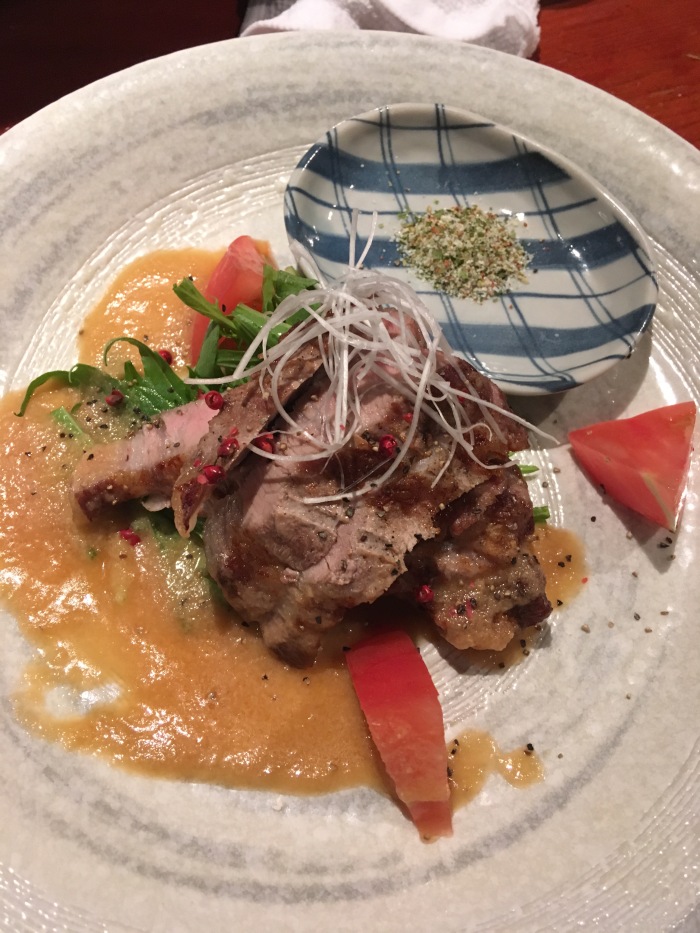 After trying to break down some of the language barrier, it turned into a great evening. The older gentleman was nice enough to buy my dinner and wouldn’t take ‘No’ for answer! This turned into going to a small bar where one of the locals worked and singing karaoke – and yes, my attempt at ‘Wonderful Tonight’ was a little to be desired!
After trying to break down some of the language barrier, it turned into a great evening. The older gentleman was nice enough to buy my dinner and wouldn’t take ‘No’ for answer! This turned into going to a small bar where one of the locals worked and singing karaoke – and yes, my attempt at ‘Wonderful Tonight’ was a little to be desired!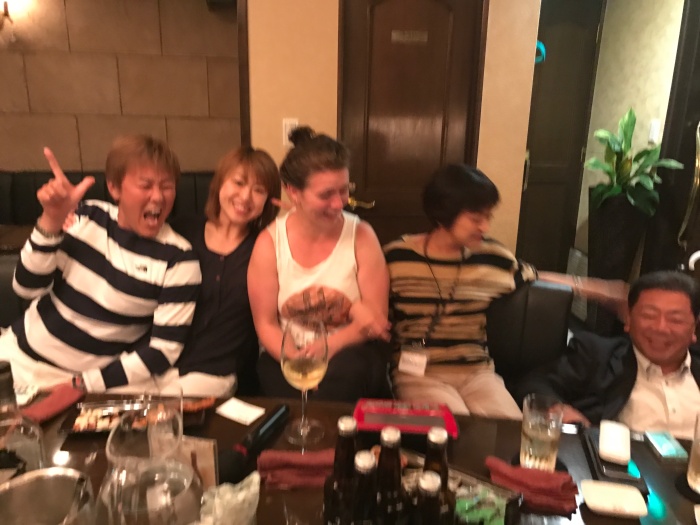 The next morning, I have to admit that I had a bit of a headache. But it was a lot of fun. My alarm was unwelcome, but I knew I had to get another train to Miyajimaguchi which is only half an hour away. I then dropped my bag off at another hostel and caught the 10 min ferry to Miyajima Island. I hadn’t done a lot of research about the island but had heard great things. Getting off the ferry, I was greeted by deer who roam freely and are quite tame. I visited the Itsukushima Shrine which is essentially on water. If the tide comes up too much, the wooden floor can rise up out of the pole it is attached to. This was originally built in 593 but was redone in 1168. It was interesting to see how many people prayed. Also, there are a lot of places where people can write wishes and attach them to rope for good fortune. This is a shrine as opposed to a temple, because there is a ‘gate’ to the shrine – in this case, it is red and in the water. You can’t miss it.
The next morning, I have to admit that I had a bit of a headache. But it was a lot of fun. My alarm was unwelcome, but I knew I had to get another train to Miyajimaguchi which is only half an hour away. I then dropped my bag off at another hostel and caught the 10 min ferry to Miyajima Island. I hadn’t done a lot of research about the island but had heard great things. Getting off the ferry, I was greeted by deer who roam freely and are quite tame. I visited the Itsukushima Shrine which is essentially on water. If the tide comes up too much, the wooden floor can rise up out of the pole it is attached to. This was originally built in 593 but was redone in 1168. It was interesting to see how many people prayed. Also, there are a lot of places where people can write wishes and attach them to rope for good fortune. This is a shrine as opposed to a temple, because there is a ‘gate’ to the shrine – in this case, it is red and in the water. You can’t miss it.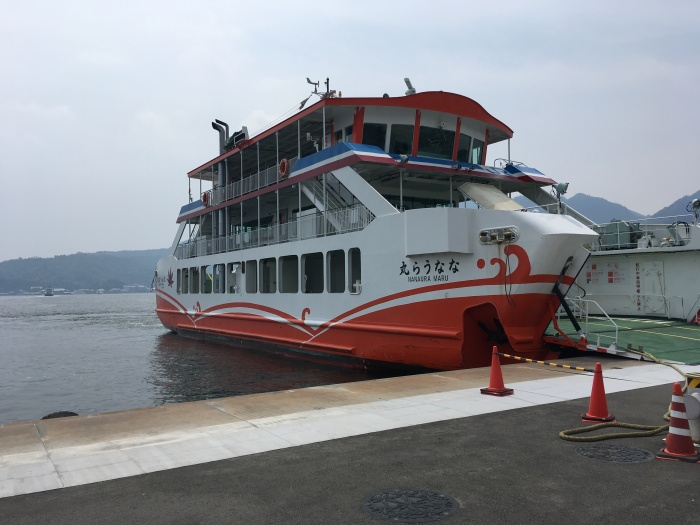
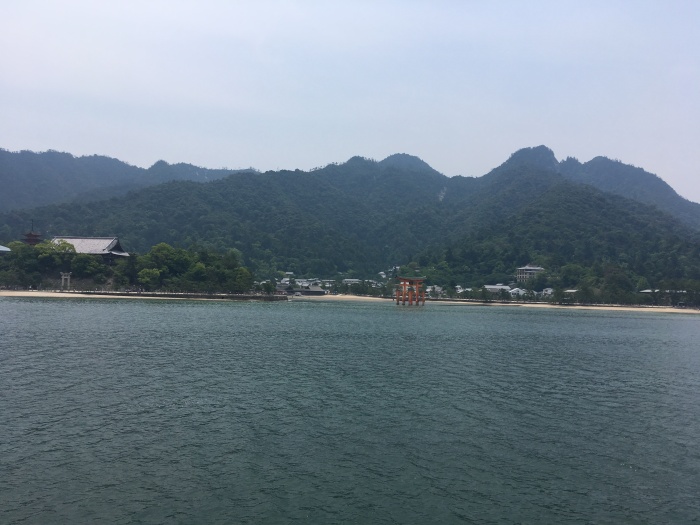
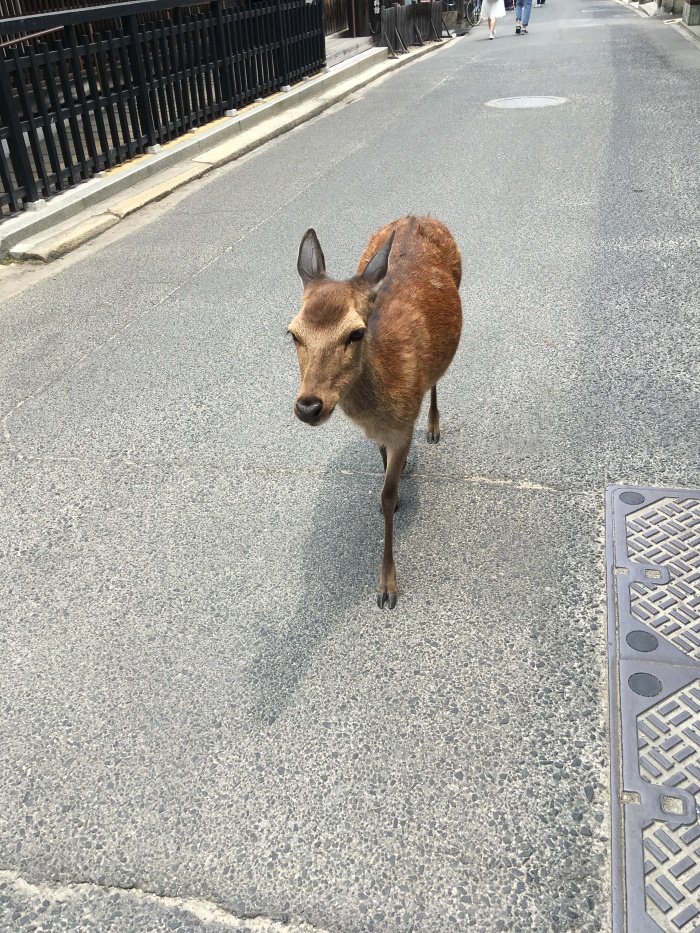
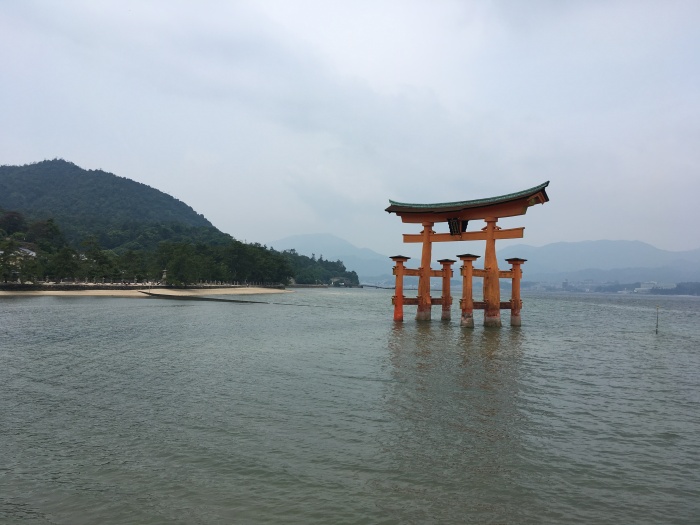

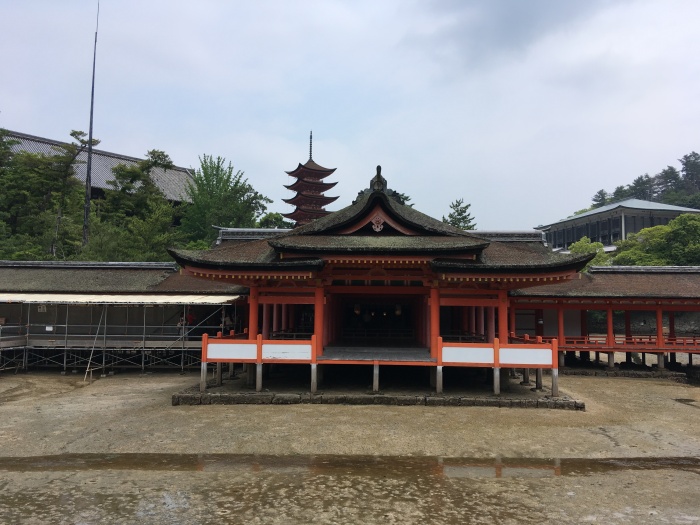
 Then off to Daisho-in Temple which is a complex full of smaller shrines. The religion here is Shingon Buddhism. This particular sect teaches that humans can attain enlightenment through rituals combining physical, spoken and mental disciplines. It is at the bottom of Mount Misen which is believed to be sacred. There were lots of different shrines for different prayers e.g. One for good health etc.
Then off to Daisho-in Temple which is a complex full of smaller shrines. The religion here is Shingon Buddhism. This particular sect teaches that humans can attain enlightenment through rituals combining physical, spoken and mental disciplines. It is at the bottom of Mount Misen which is believed to be sacred. There were lots of different shrines for different prayers e.g. One for good health etc. 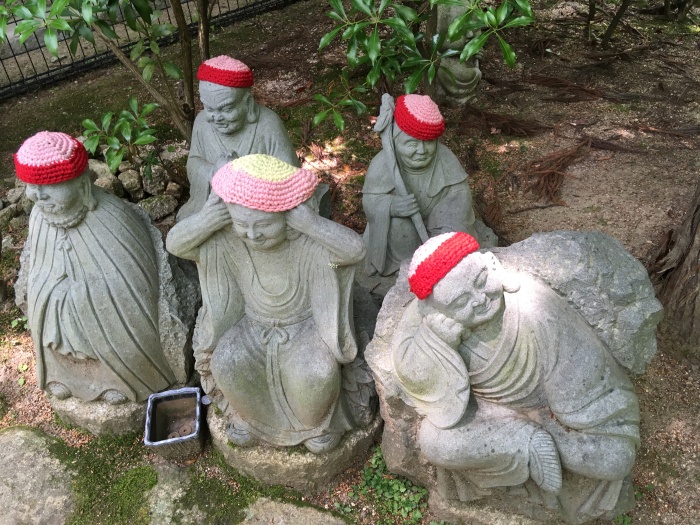
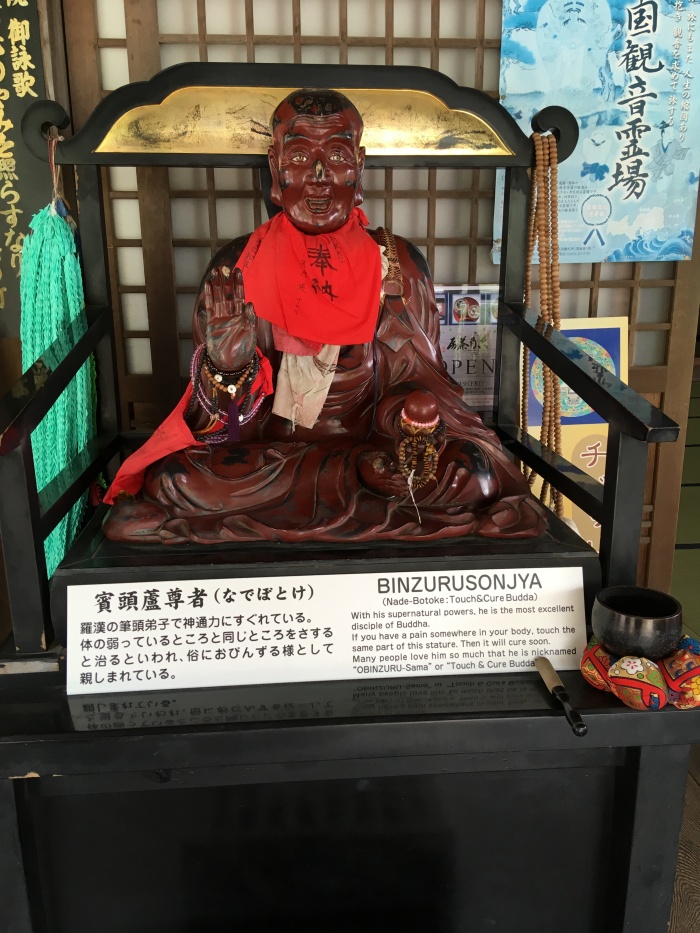

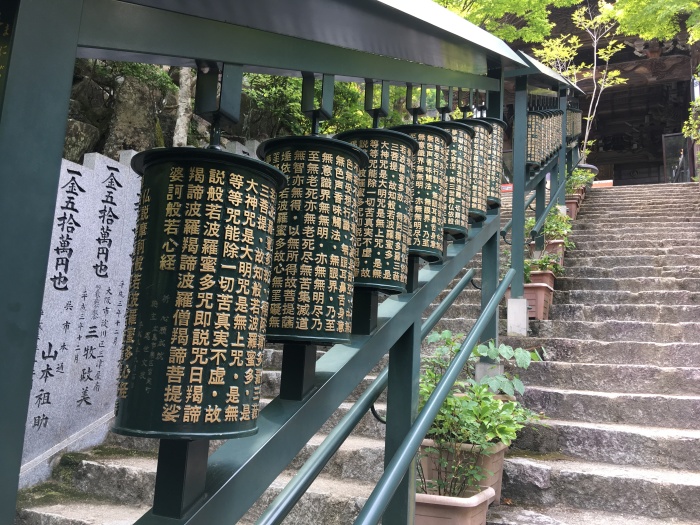
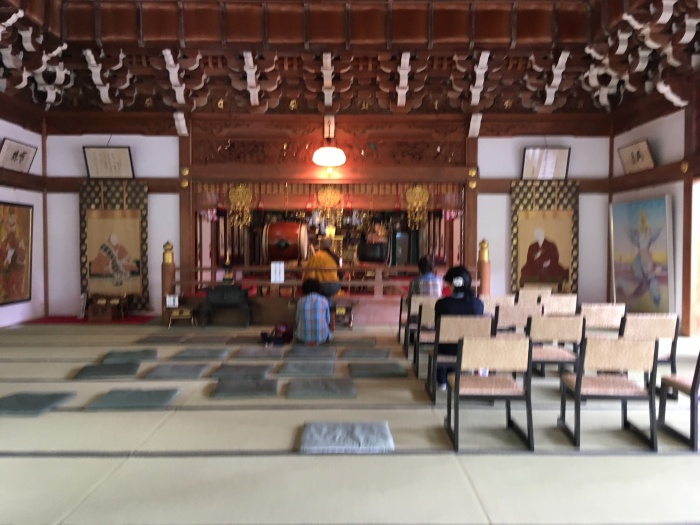
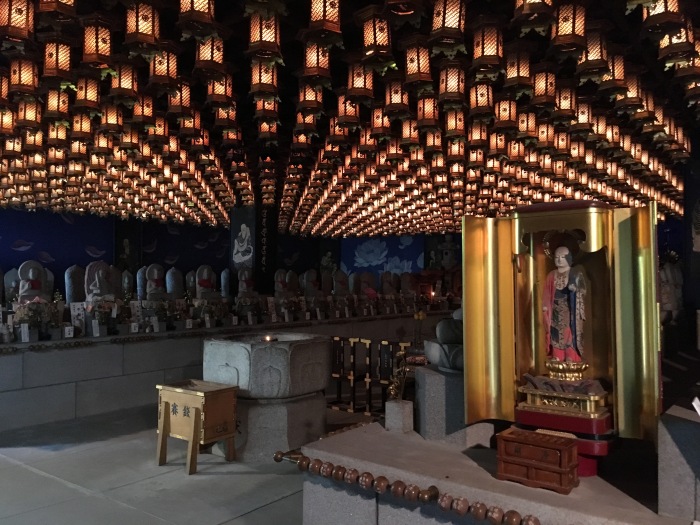
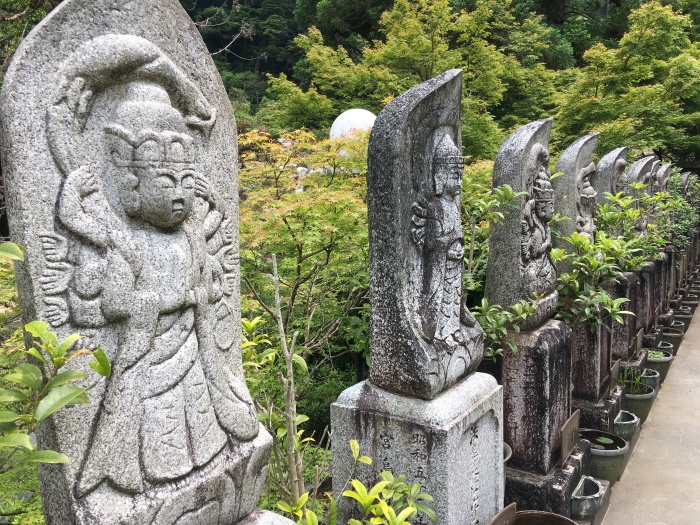 After a quick udon and tofu soup, it was time to climb to the top of the mountain. It took me back to the Inca Trail – climbed 3km of stairs and I didn’t think that Birkenstock sandals and black cropped jeans were the best form of attire. Nor was carrying a rucksack in 30 degree heat a good idea, especially with a mild hangover. Made it to the top looking like a tomato! Got a cable car on the way down which was good and back on the ferry – knackered! Looking forward to the next few days!
After a quick udon and tofu soup, it was time to climb to the top of the mountain. It took me back to the Inca Trail – climbed 3km of stairs and I didn’t think that Birkenstock sandals and black cropped jeans were the best form of attire. Nor was carrying a rucksack in 30 degree heat a good idea, especially with a mild hangover. Made it to the top looking like a tomato! Got a cable car on the way down which was good and back on the ferry – knackered! Looking forward to the next few days!

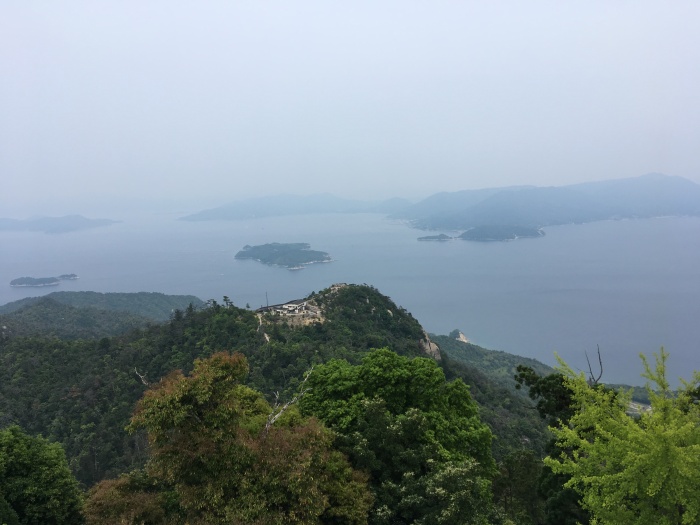

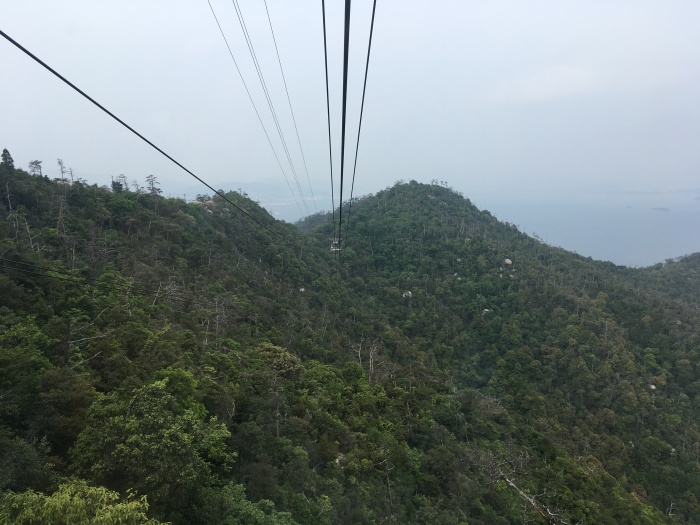


 I arrived in Arequipa the next morning and got a taxi to my budget accommodation fairly close to the main square. I was able to get into the room (thankfully!) and then took myself off to the little laundry place I used before. I went to a few places including the cathedral and an archaeological museum about the sacrifice of young Inca children as some had been found at the top of one of the mountains. I enjoyed exploring the town again. The sunset was a good one to see from a rooftop.
I arrived in Arequipa the next morning and got a taxi to my budget accommodation fairly close to the main square. I was able to get into the room (thankfully!) and then took myself off to the little laundry place I used before. I went to a few places including the cathedral and an archaeological museum about the sacrifice of young Inca children as some had been found at the top of one of the mountains. I enjoyed exploring the town again. The sunset was a good one to see from a rooftop. 







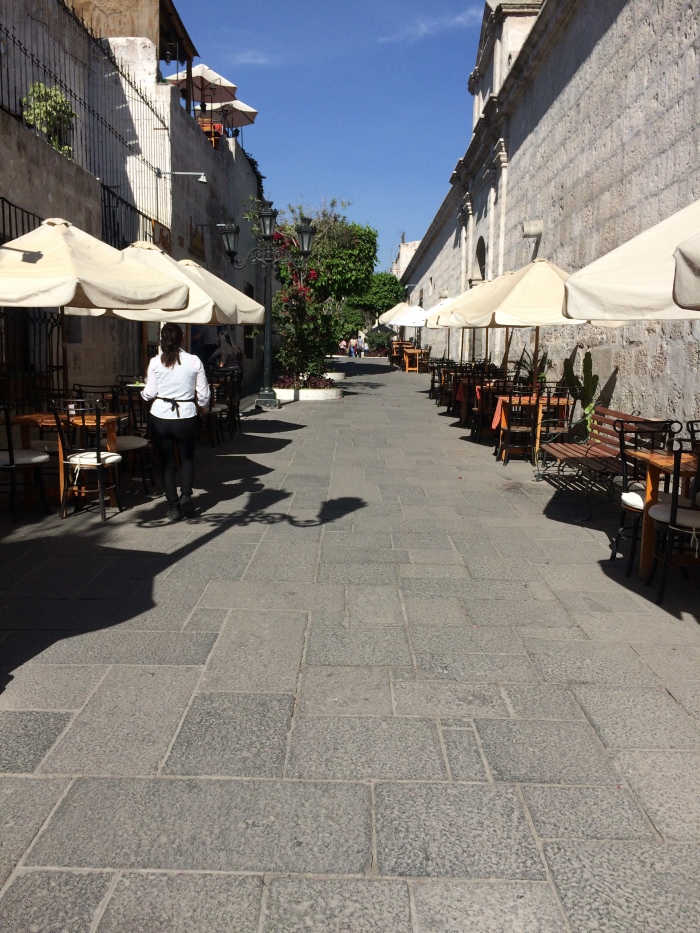

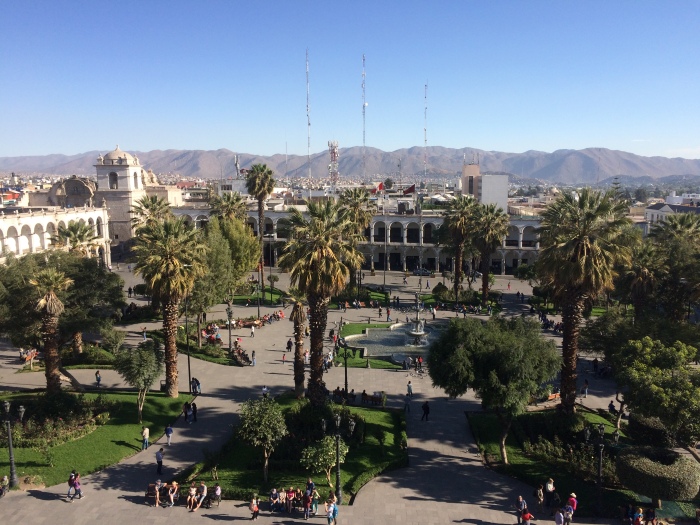










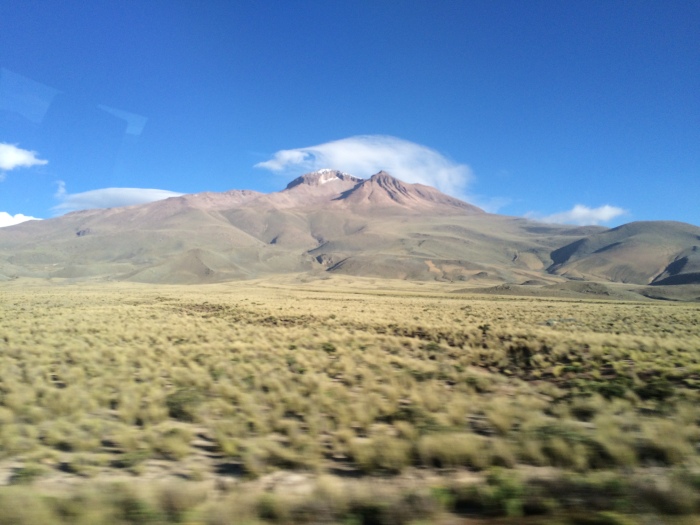
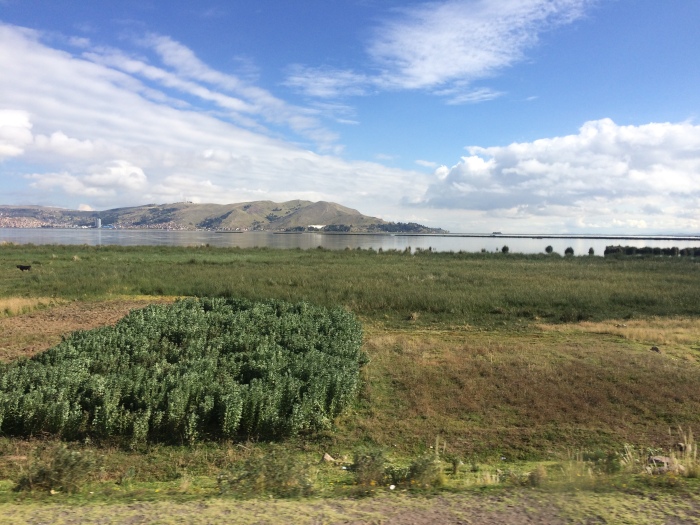
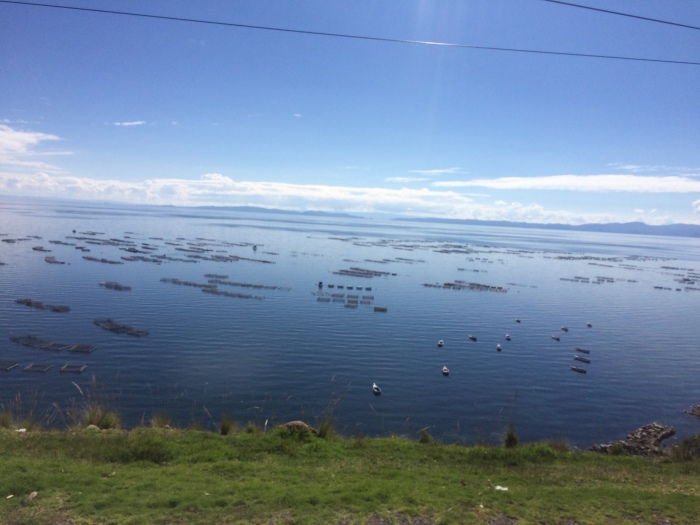
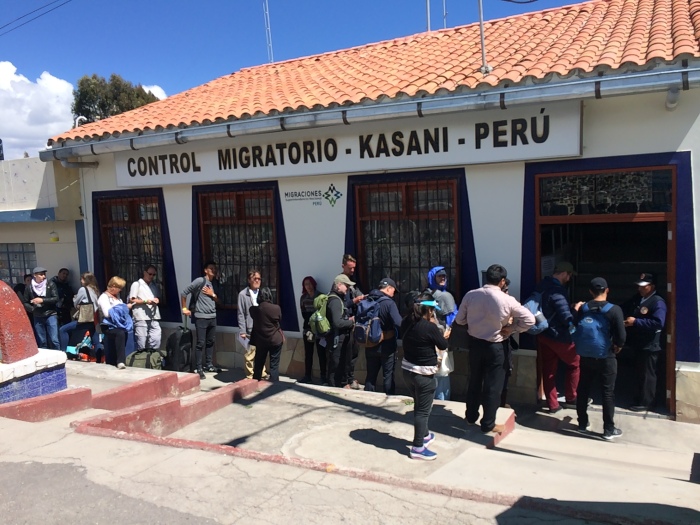 However, there was a bit of trouble when not everyone got back on – there were a couple who had been sitting in front of me who did not show up after the boarder – I think they had some trouble. But the bus driver was quite prepared to drive on without them, despite the outbursts of other travellers. Some people got off the coach to help look for them and got left behind too! It was surreal. The bus driver continued to Copacabana which wasn’t too far away. Then everyone seemed to get off – I had been in my own little world. So I got off too and asked someone which bus I had to get on to go to La Paz. I was directed to another bus by a lady with a clipboard. There were another couple of people looking equally confused. I confirmed the destination with the driver and a few of us got on the bus which was definitely nicer than the last. The bus set off going further round Lake Titicaca. The bus pulled up in another town where we were asked to get off again, but left out large luggage on the bus. It appeared that we had to cross the lake by boat, but couldn’t be on the bus. So a few of us had to pay for a little speedboat to take us to the other side while the bus went across separately.
However, there was a bit of trouble when not everyone got back on – there were a couple who had been sitting in front of me who did not show up after the boarder – I think they had some trouble. But the bus driver was quite prepared to drive on without them, despite the outbursts of other travellers. Some people got off the coach to help look for them and got left behind too! It was surreal. The bus driver continued to Copacabana which wasn’t too far away. Then everyone seemed to get off – I had been in my own little world. So I got off too and asked someone which bus I had to get on to go to La Paz. I was directed to another bus by a lady with a clipboard. There were another couple of people looking equally confused. I confirmed the destination with the driver and a few of us got on the bus which was definitely nicer than the last. The bus set off going further round Lake Titicaca. The bus pulled up in another town where we were asked to get off again, but left out large luggage on the bus. It appeared that we had to cross the lake by boat, but couldn’t be on the bus. So a few of us had to pay for a little speedboat to take us to the other side while the bus went across separately. 
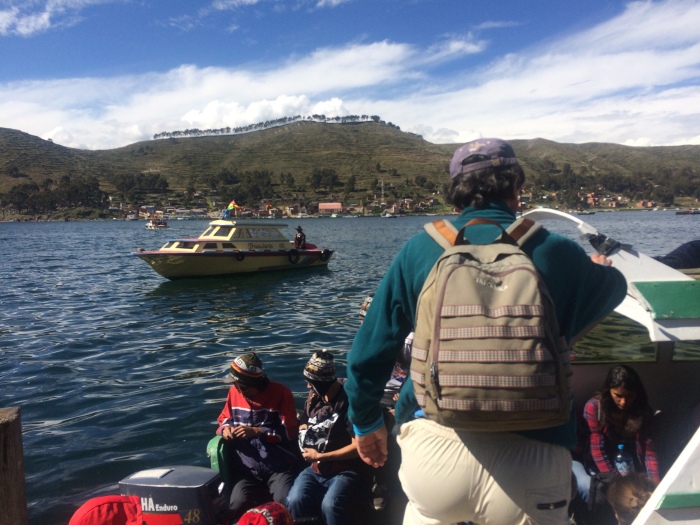
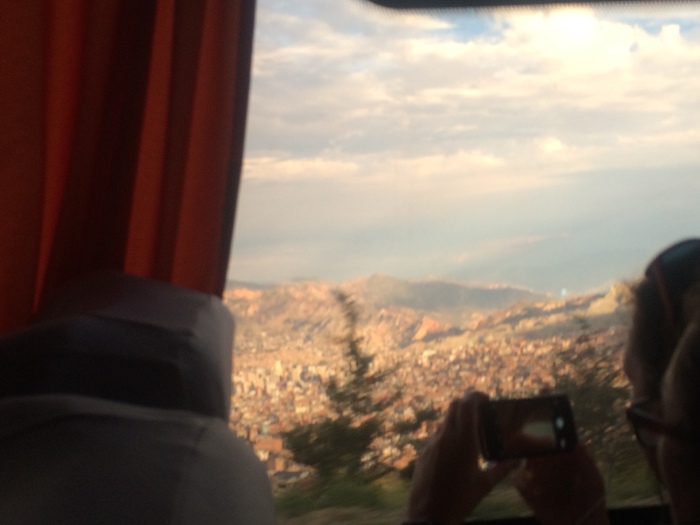 I had no idea what I was doing but just went along with it using a few choice phrases and charades to help. Back on the coach and onwards to La Paz eventually arriving late afternoon. Walked from the bus terminal to where I was staying (thank you Google Maps) and found something to eat – was starving! Rewarded myself with a glass of wine and met some friendly Canadians. What a mad few days!
I had no idea what I was doing but just went along with it using a few choice phrases and charades to help. Back on the coach and onwards to La Paz eventually arriving late afternoon. Walked from the bus terminal to where I was staying (thank you Google Maps) and found something to eat – was starving! Rewarded myself with a glass of wine and met some friendly Canadians. What a mad few days!